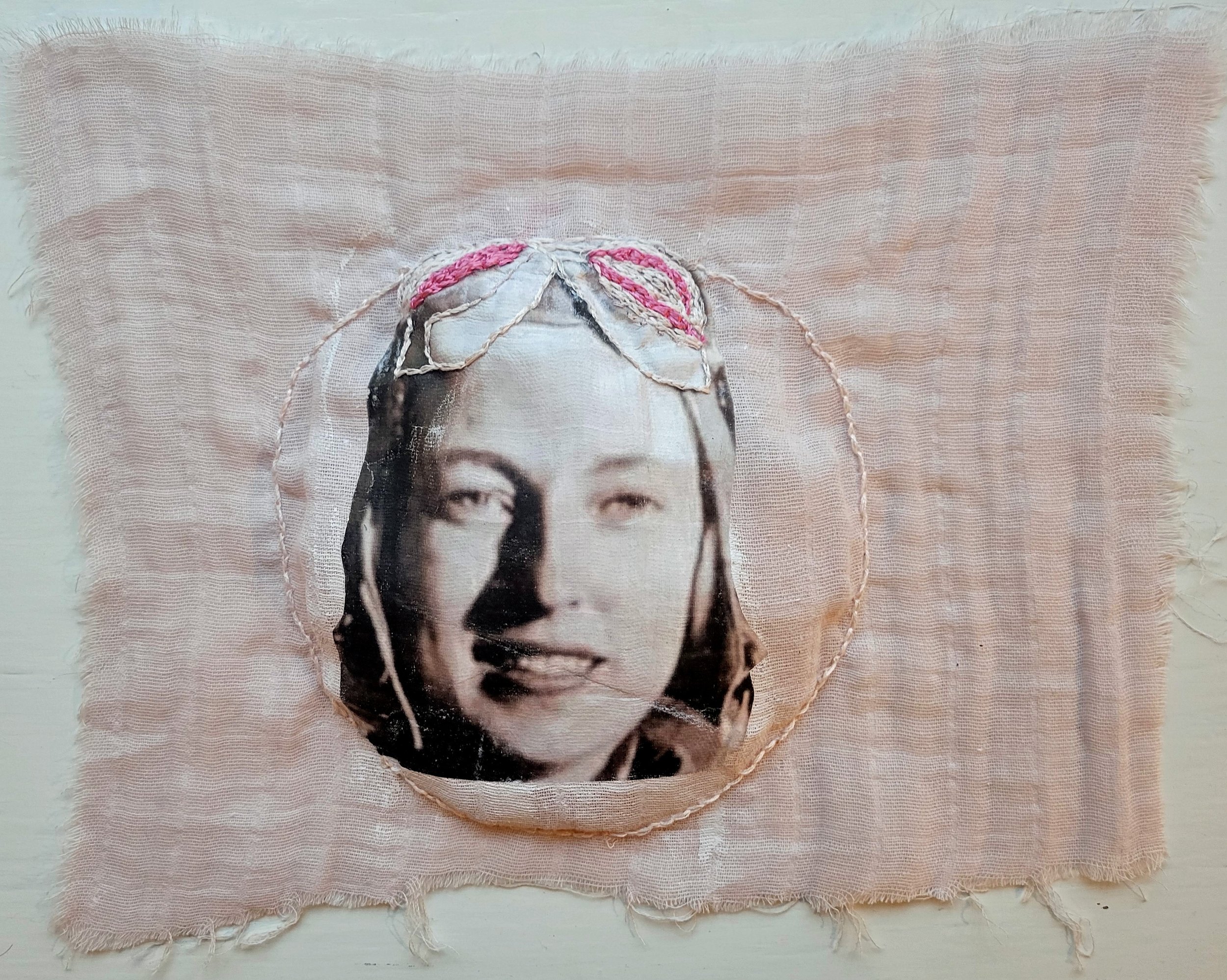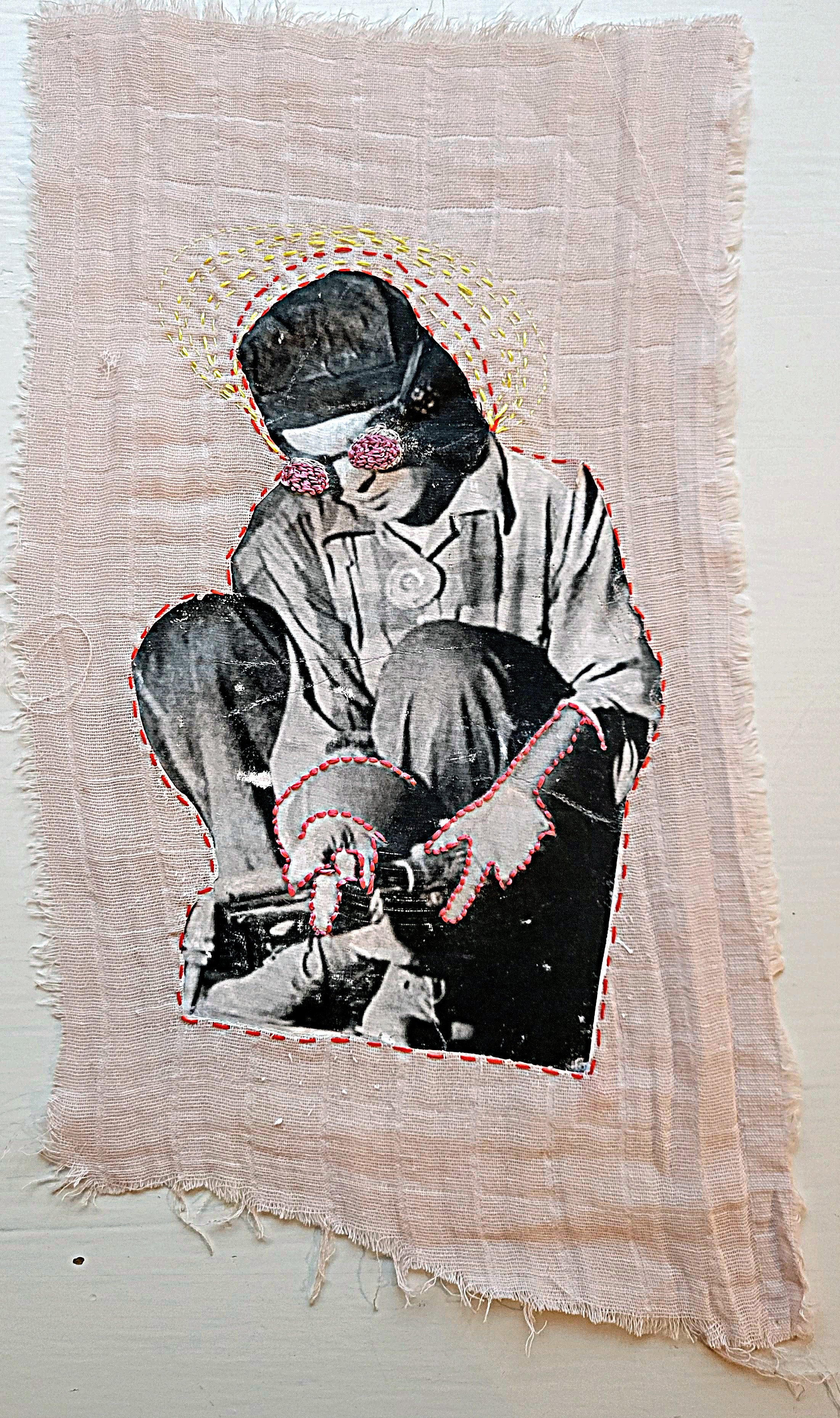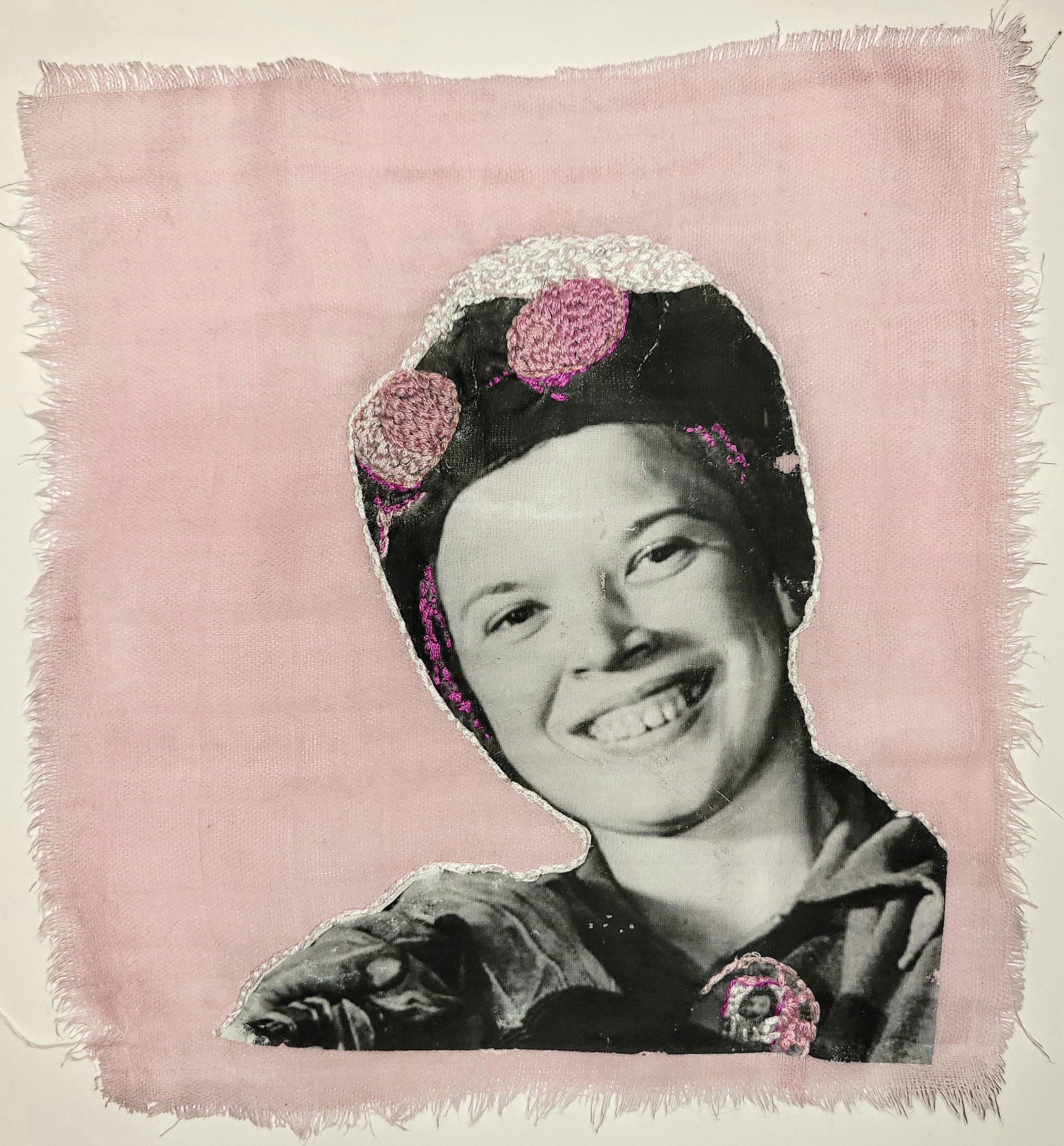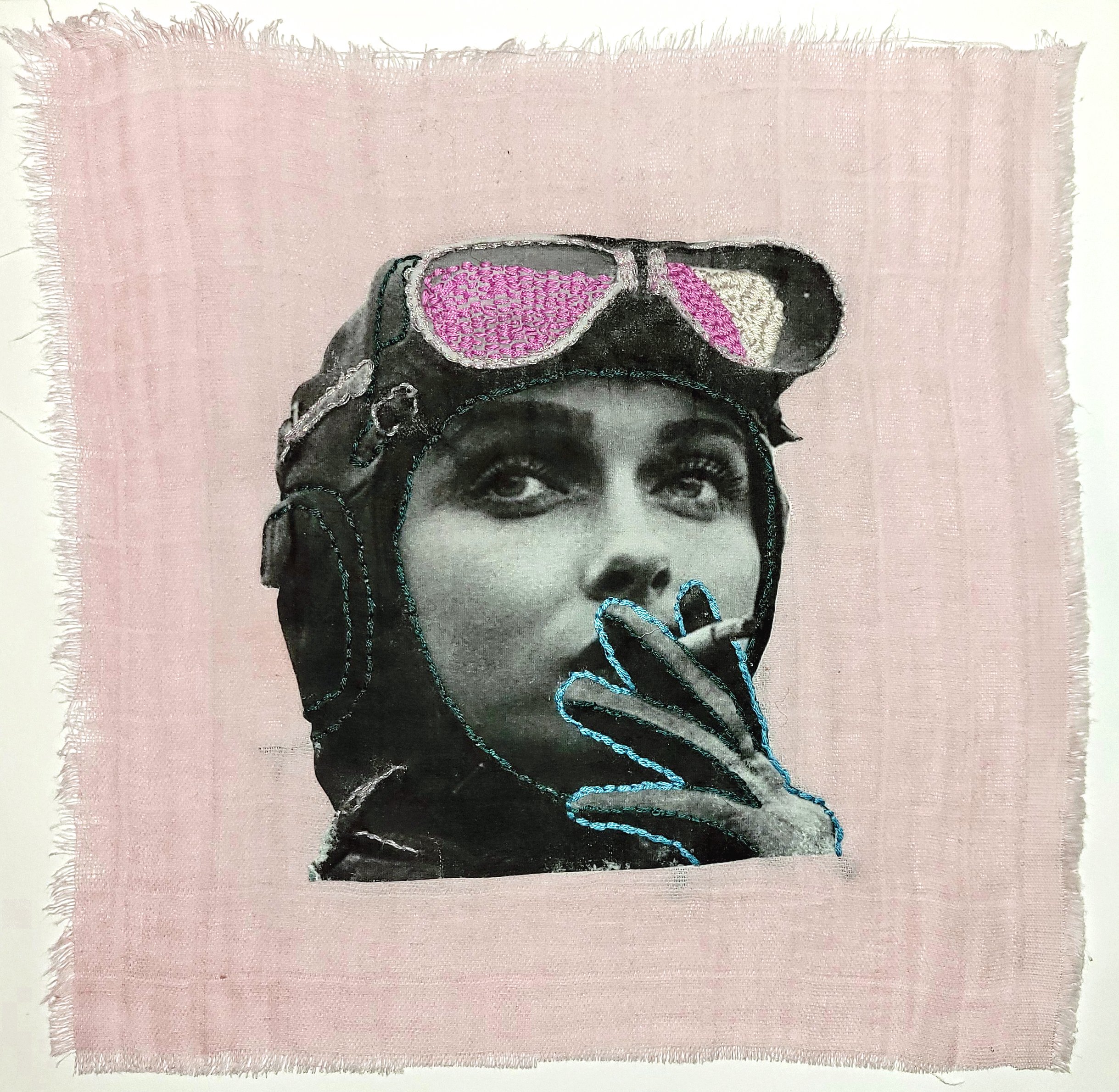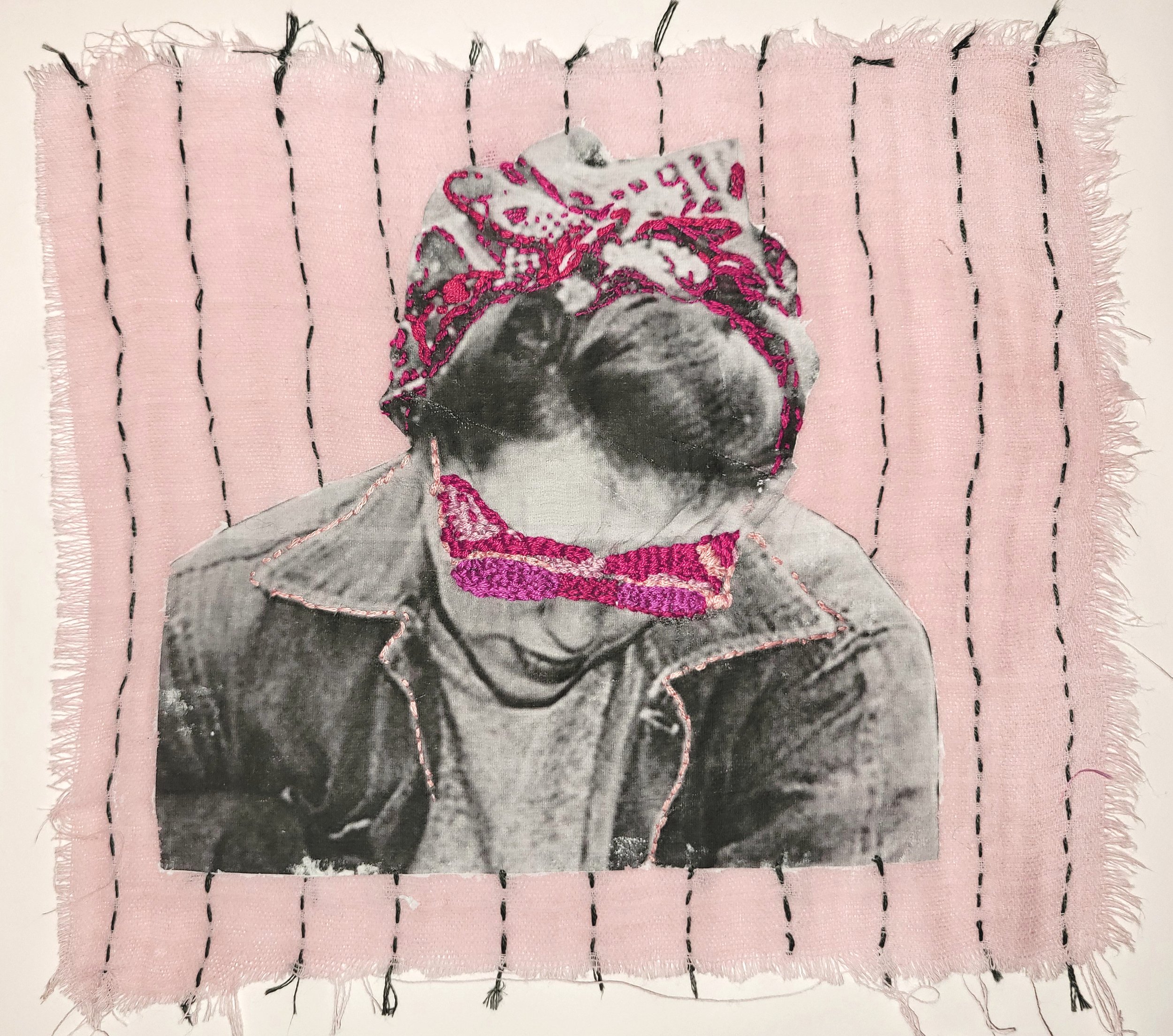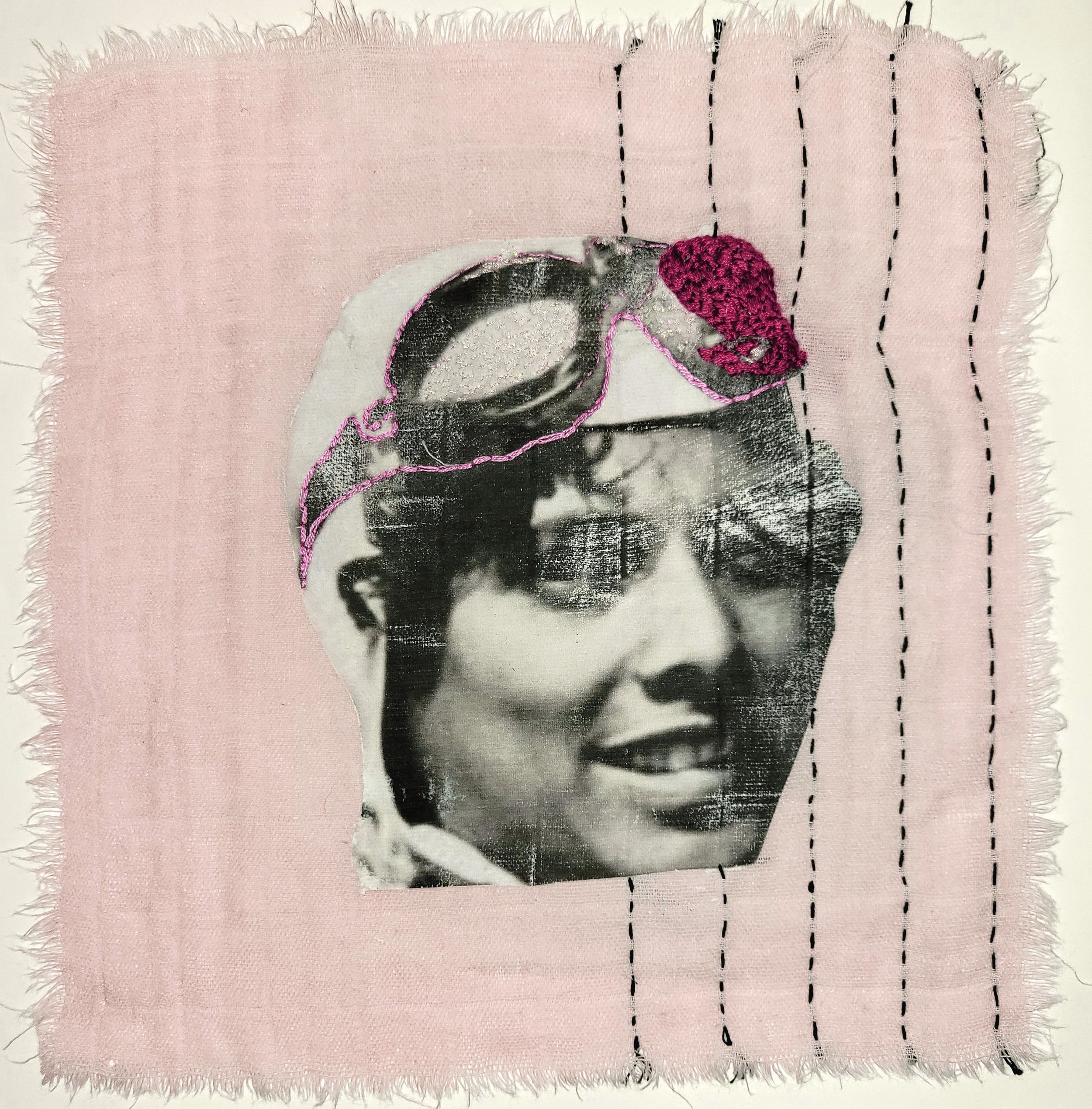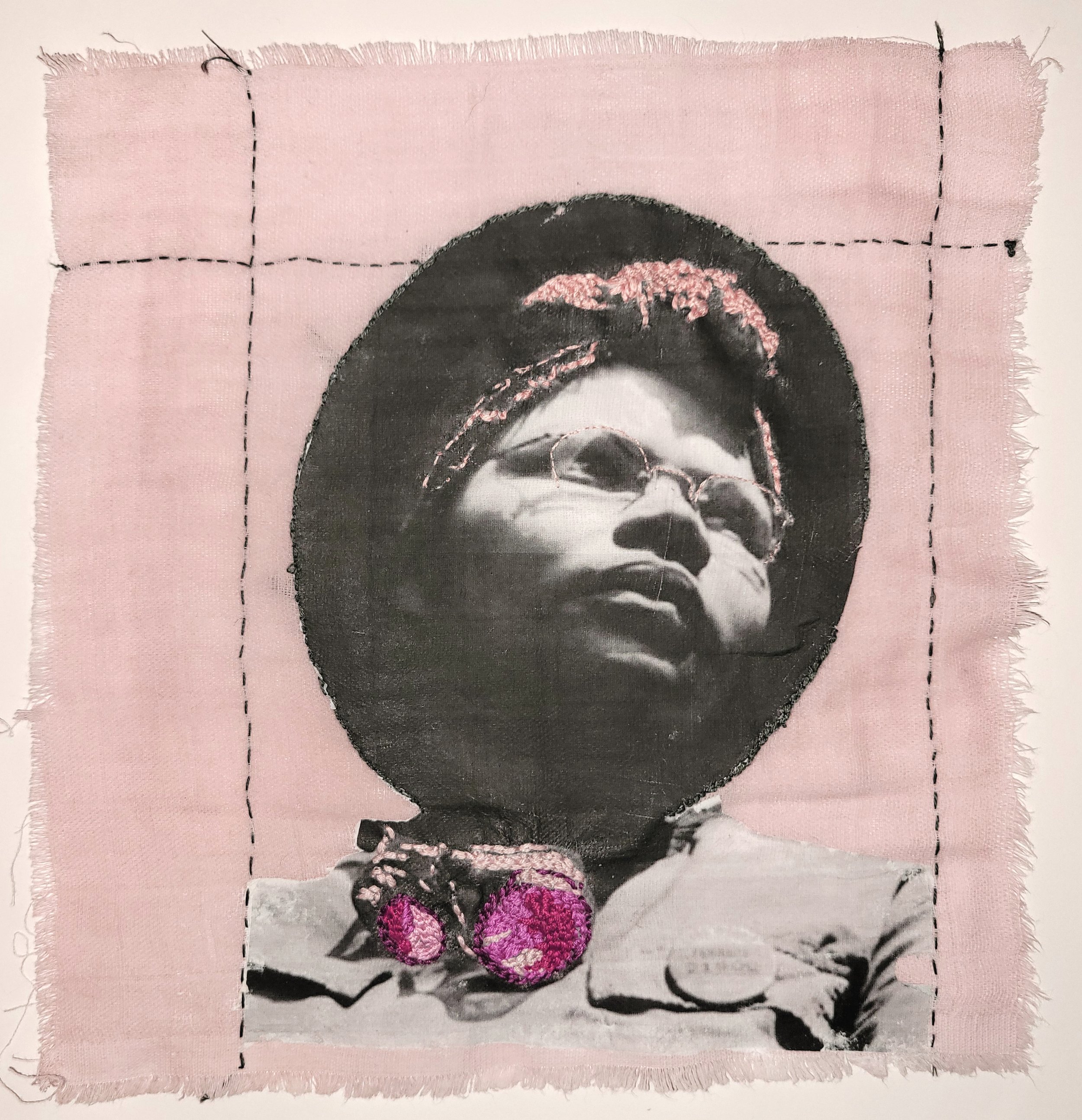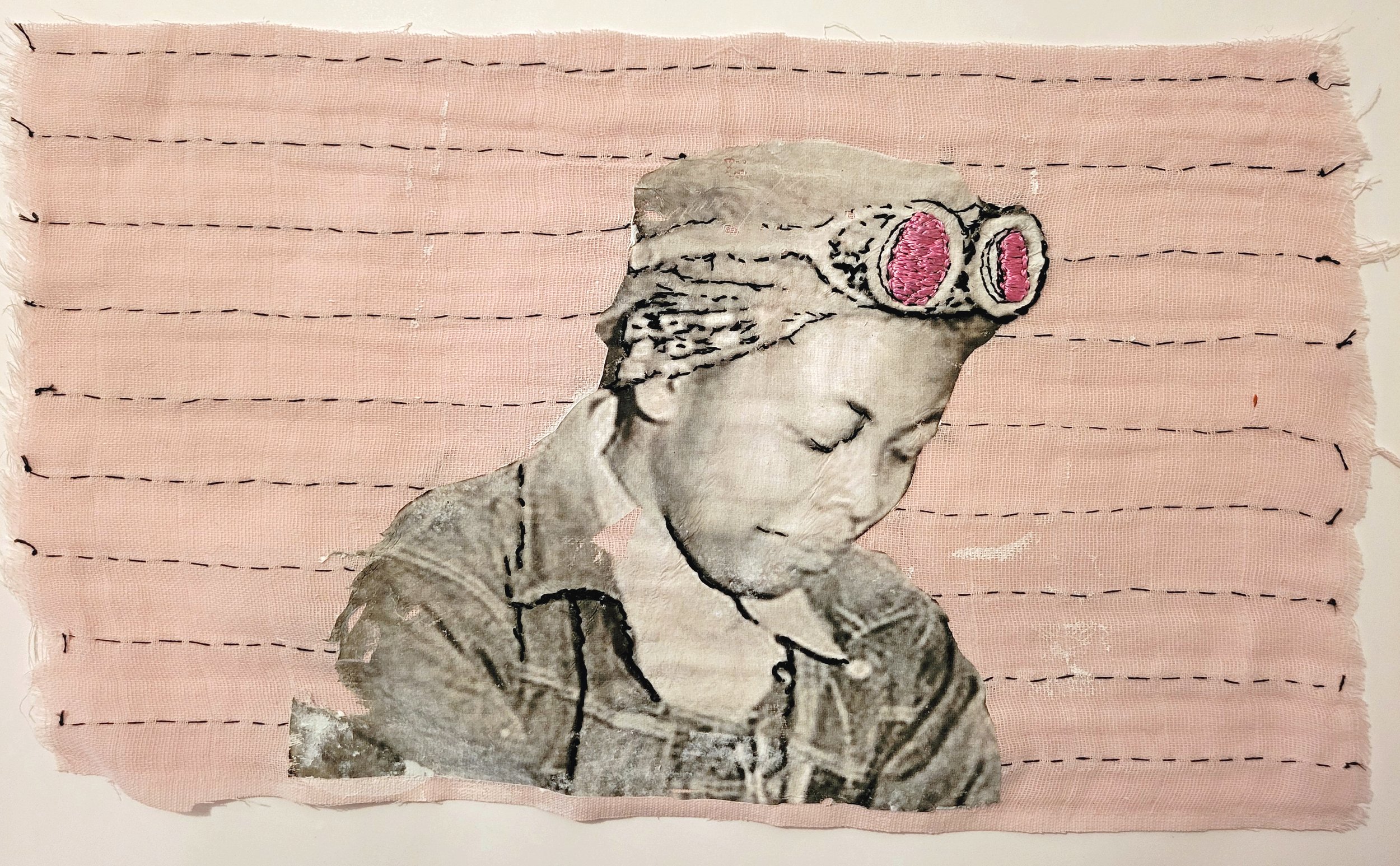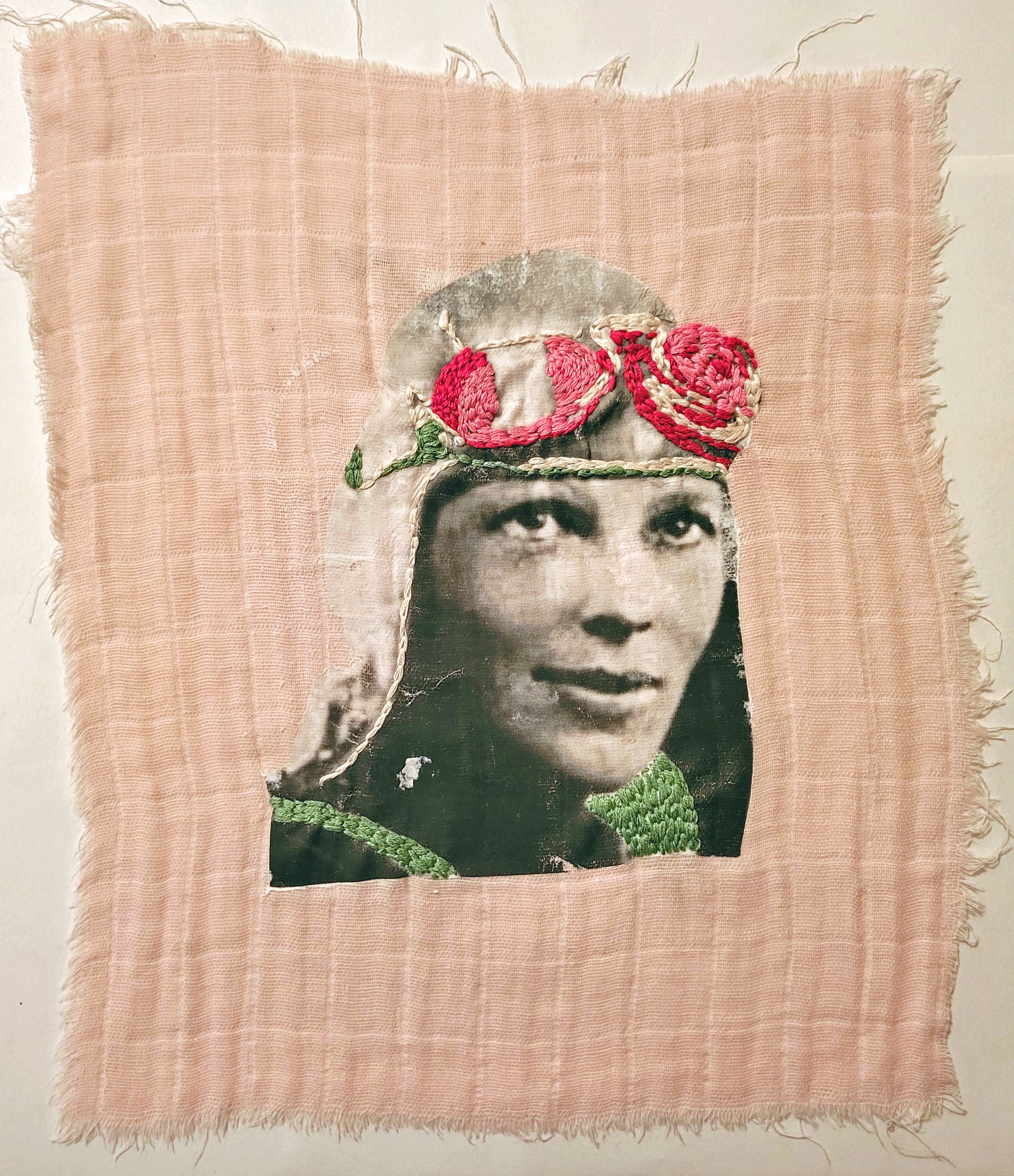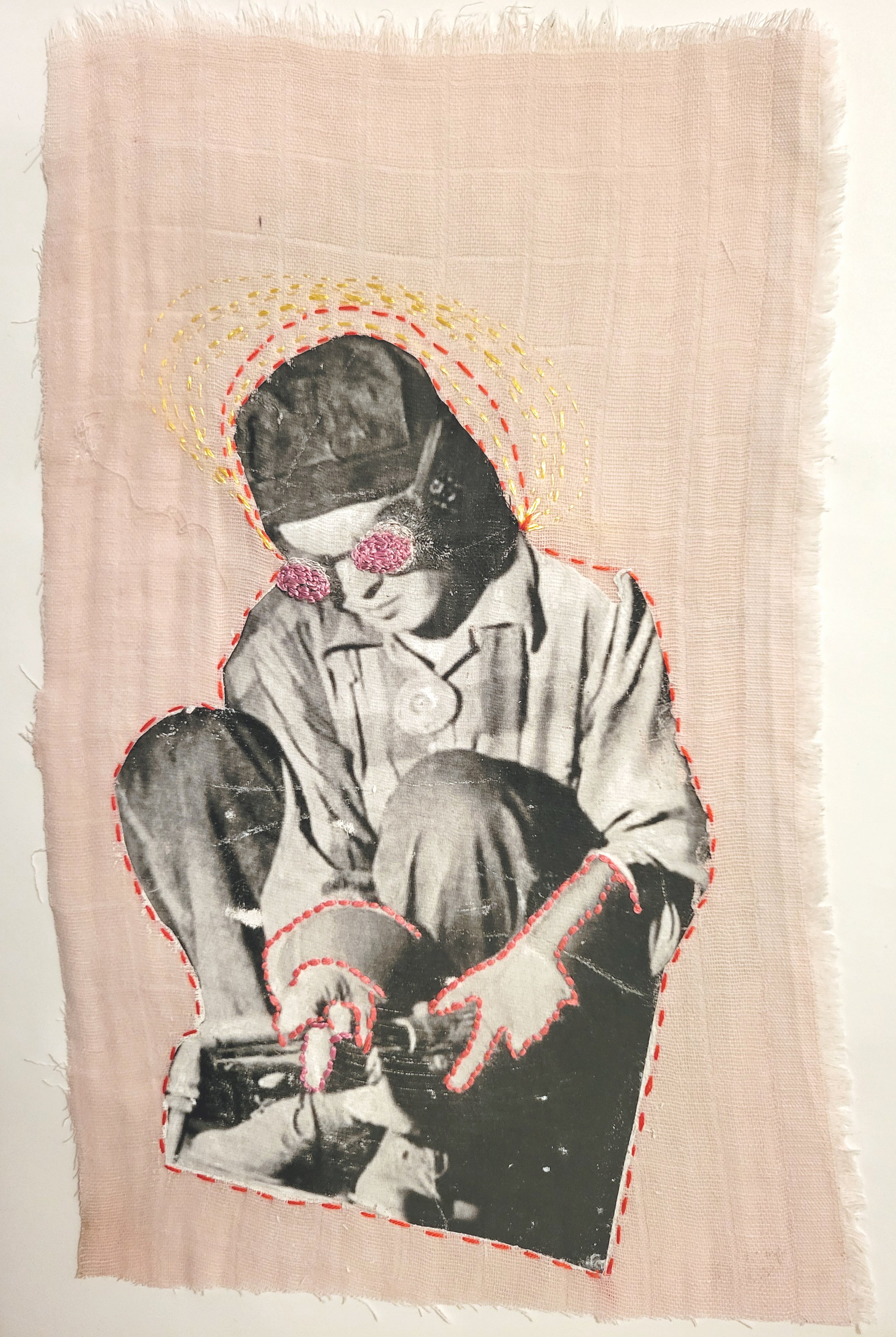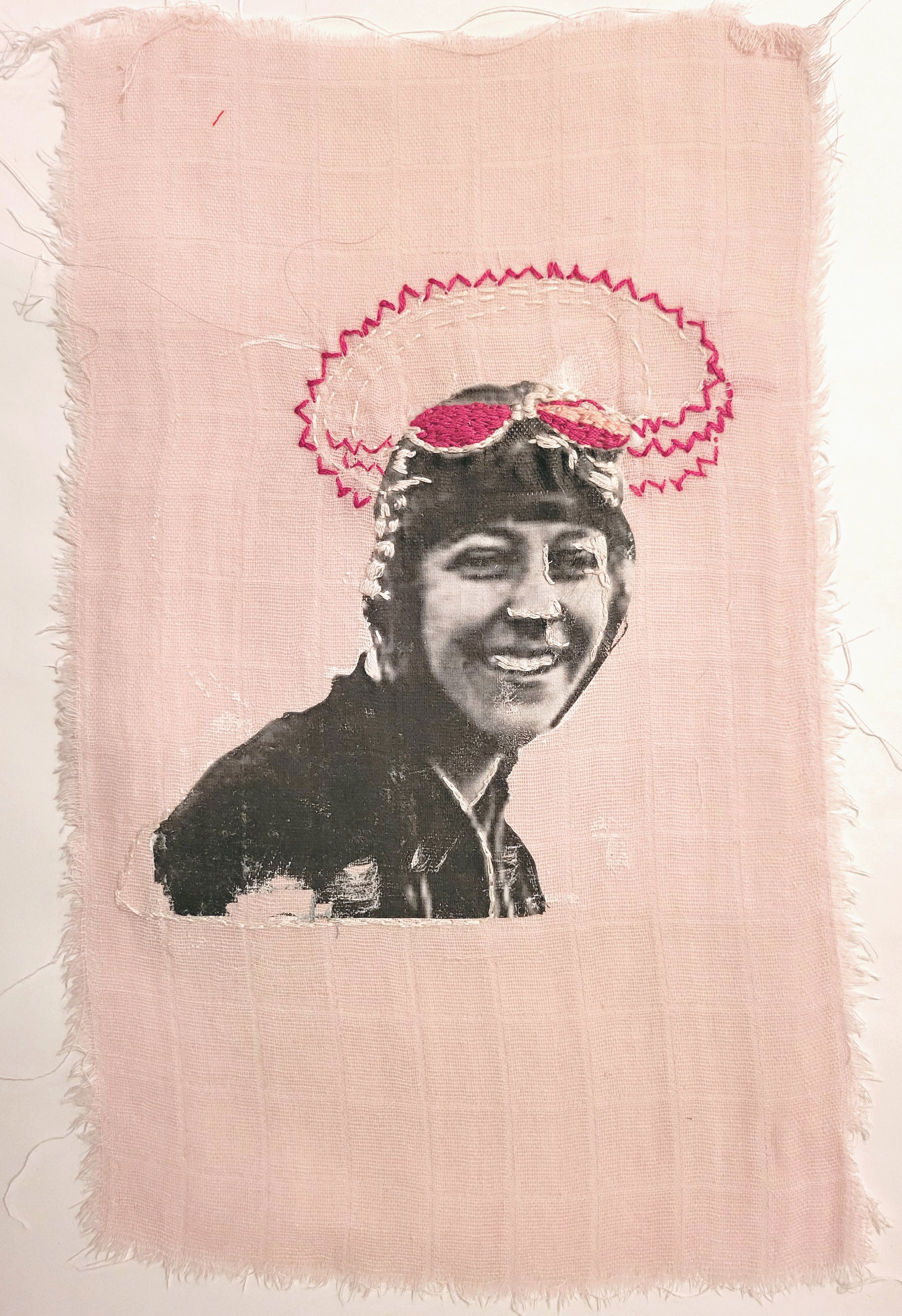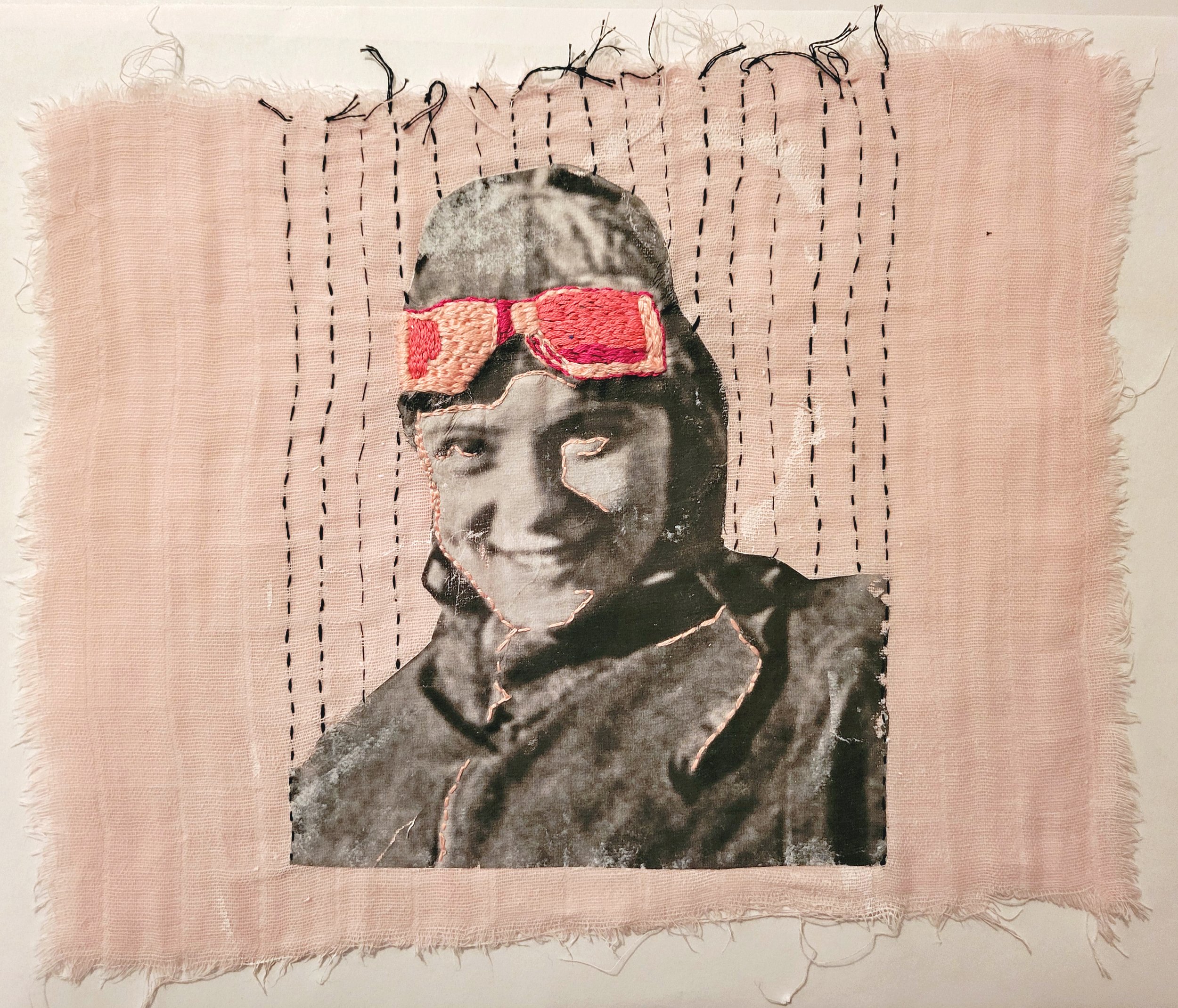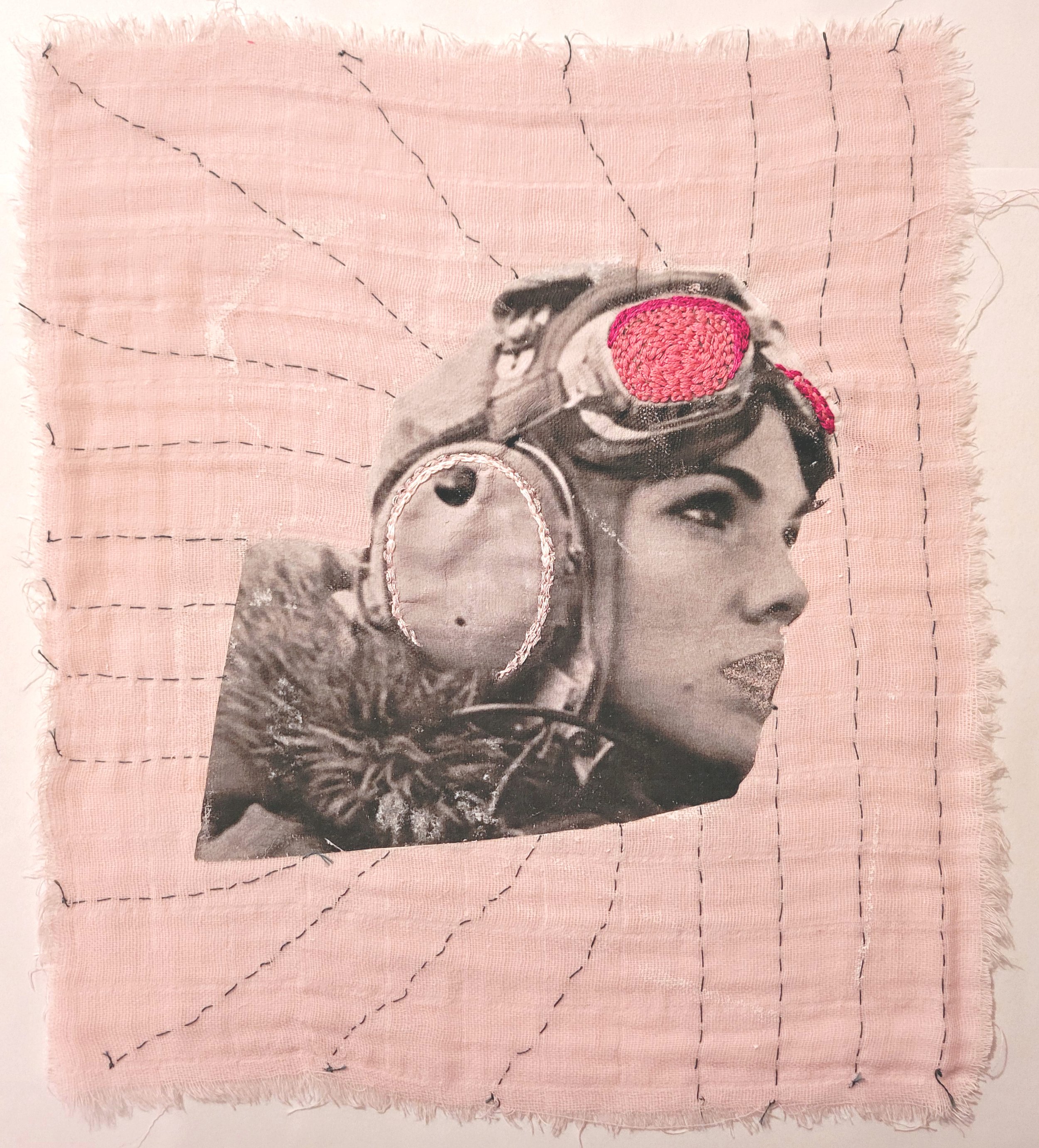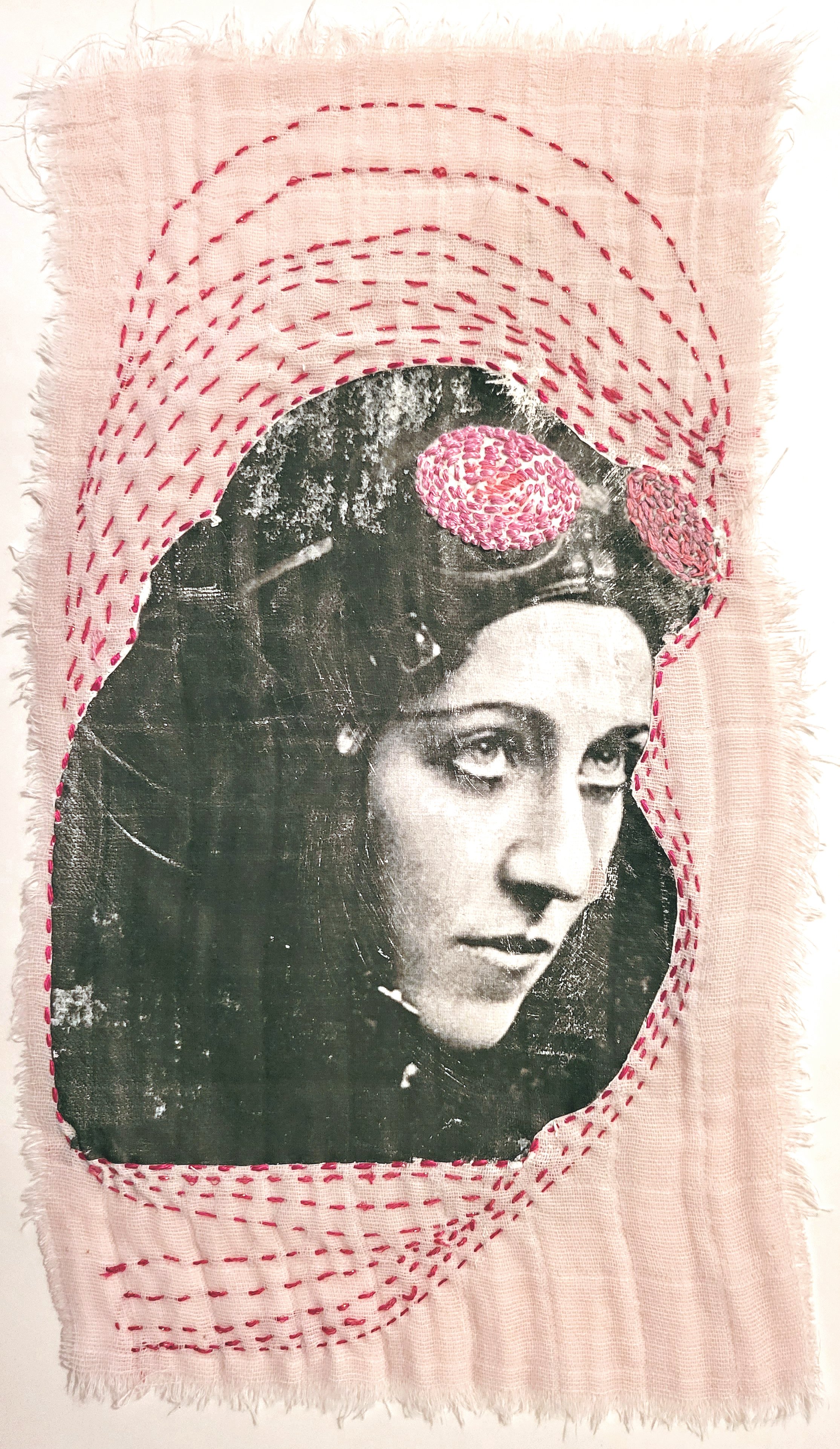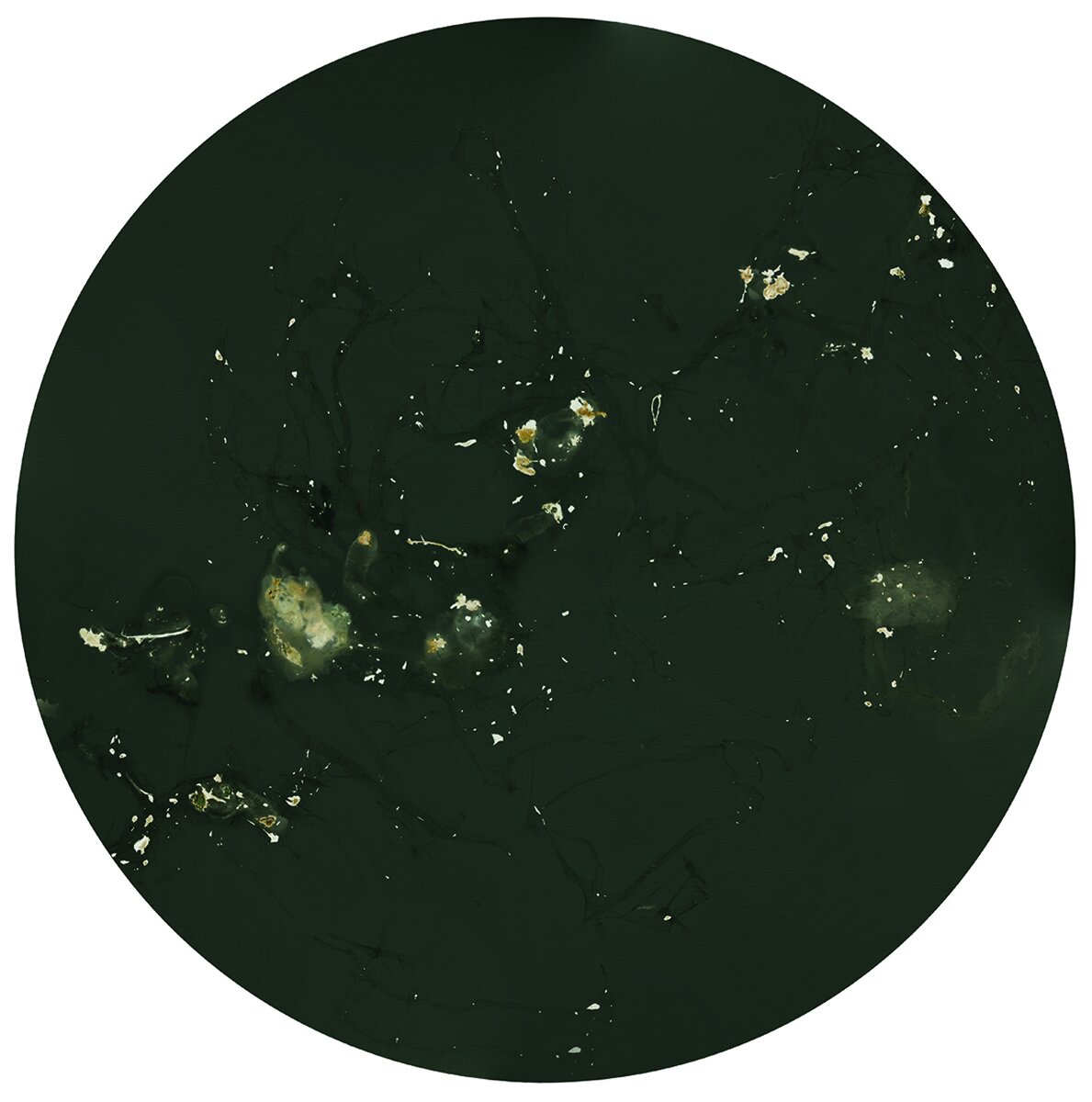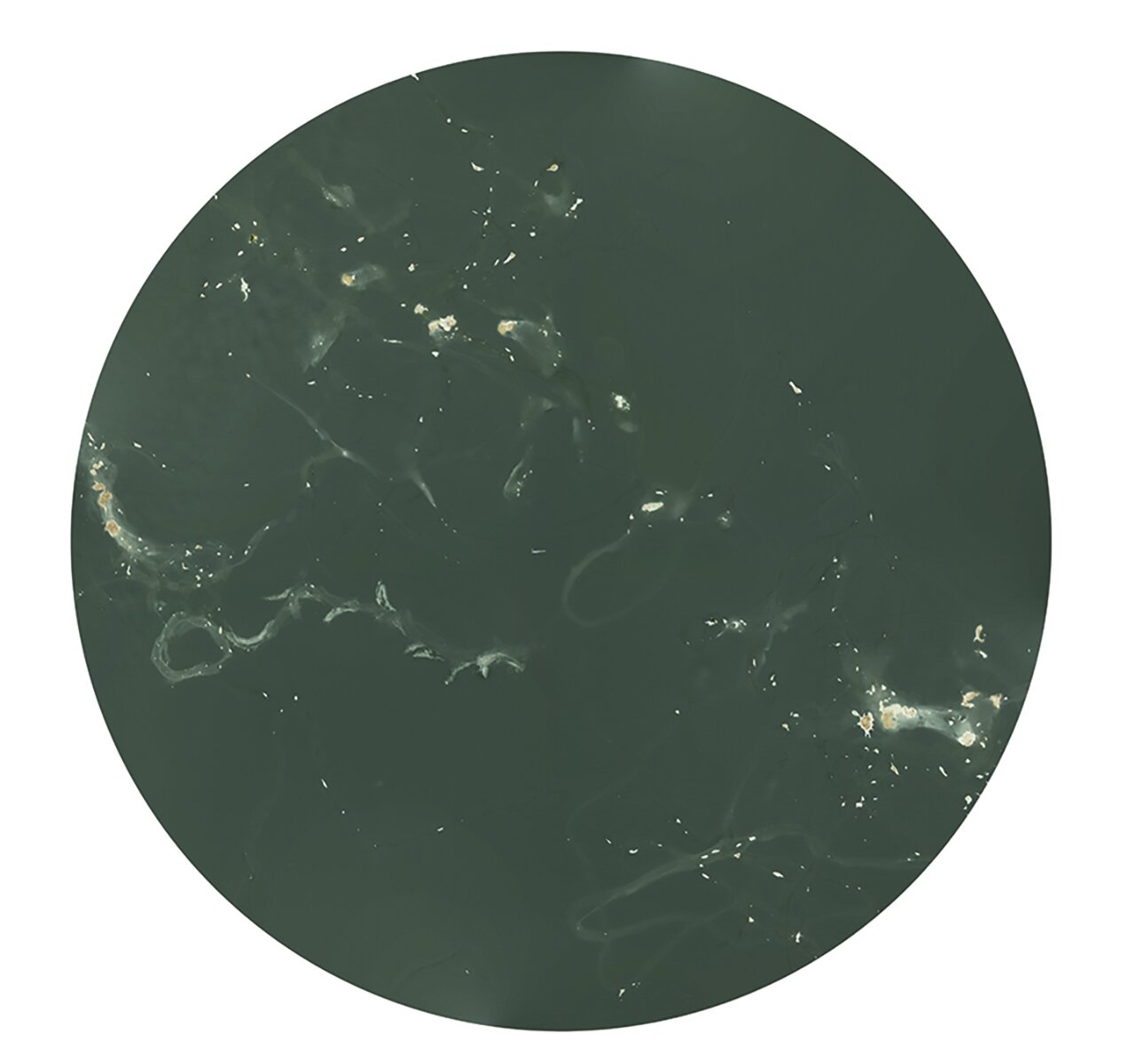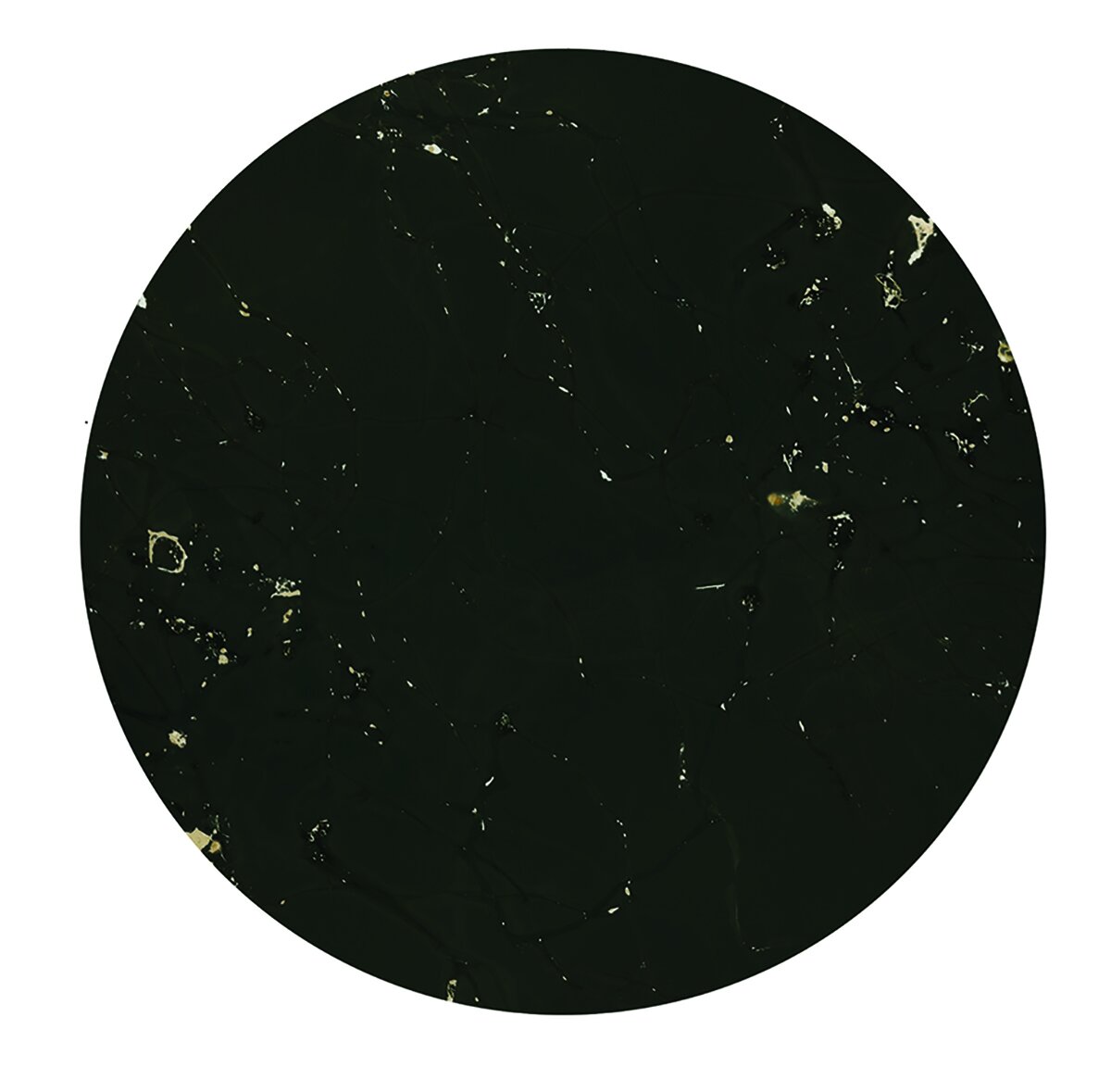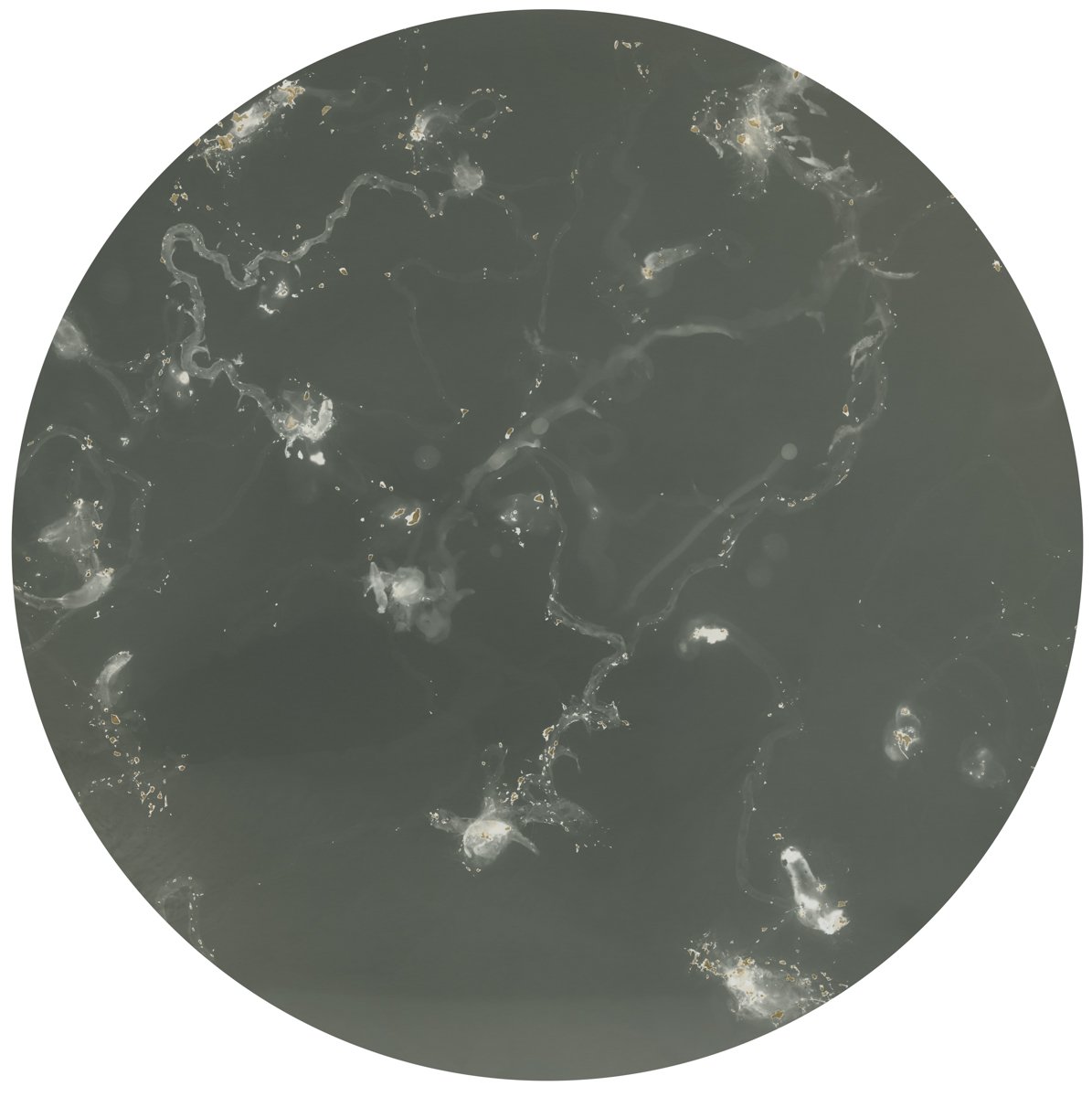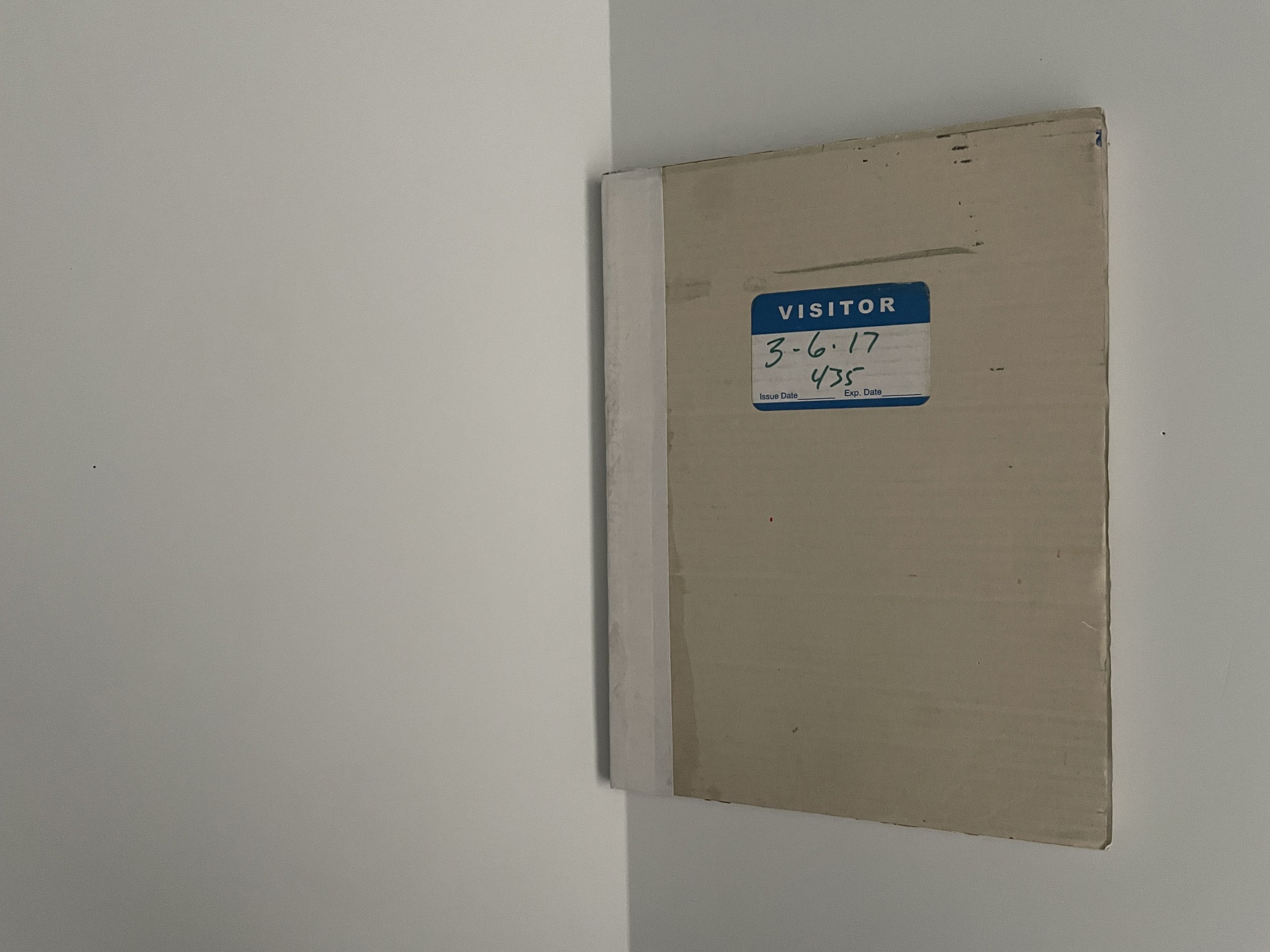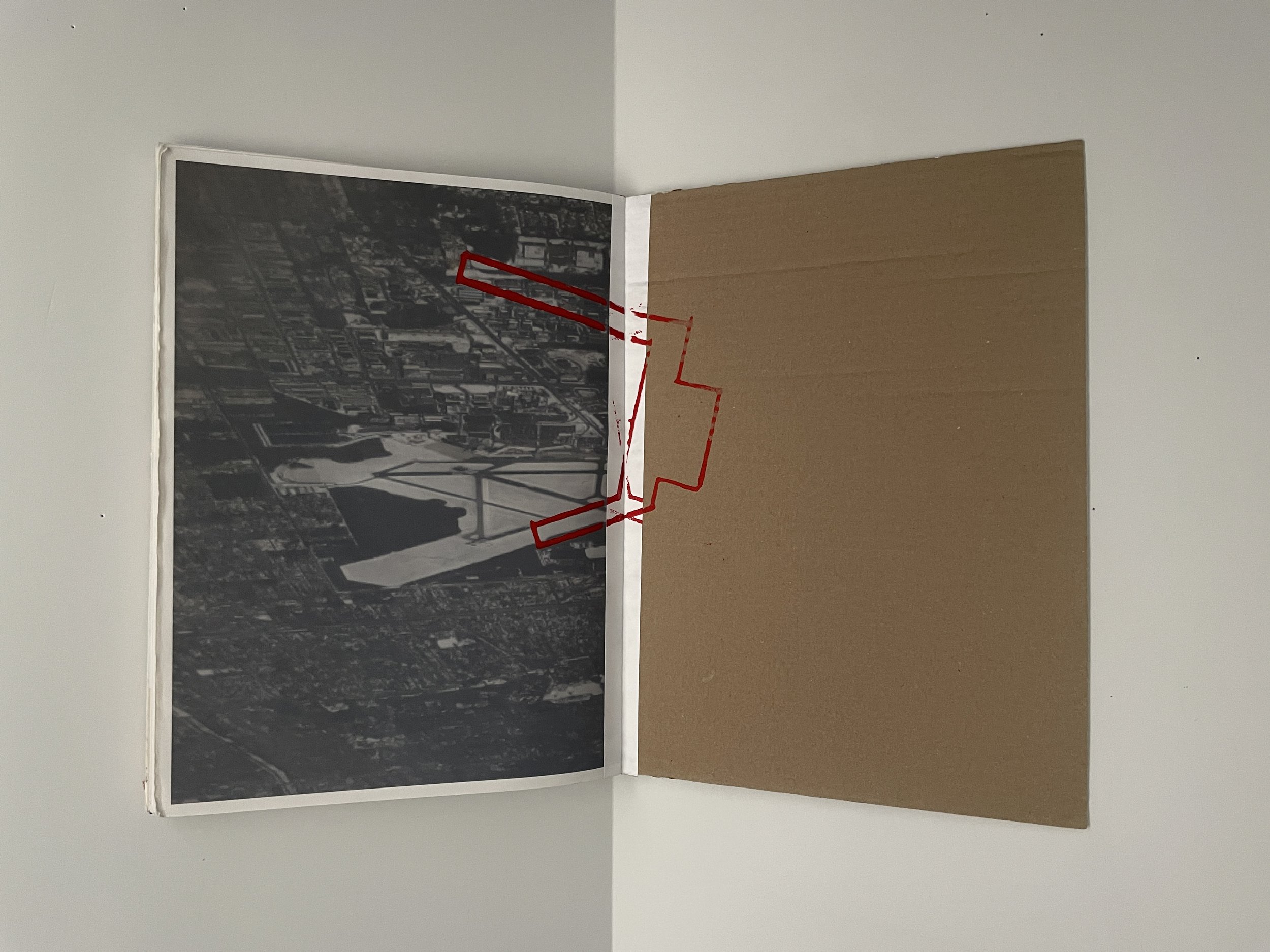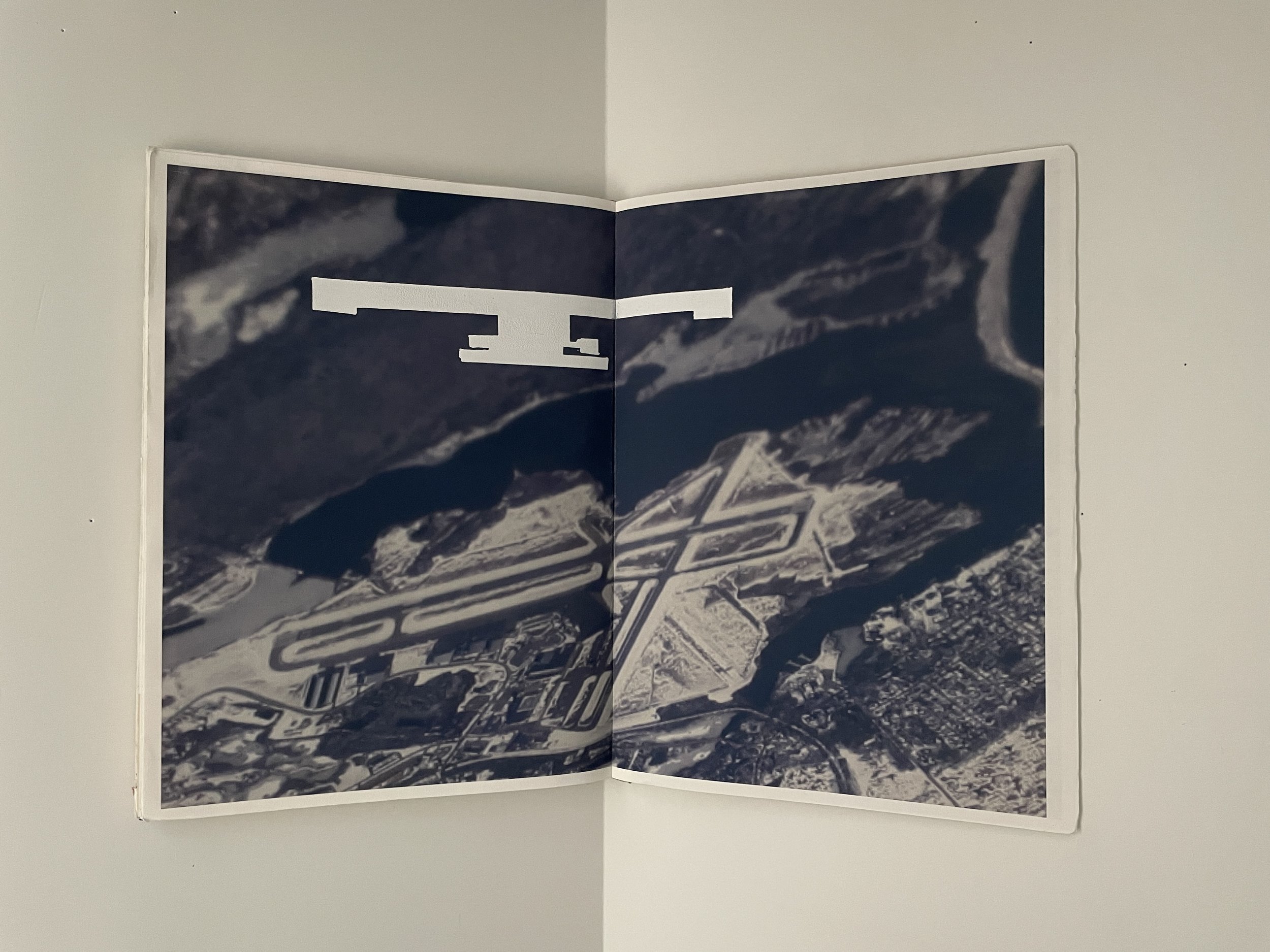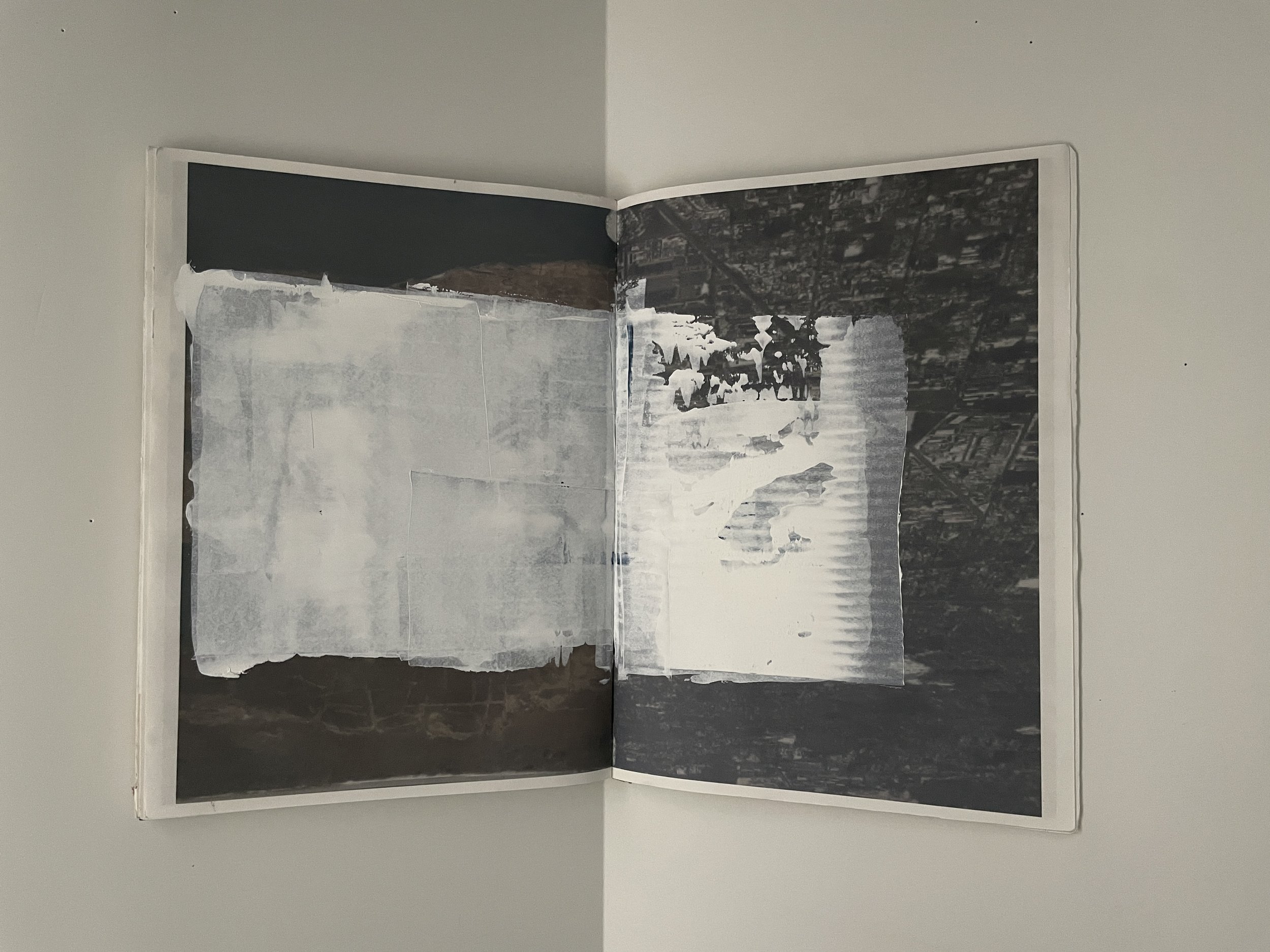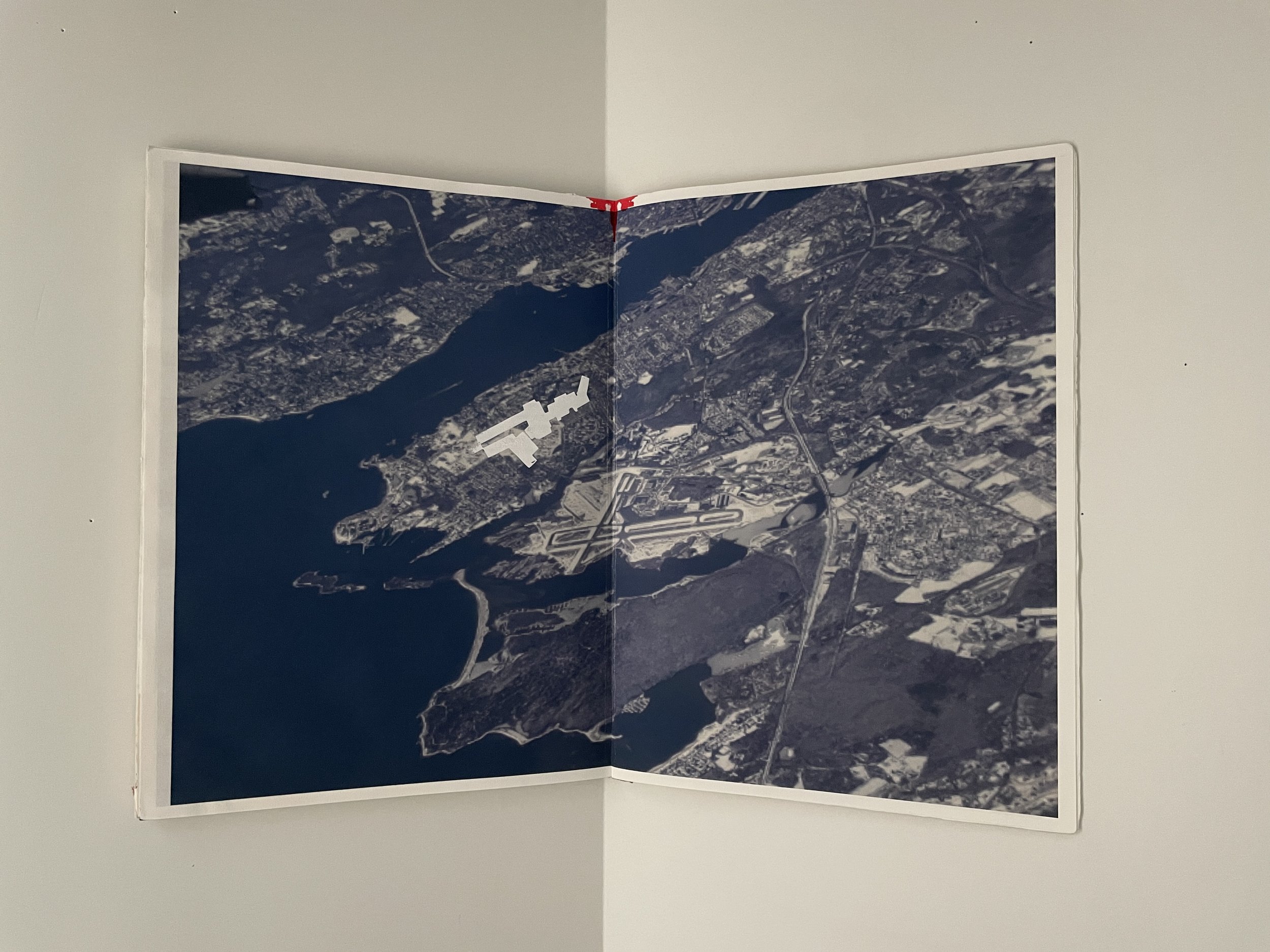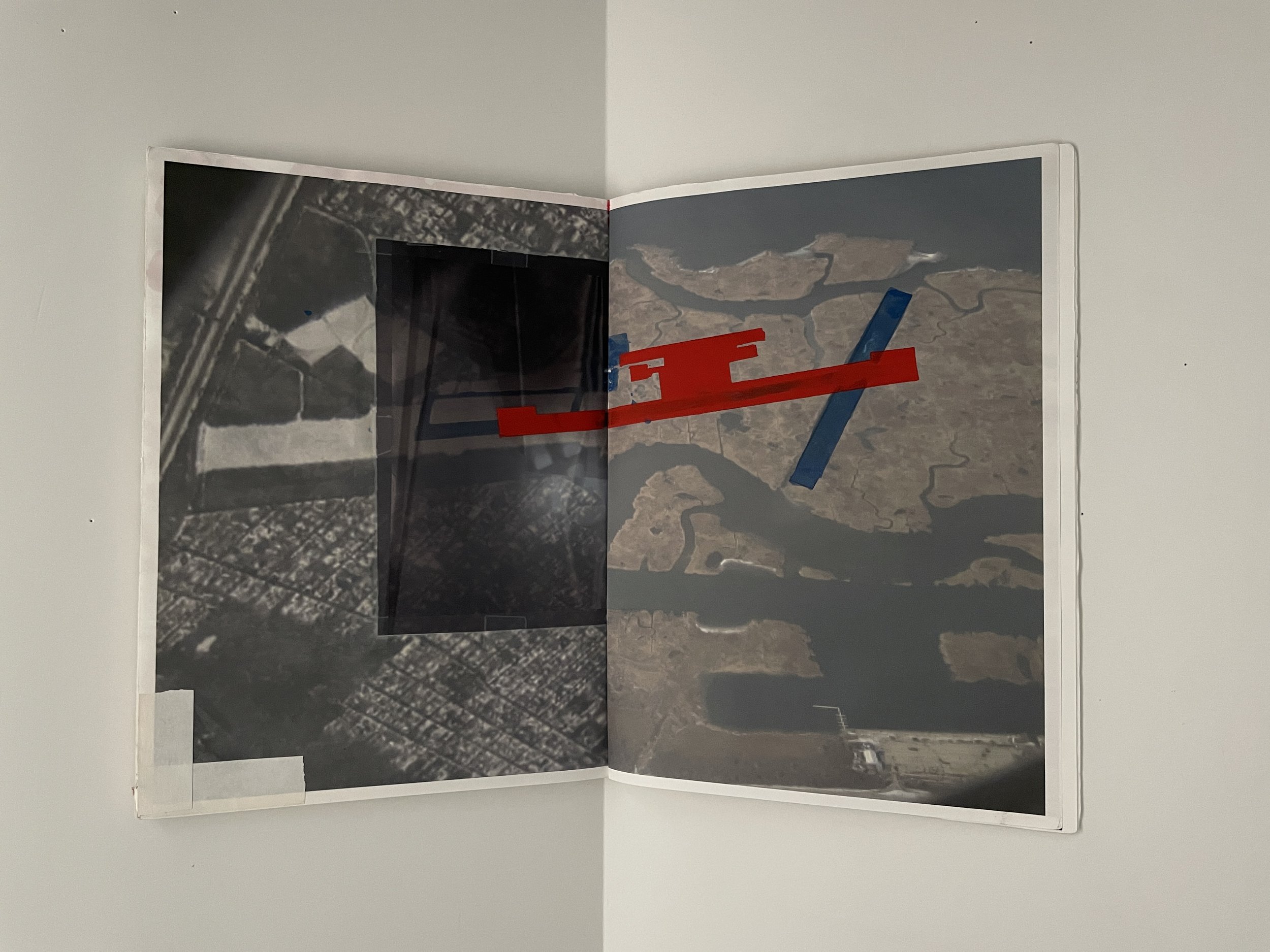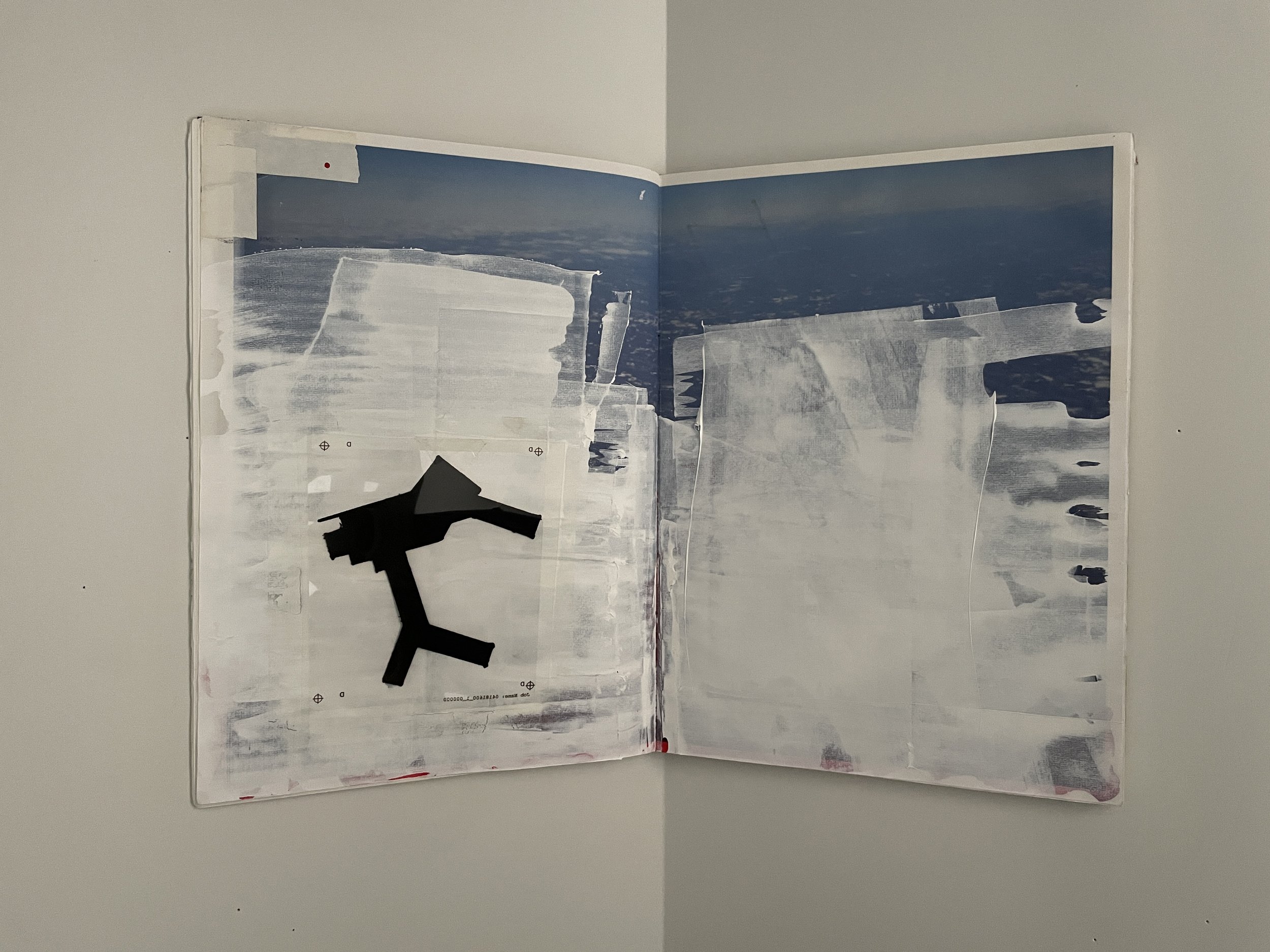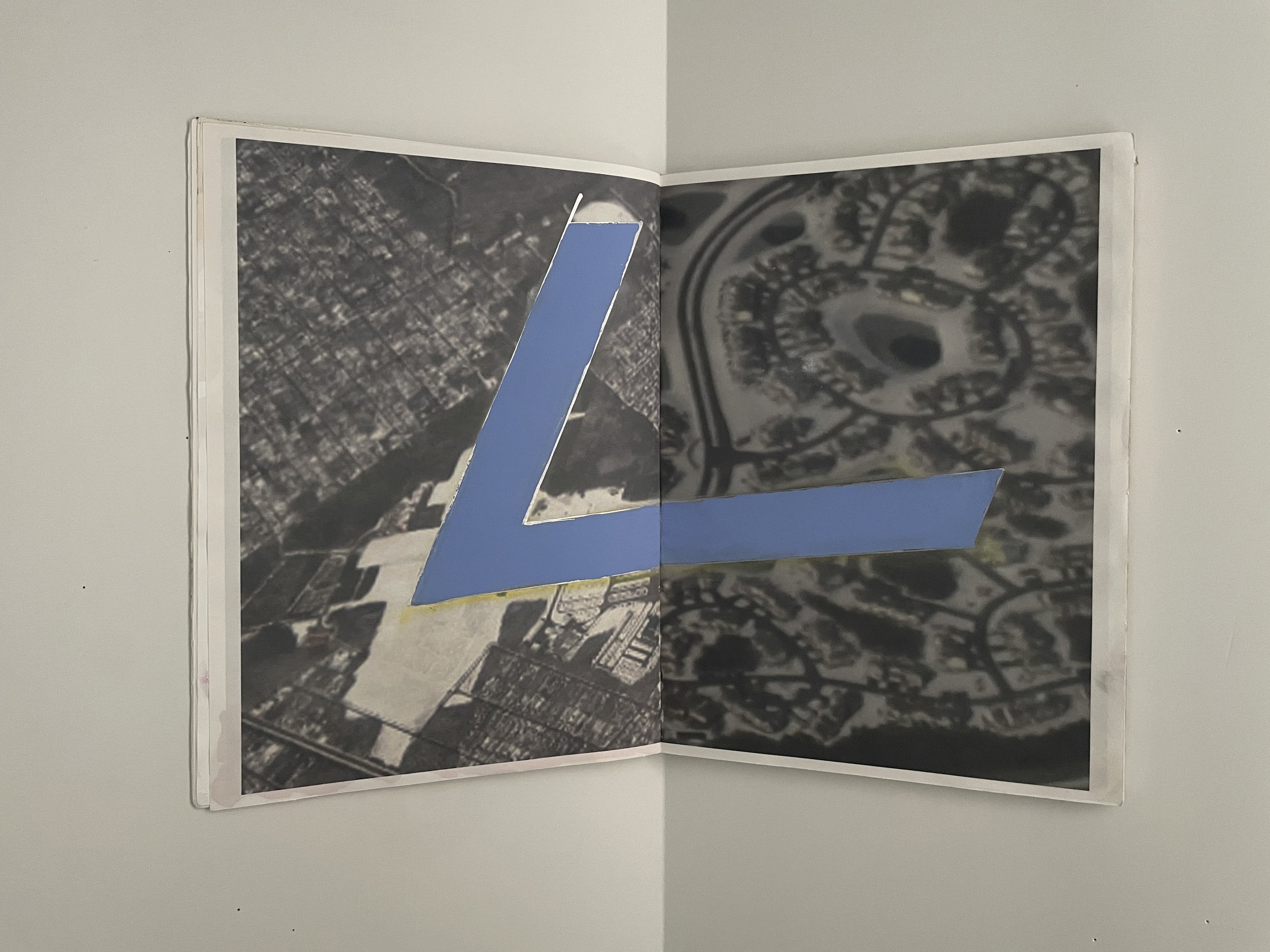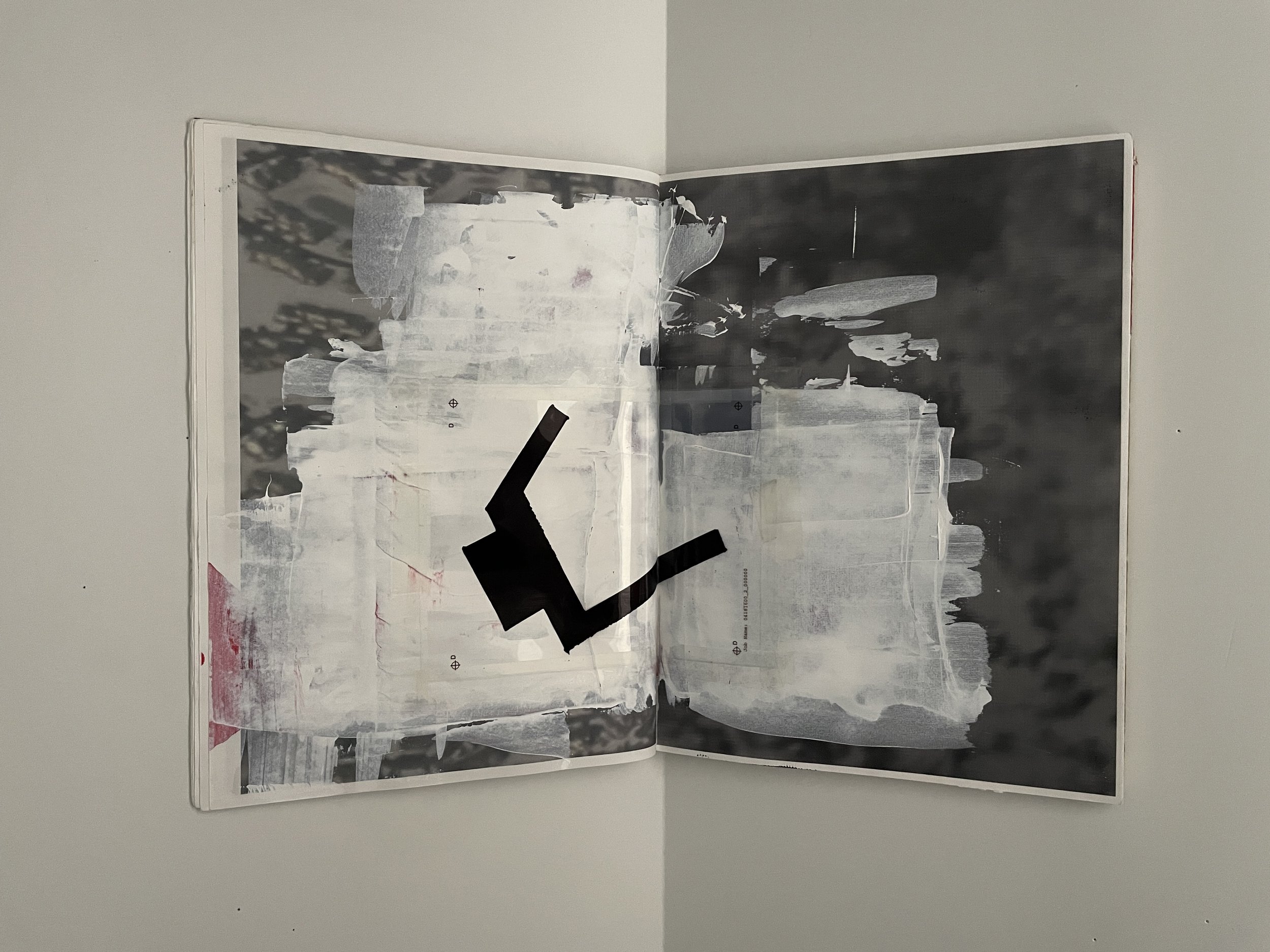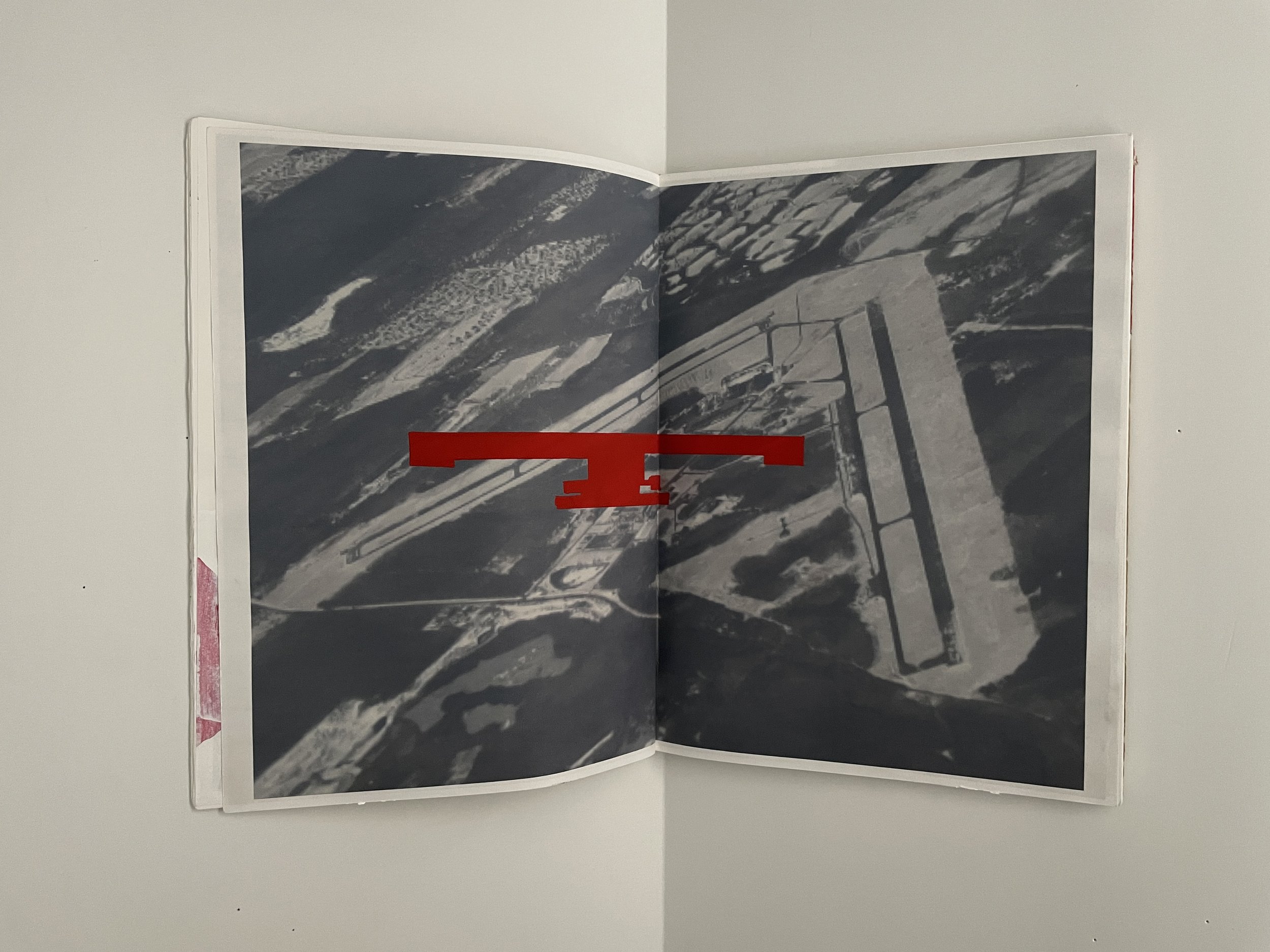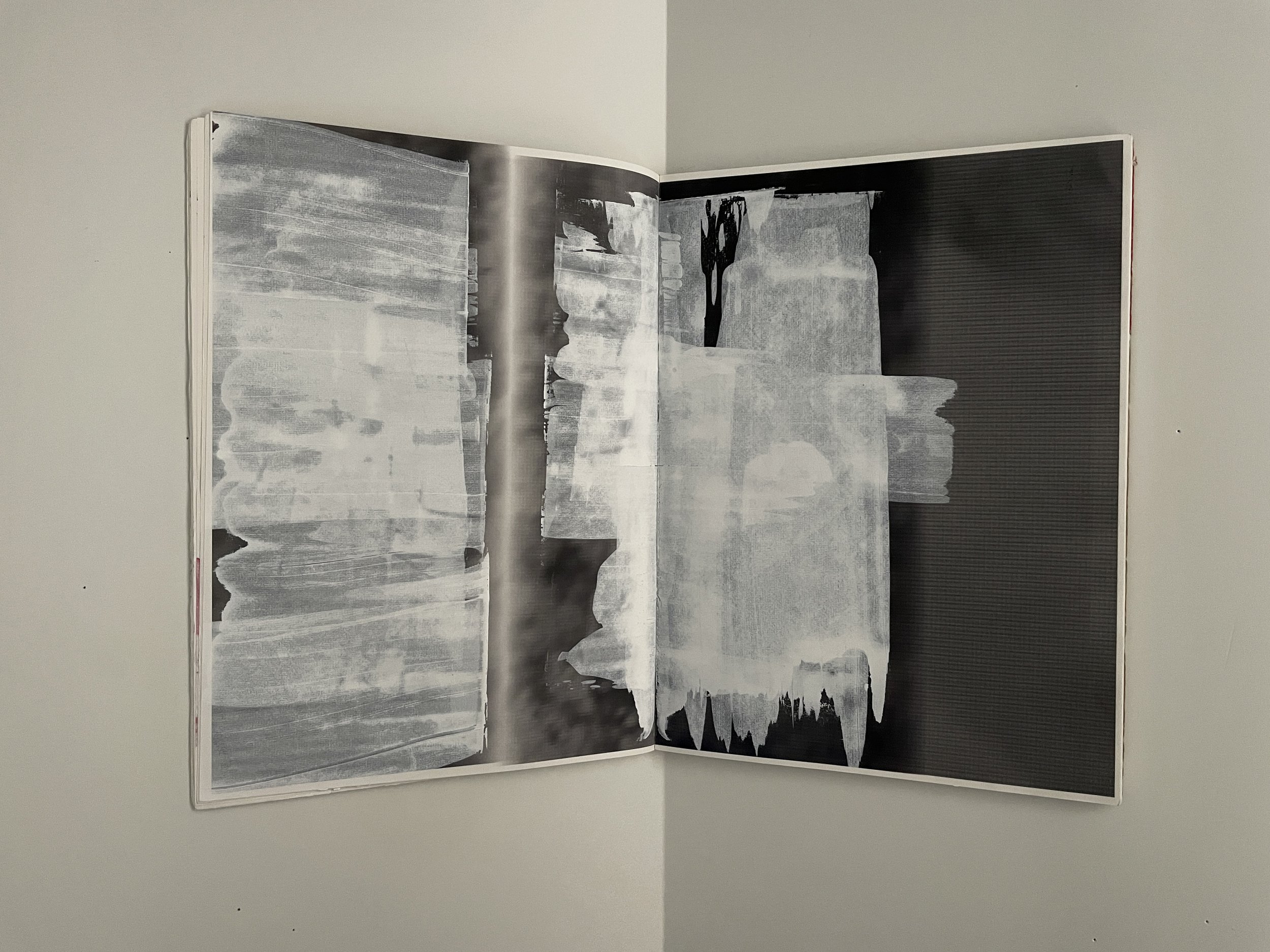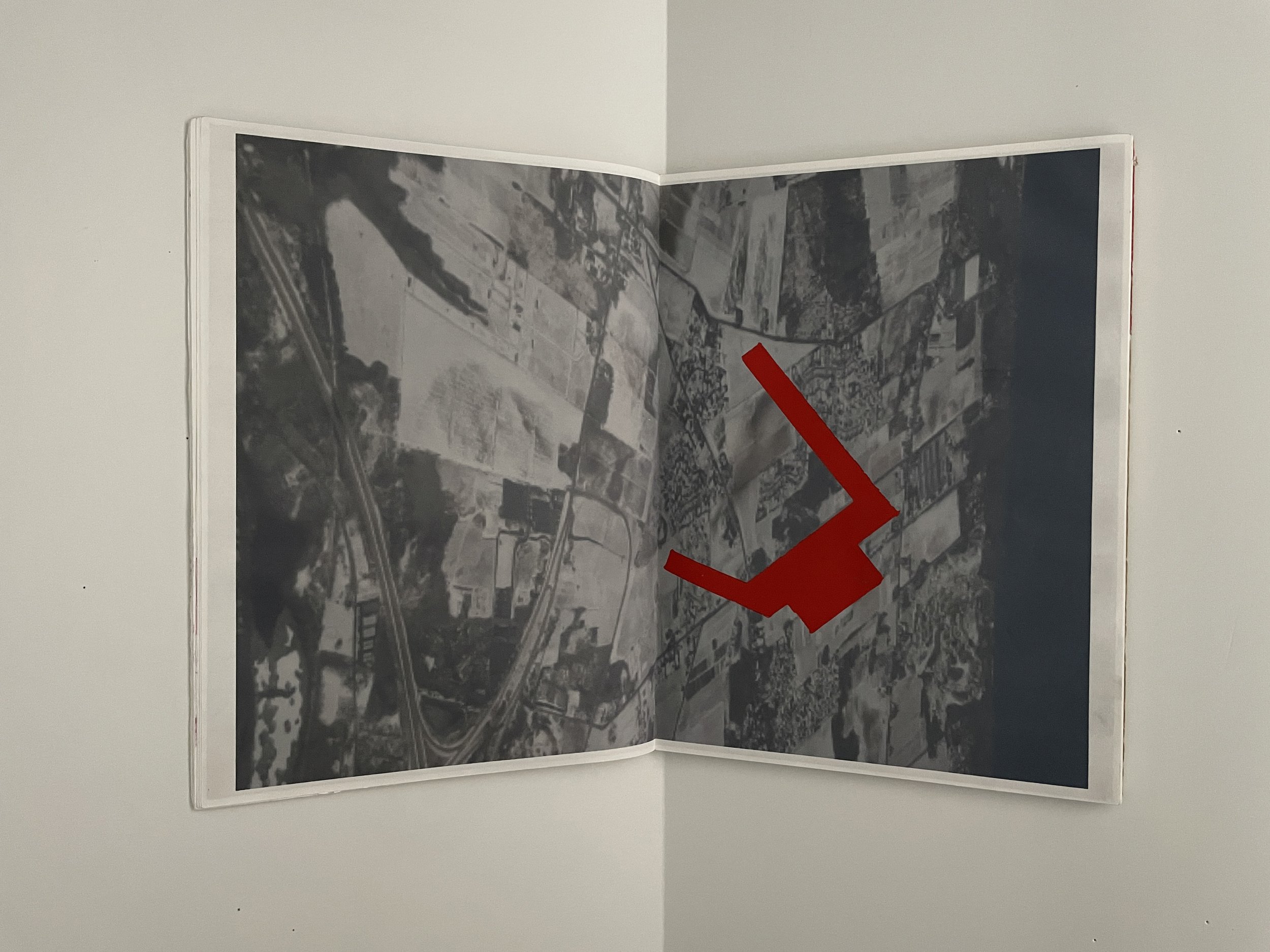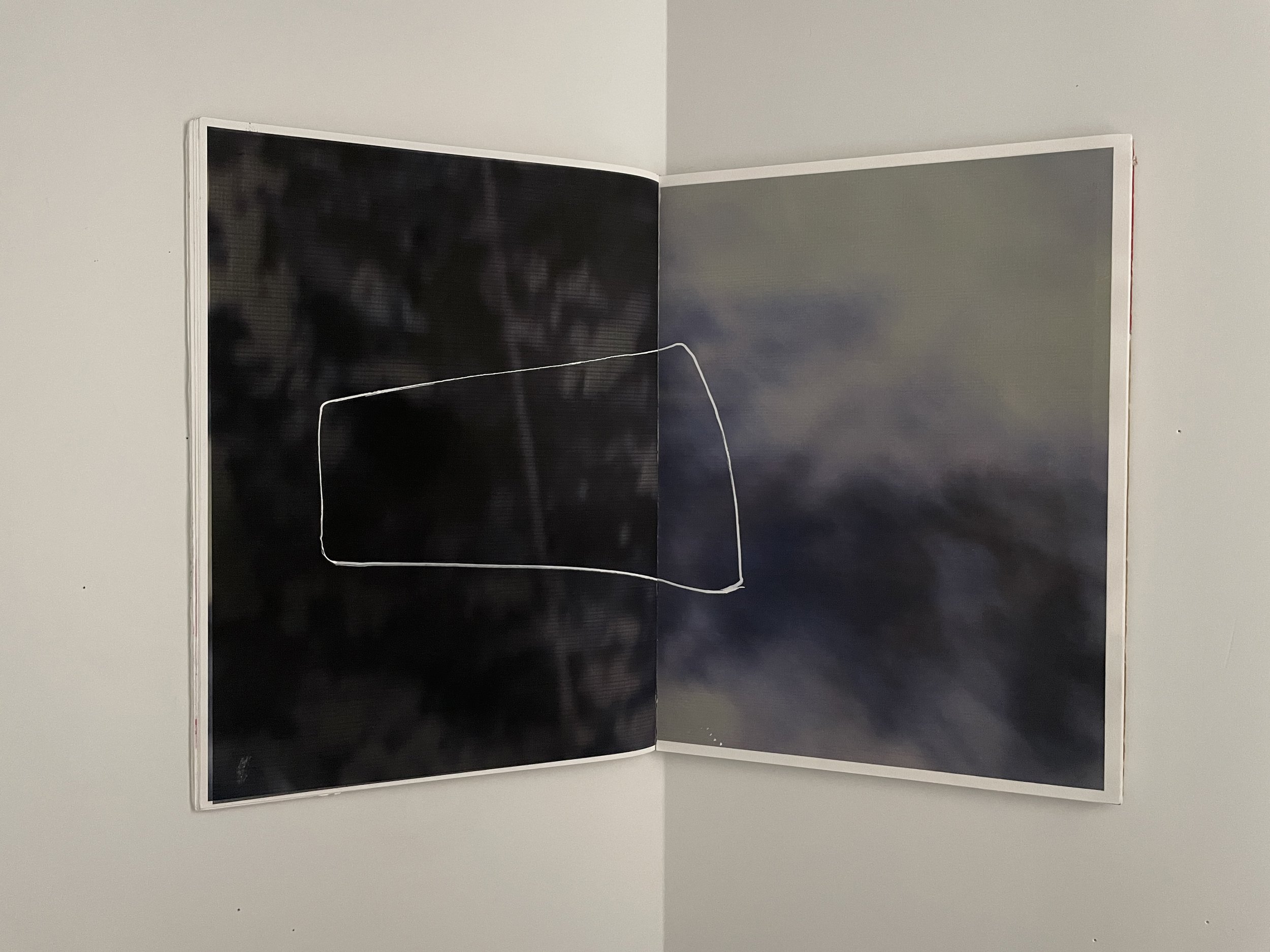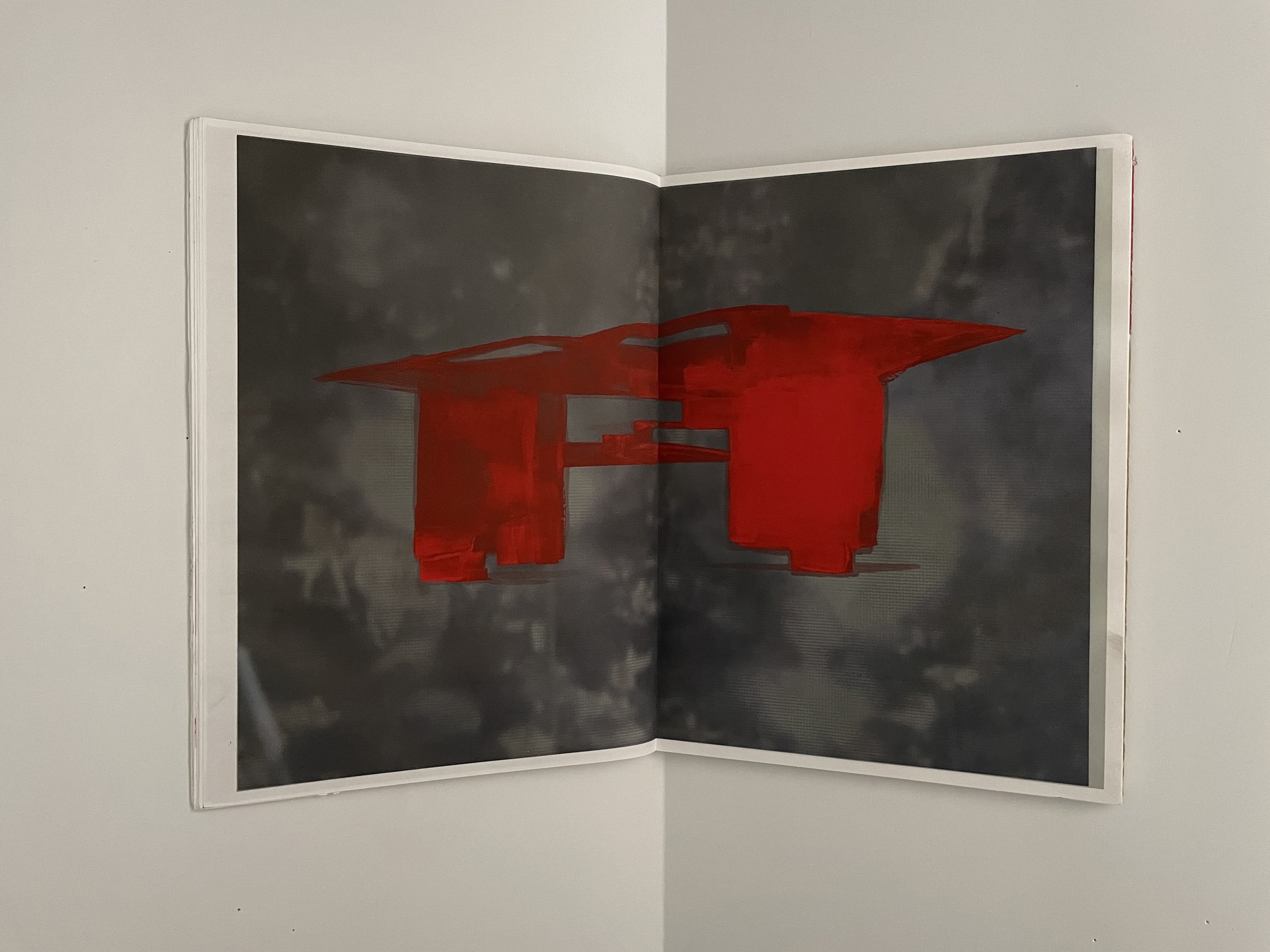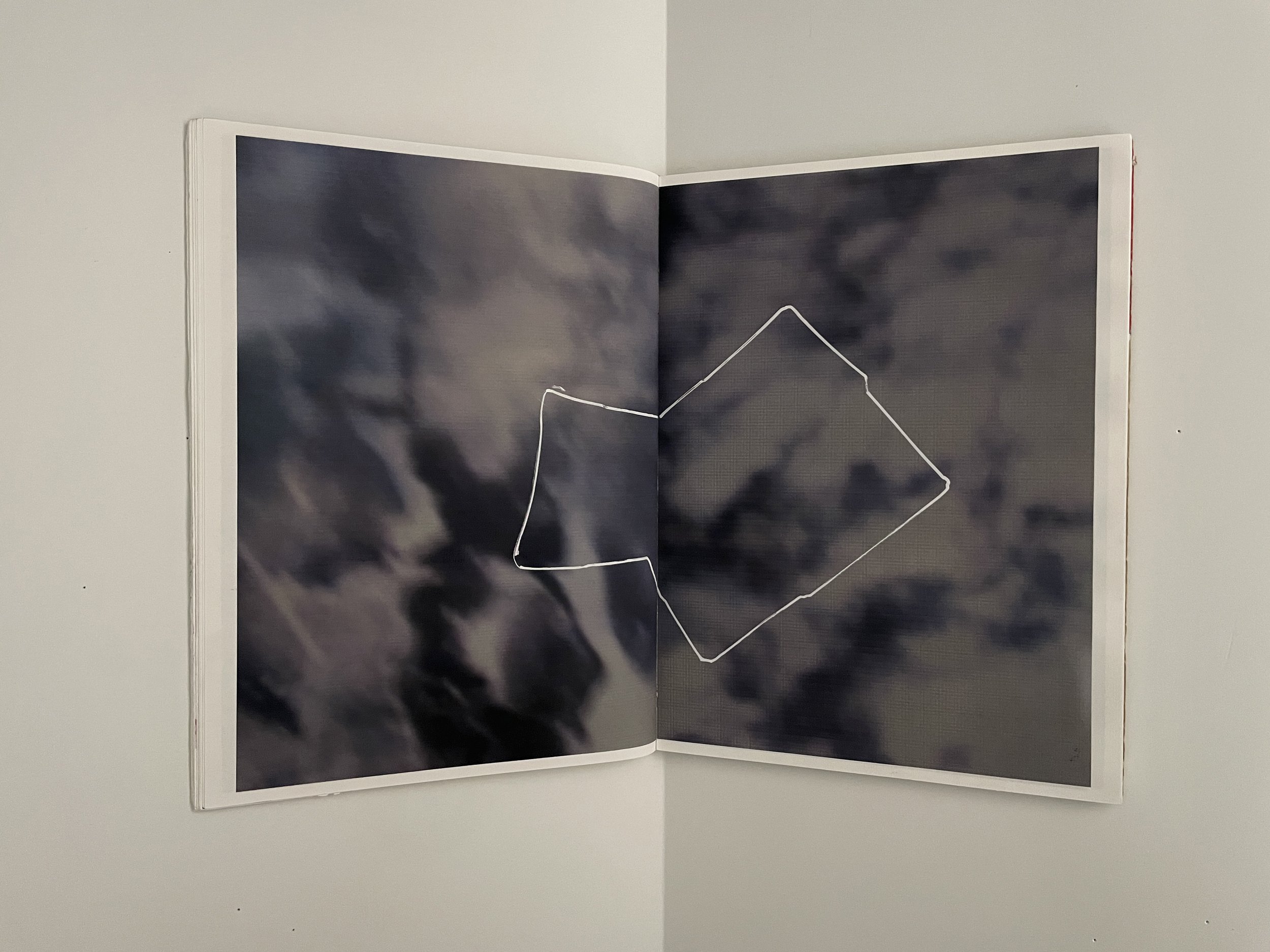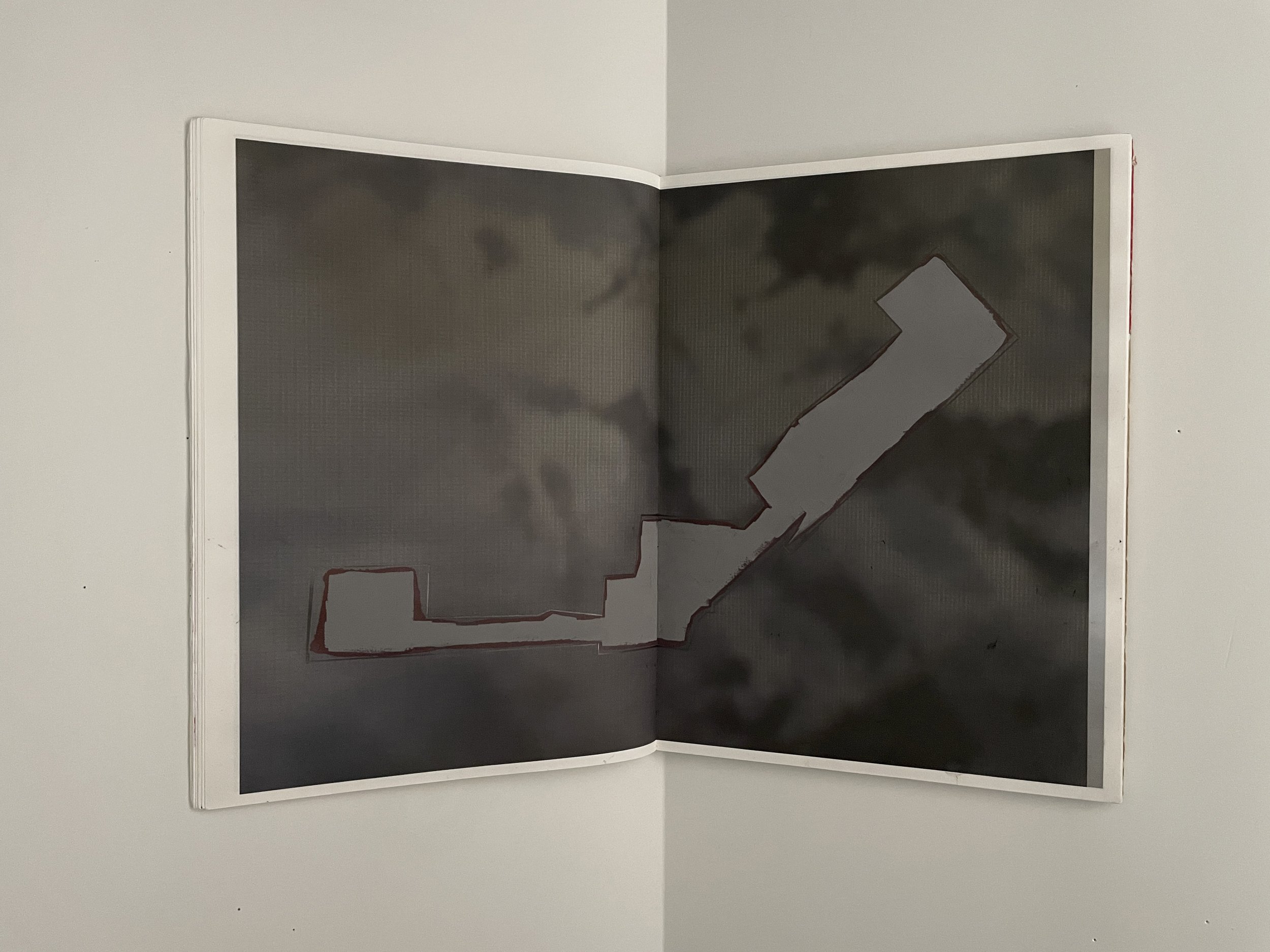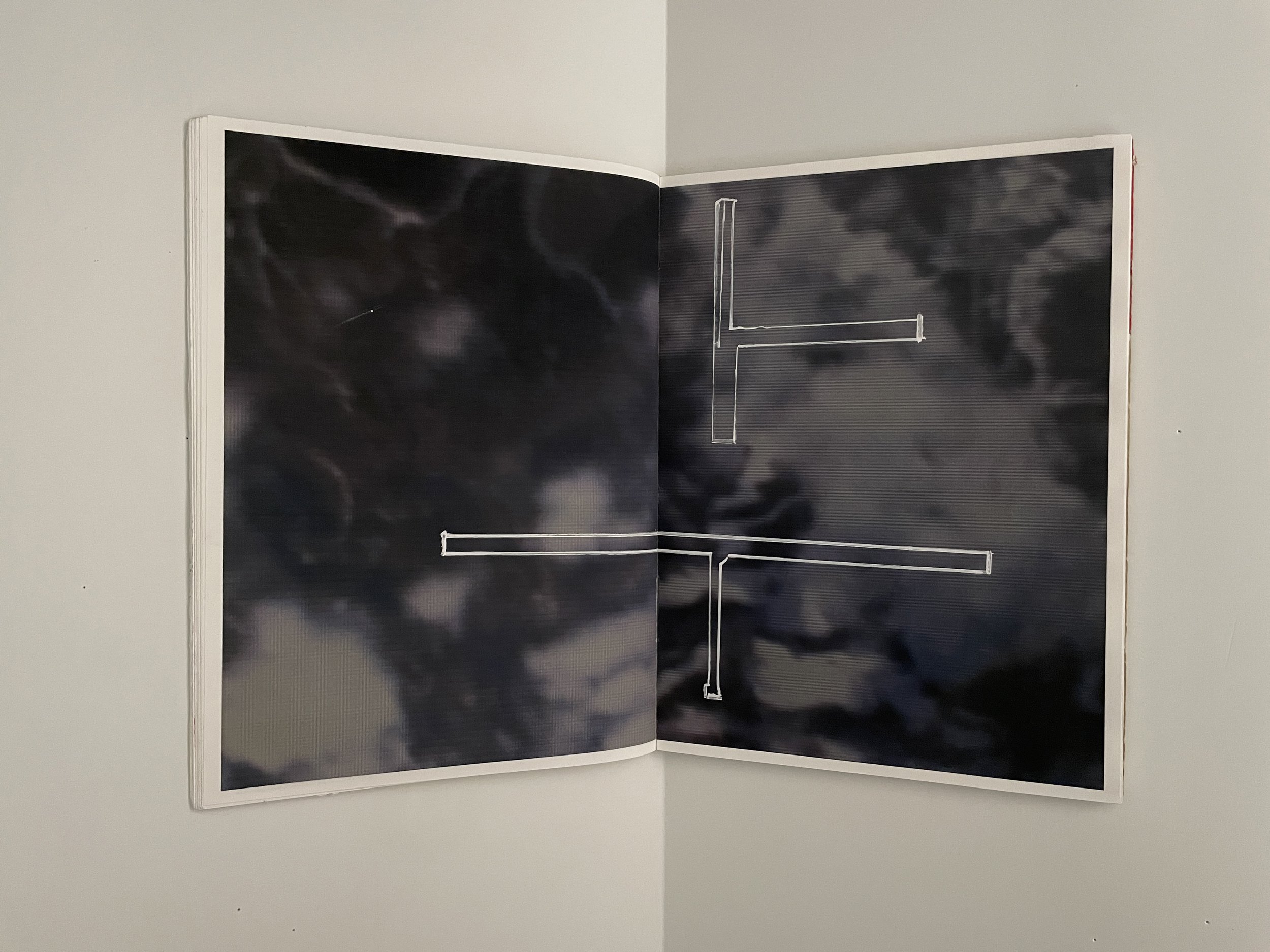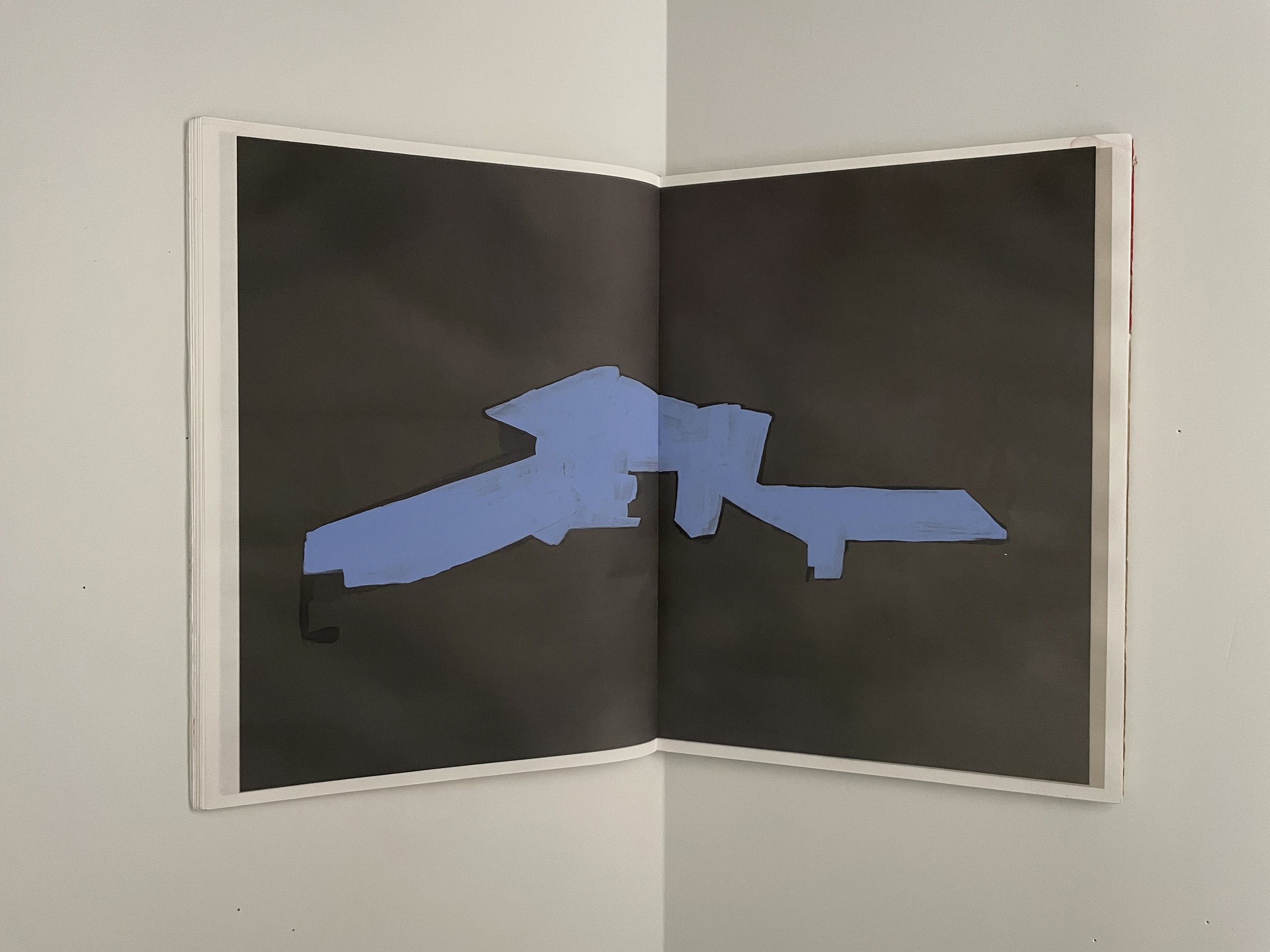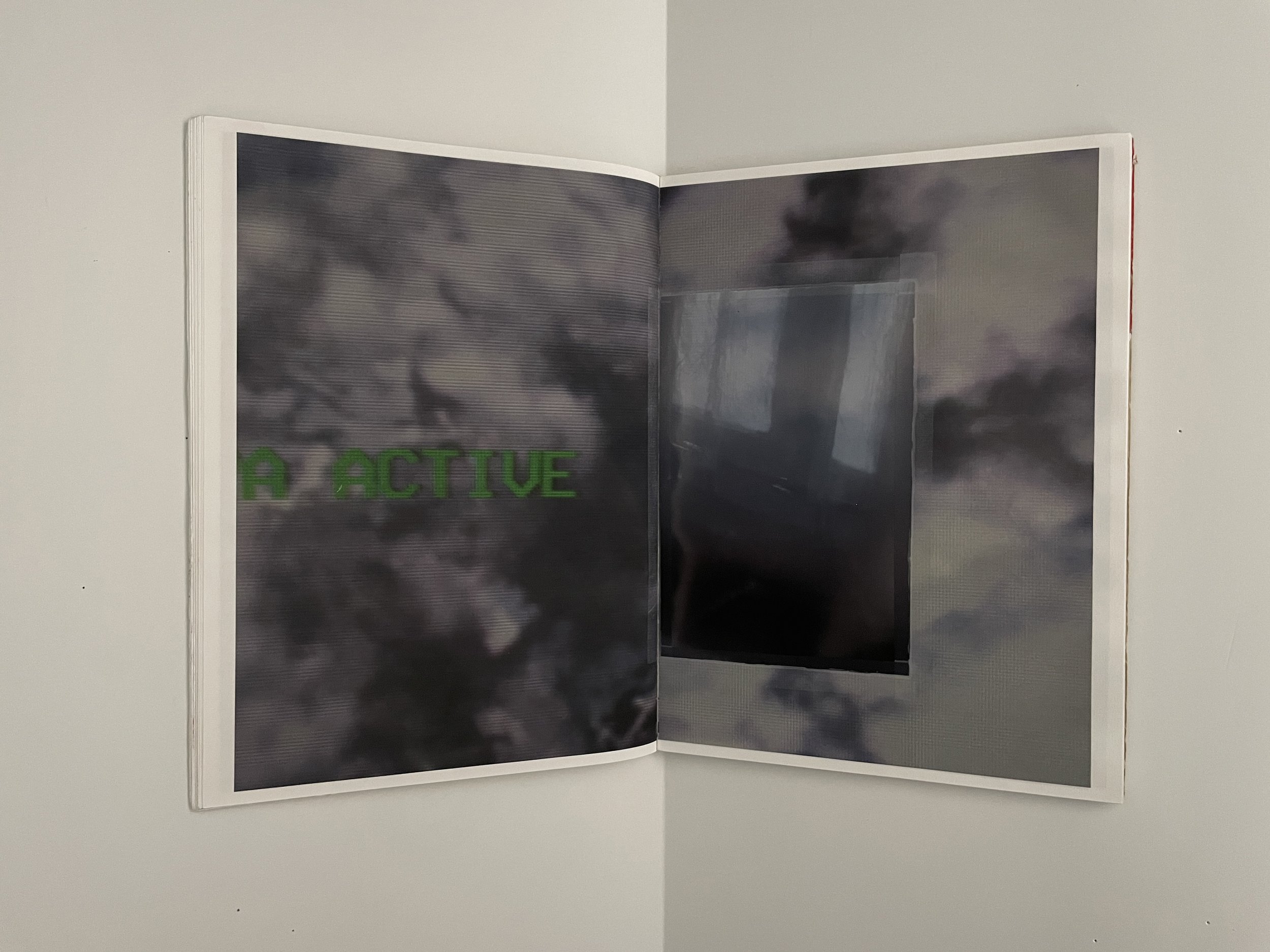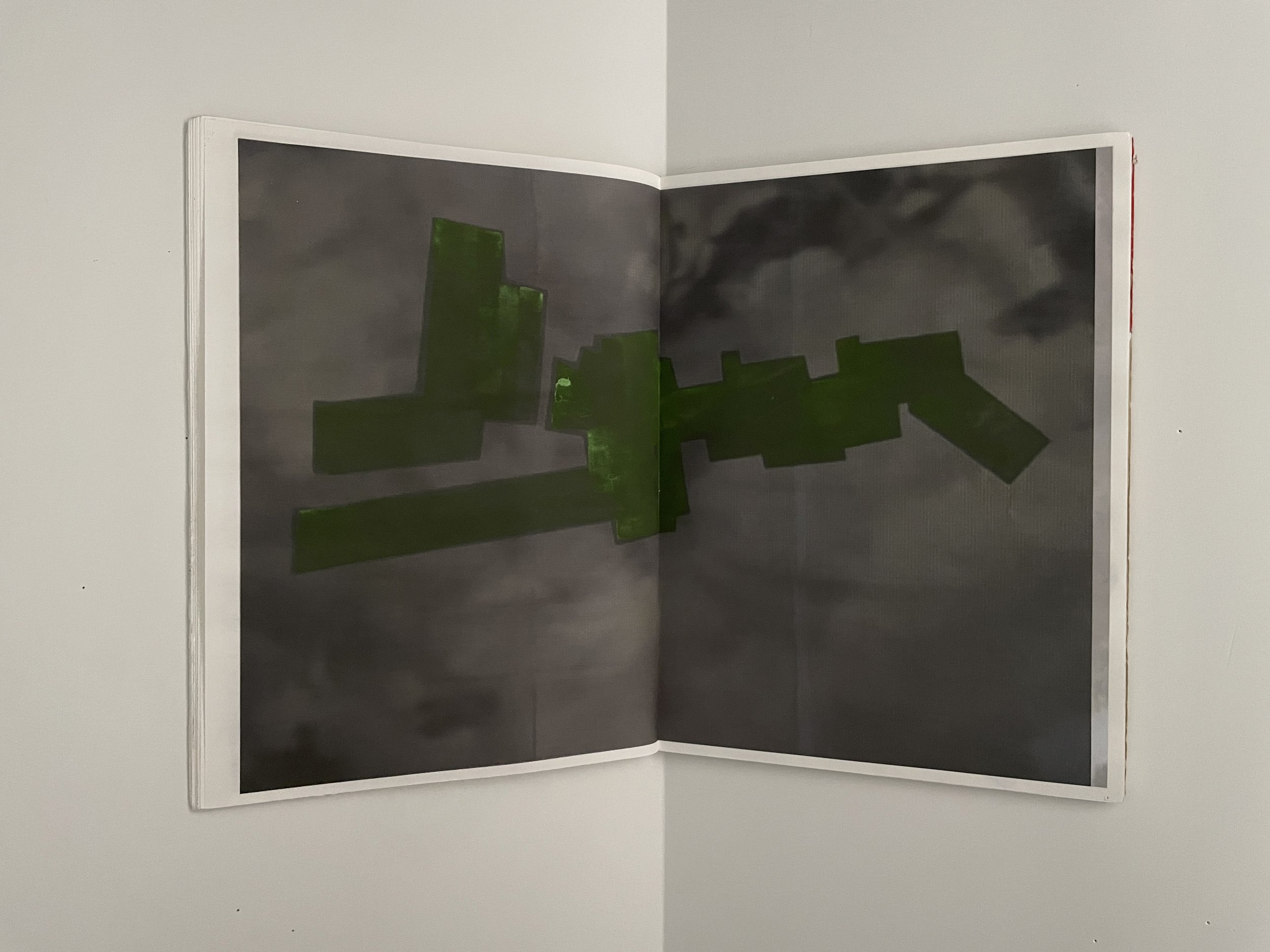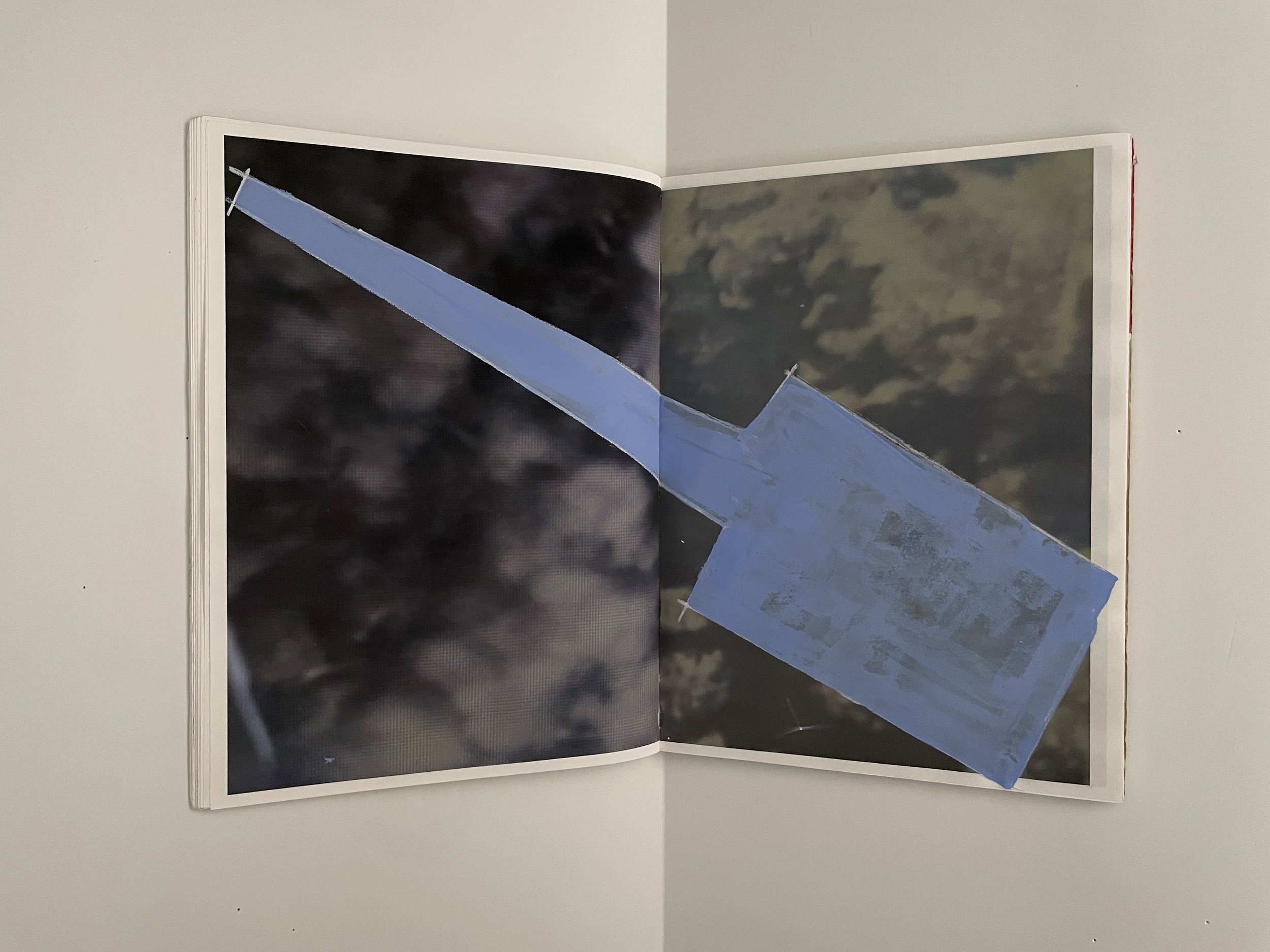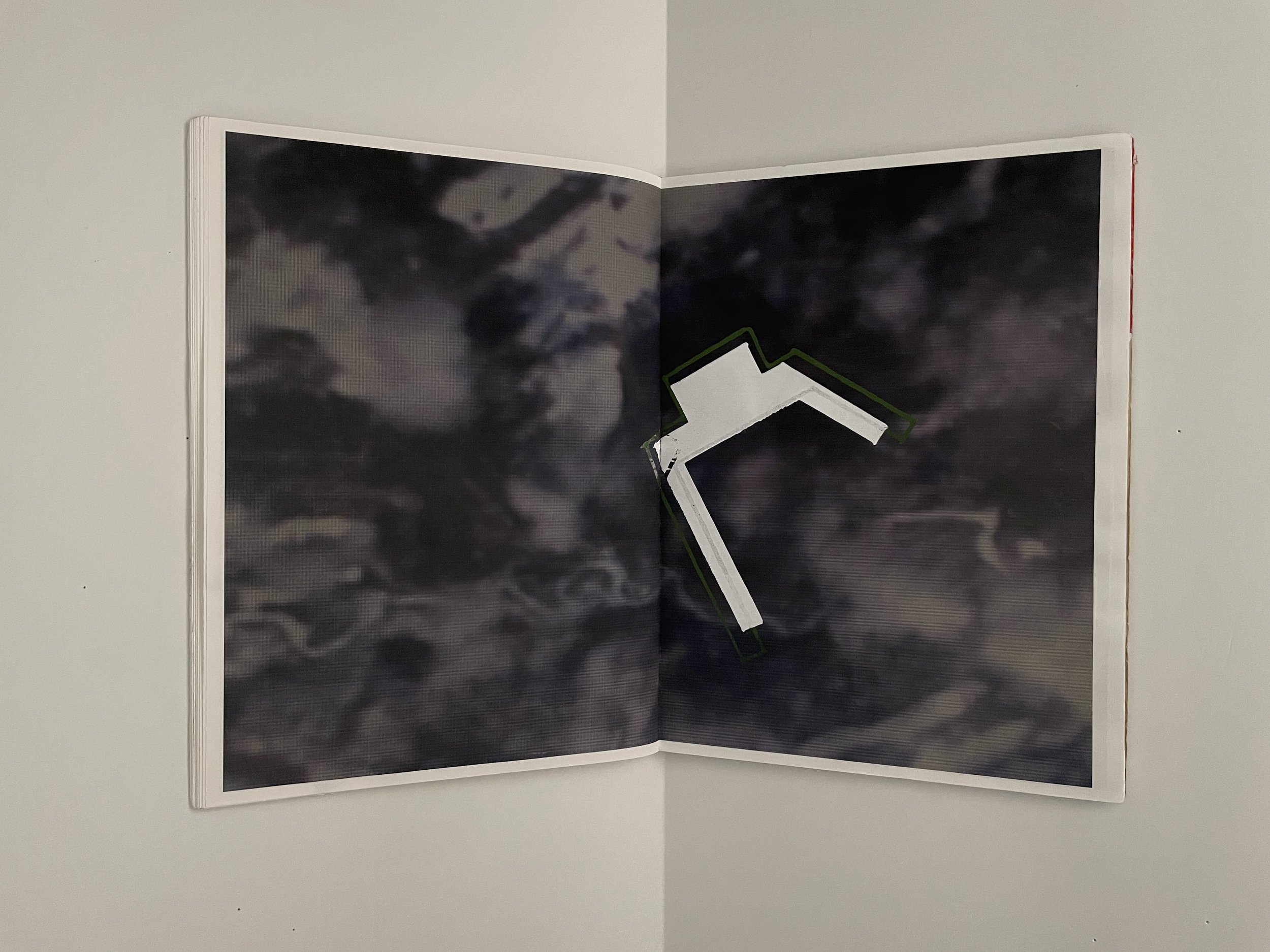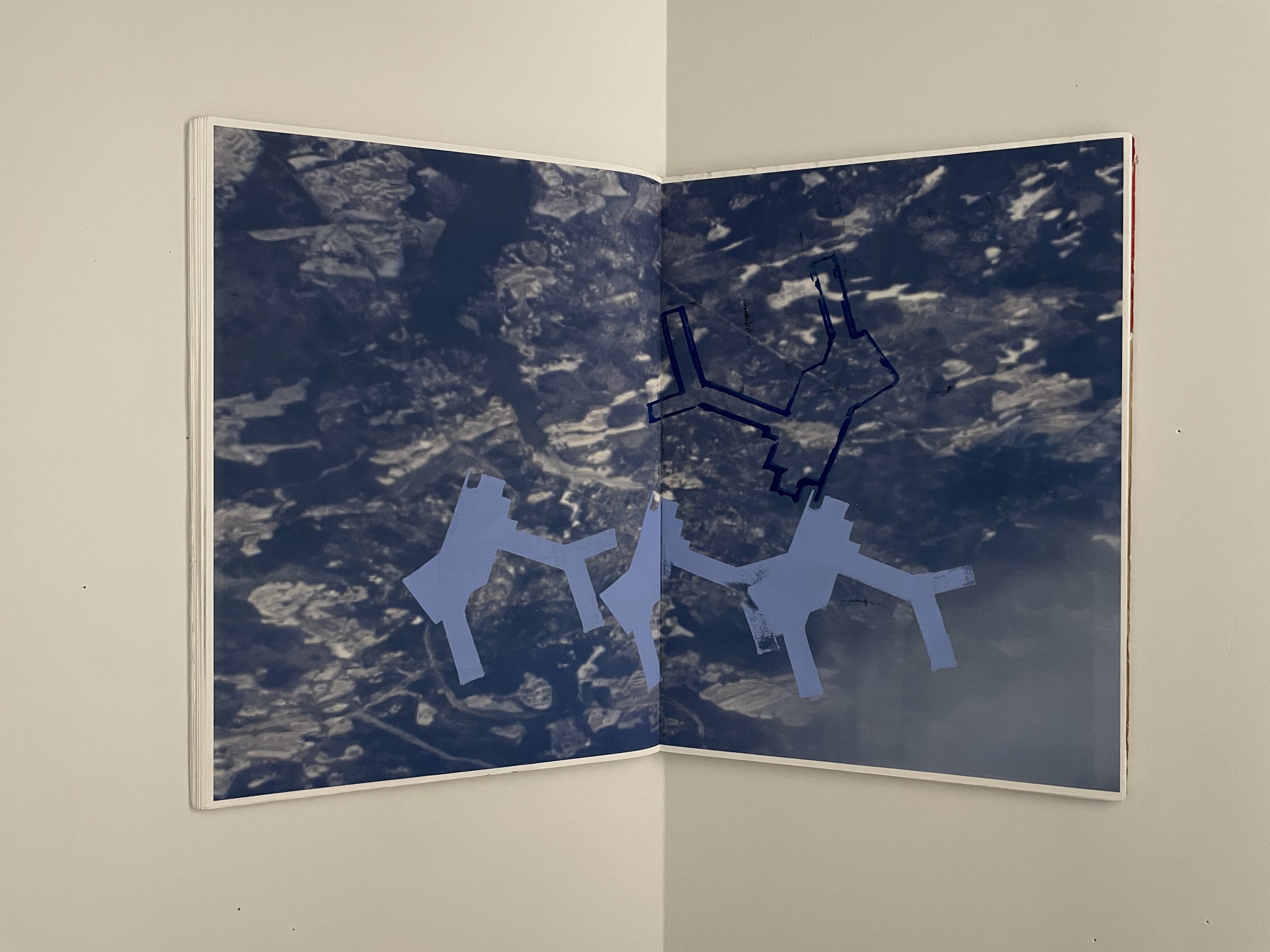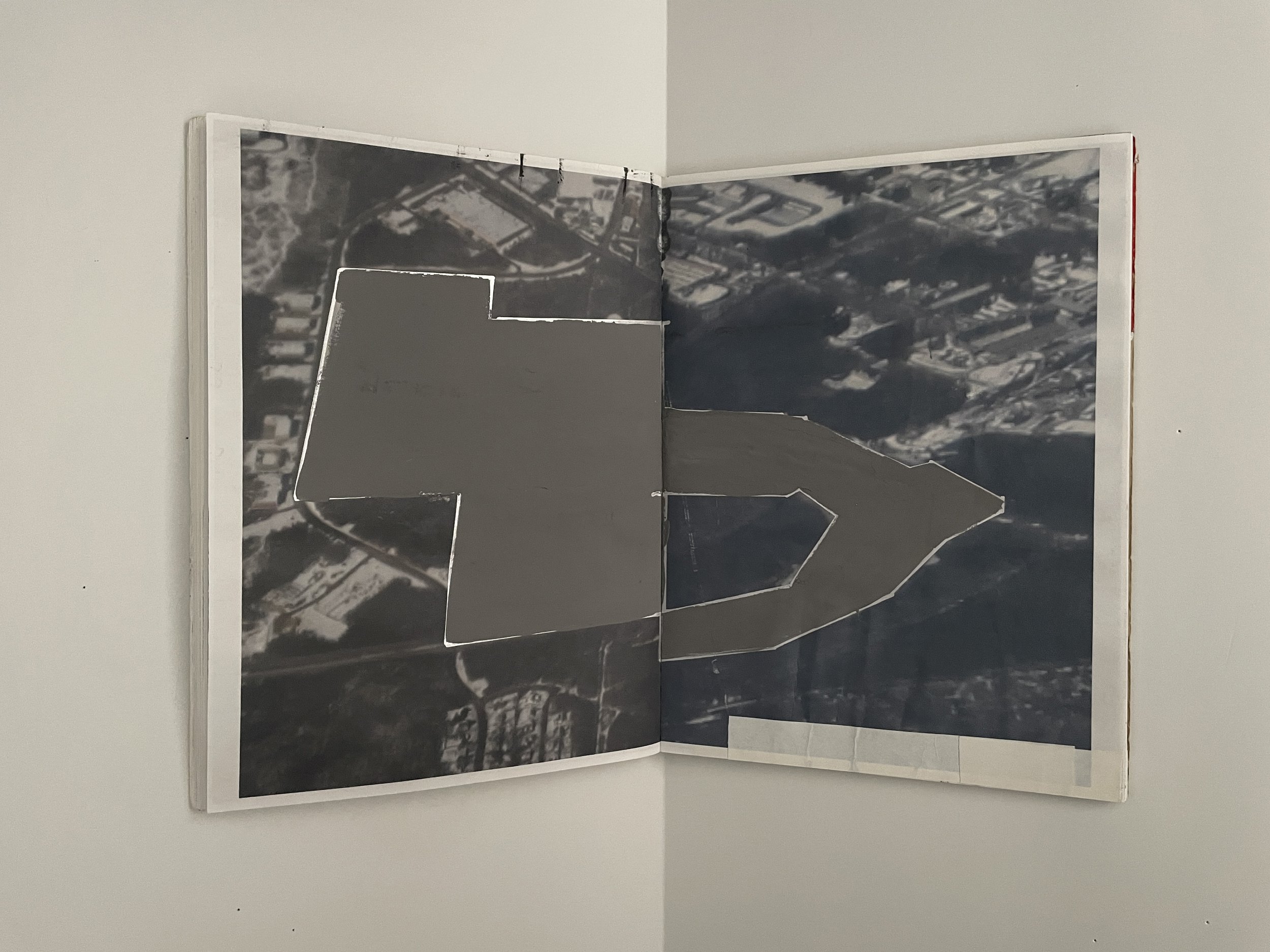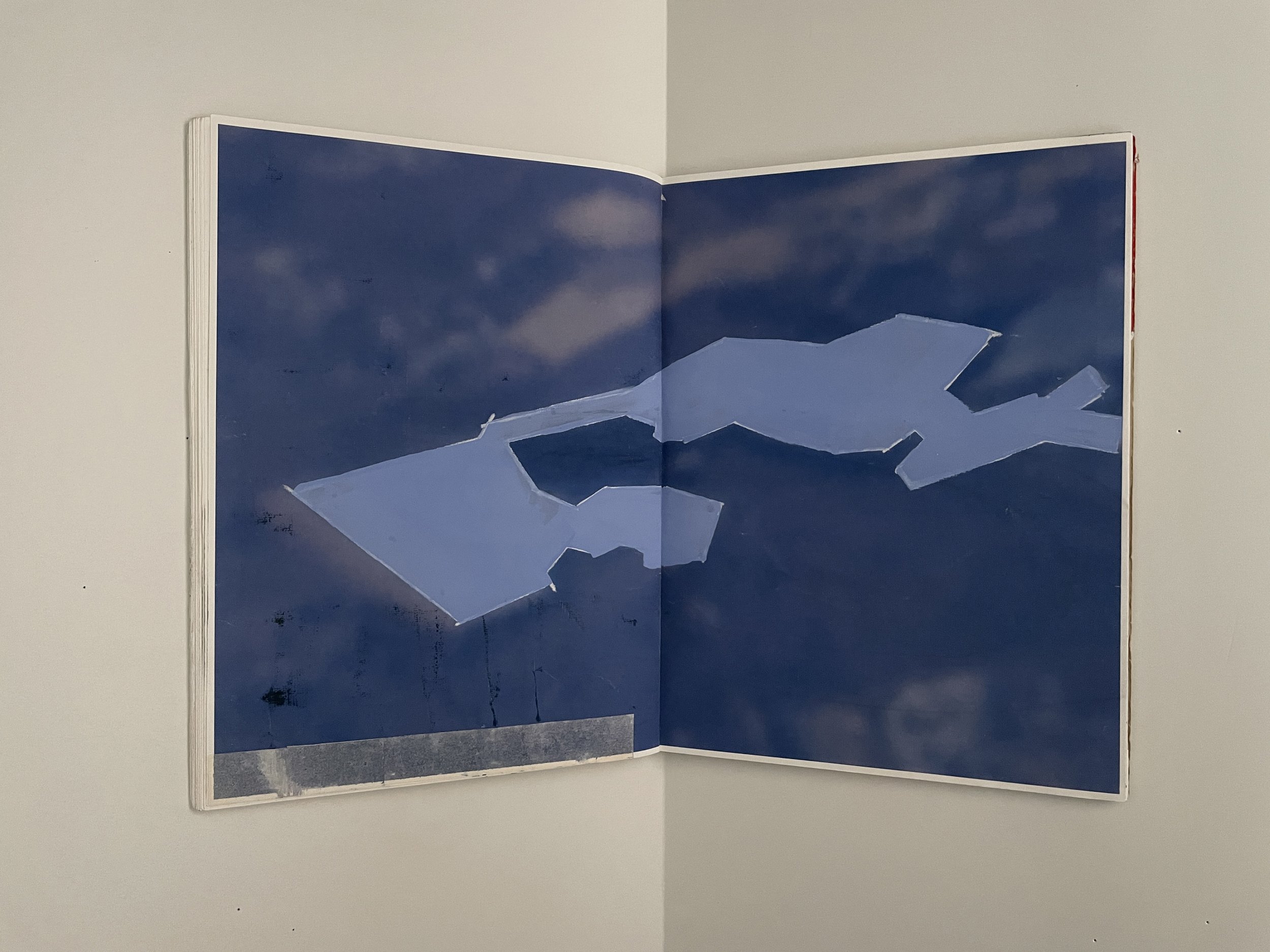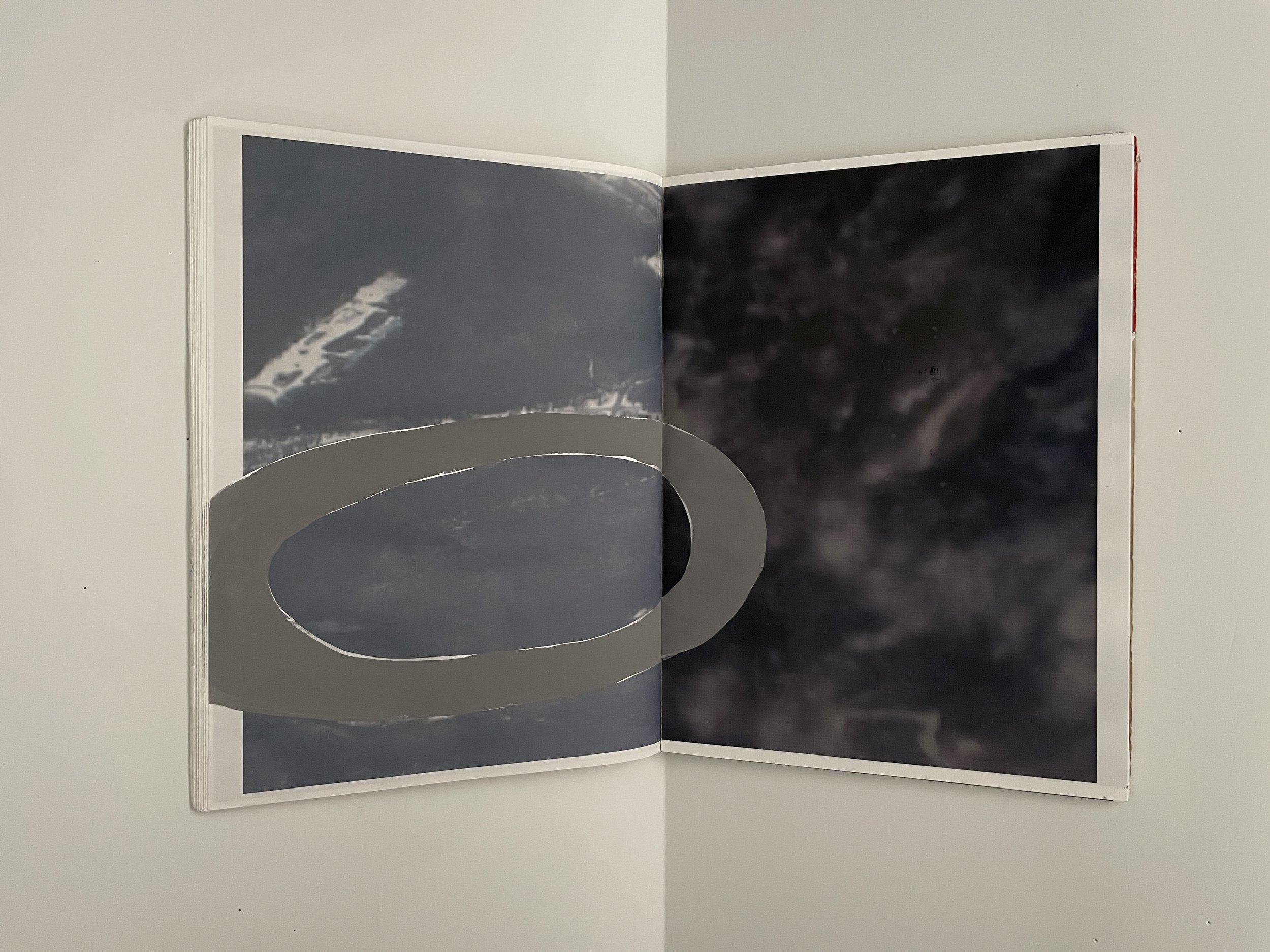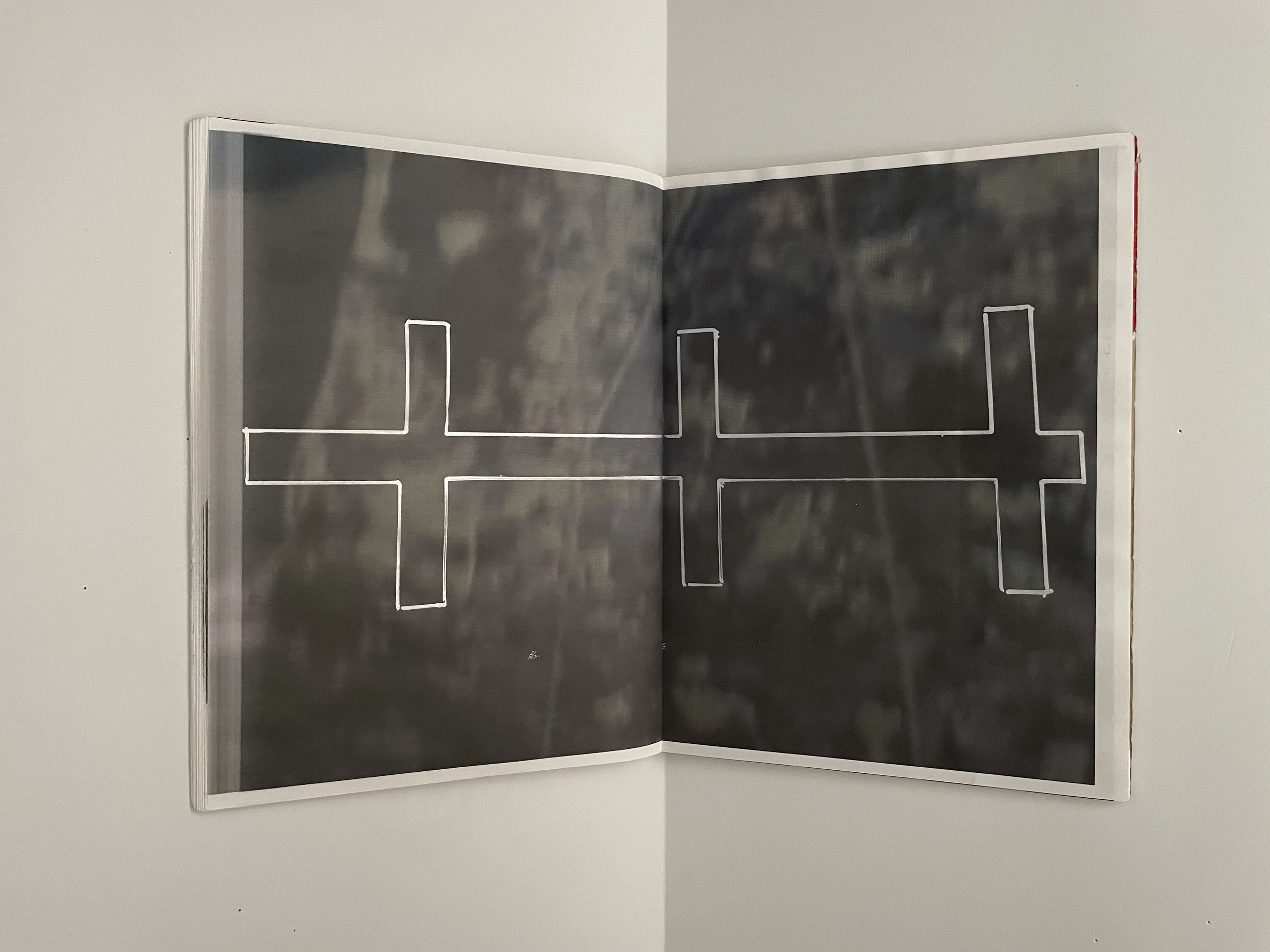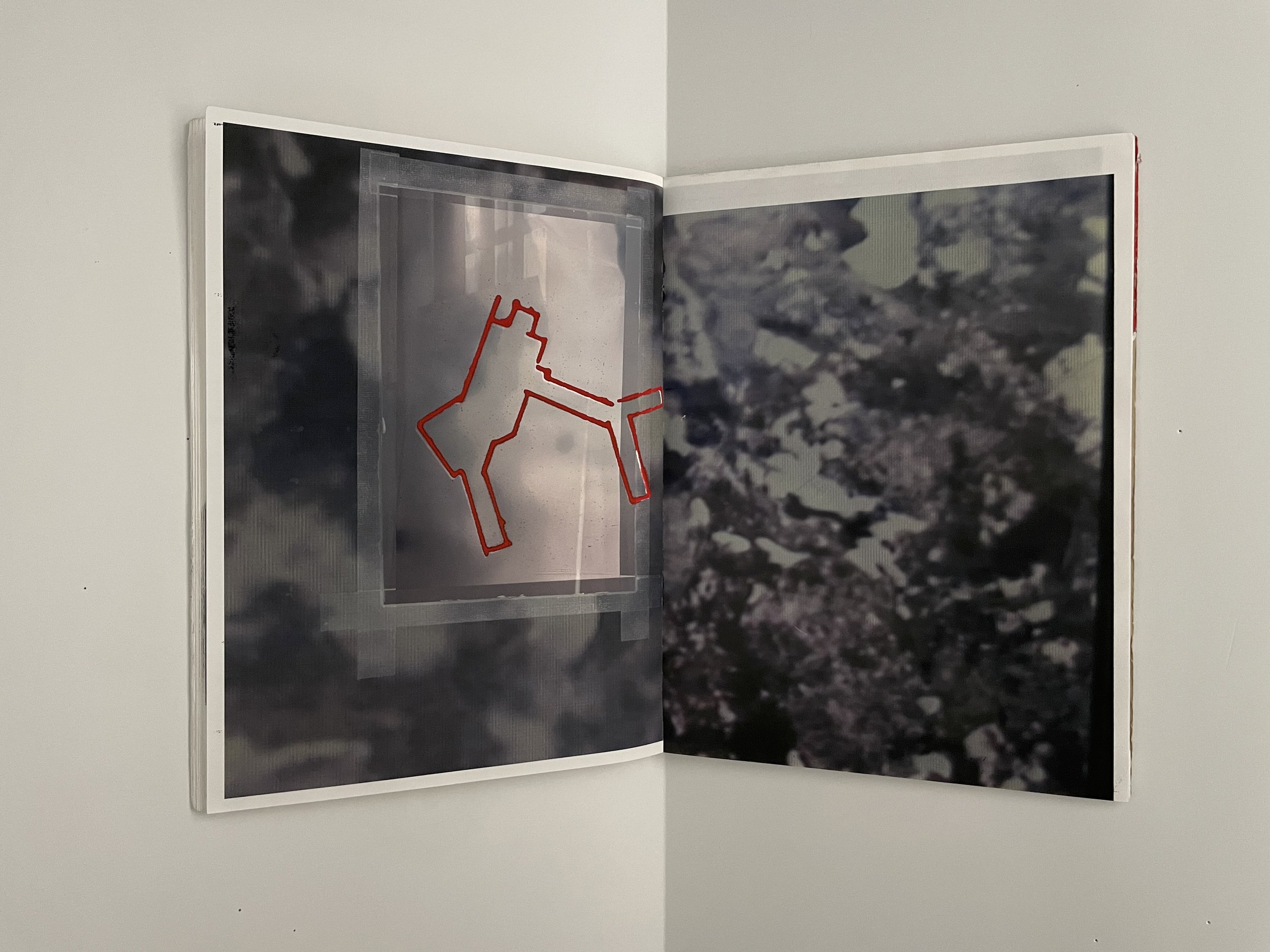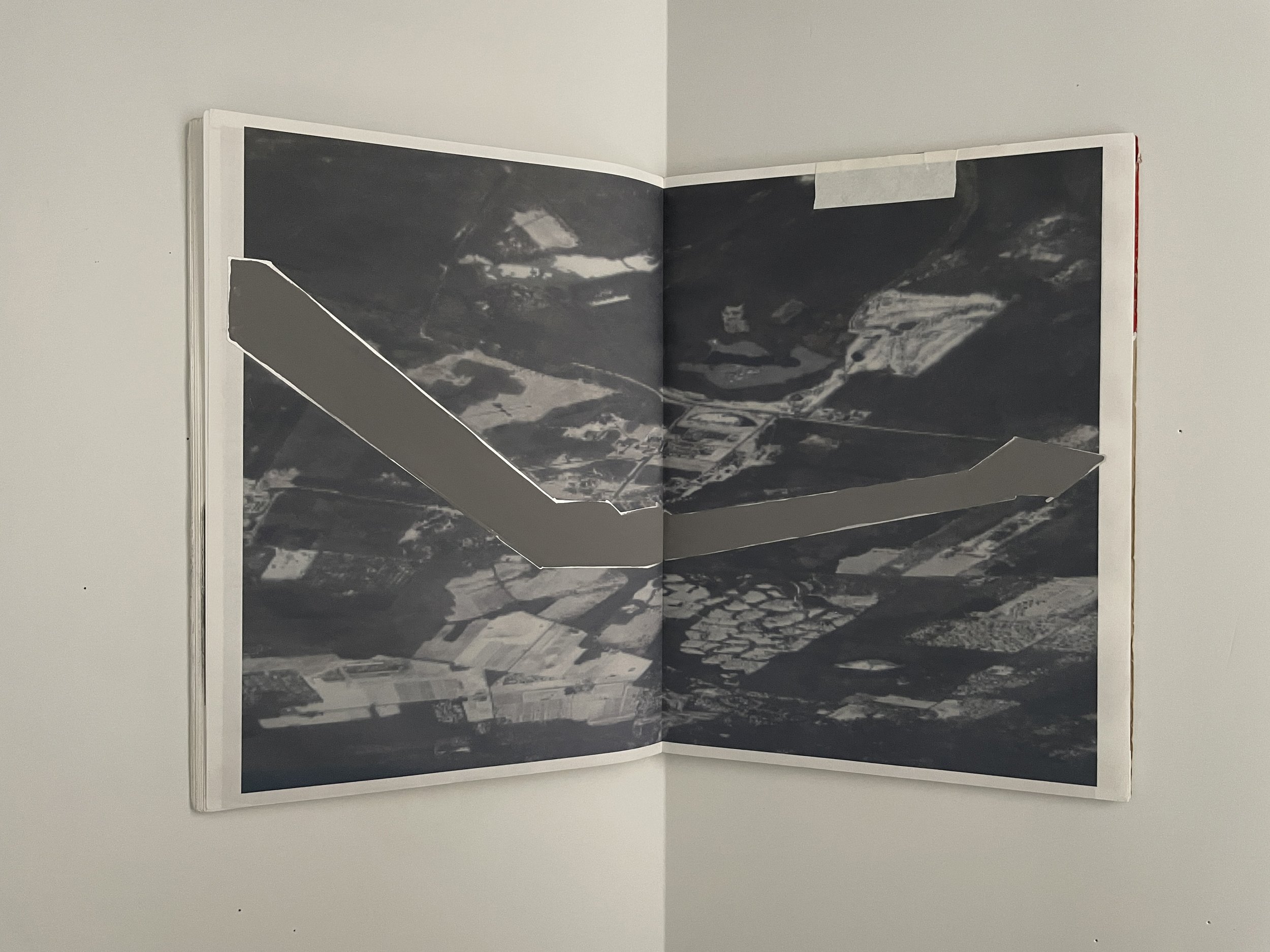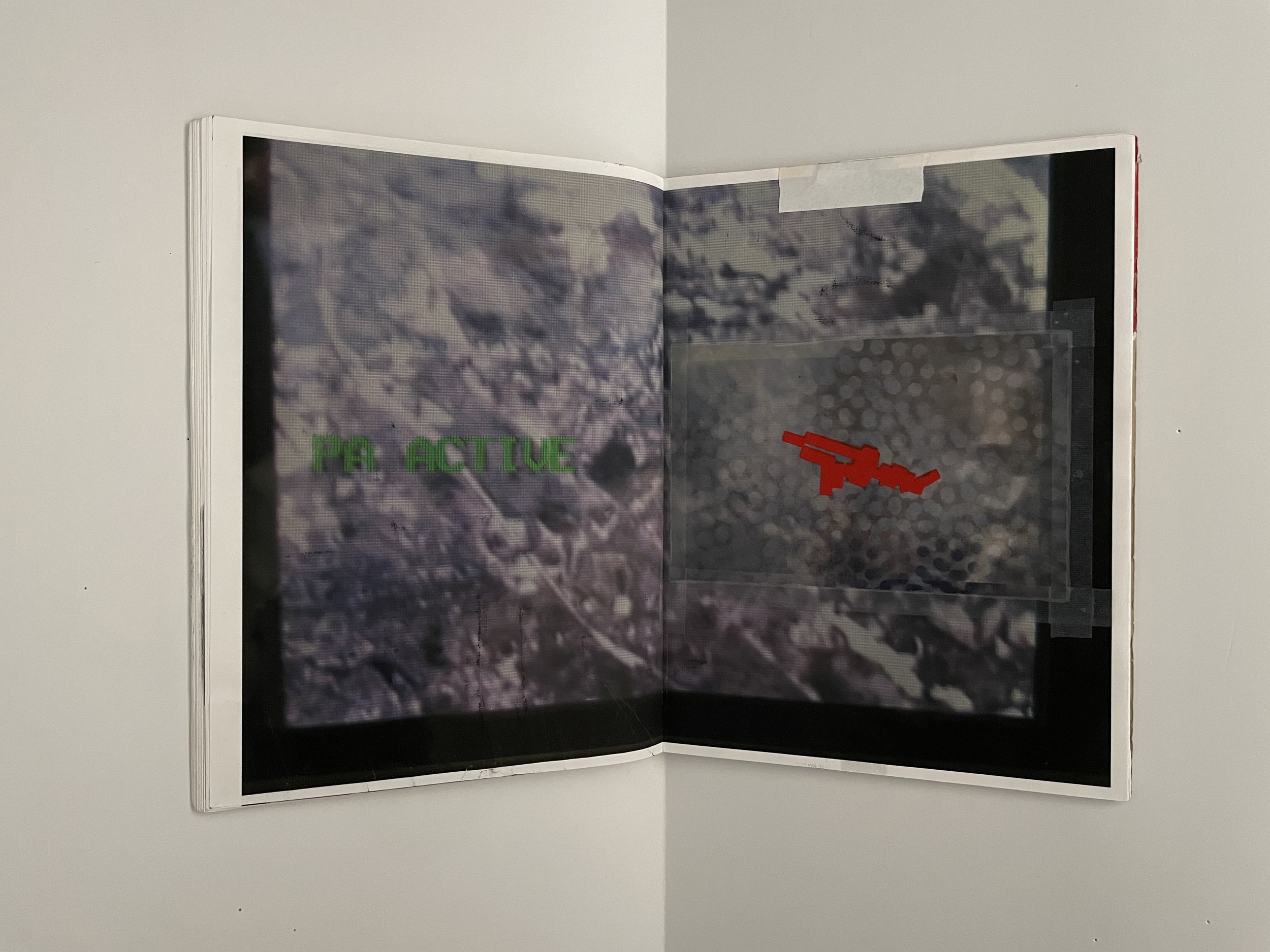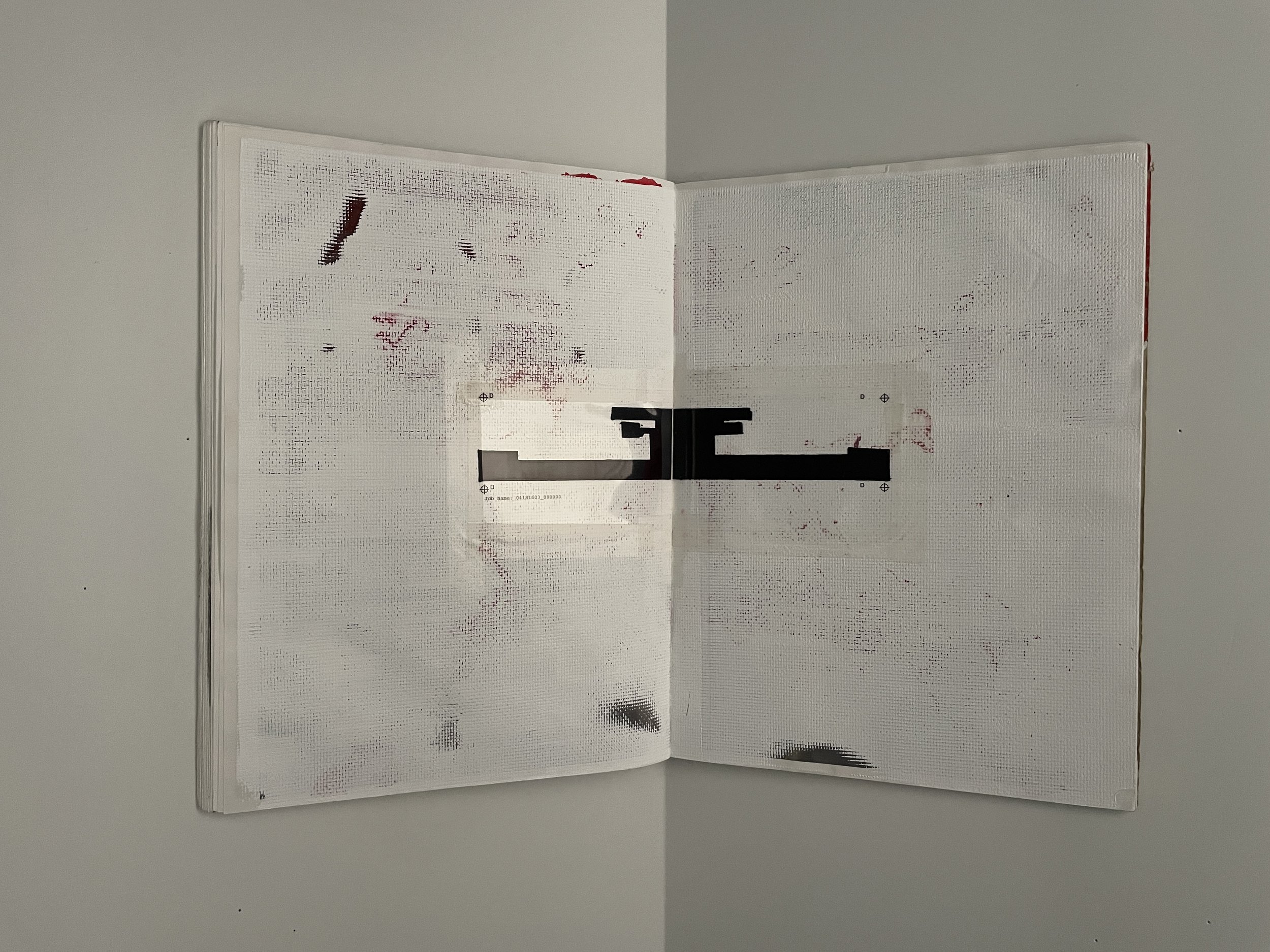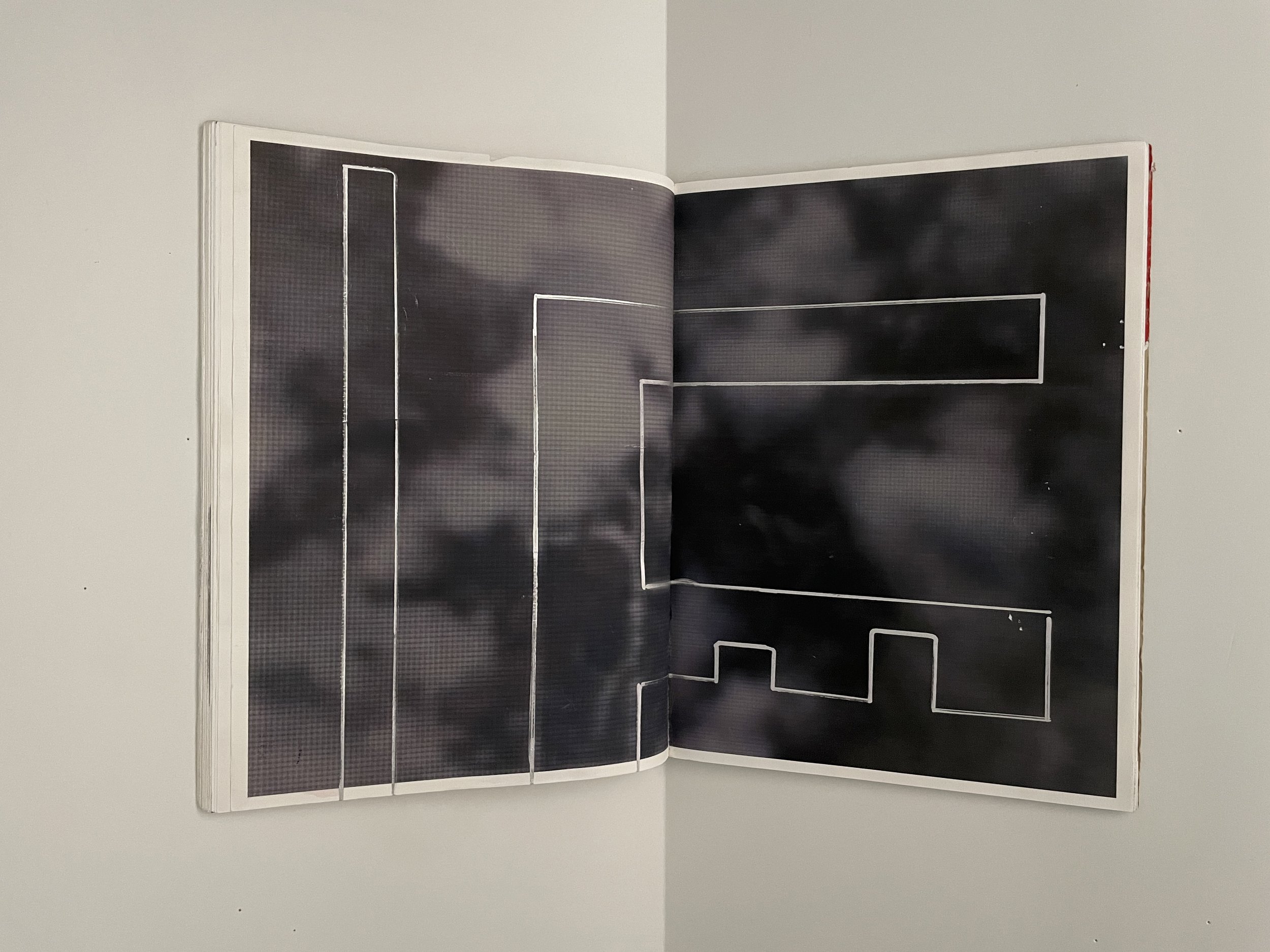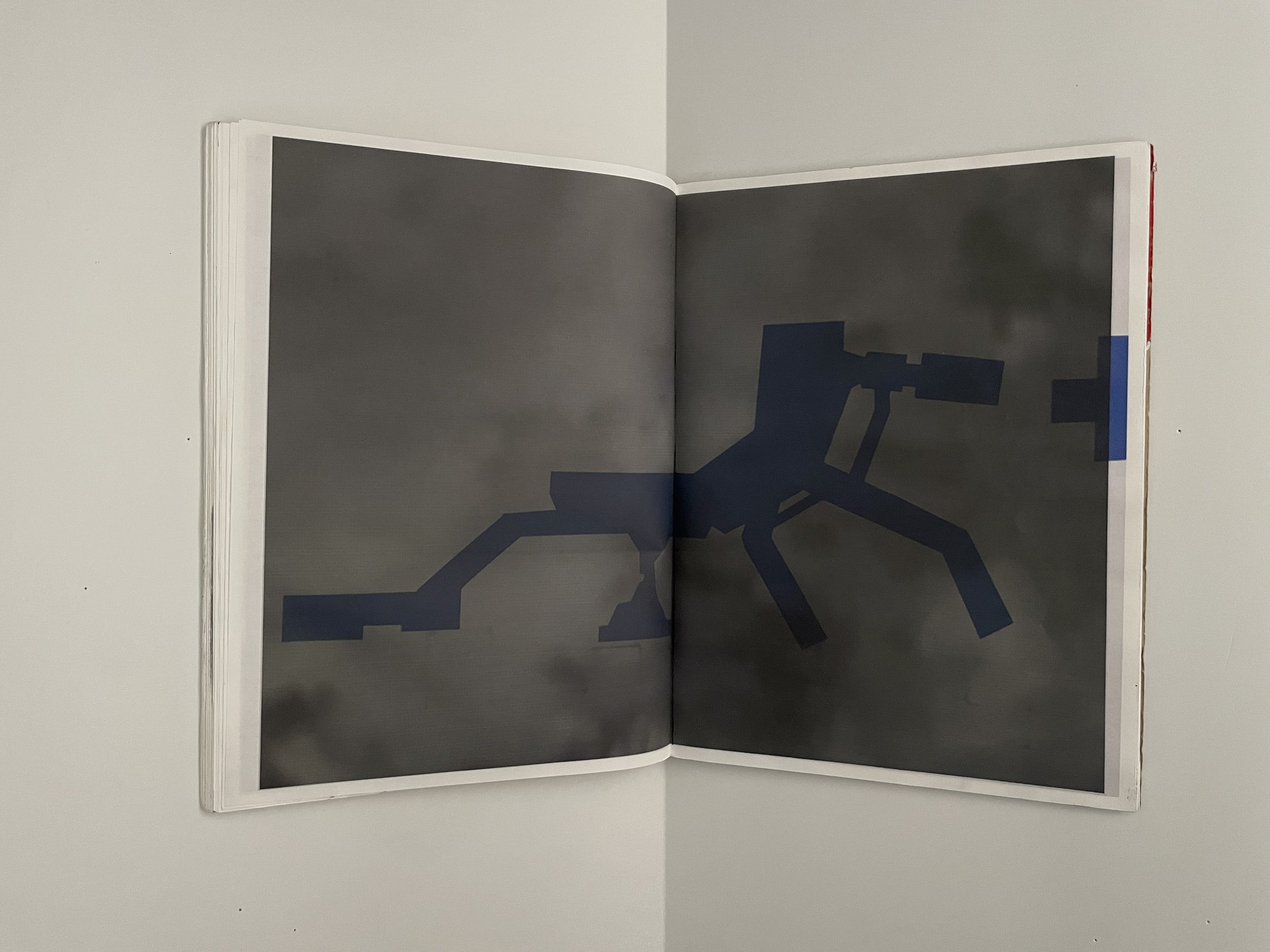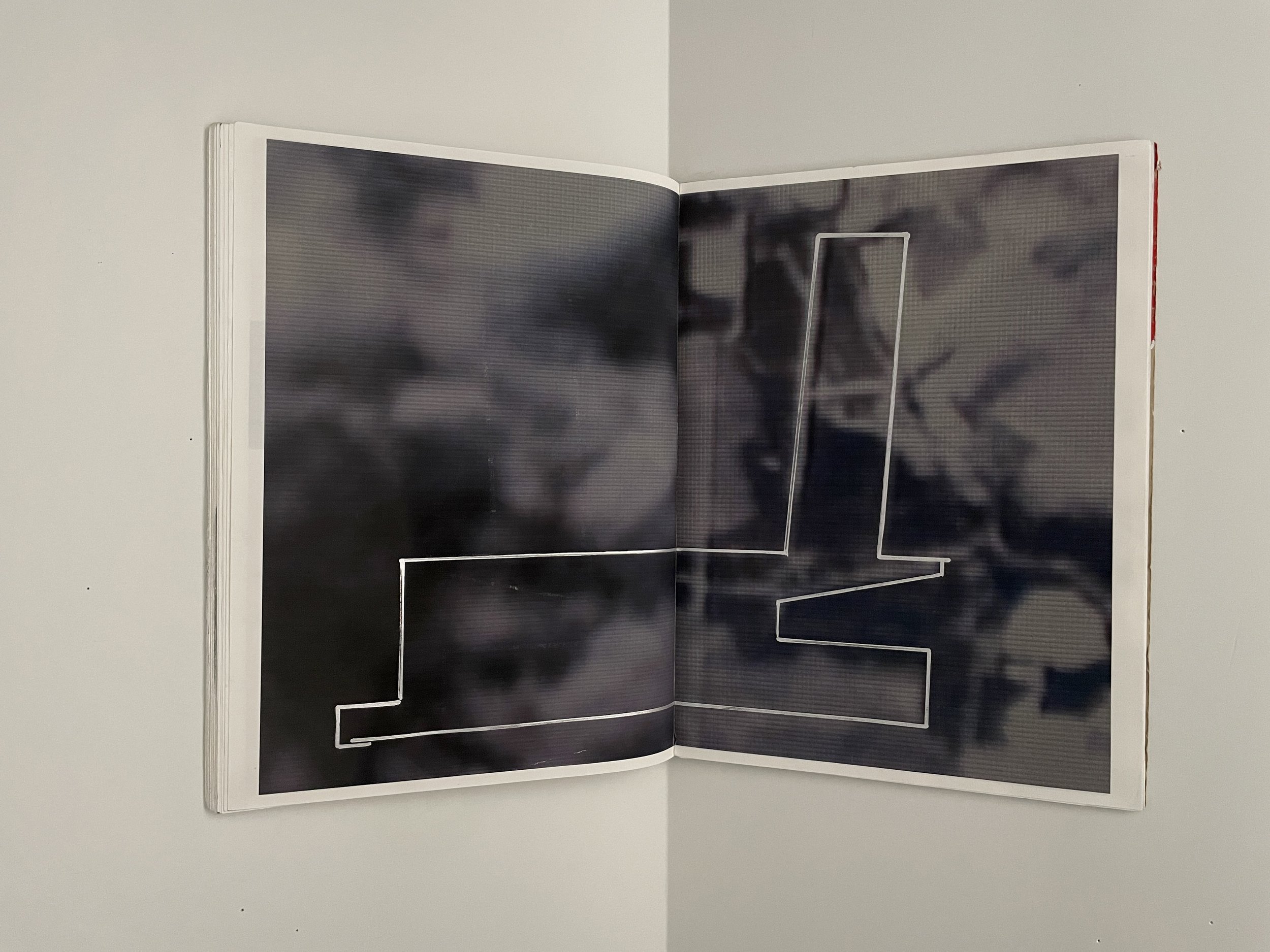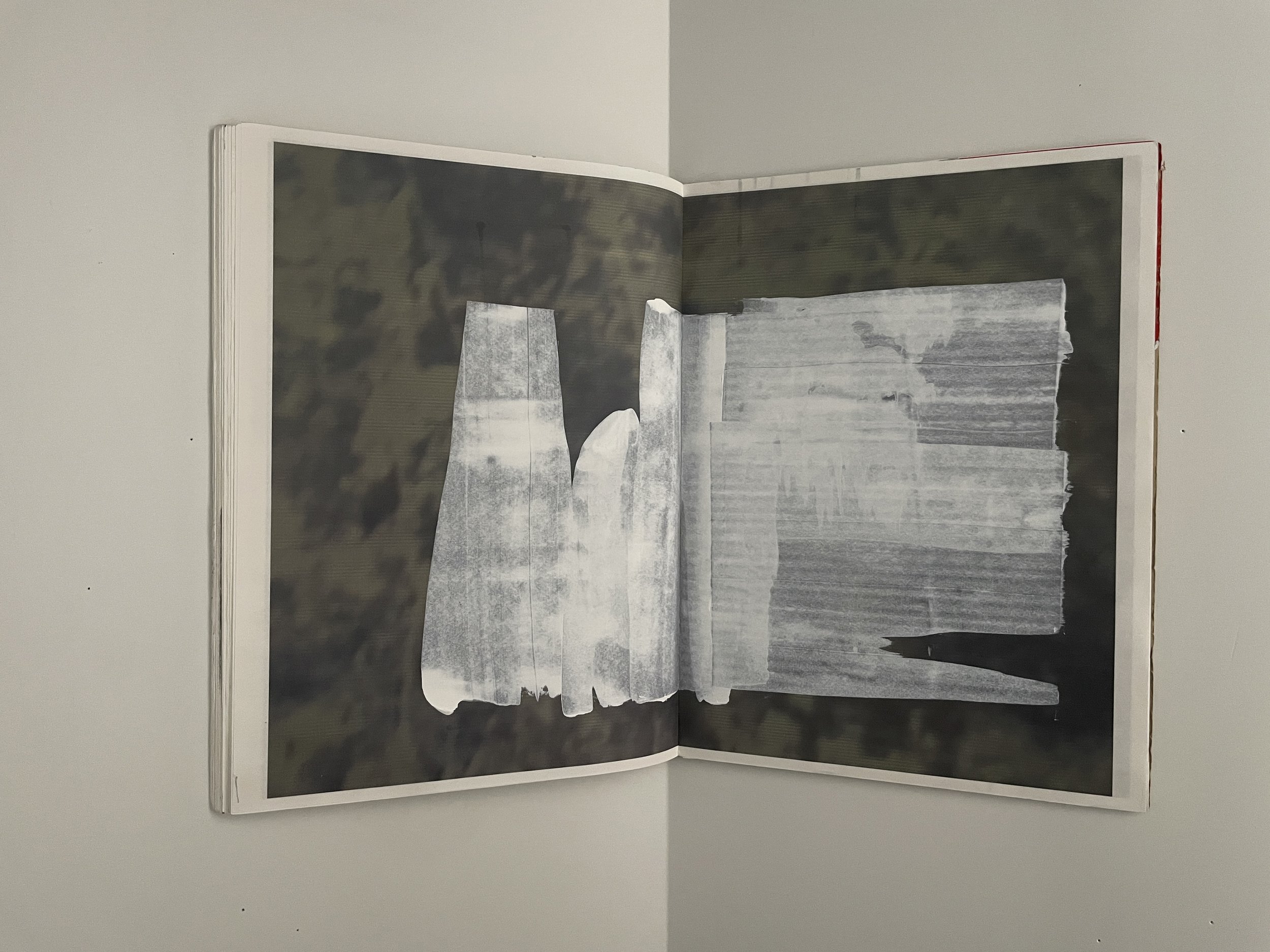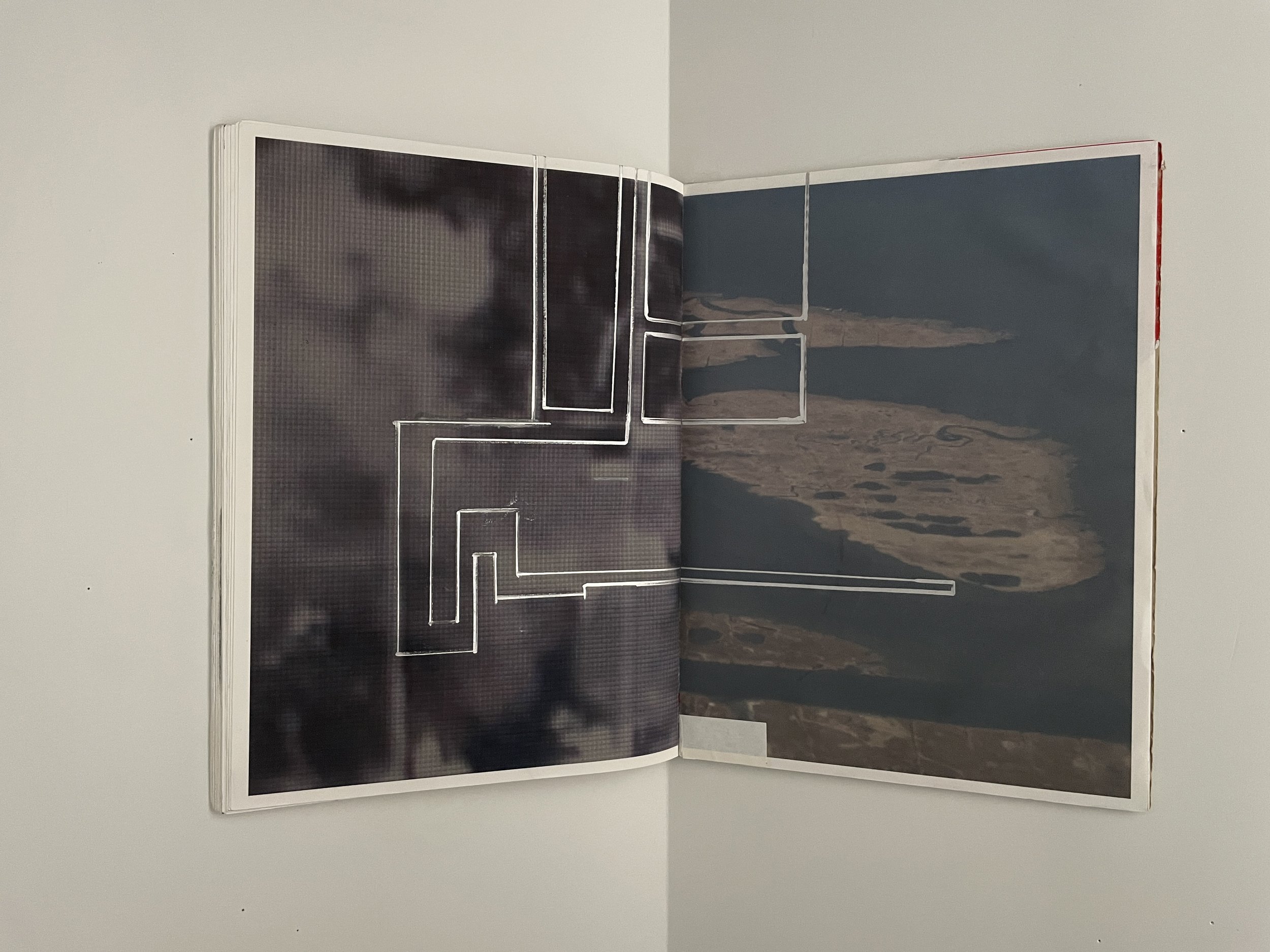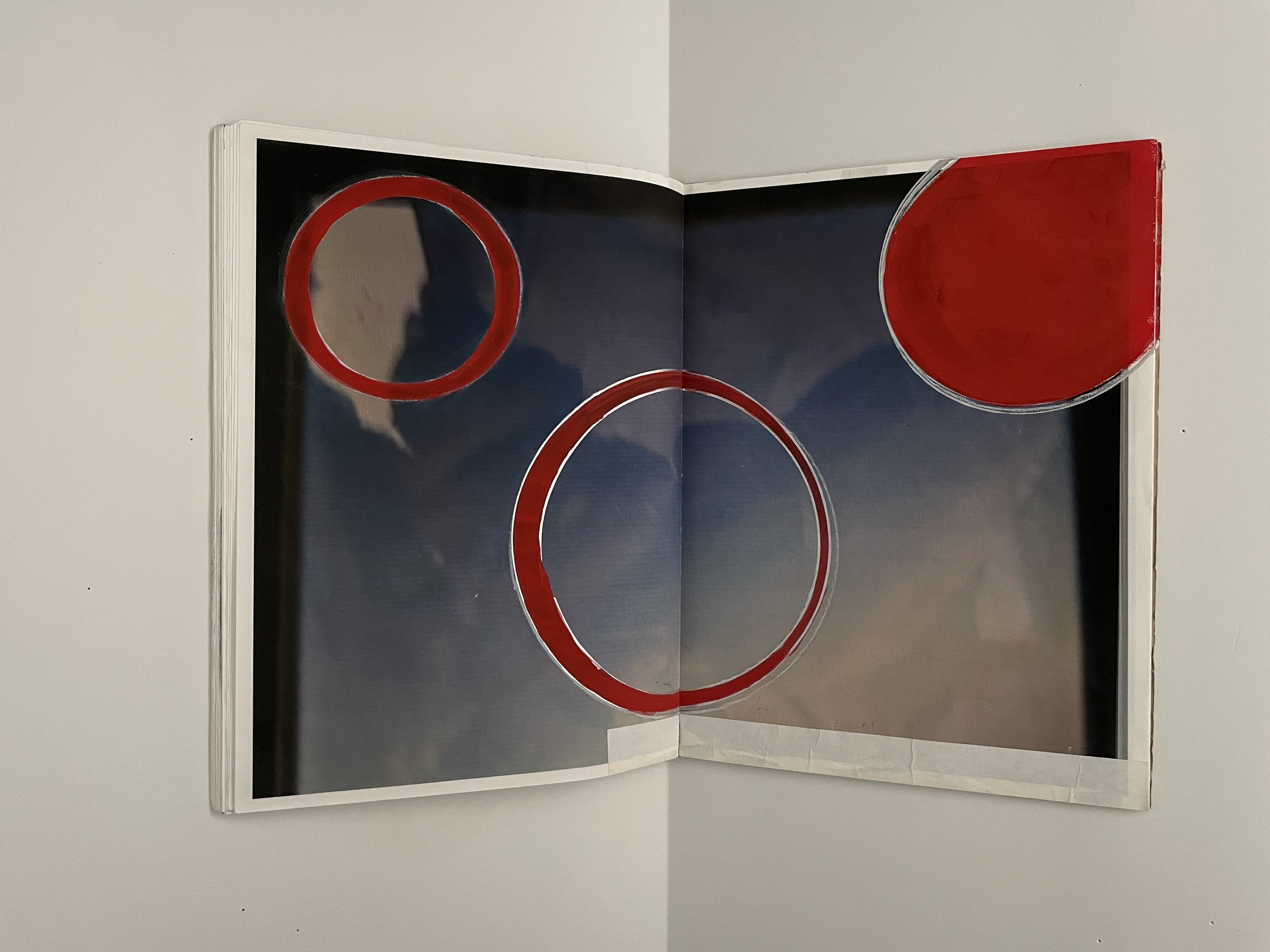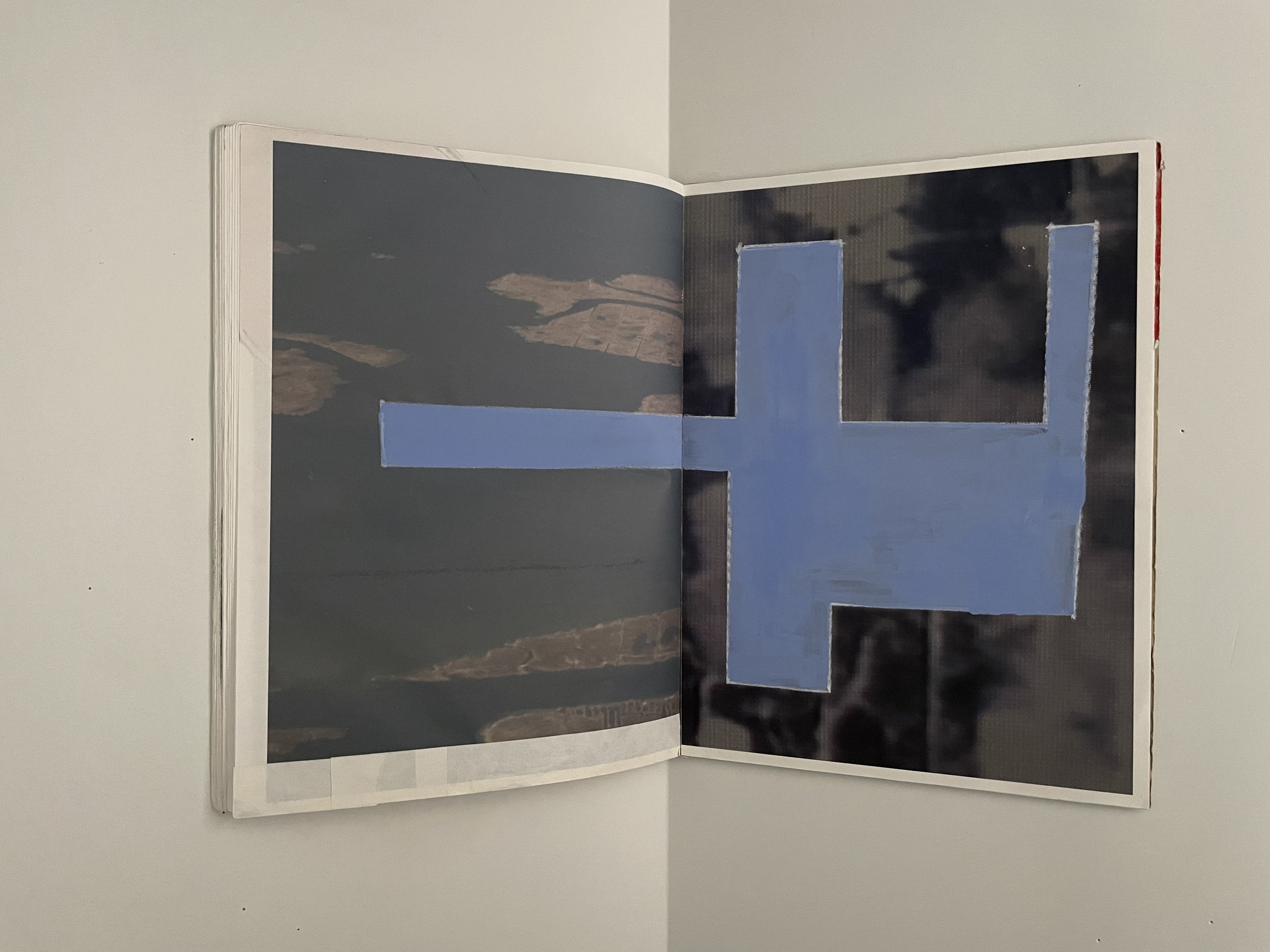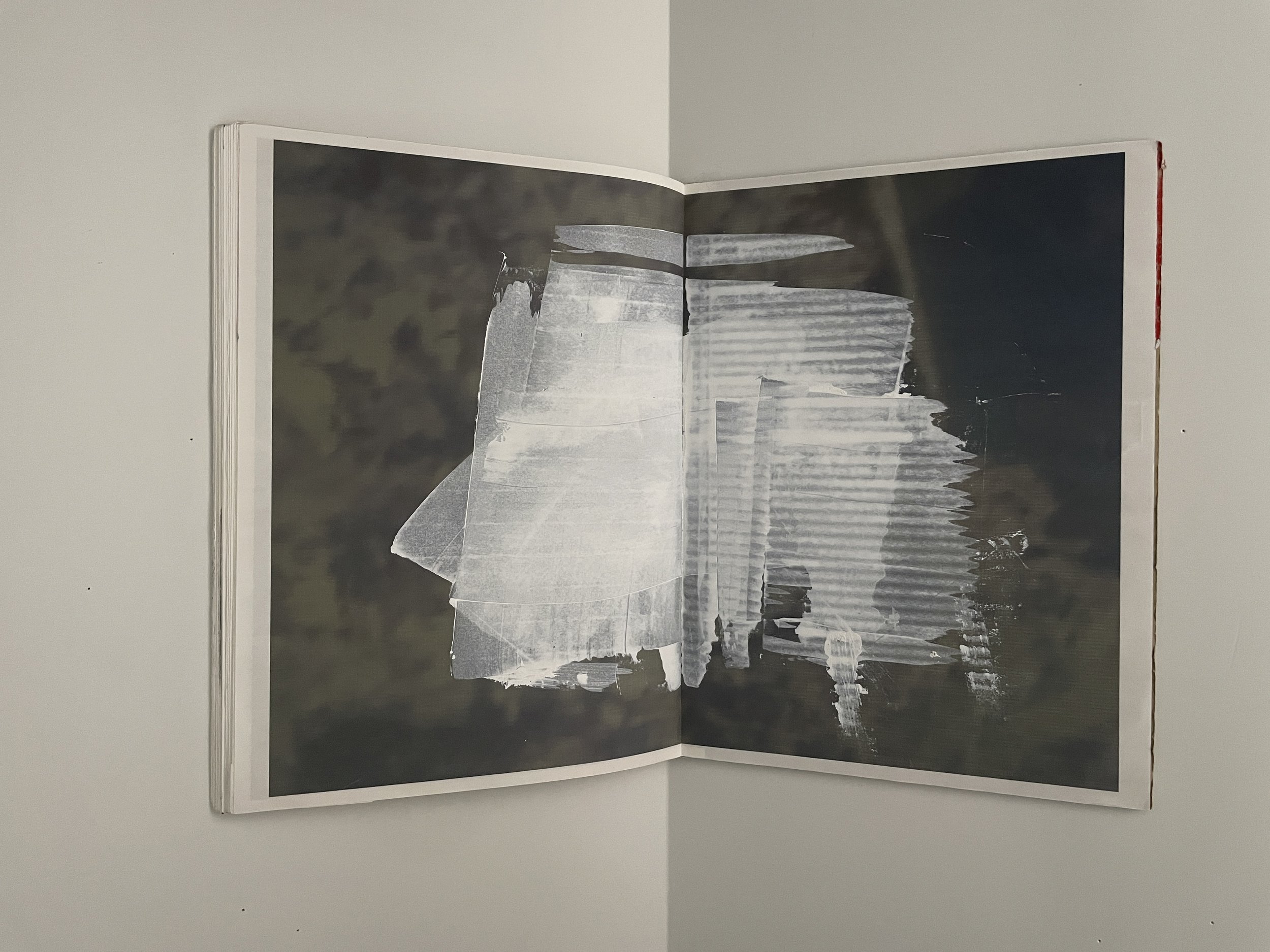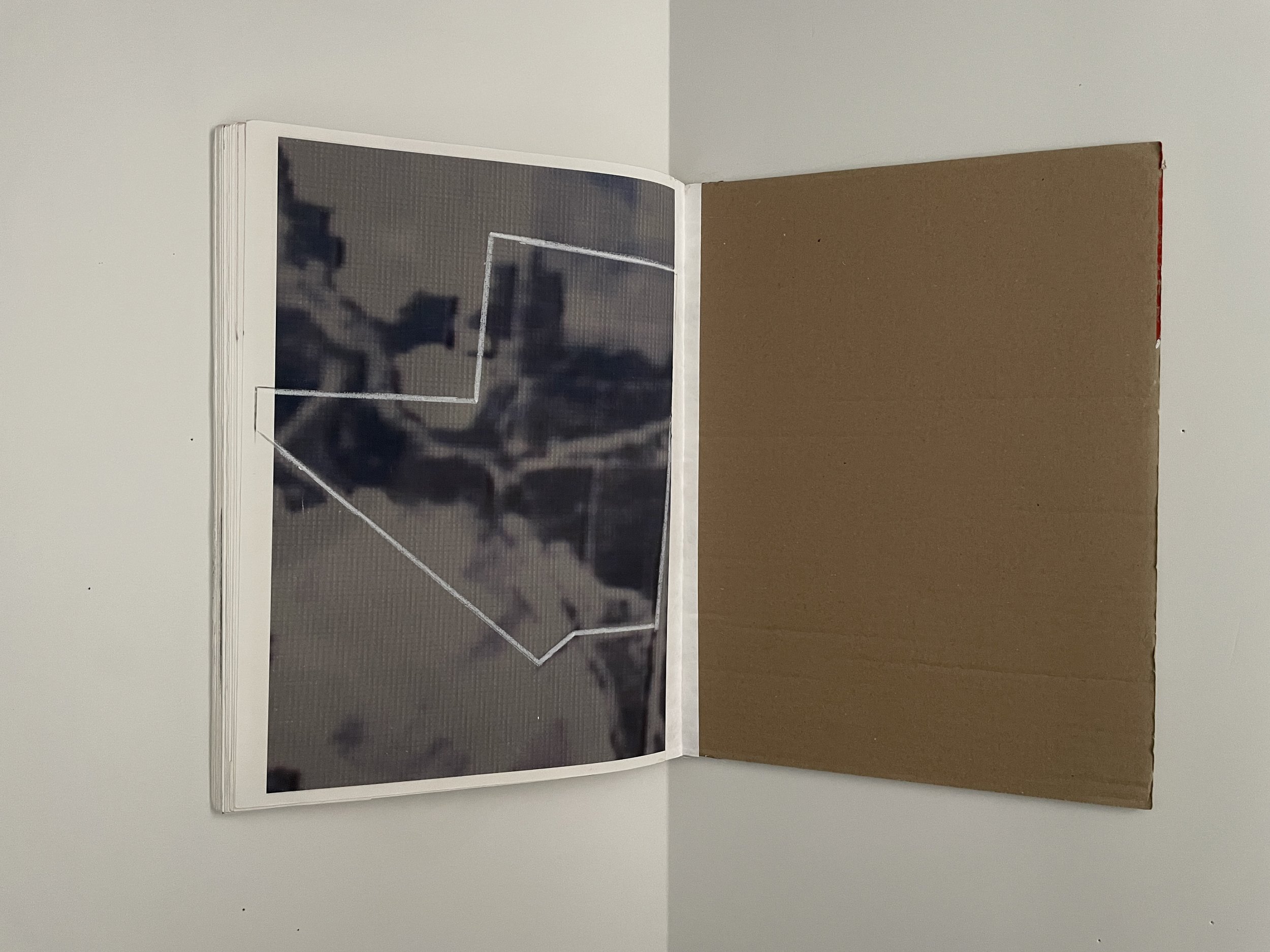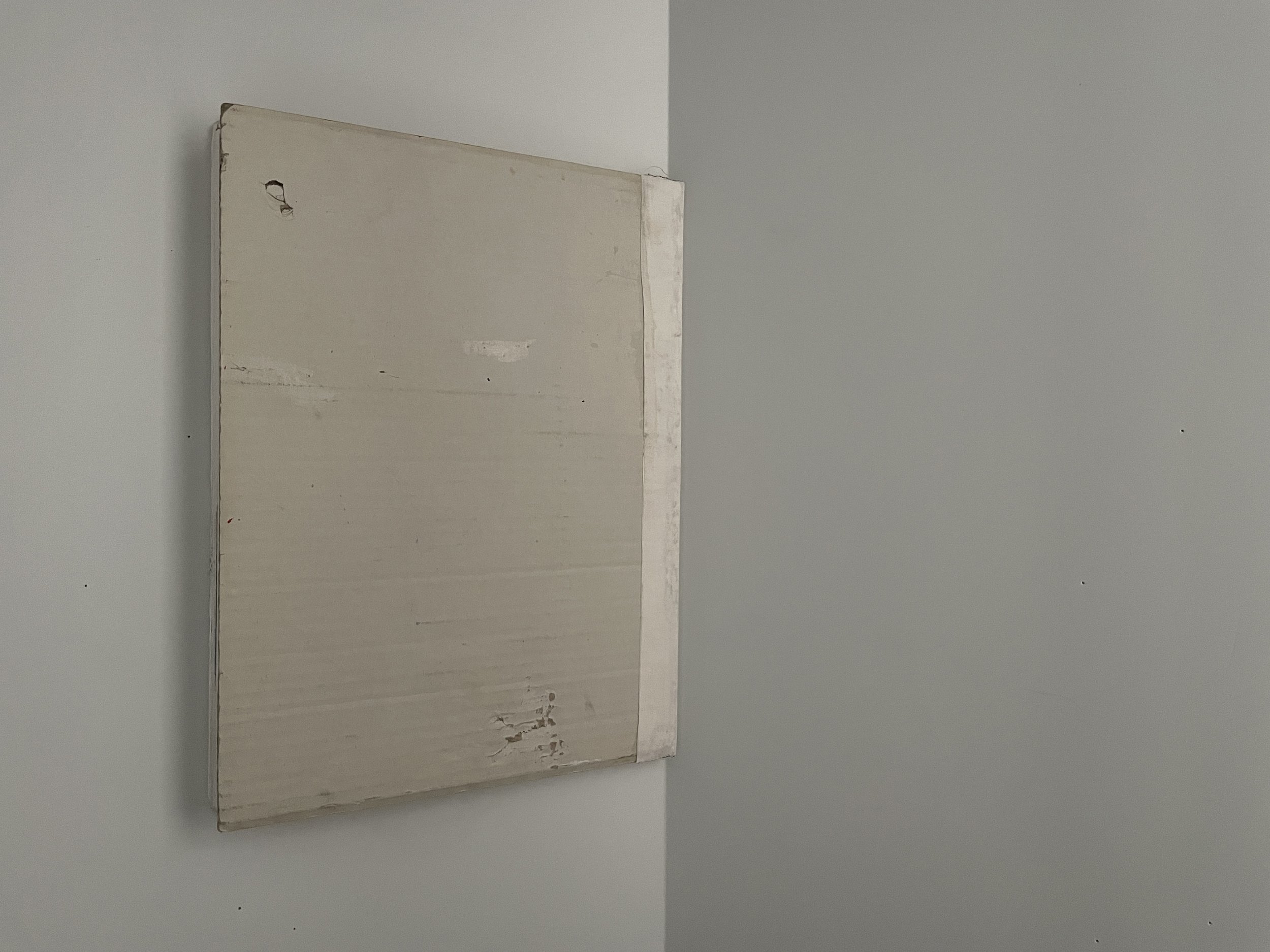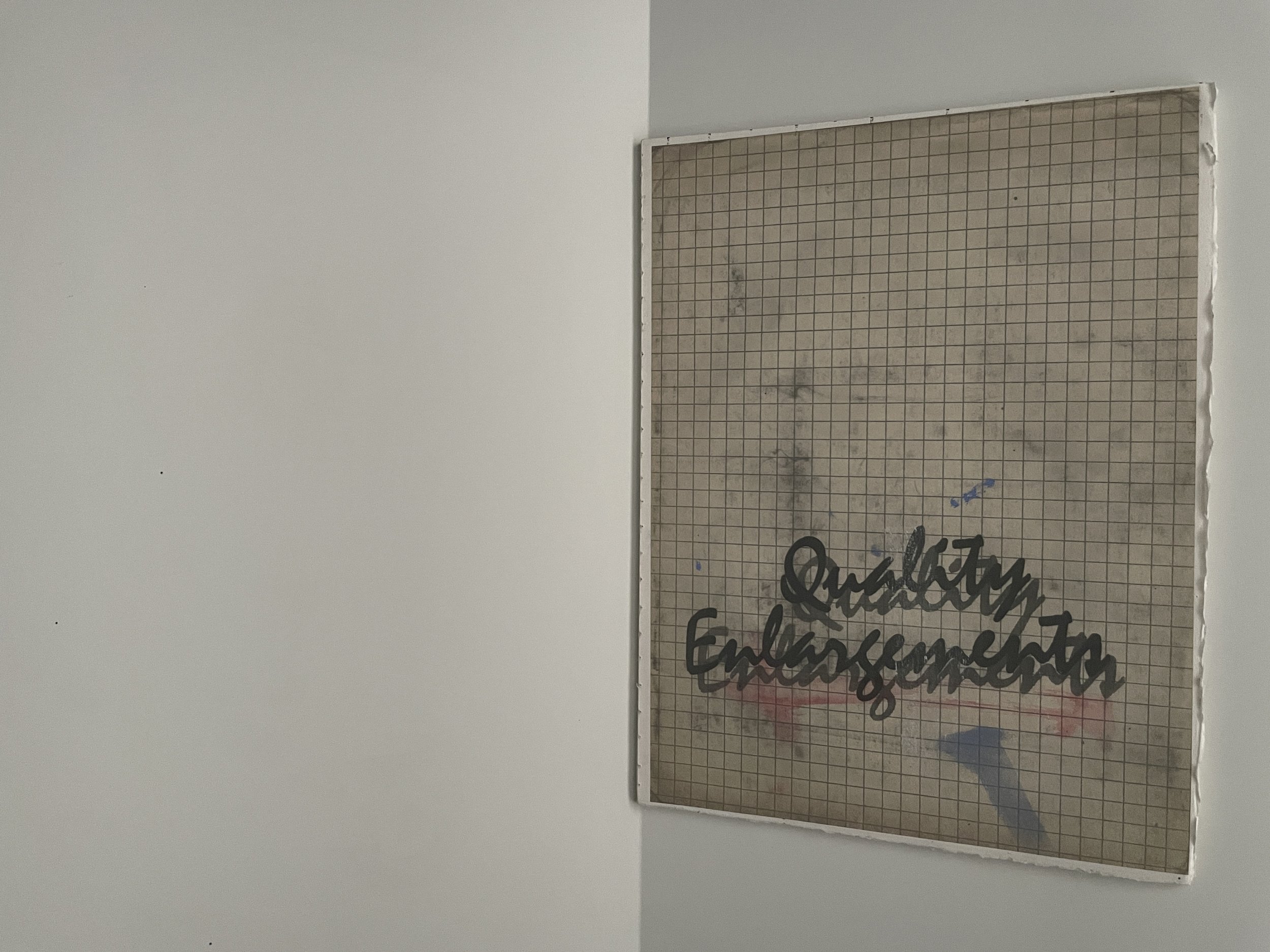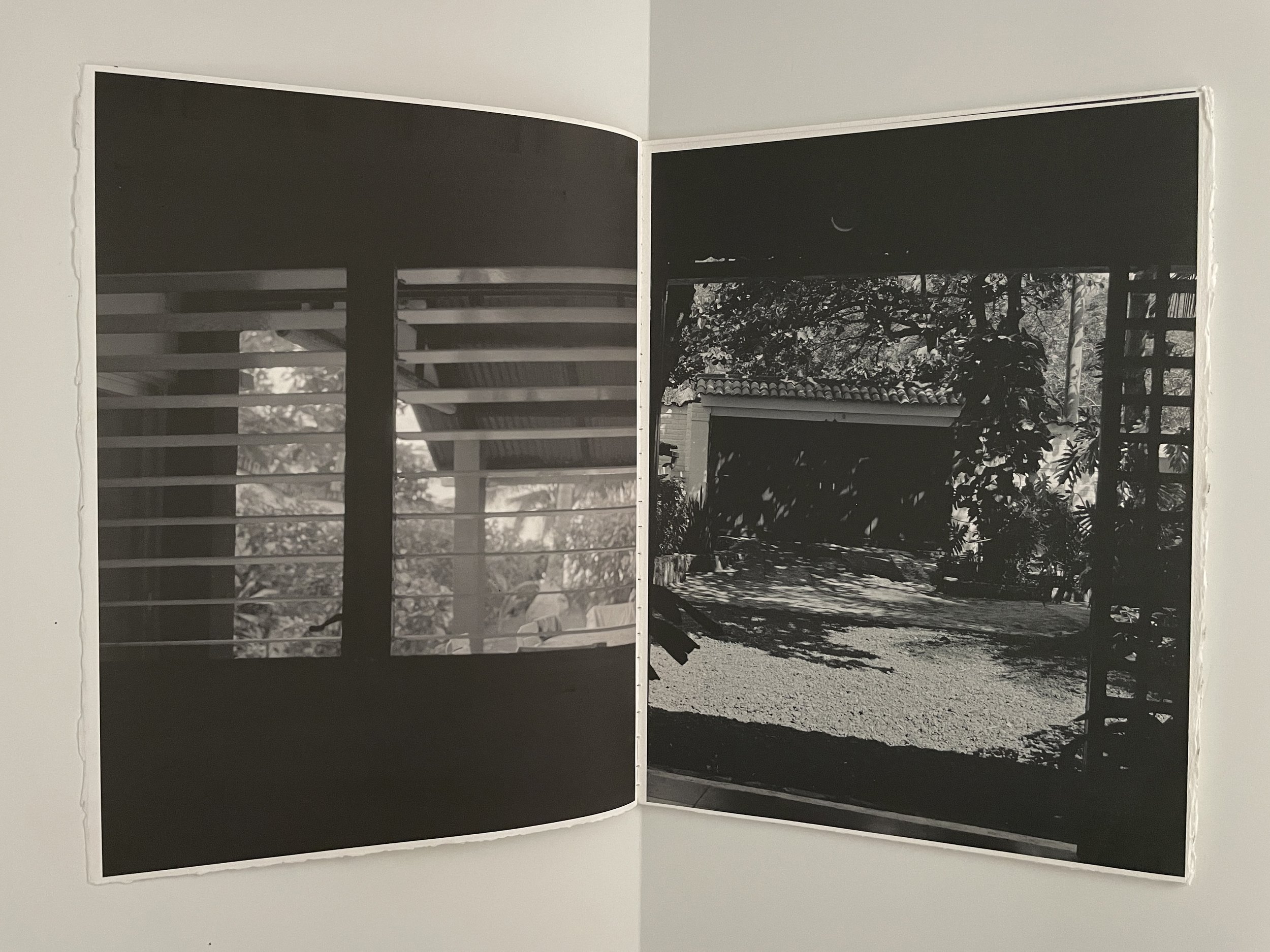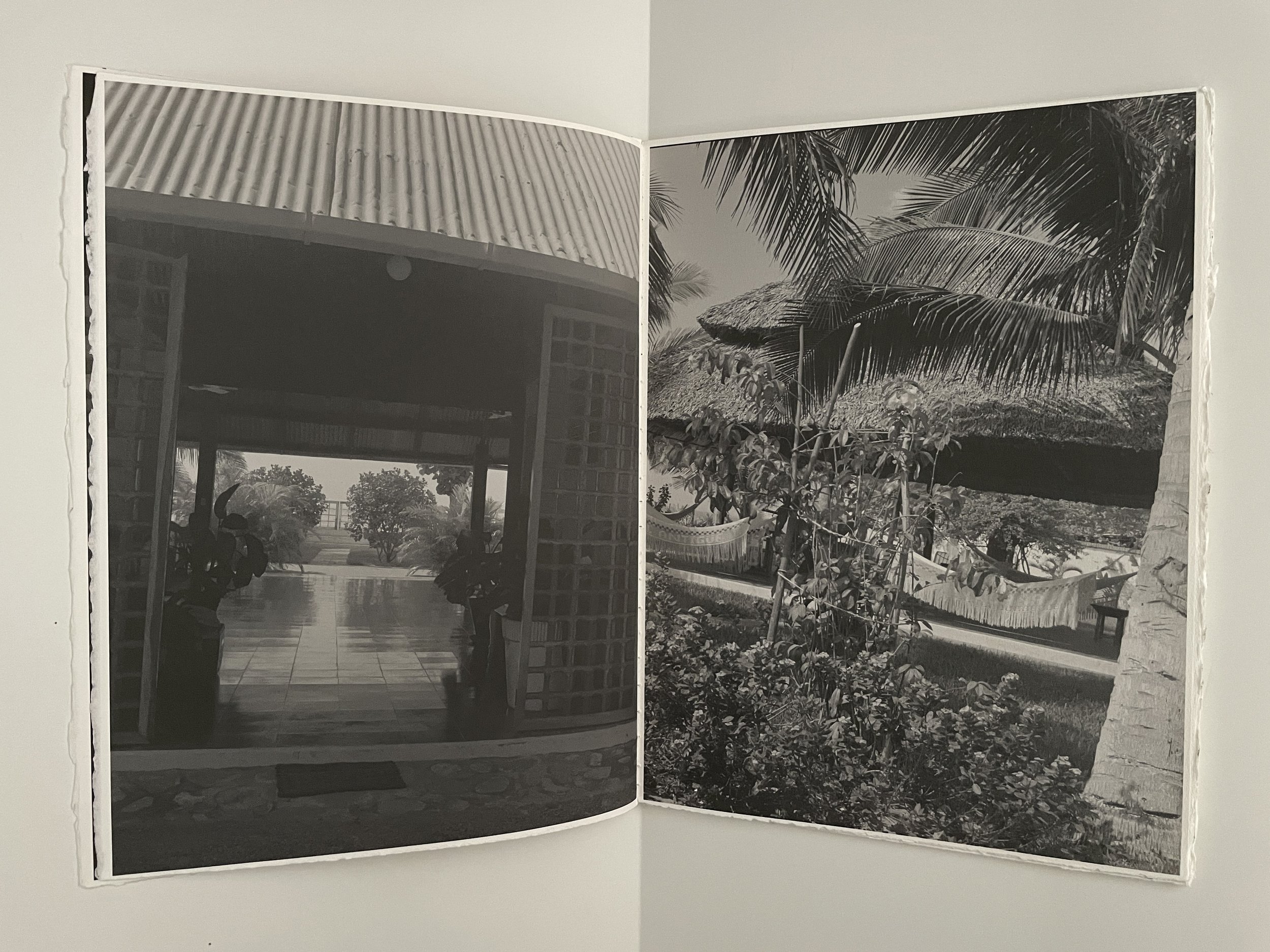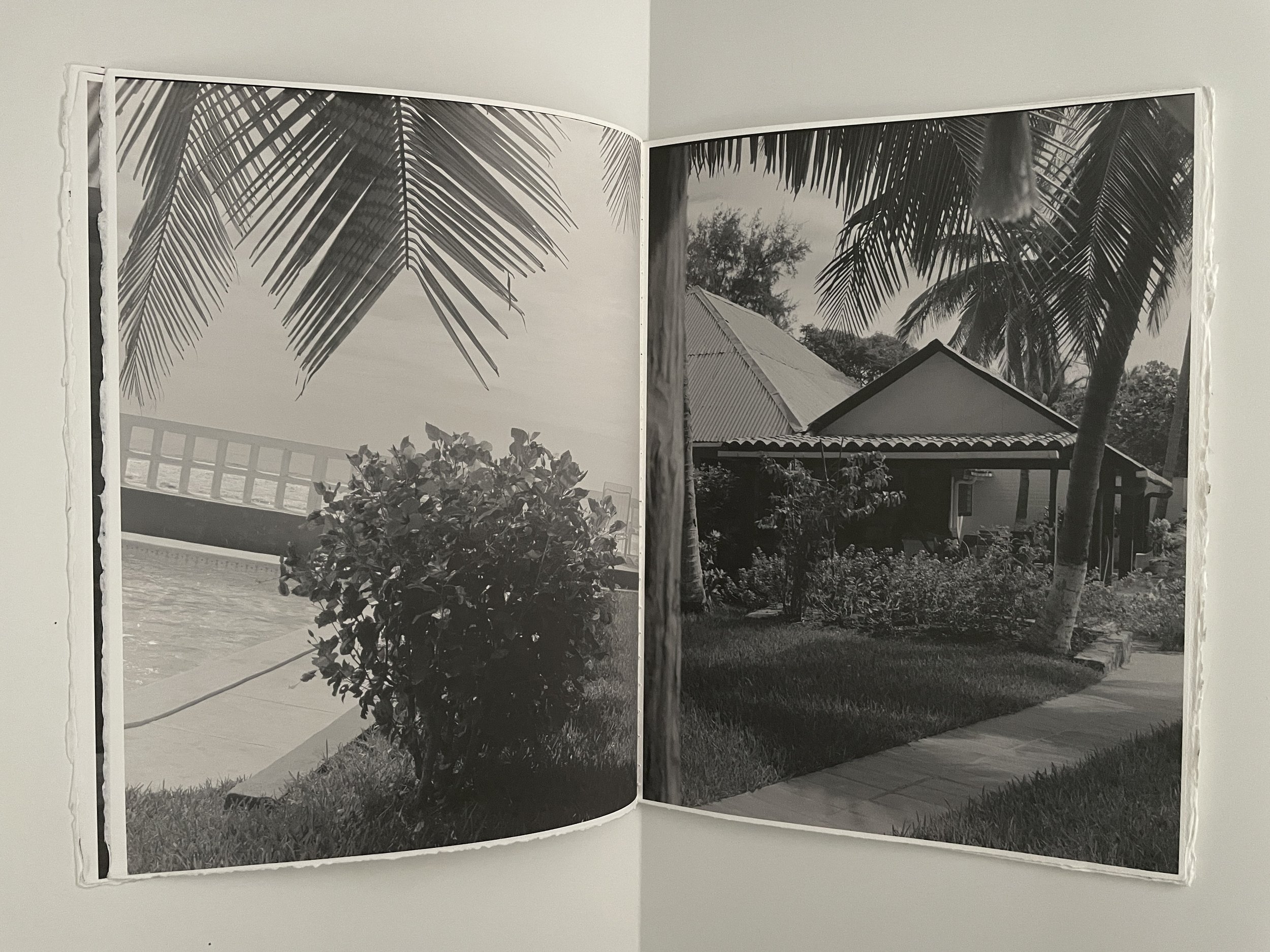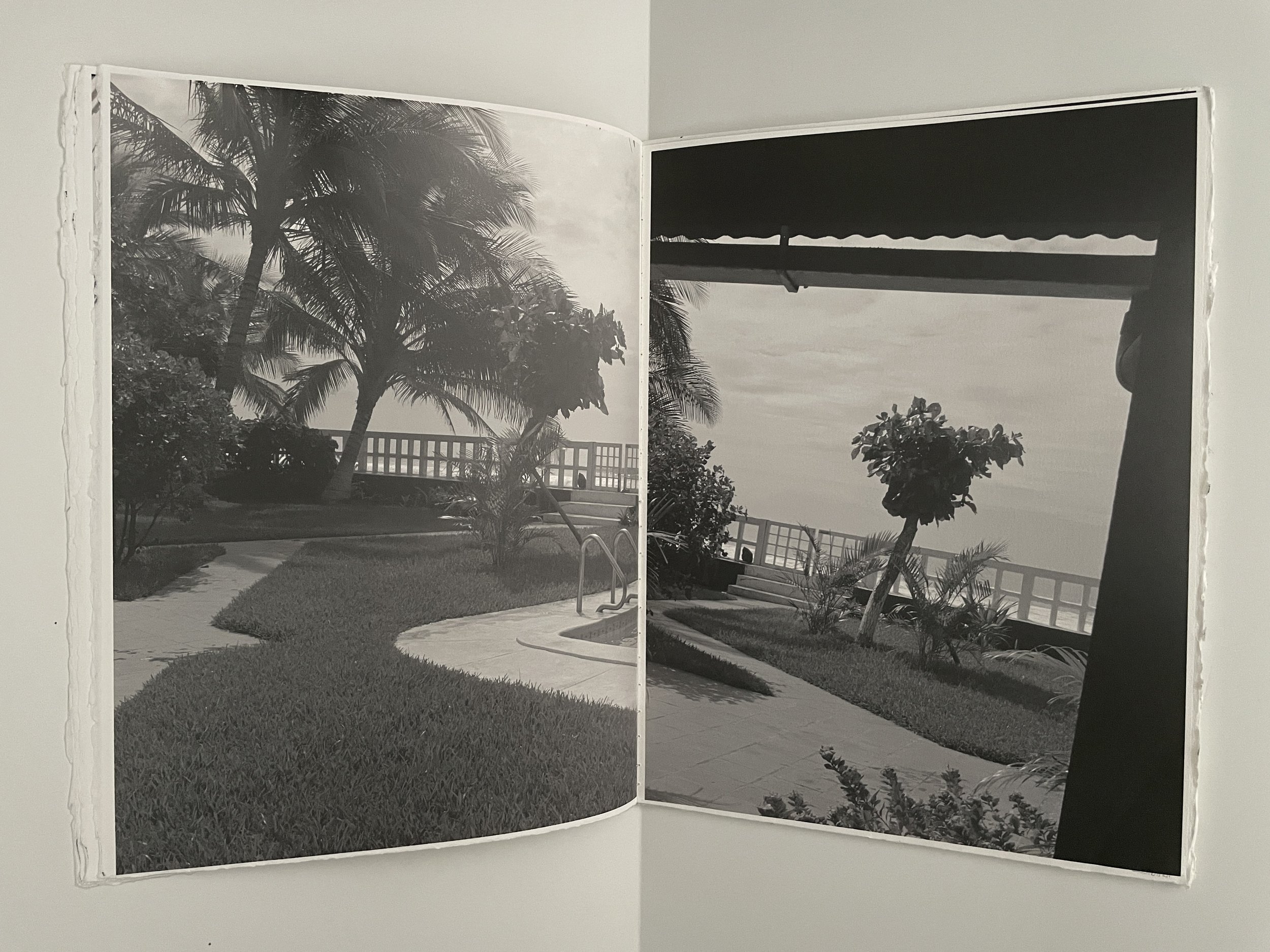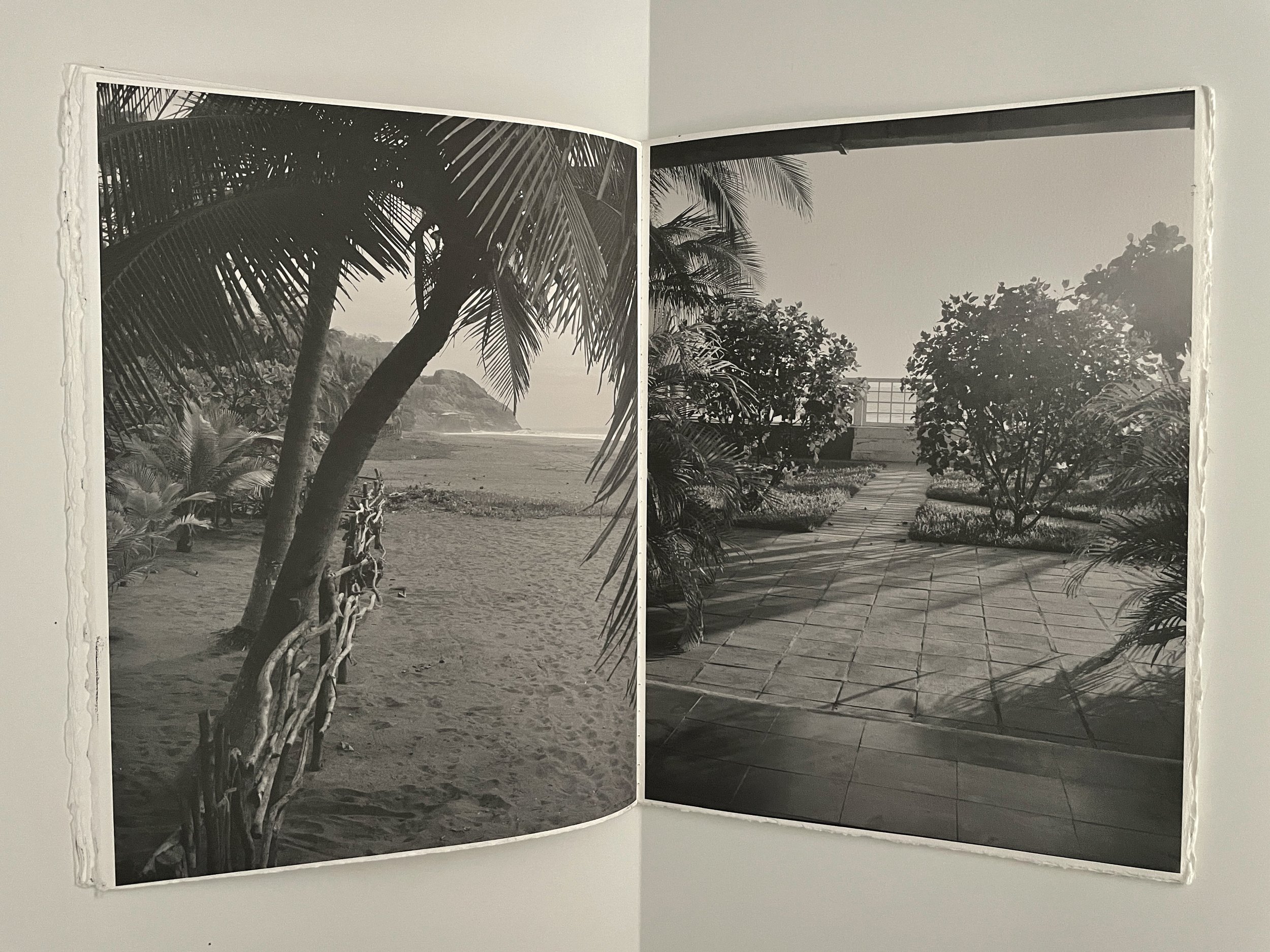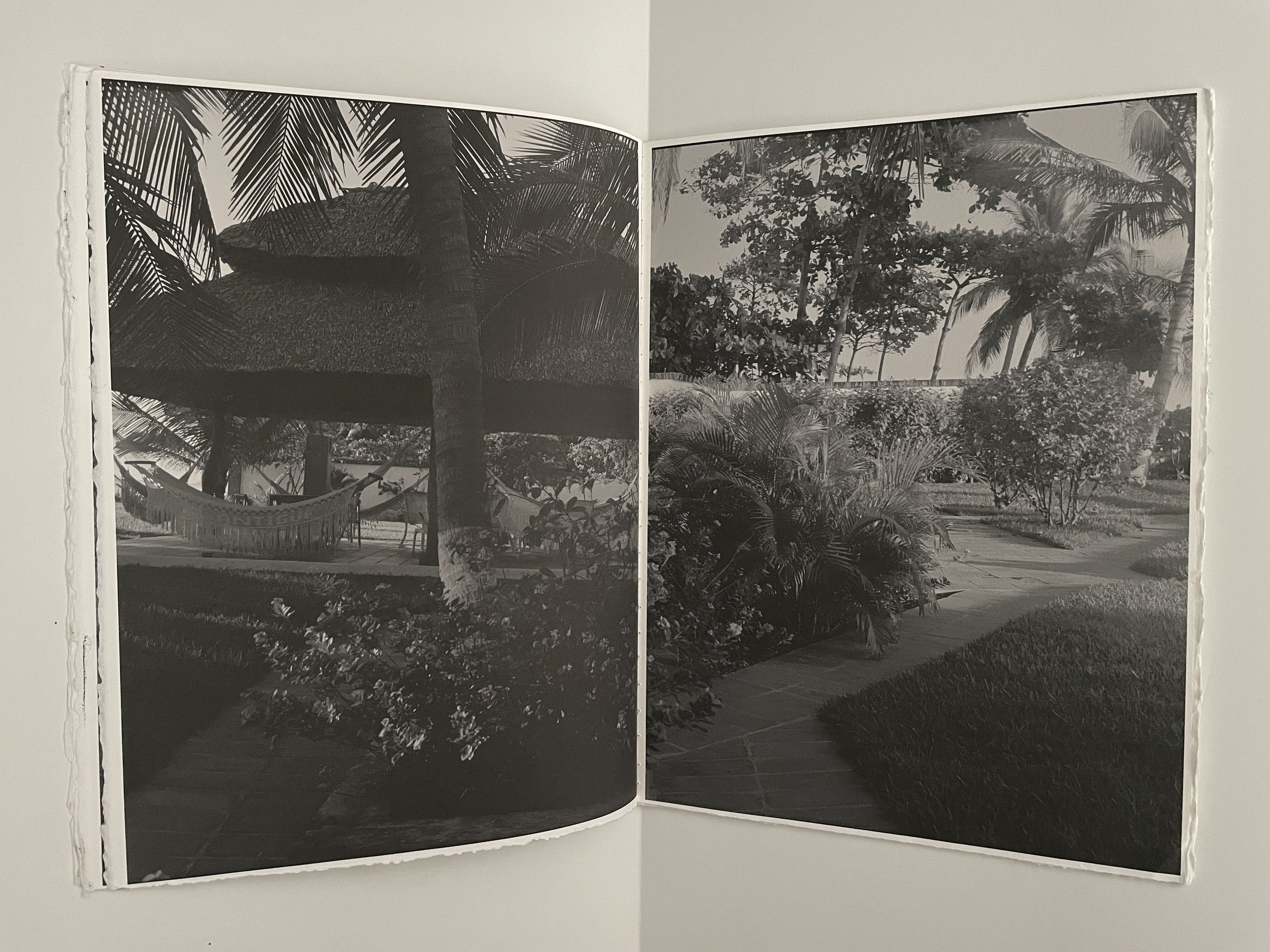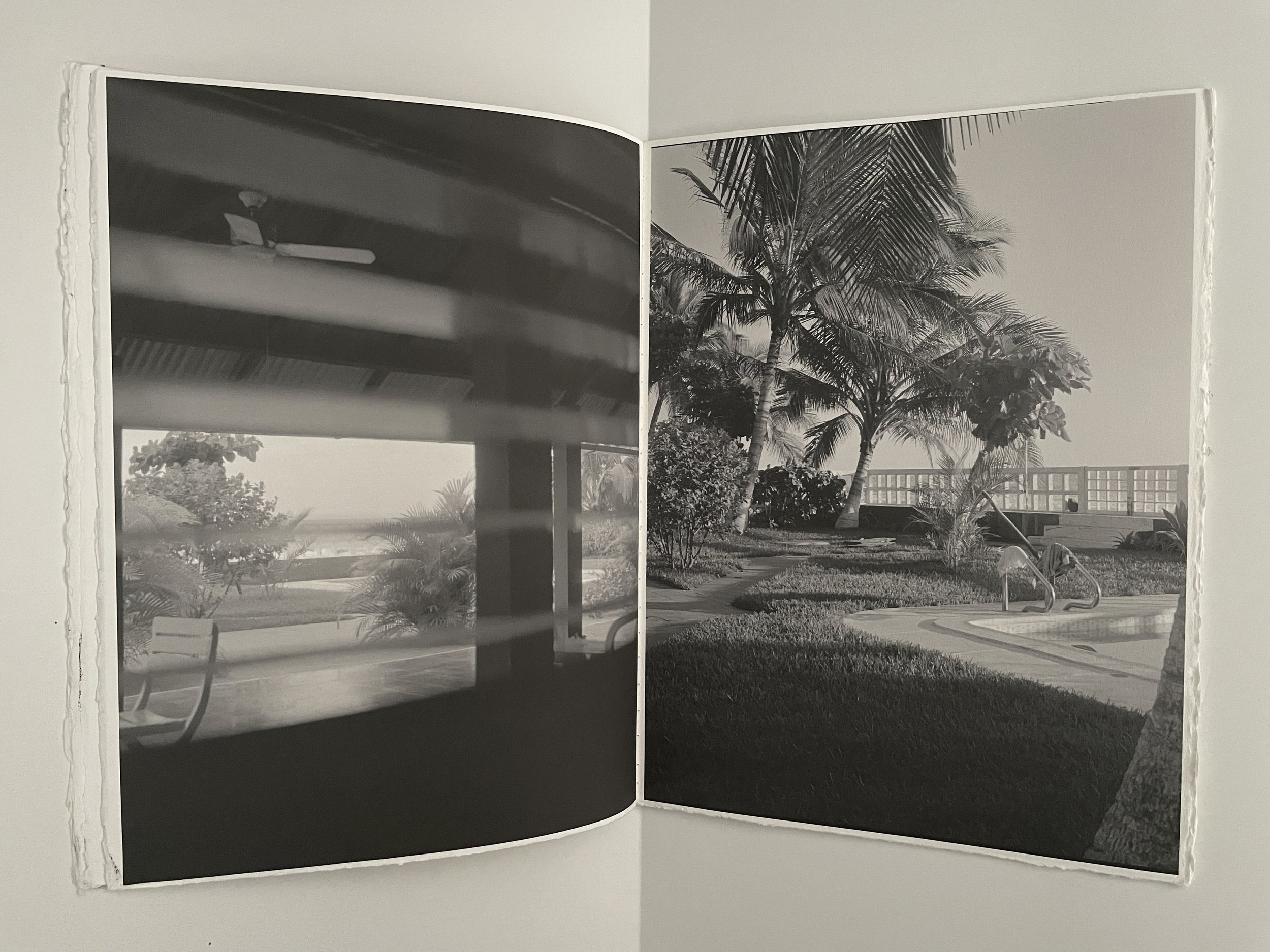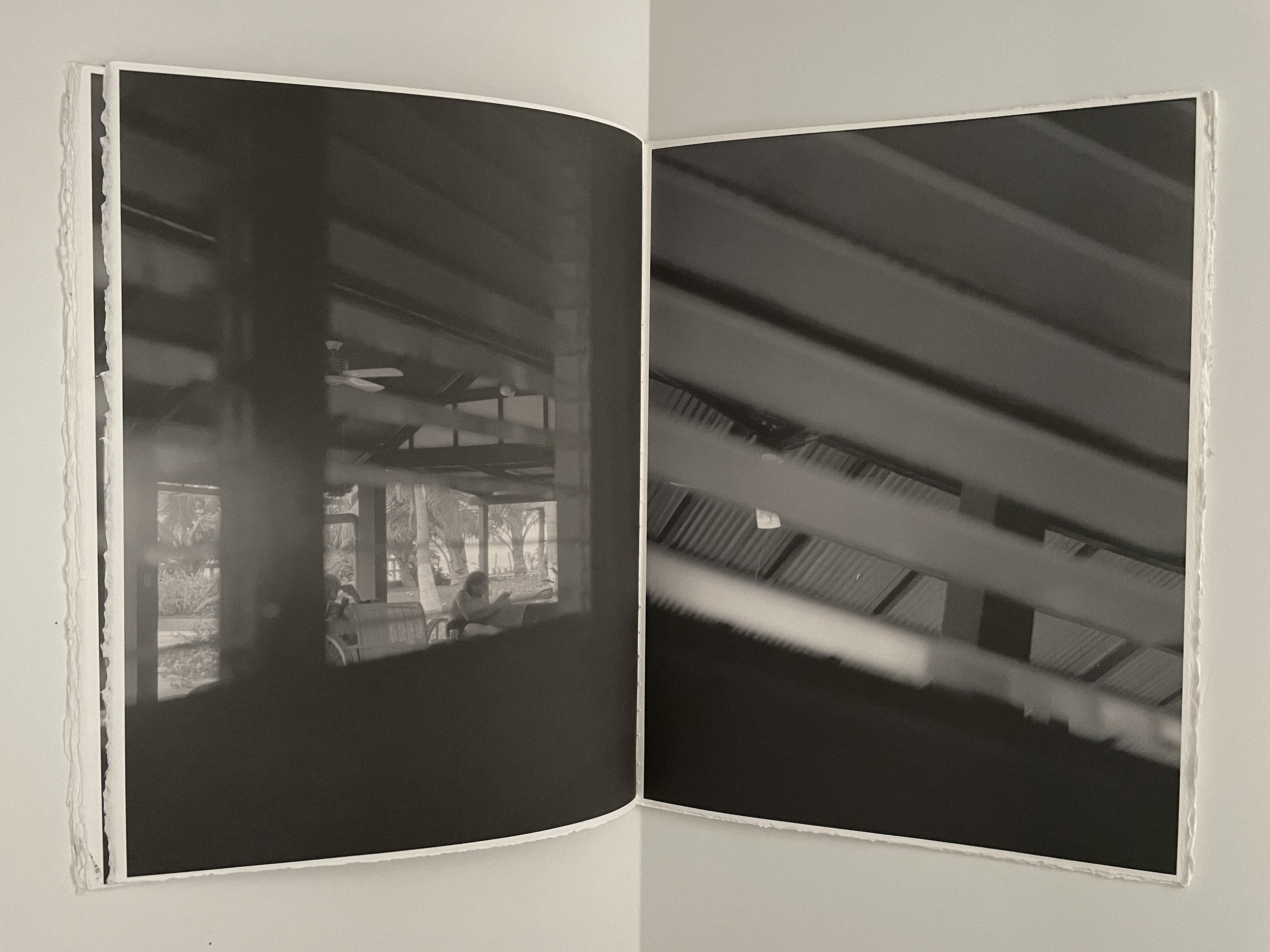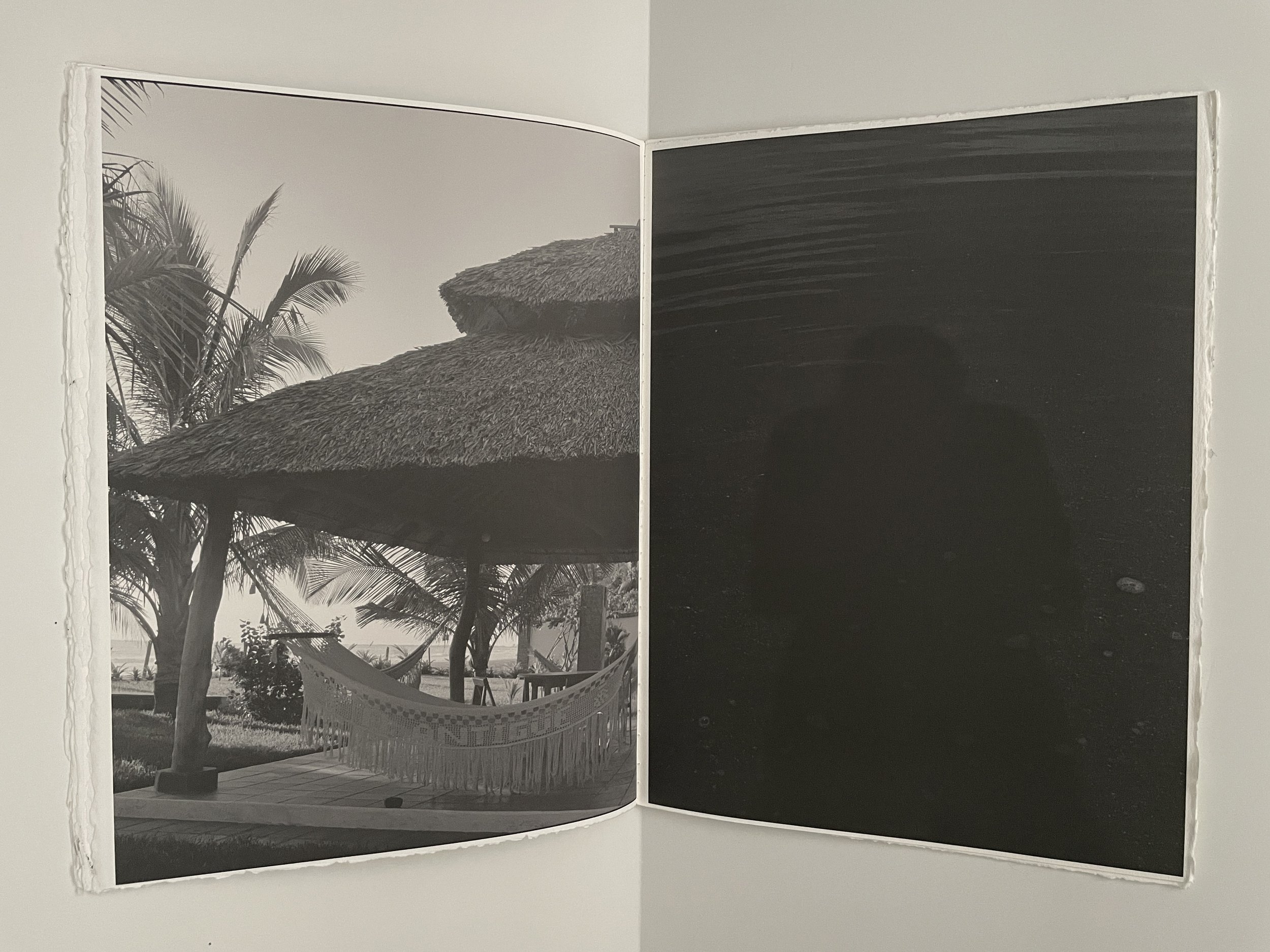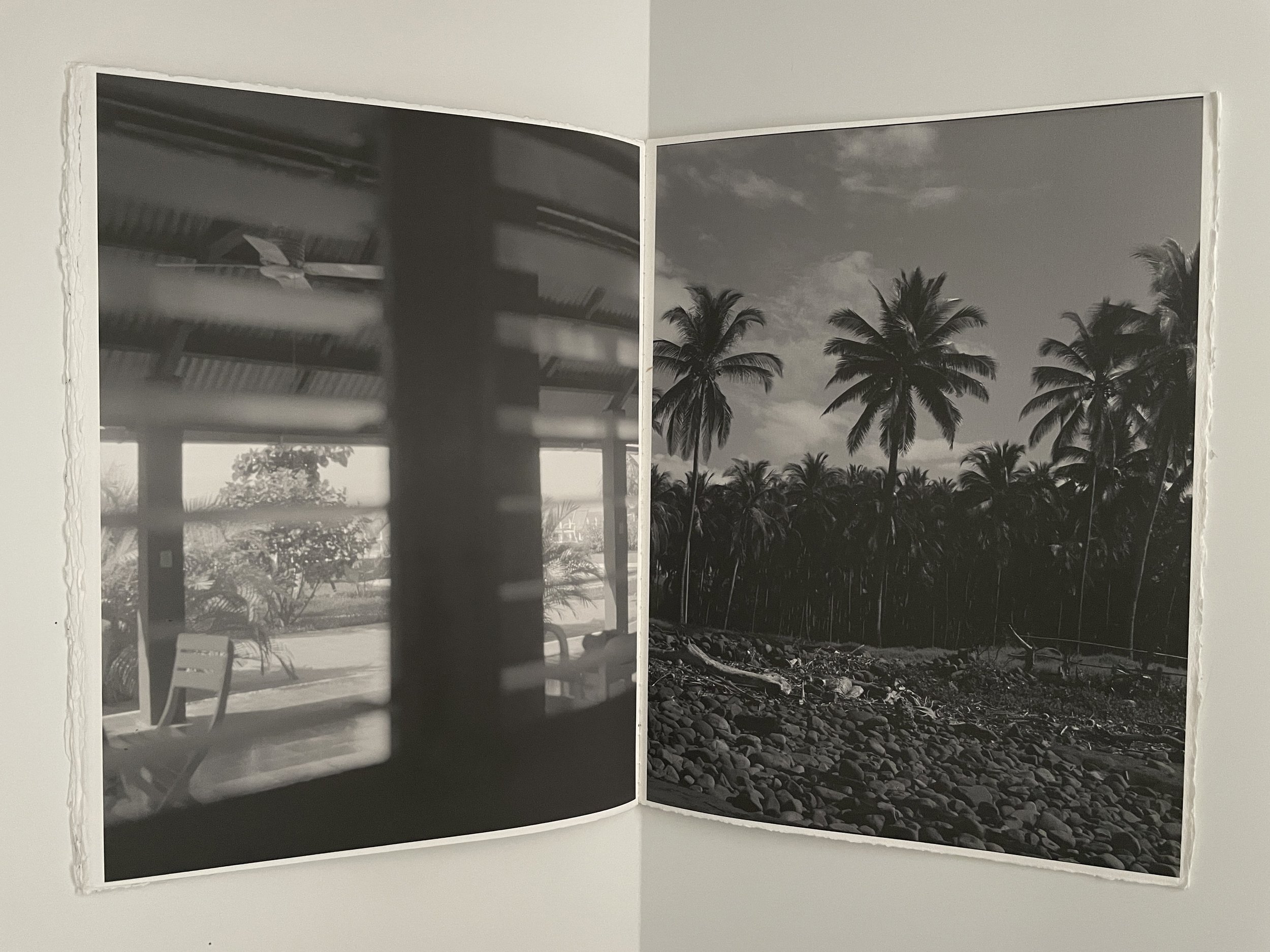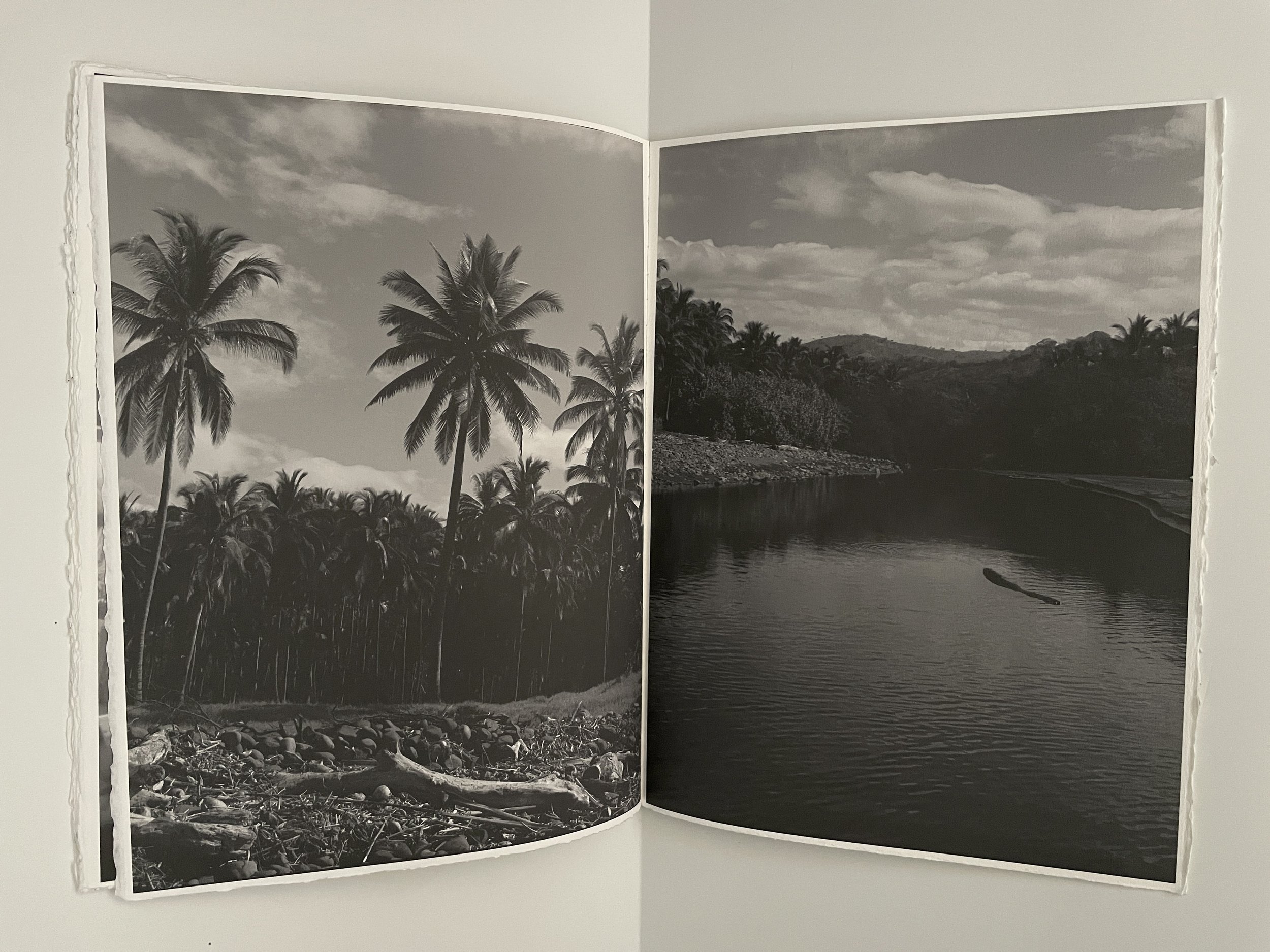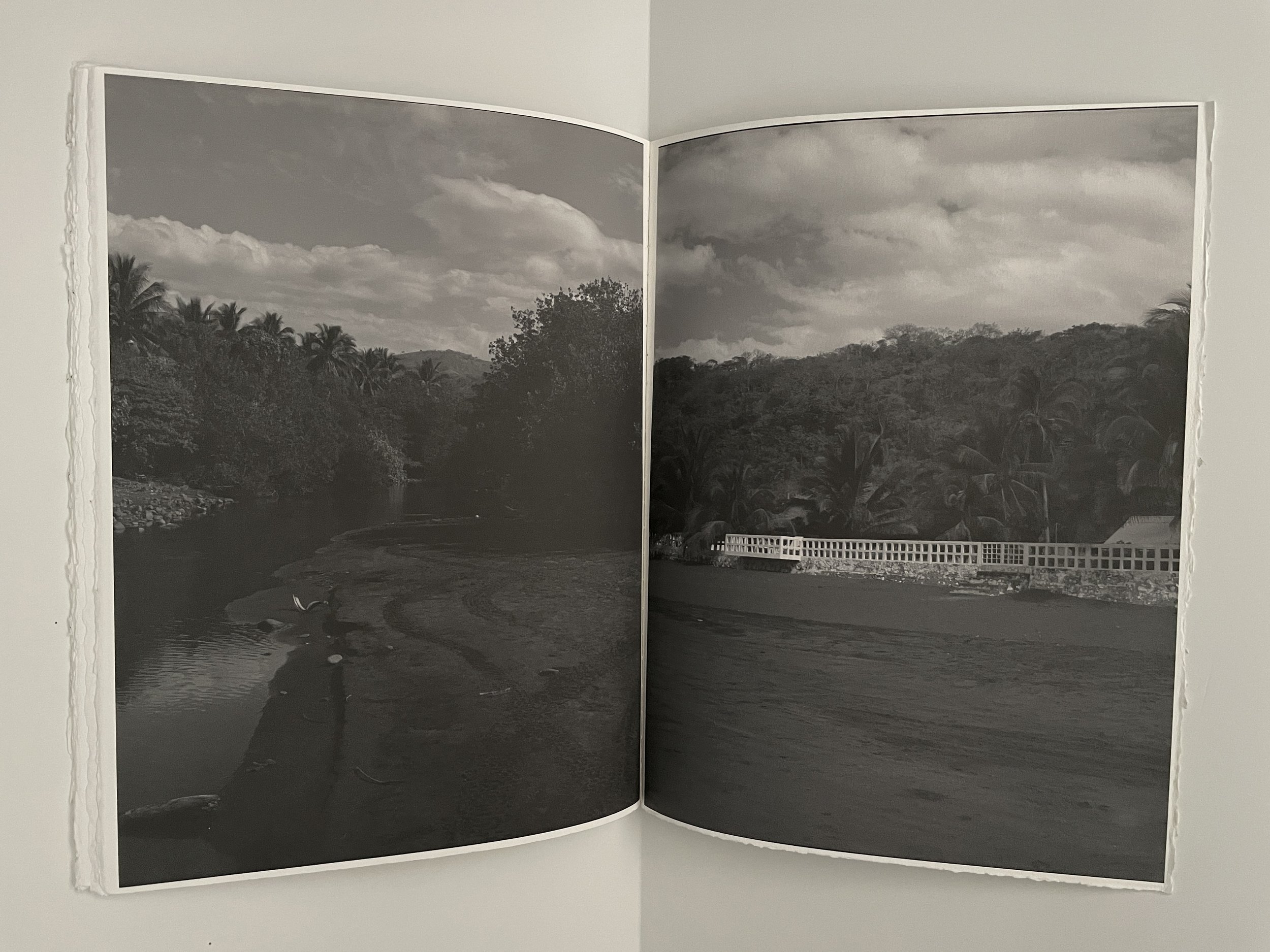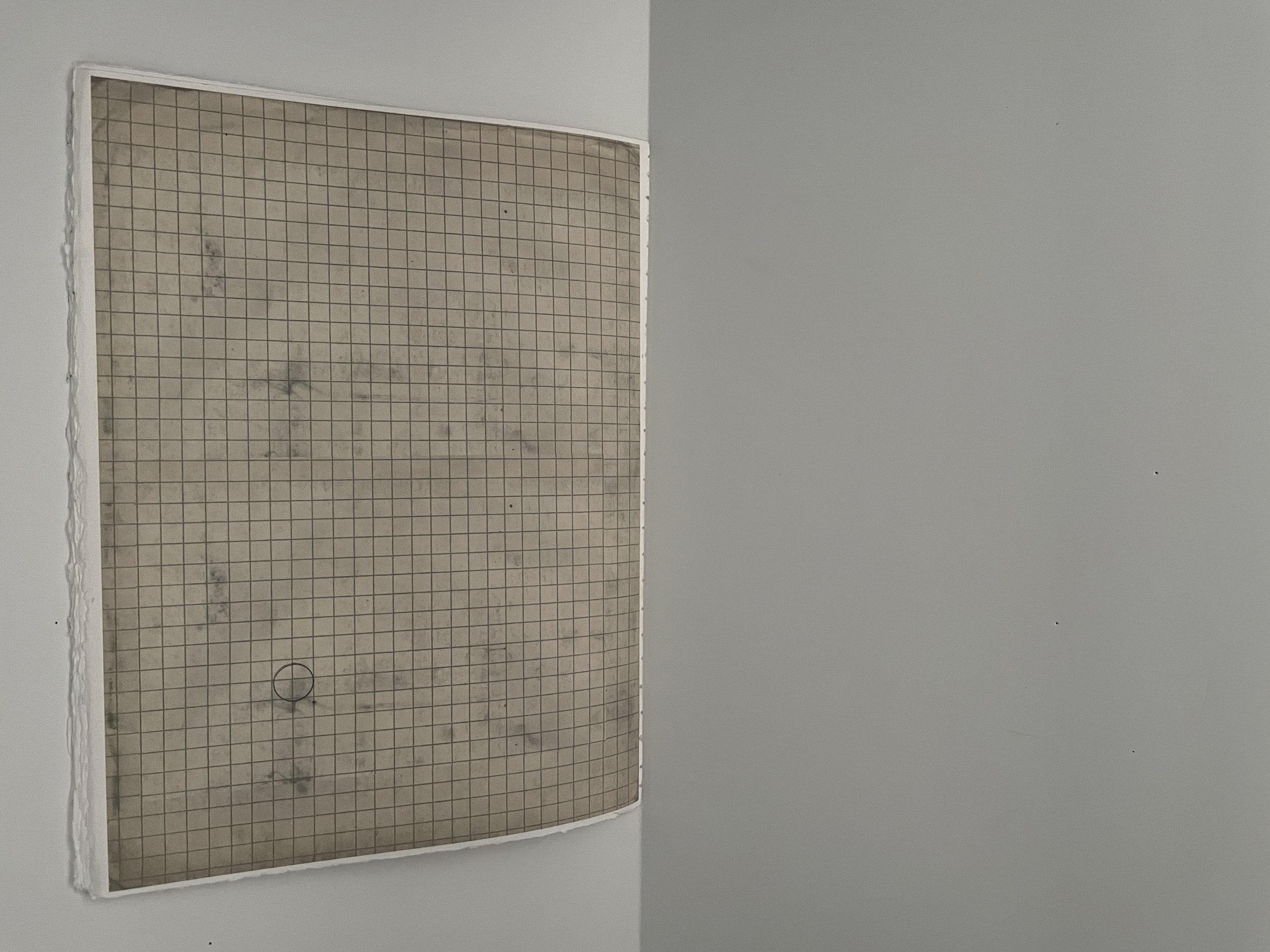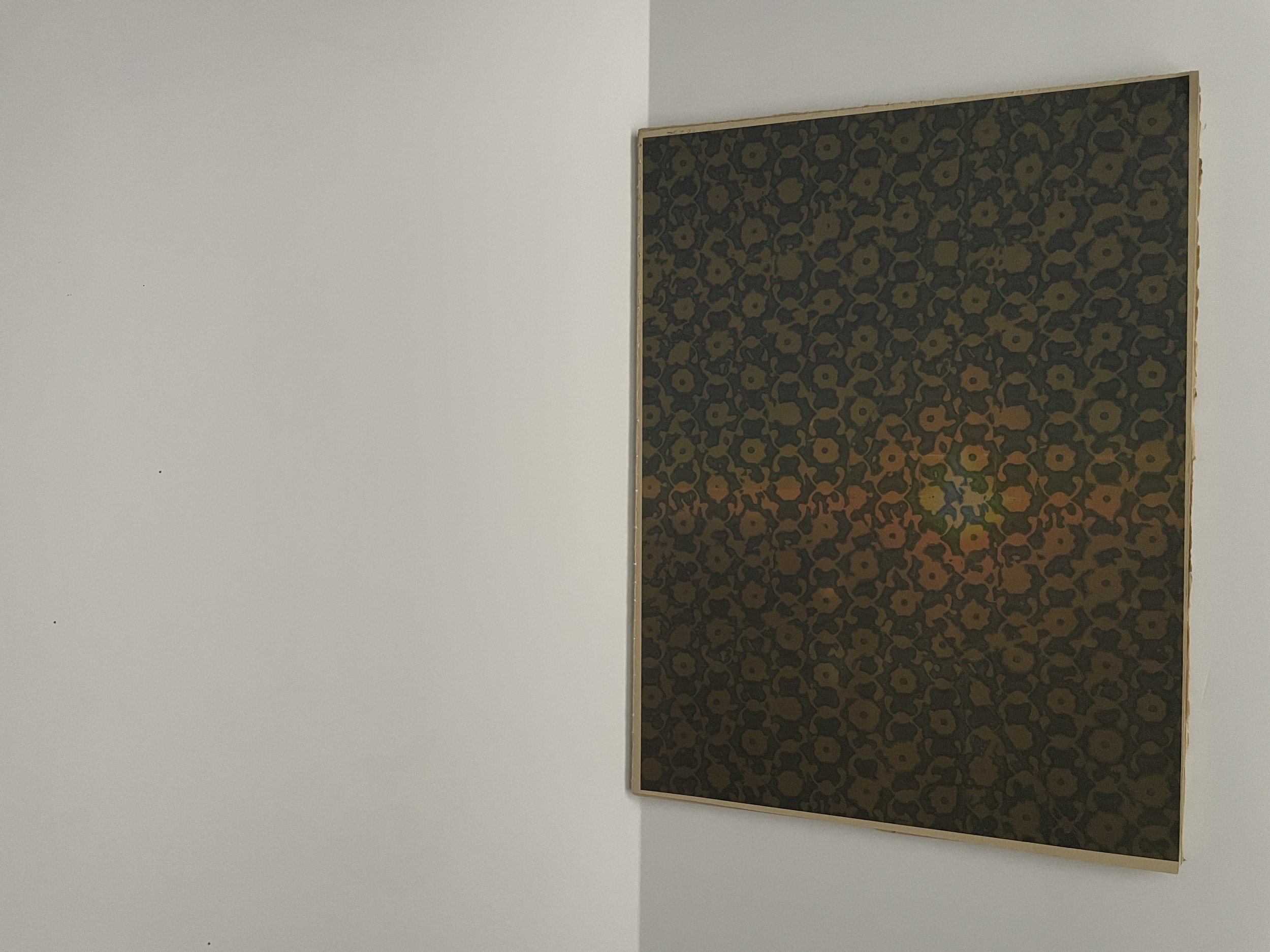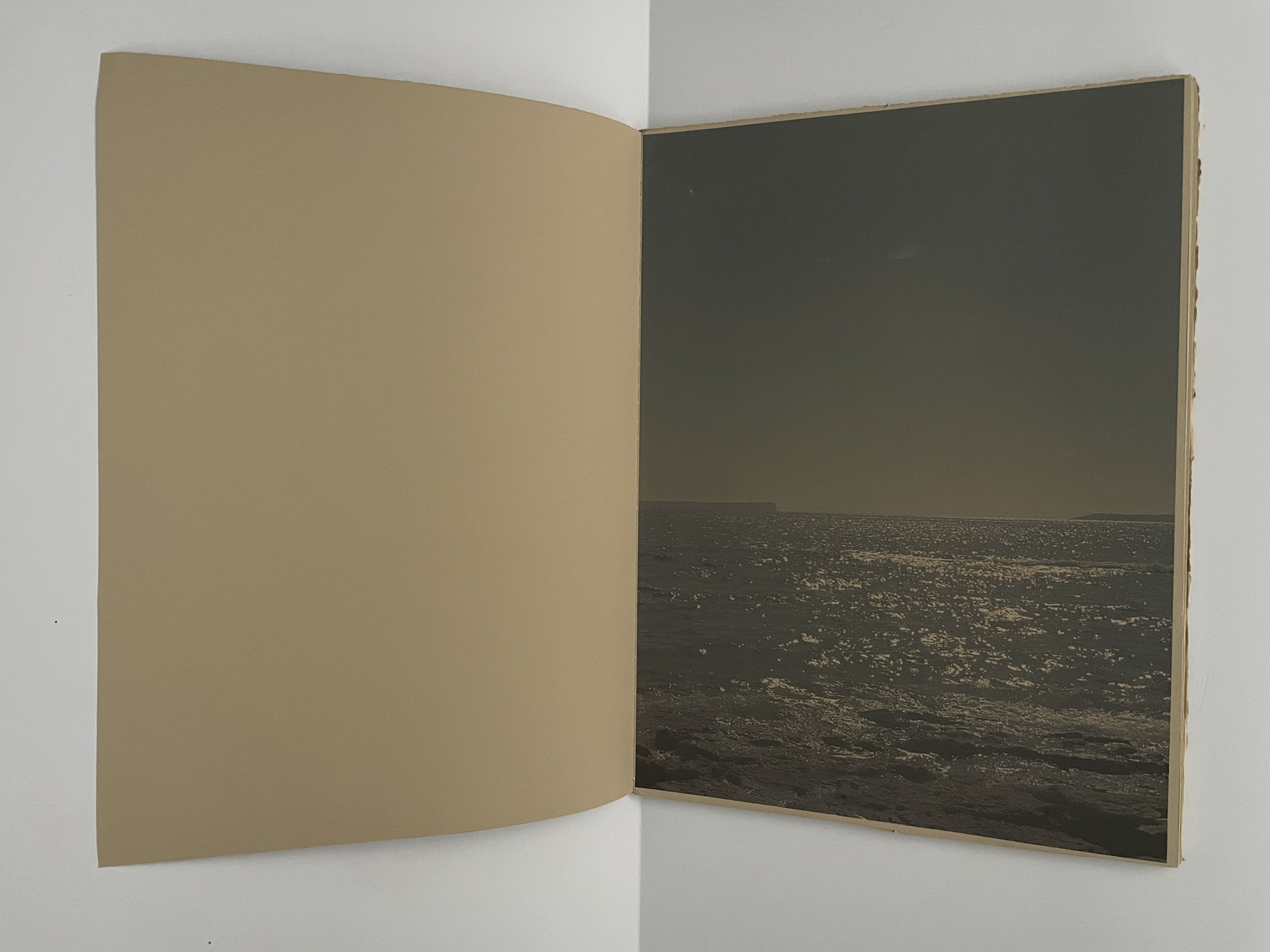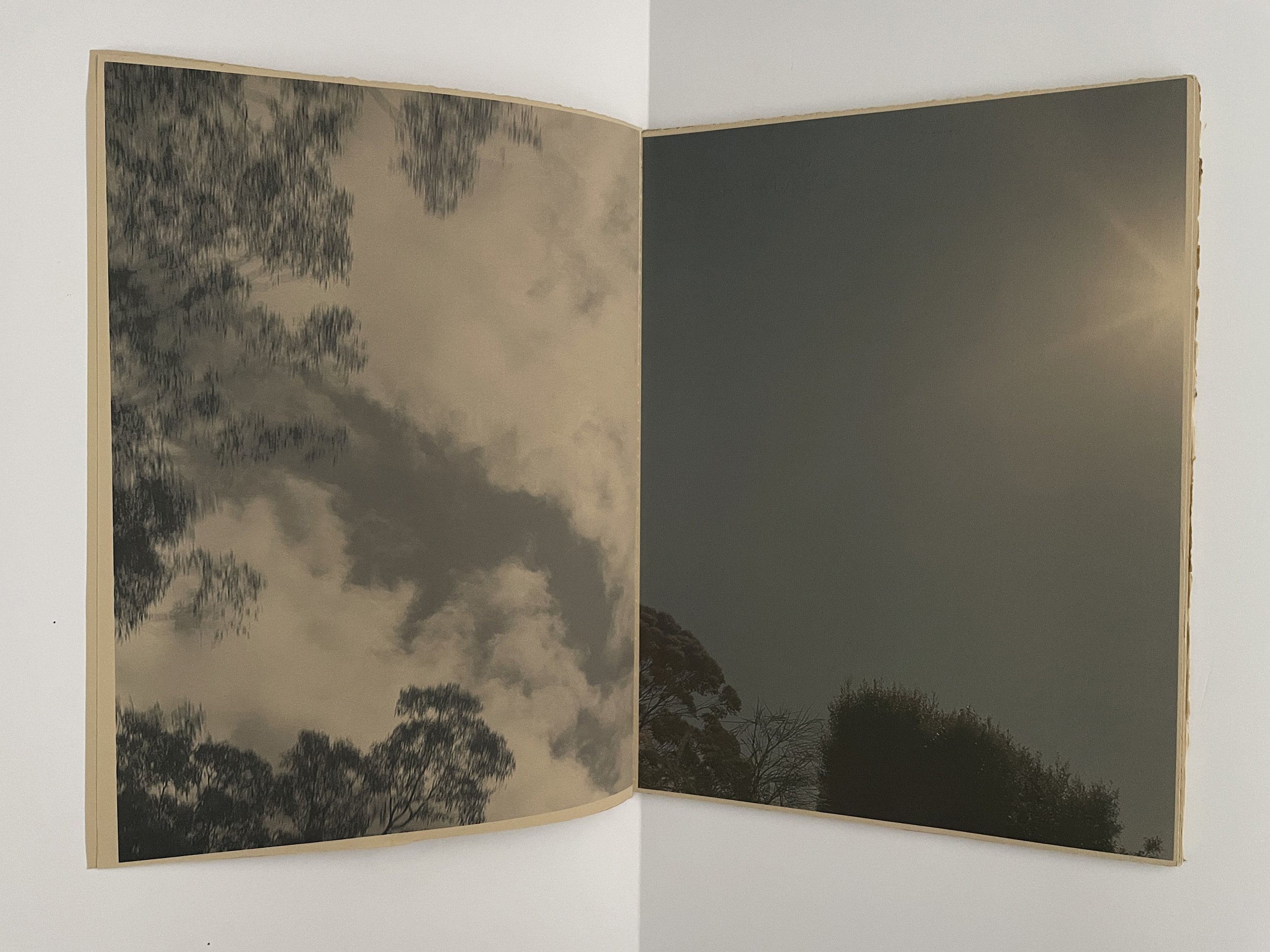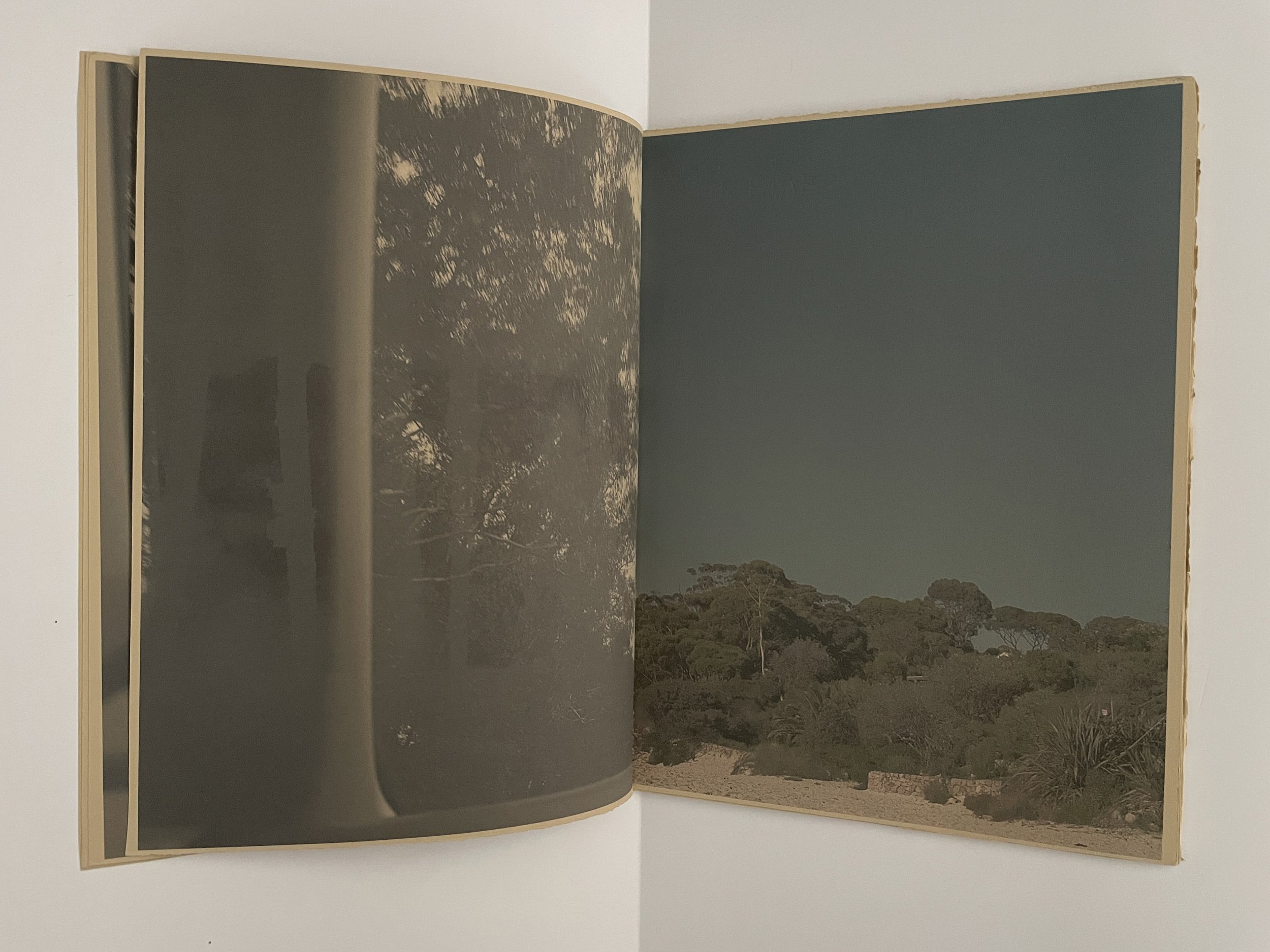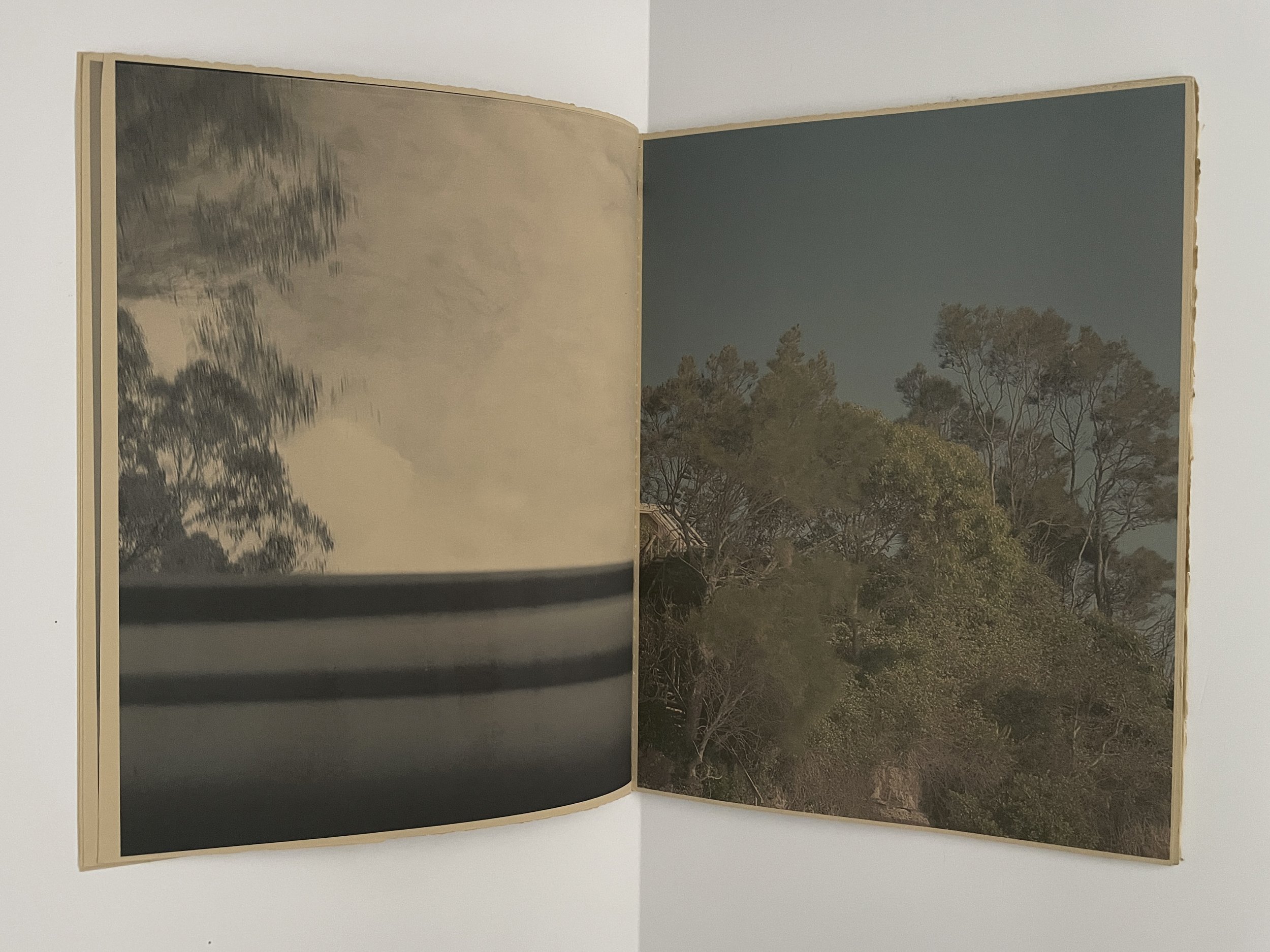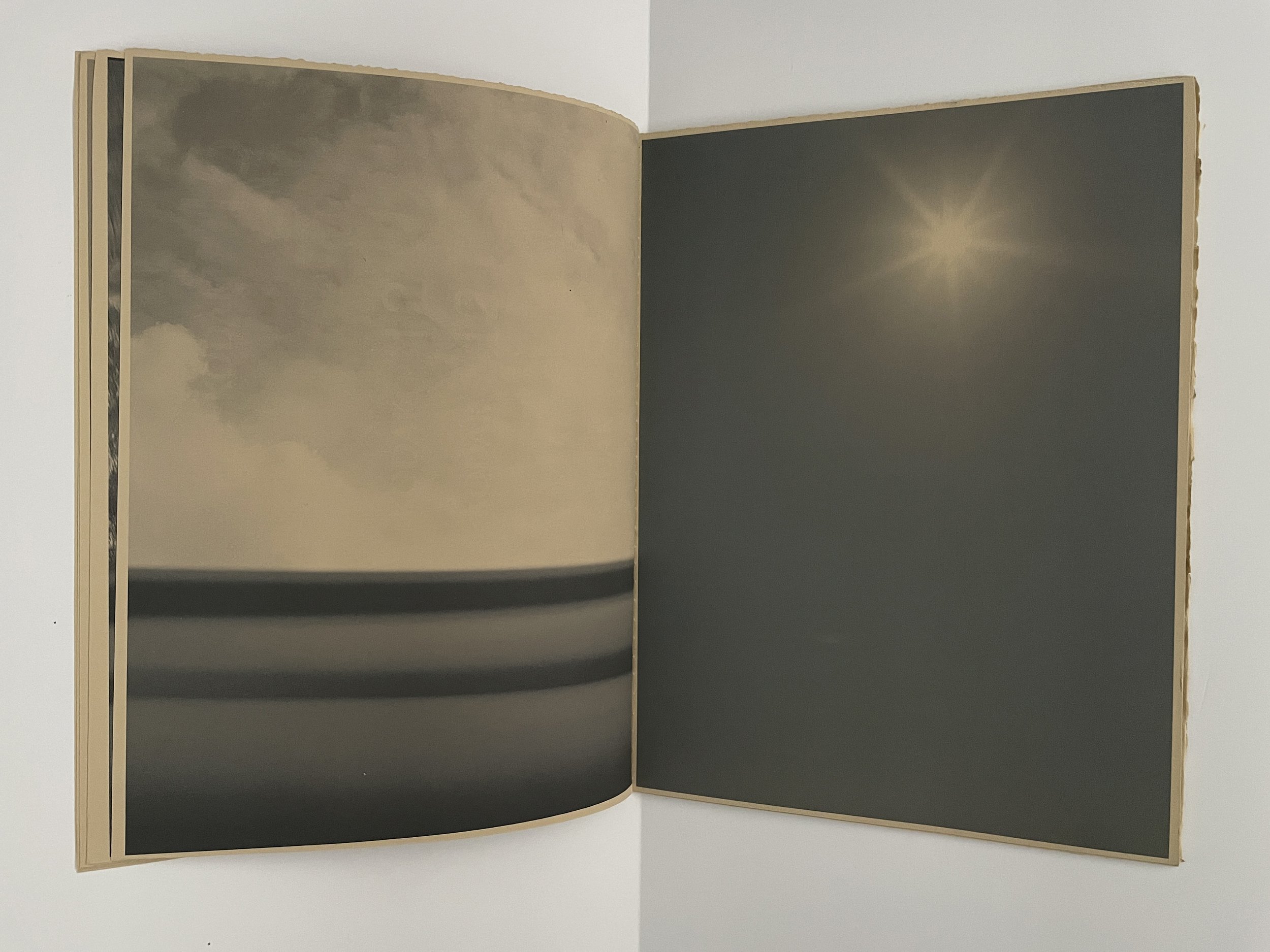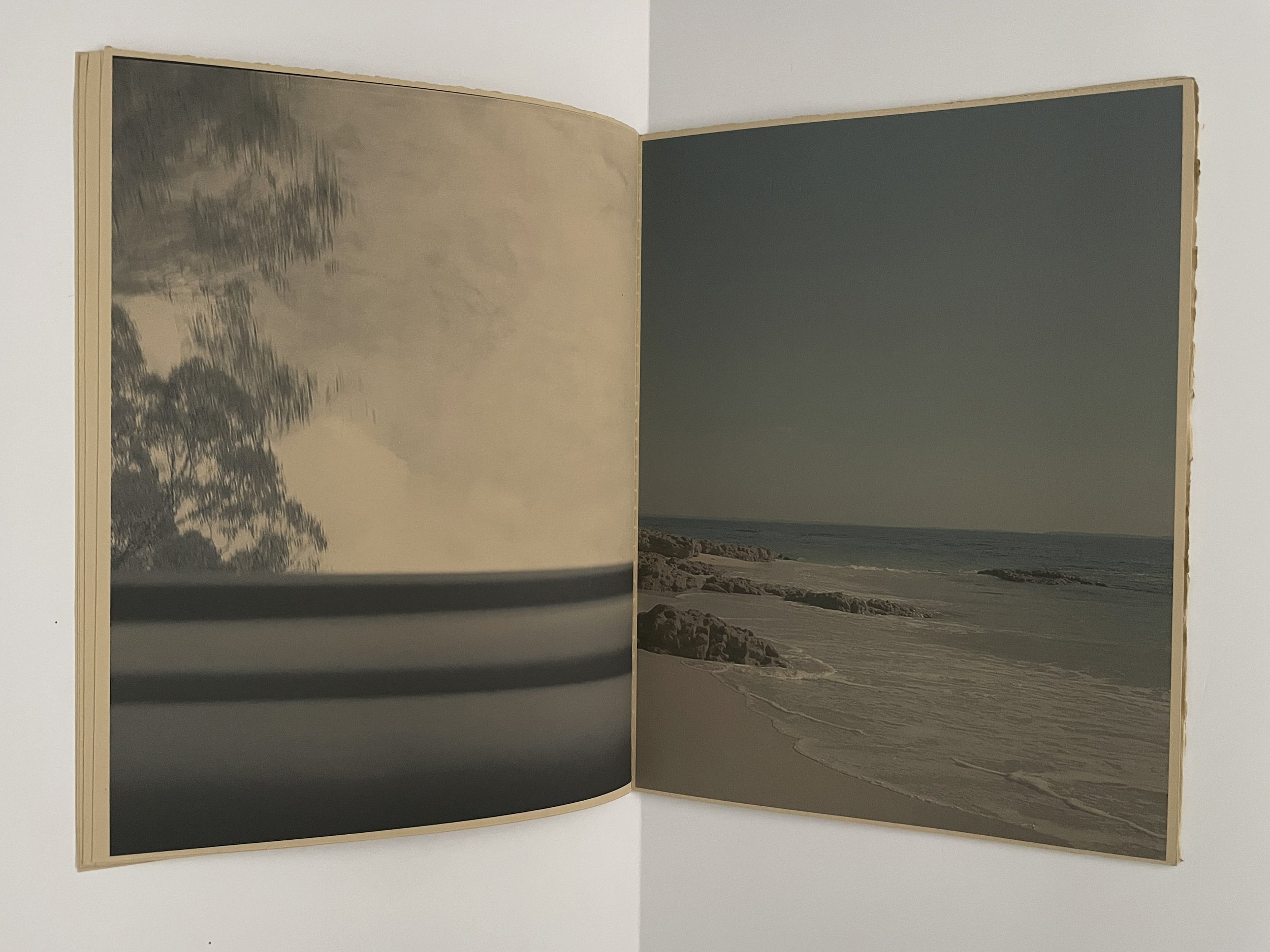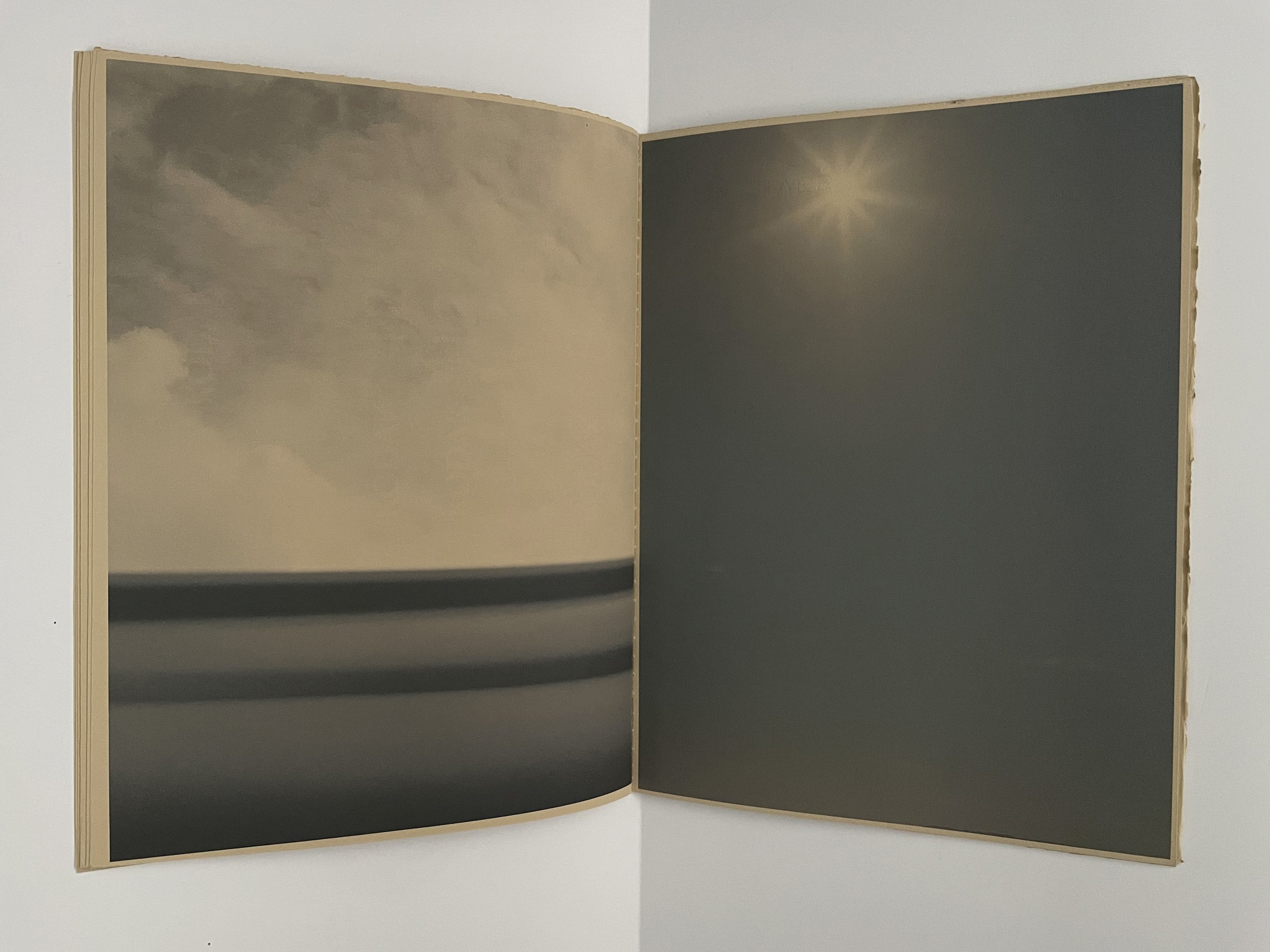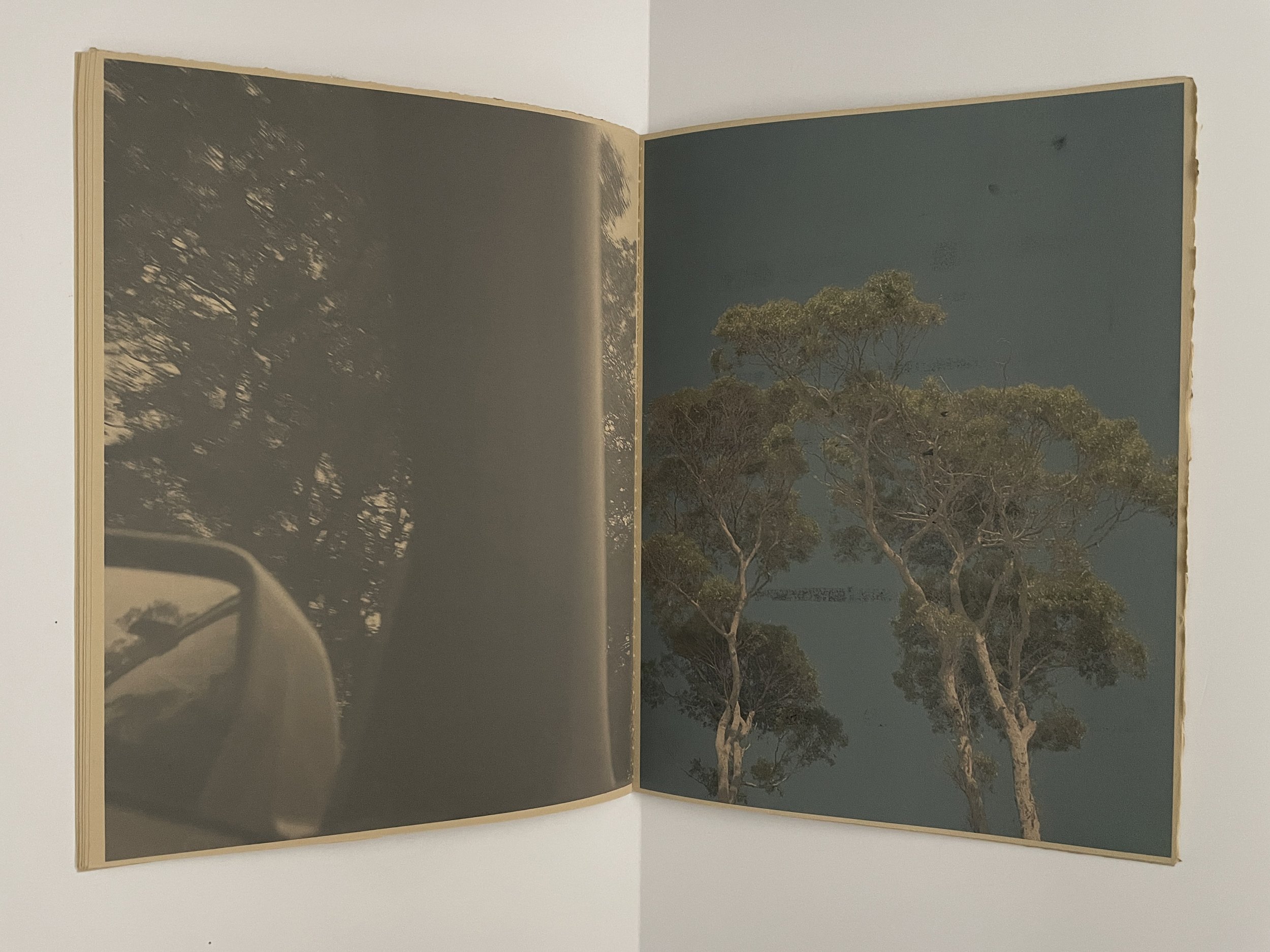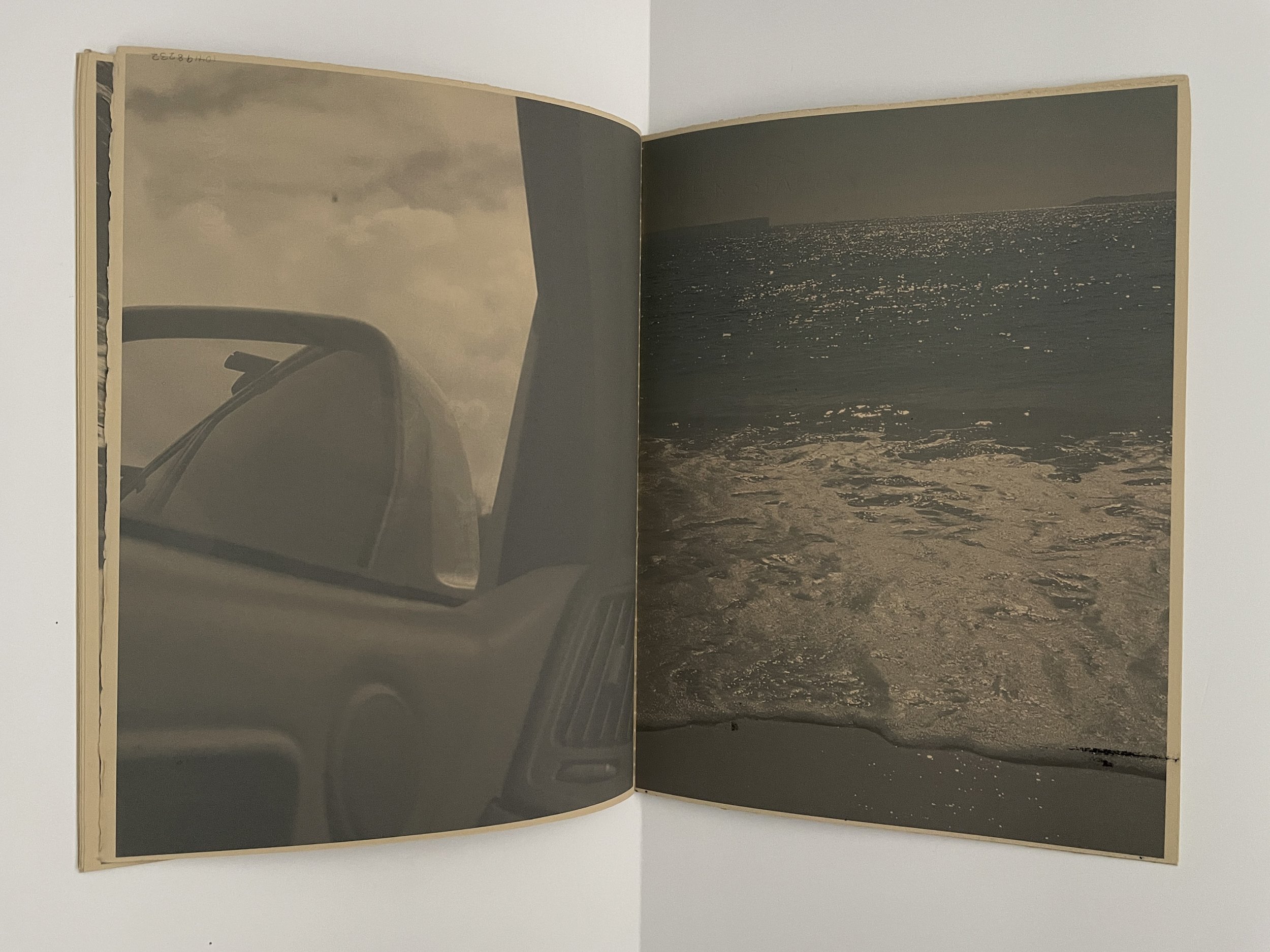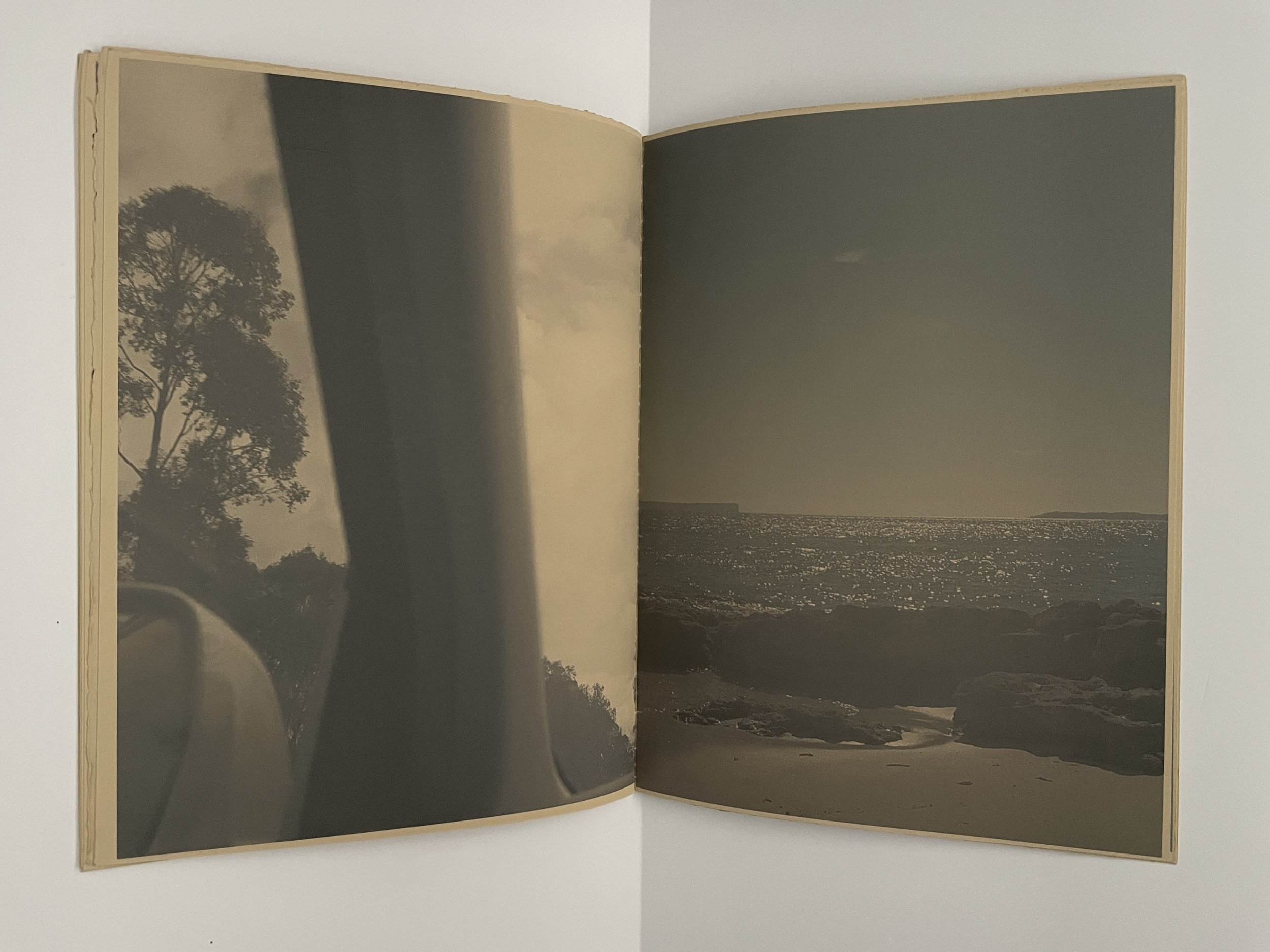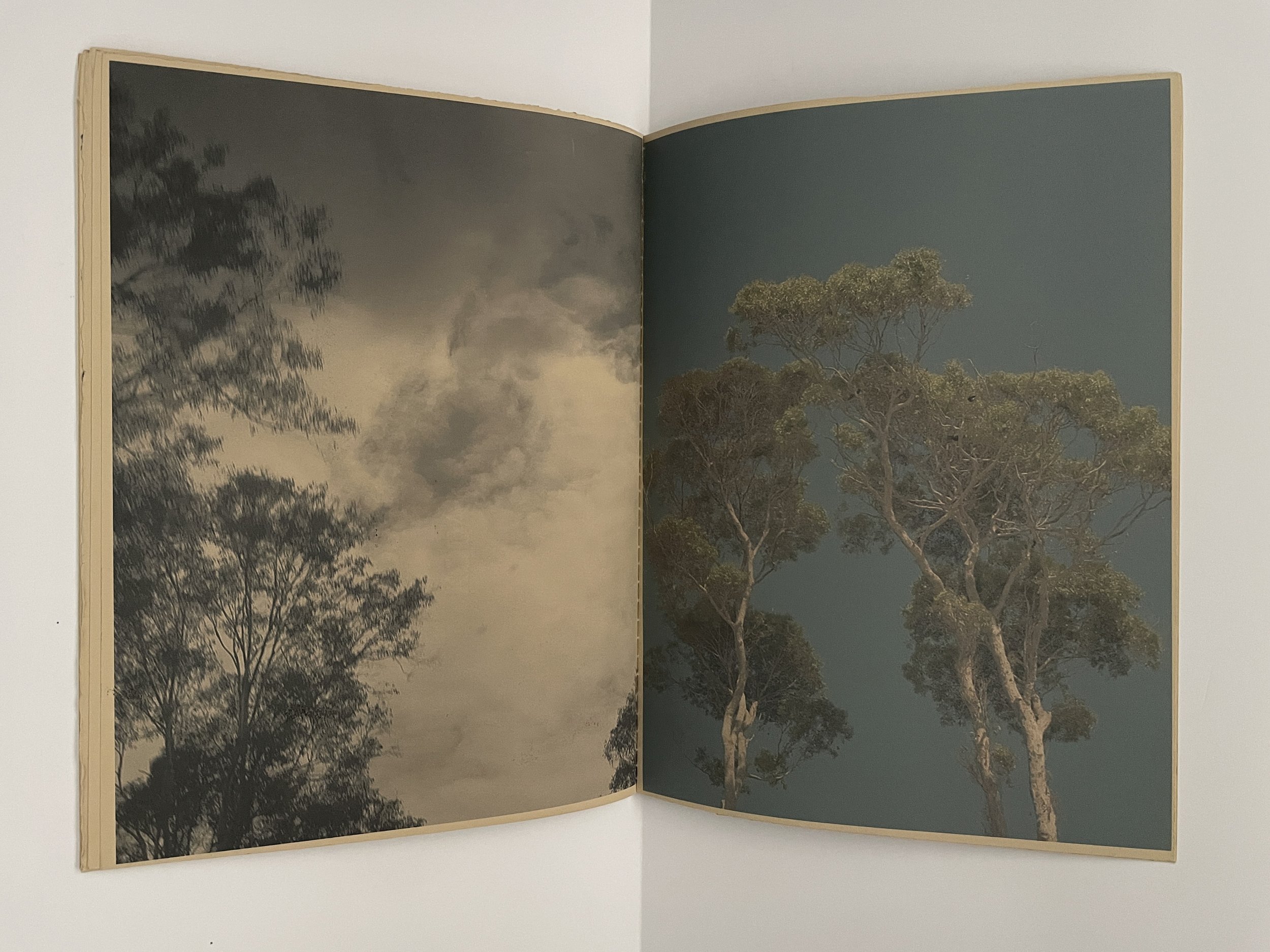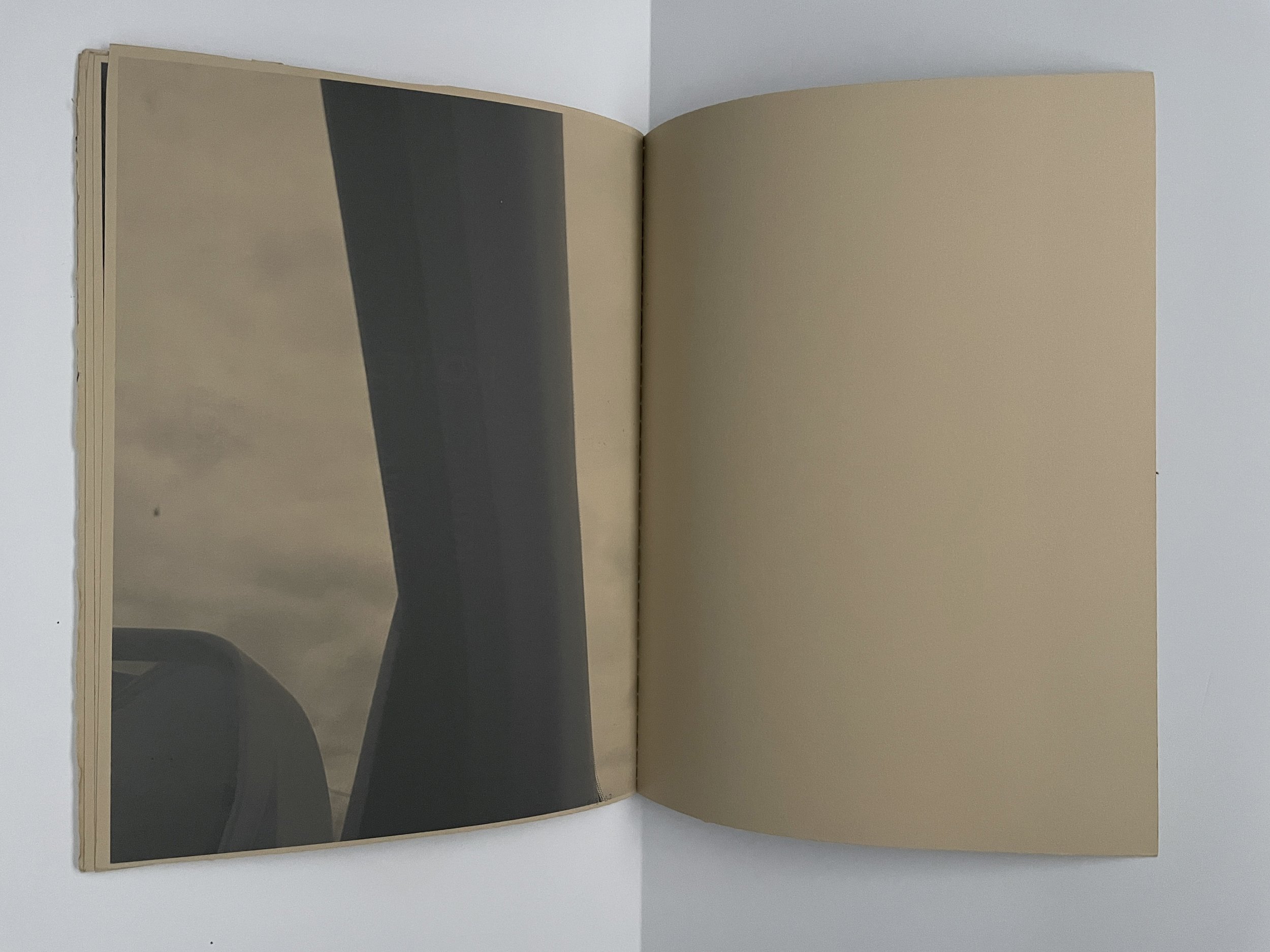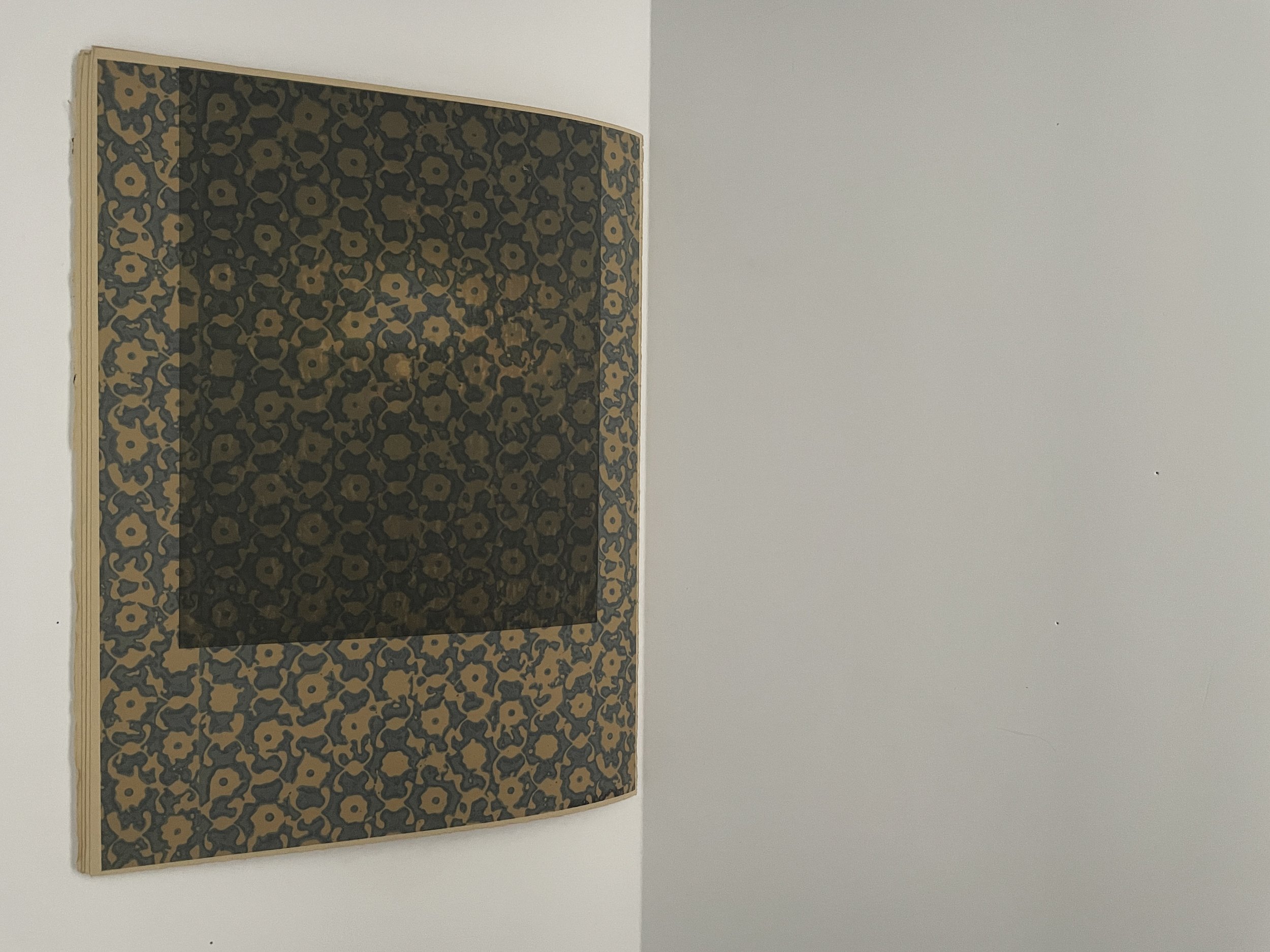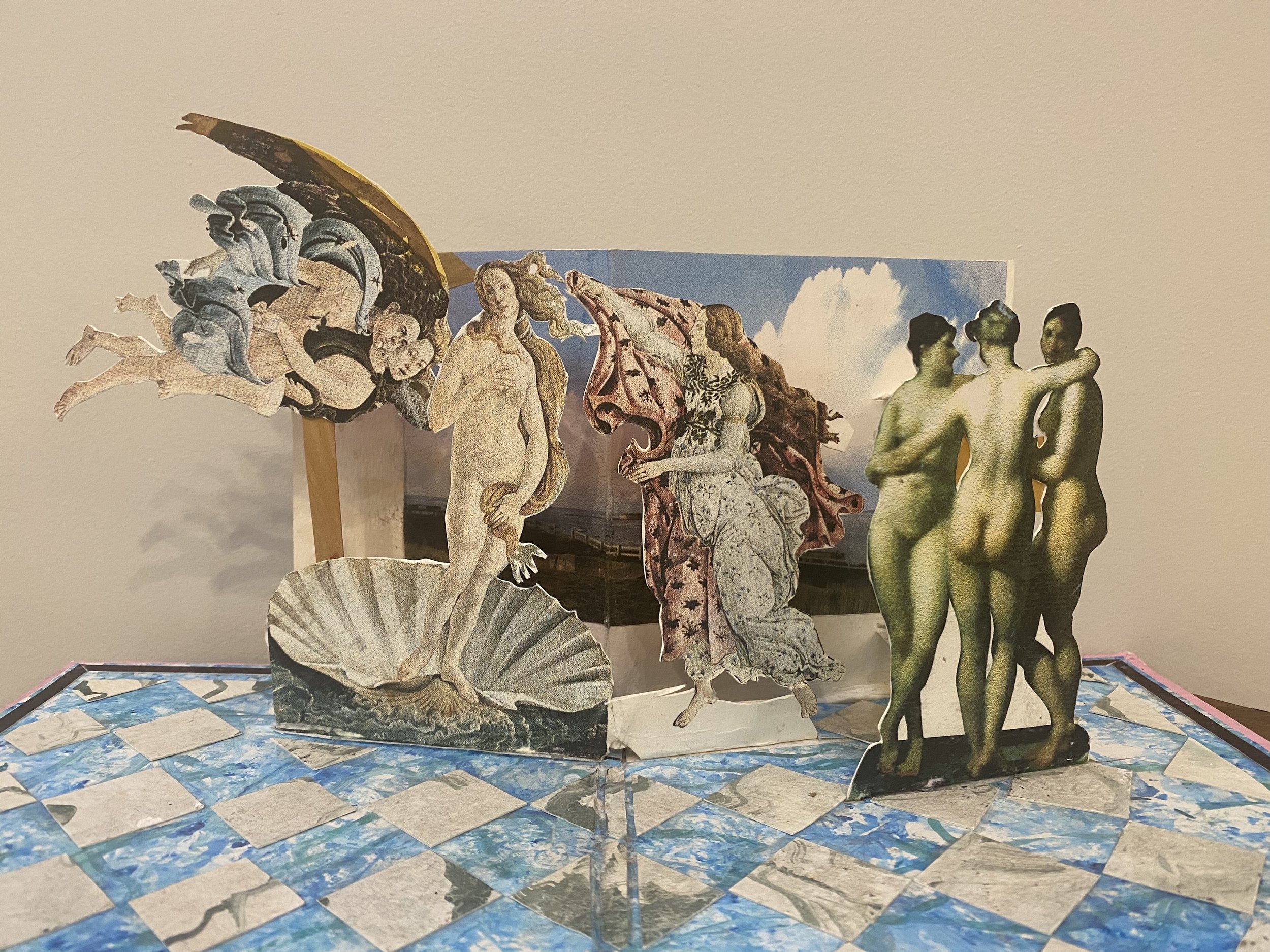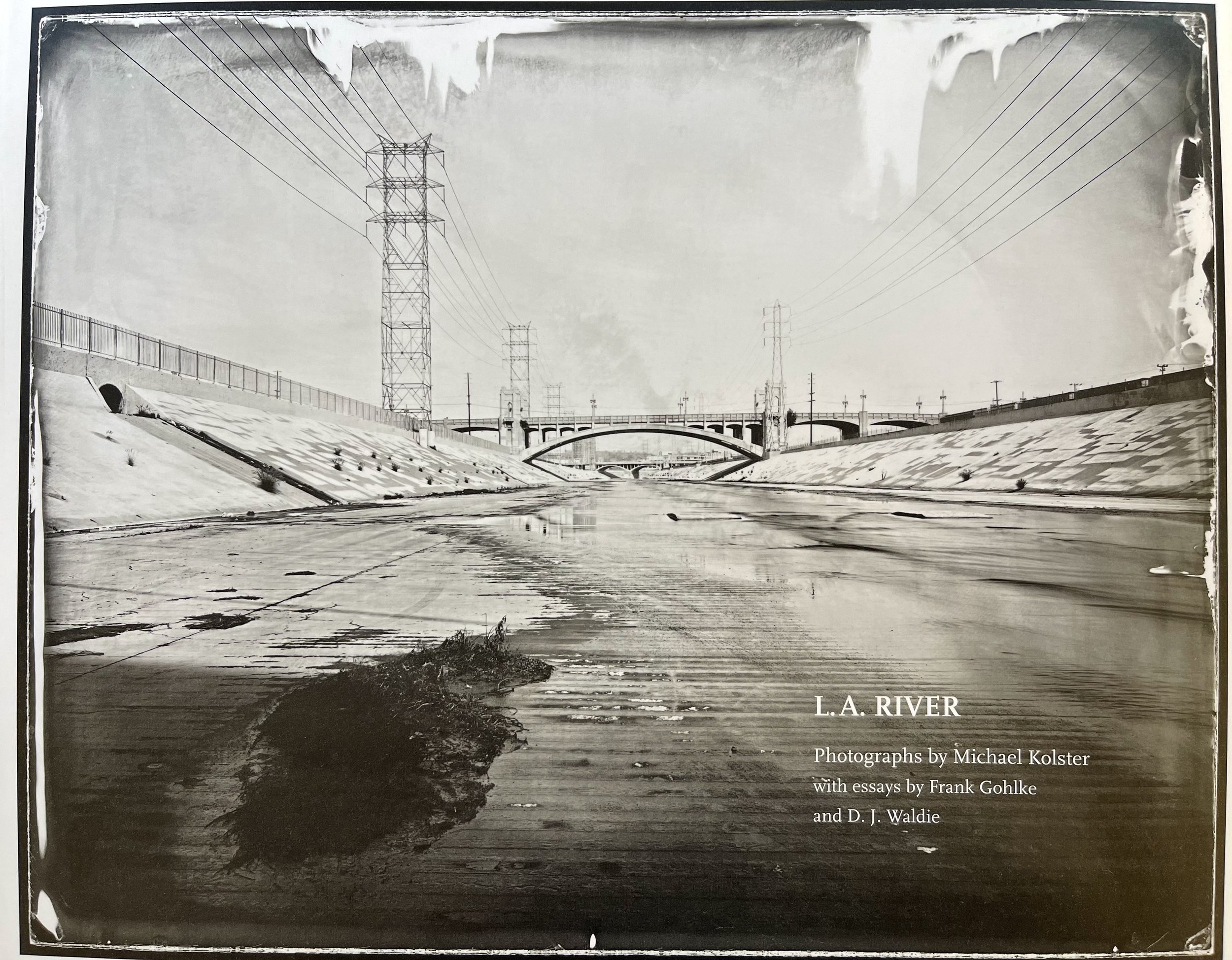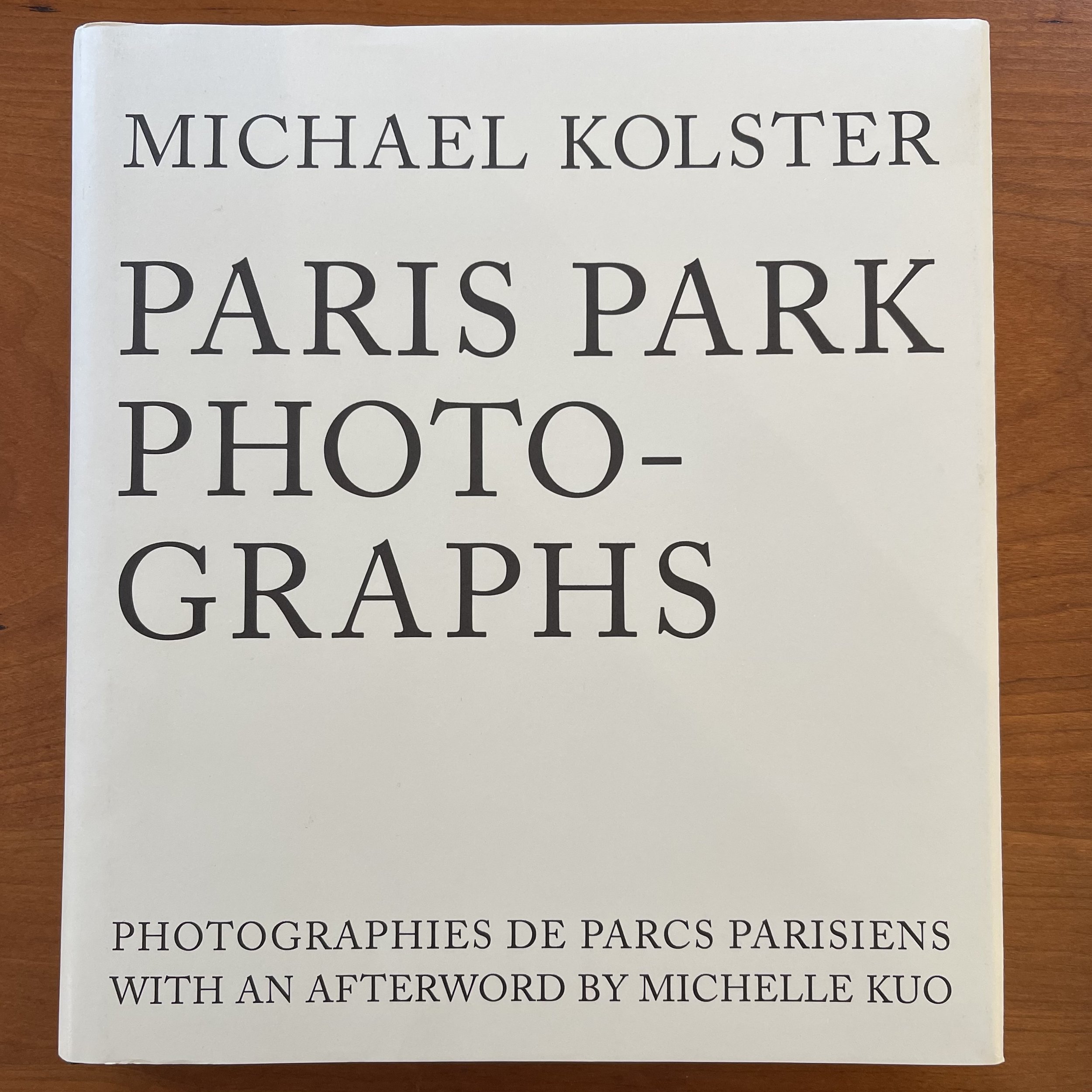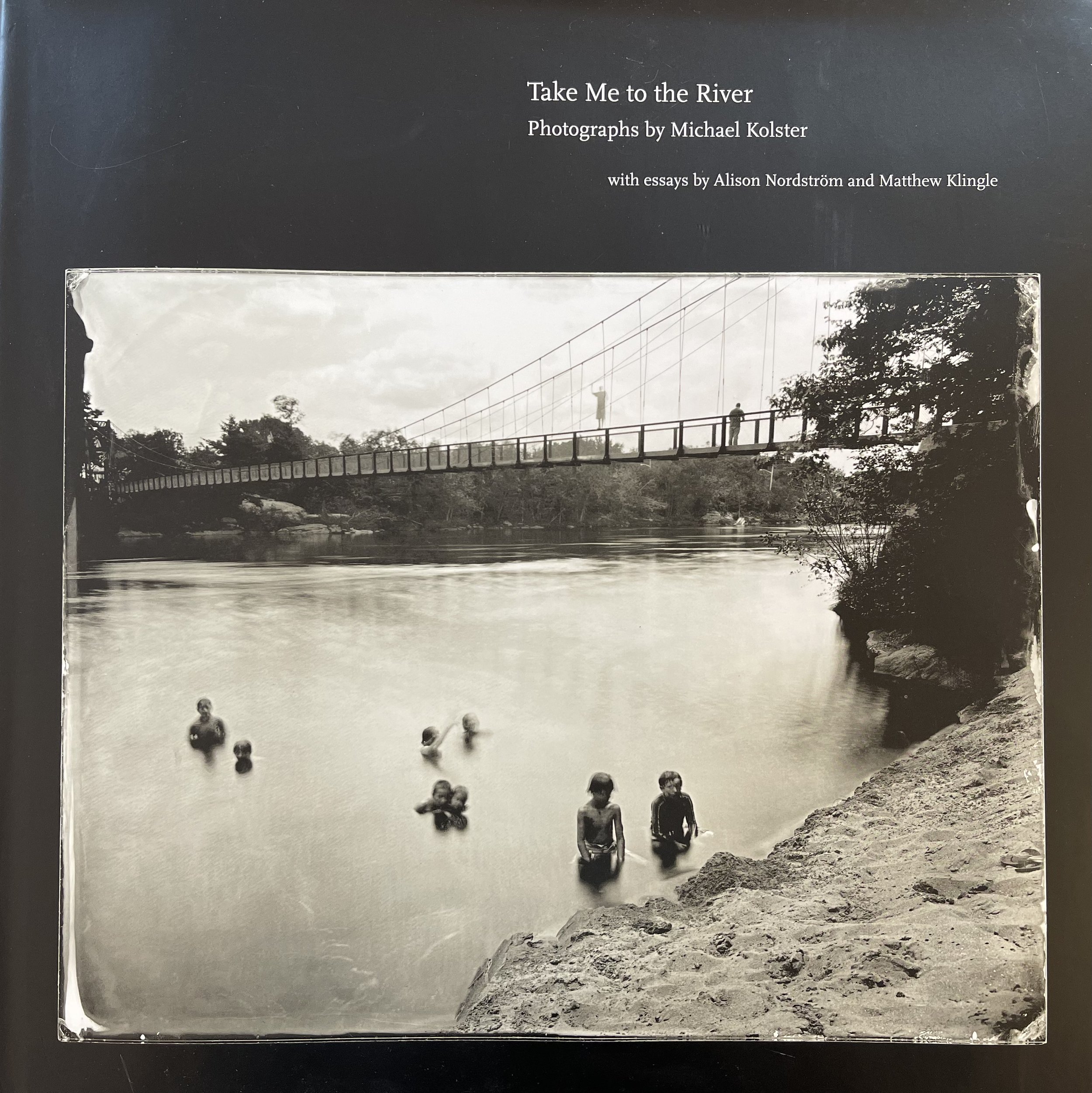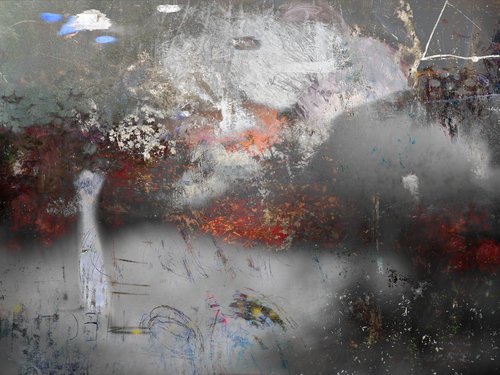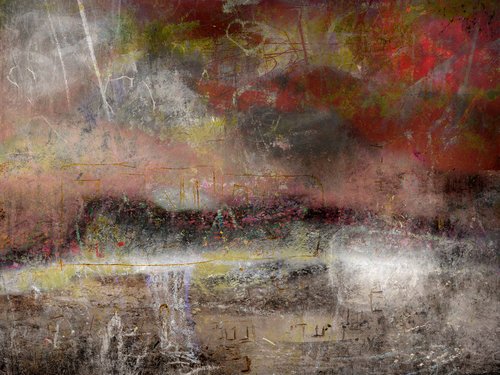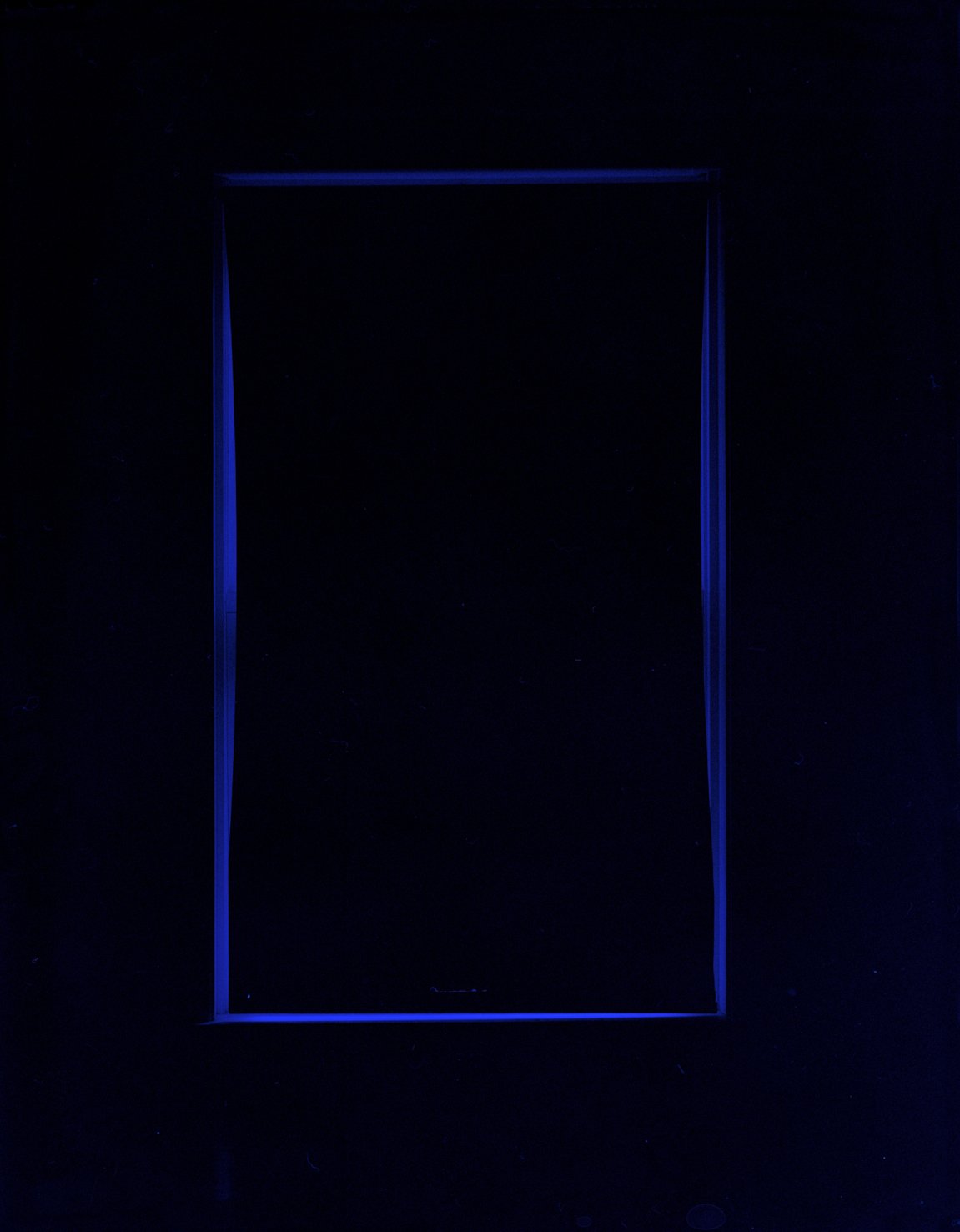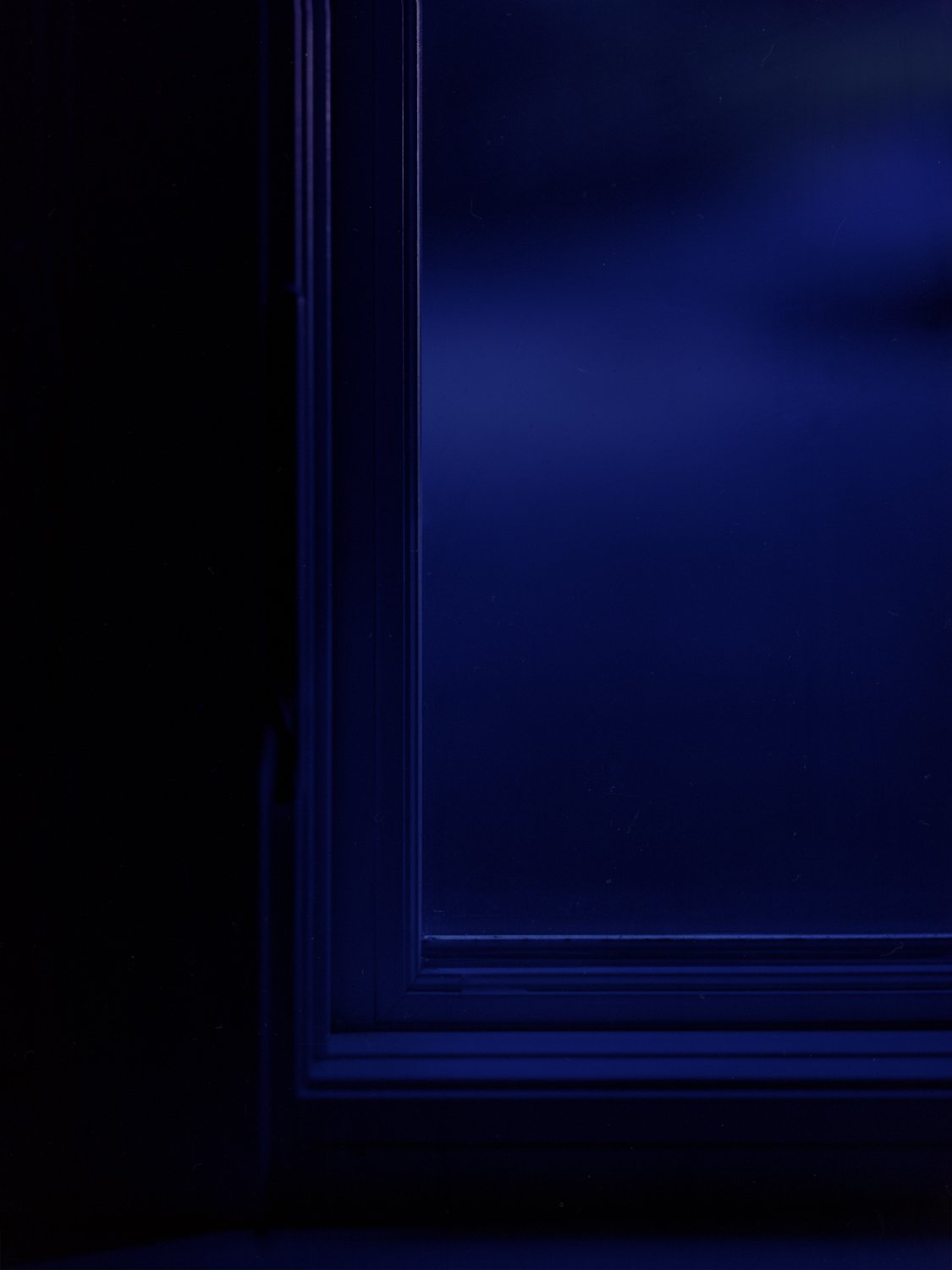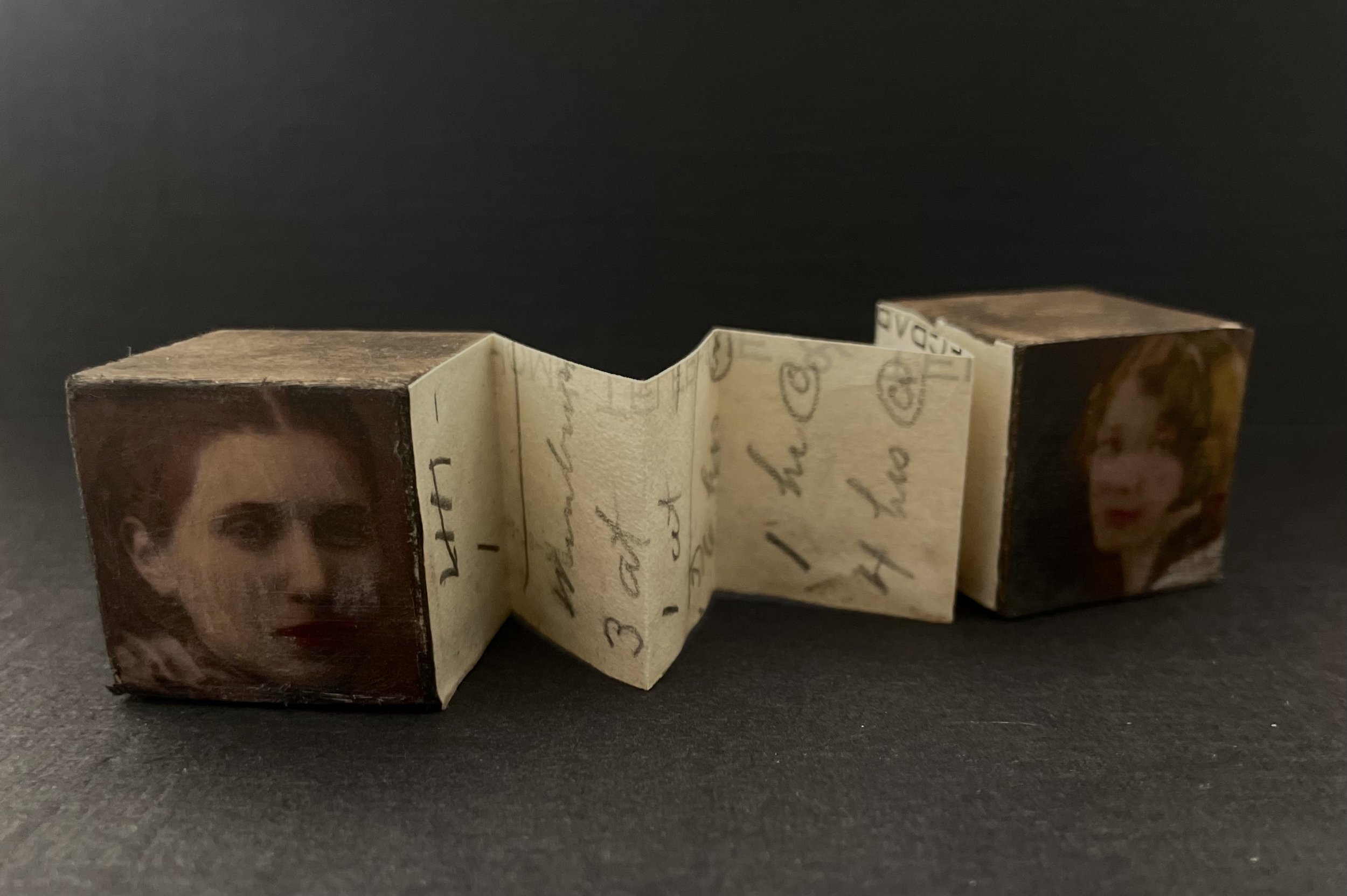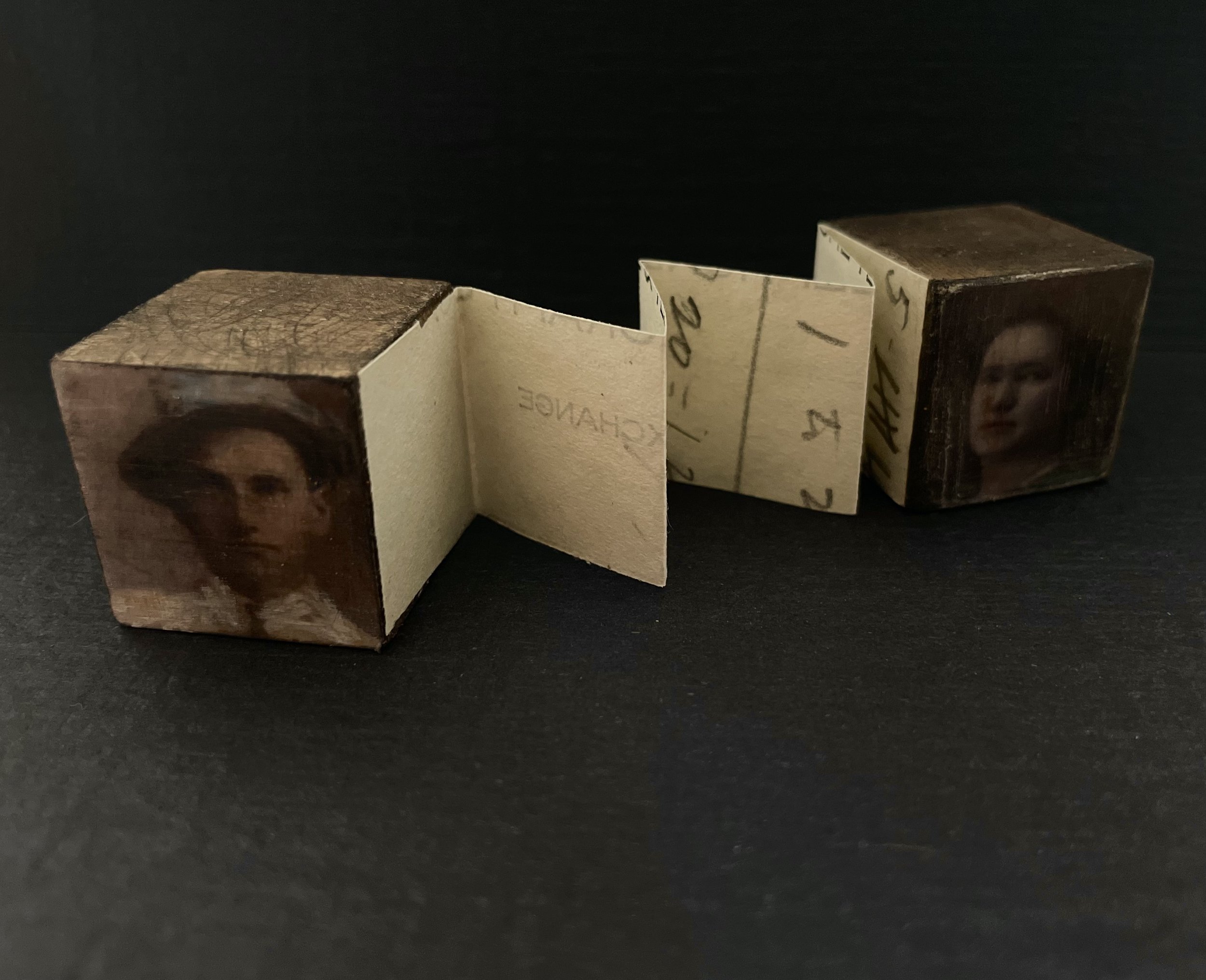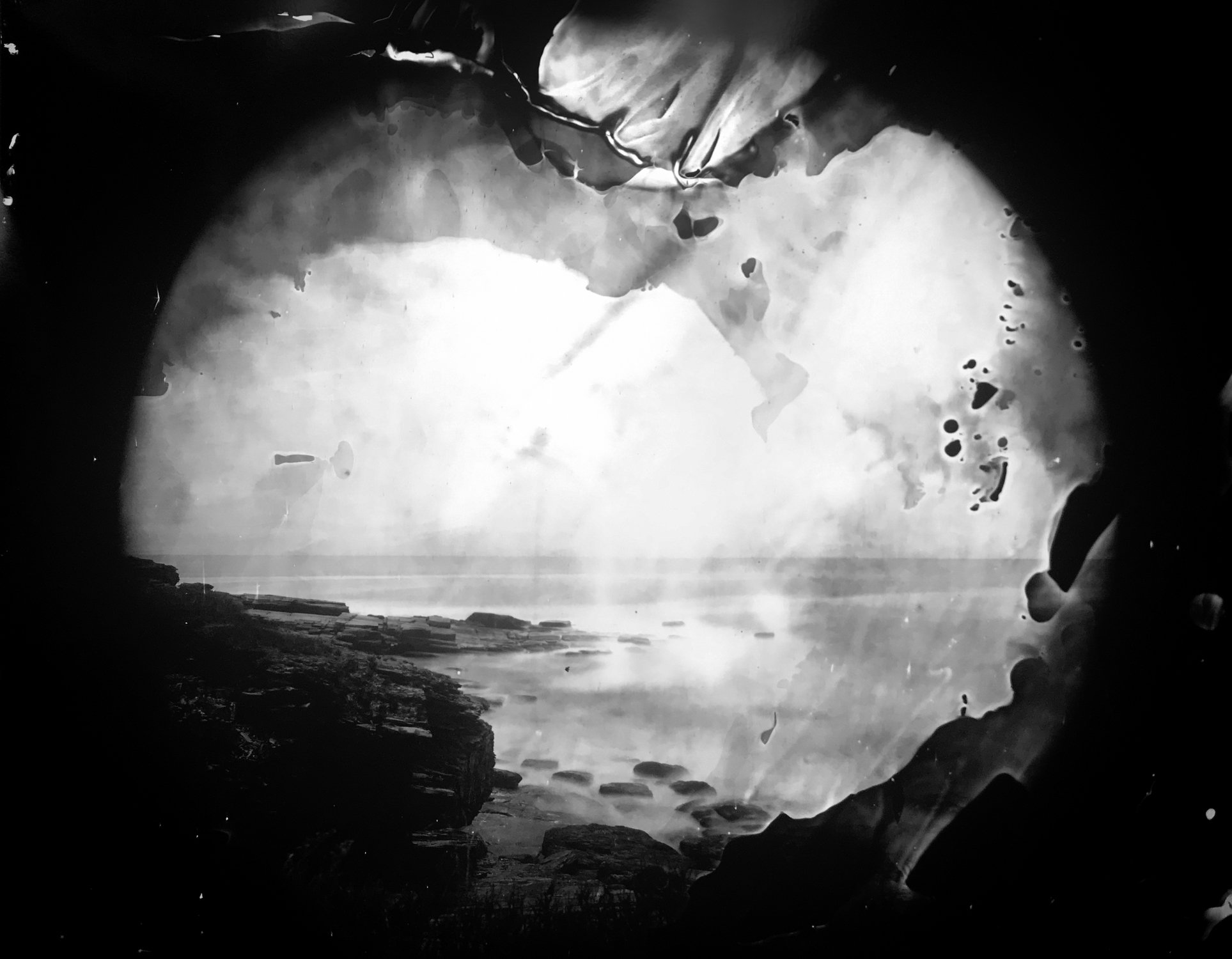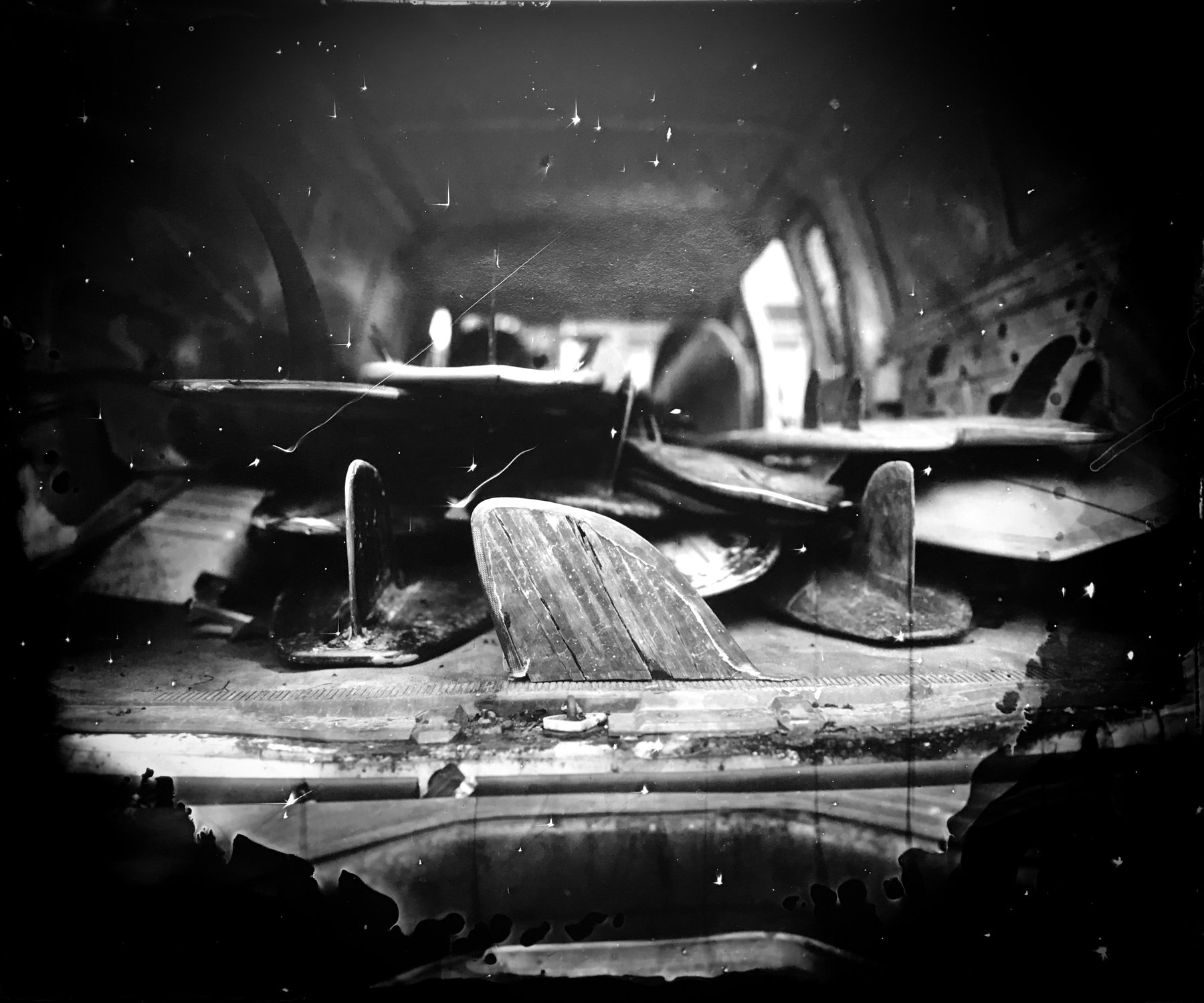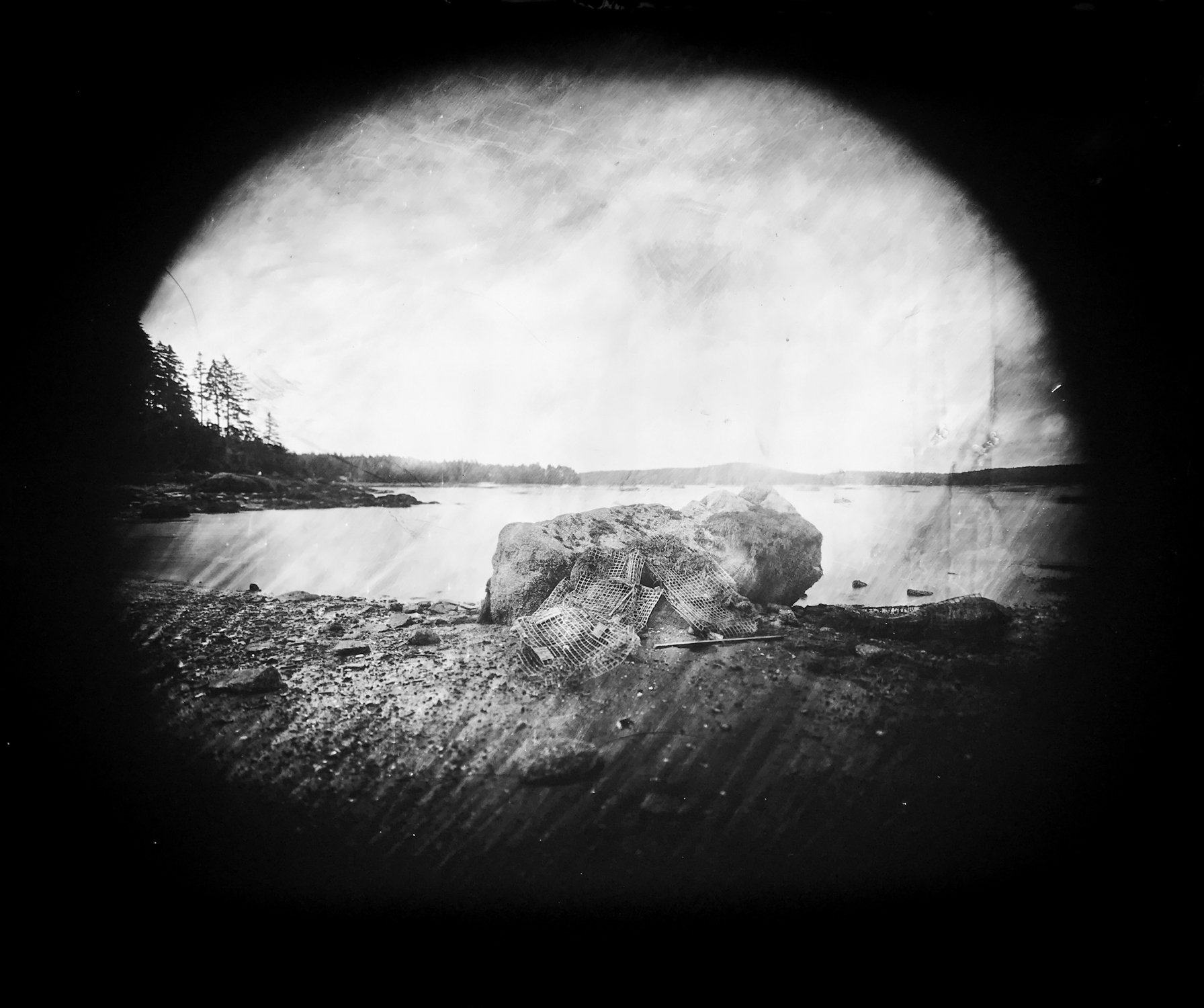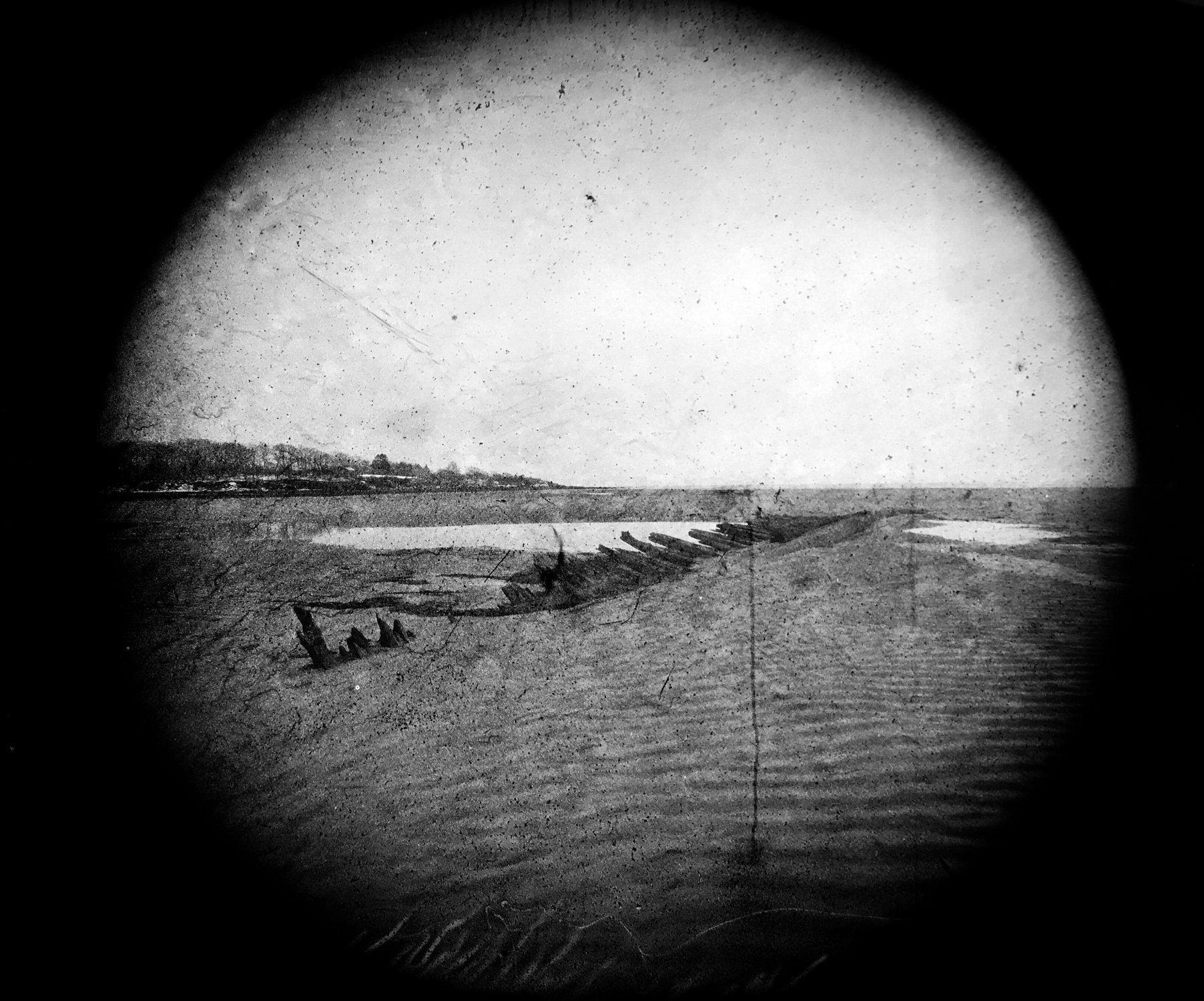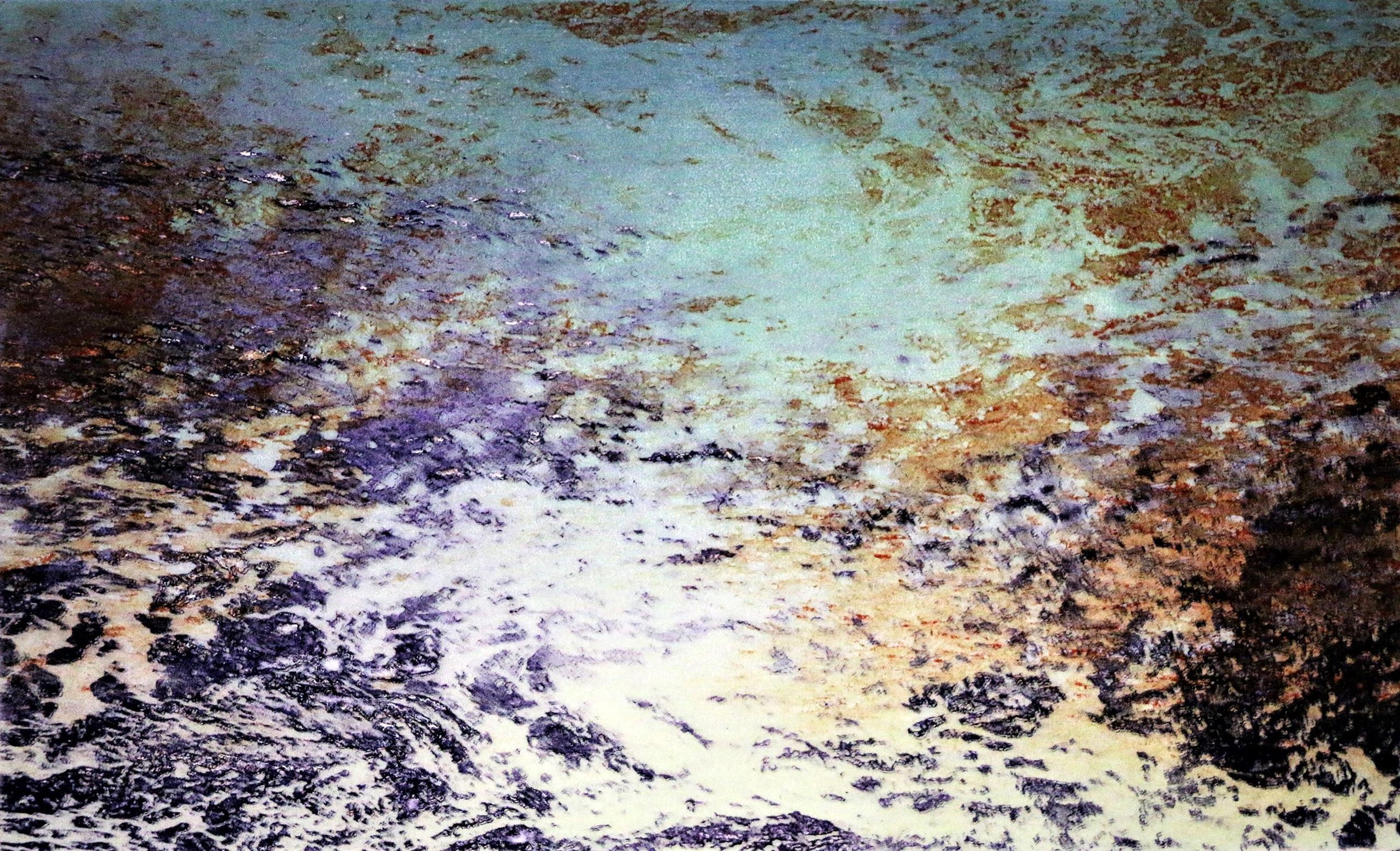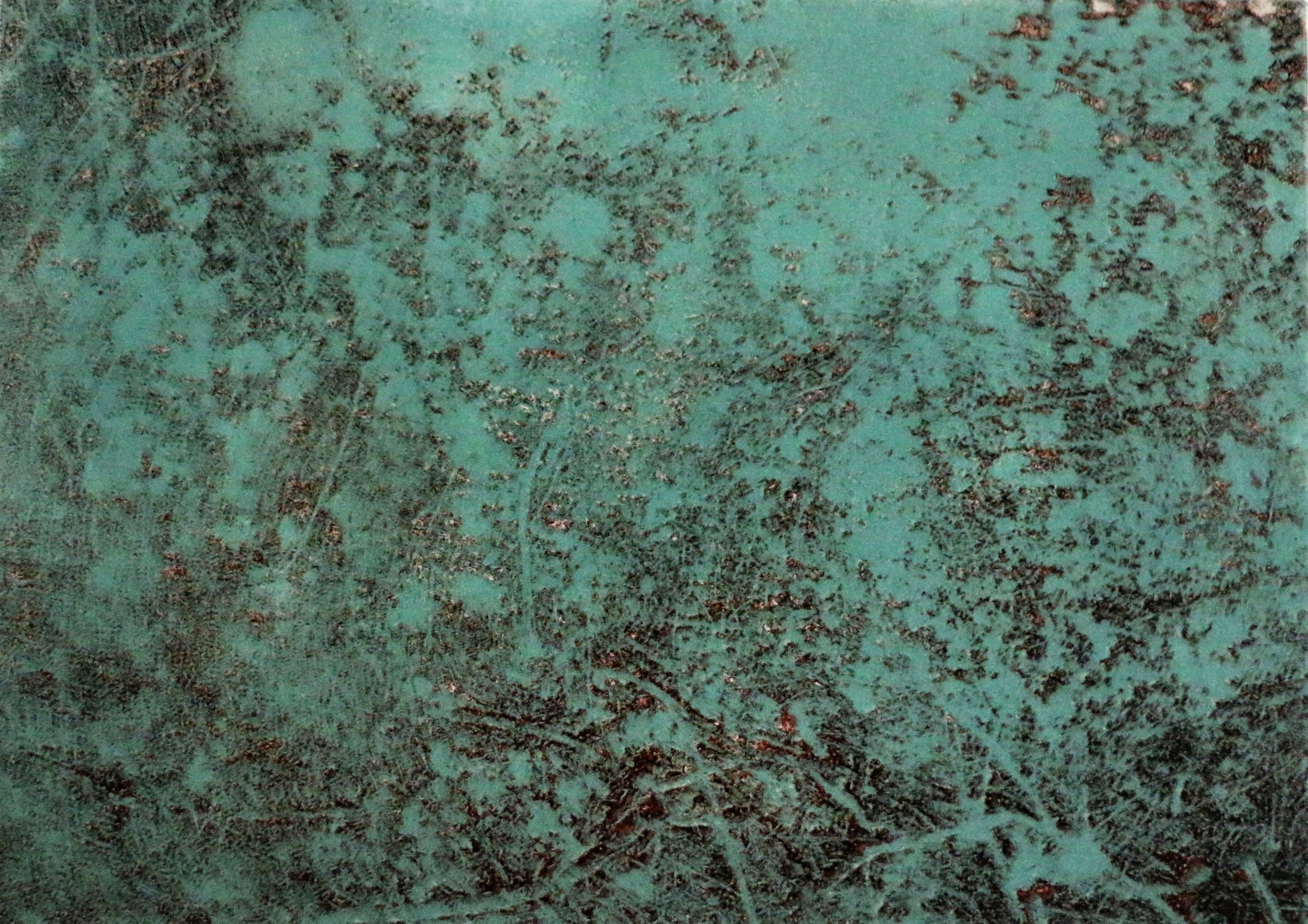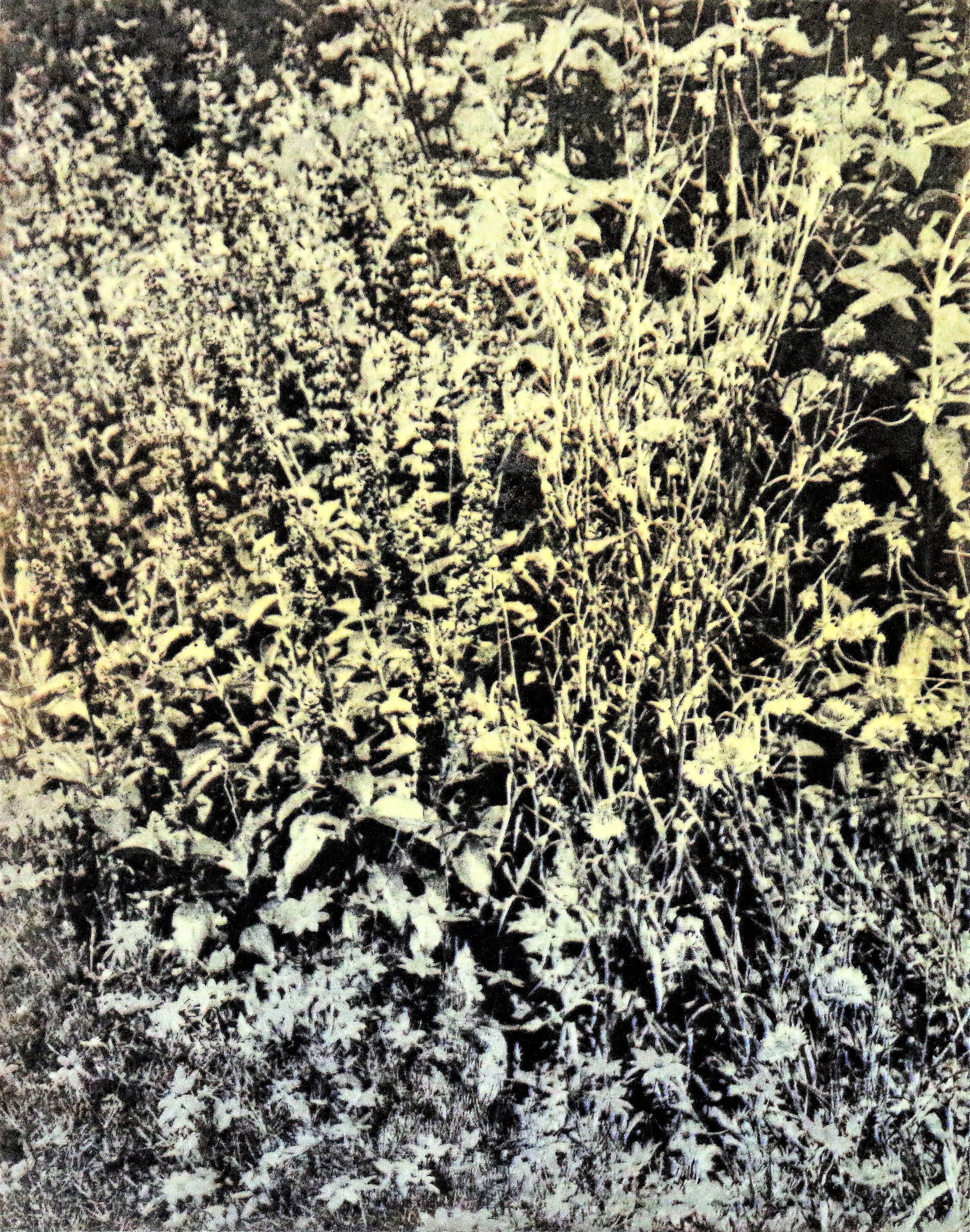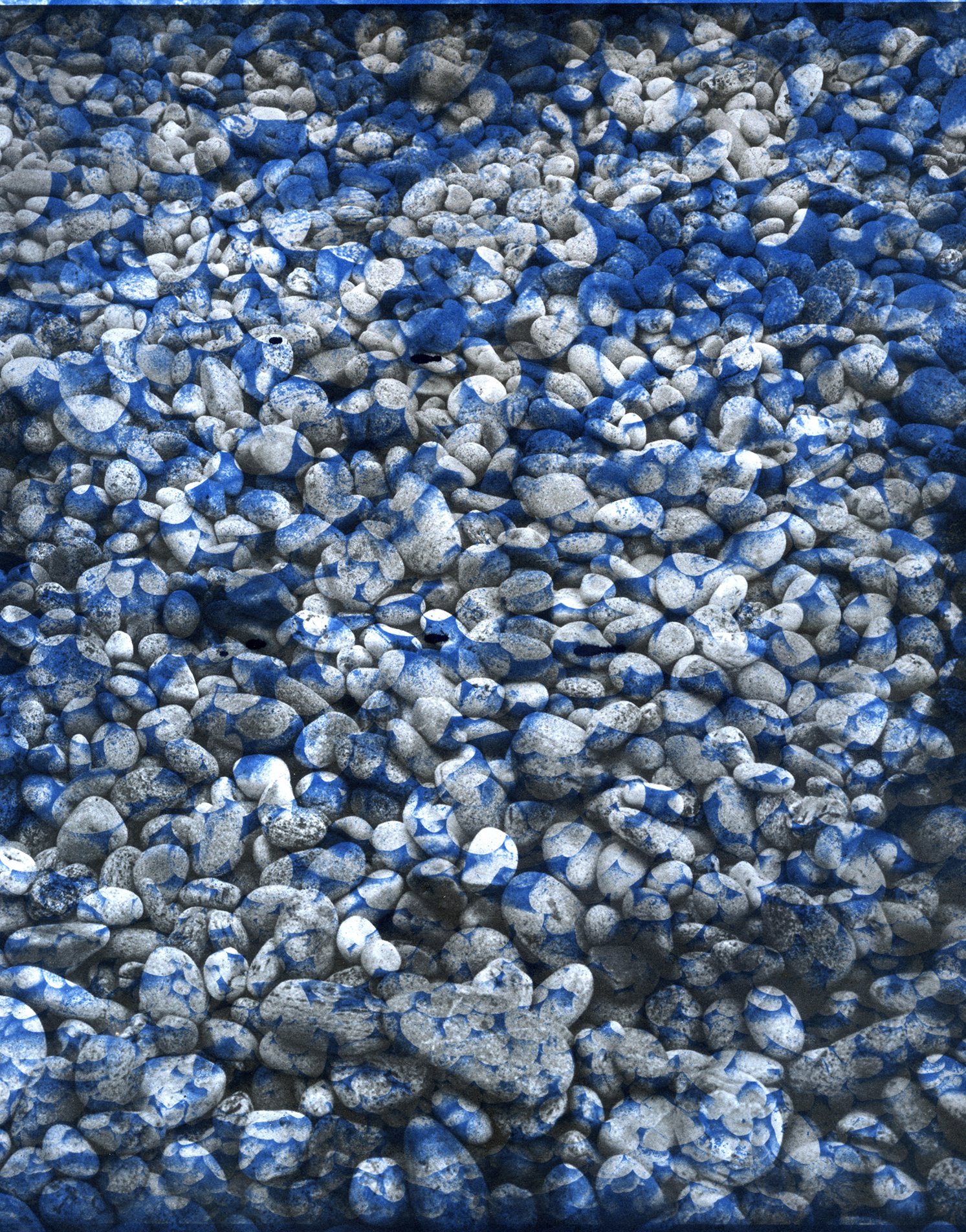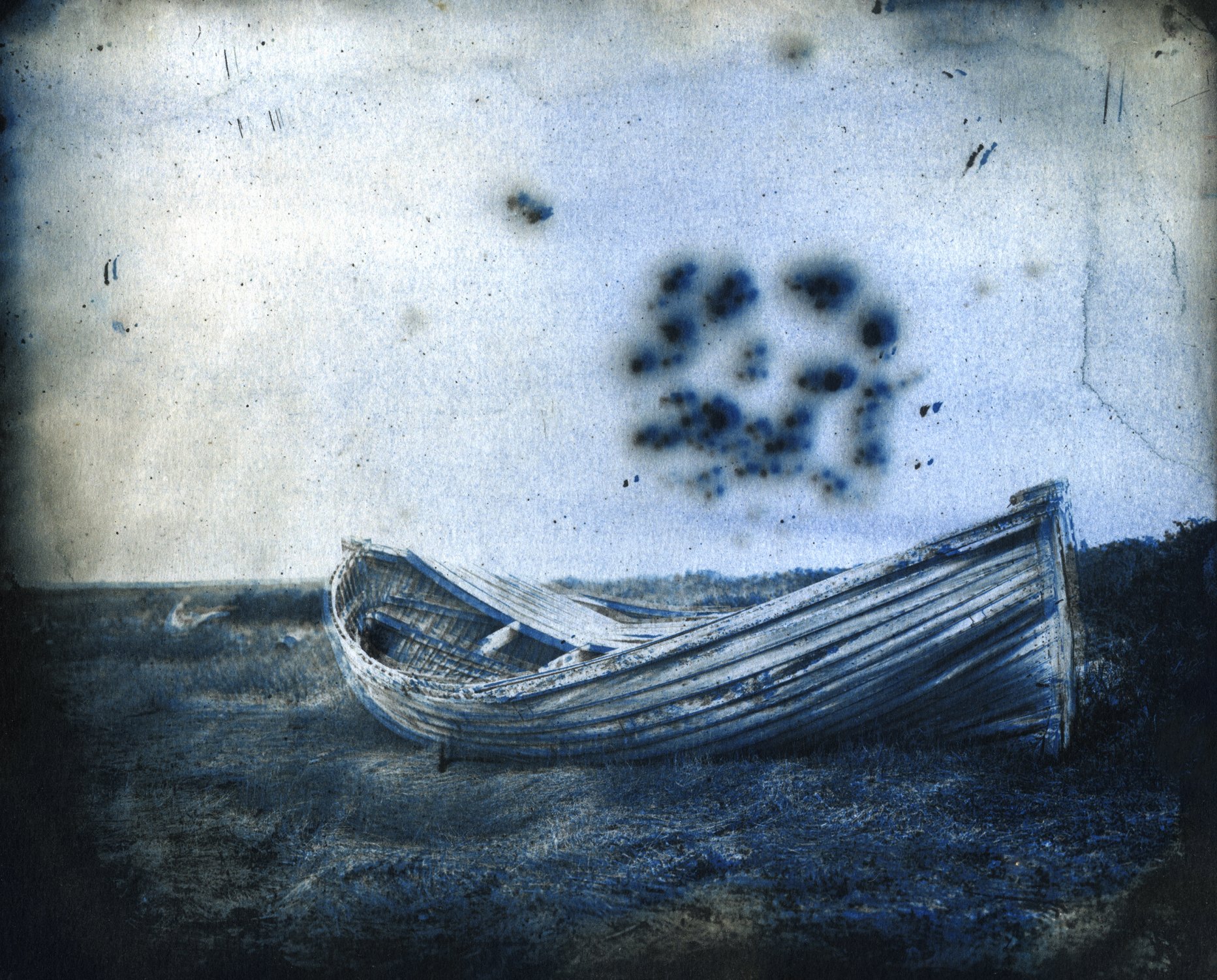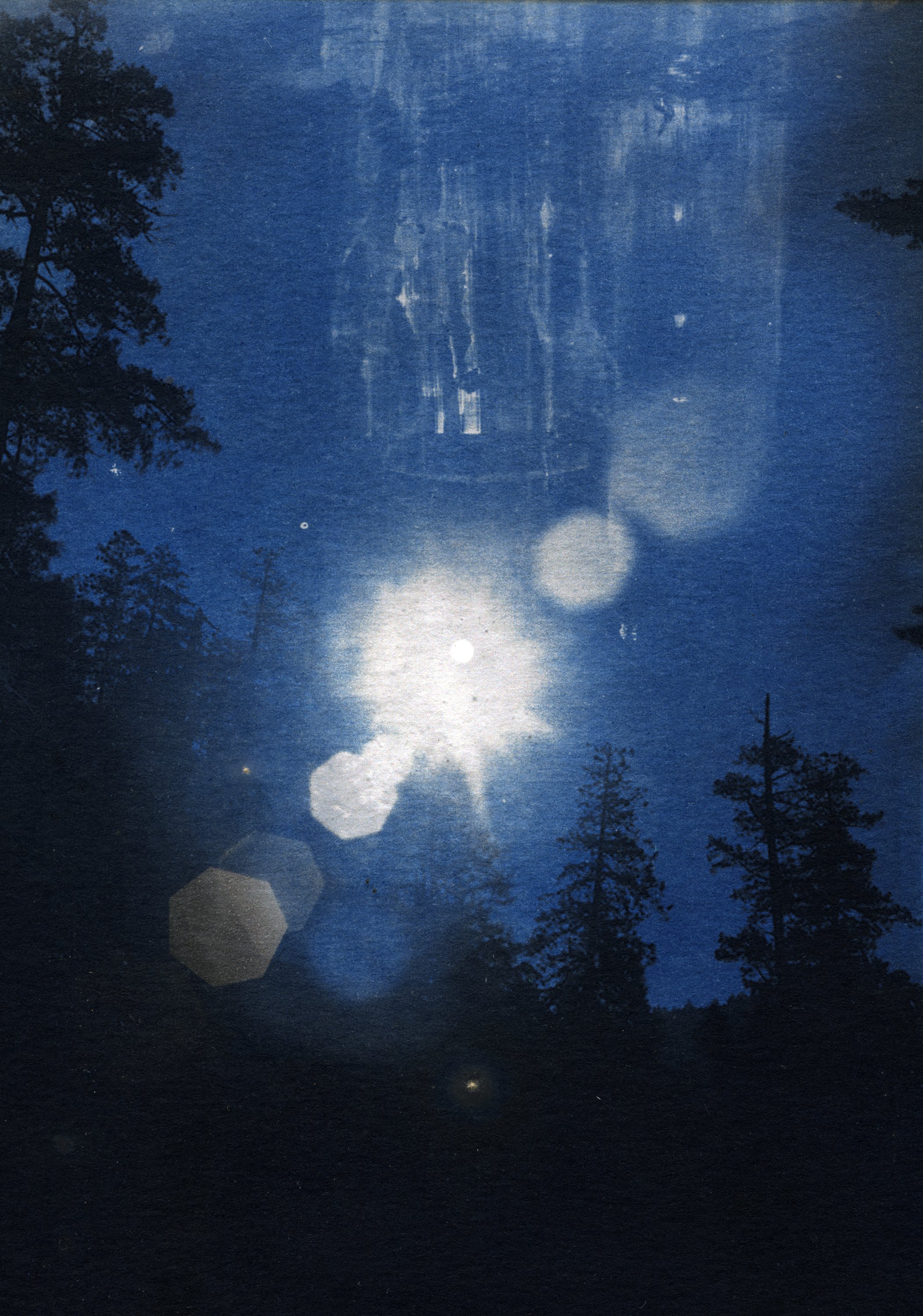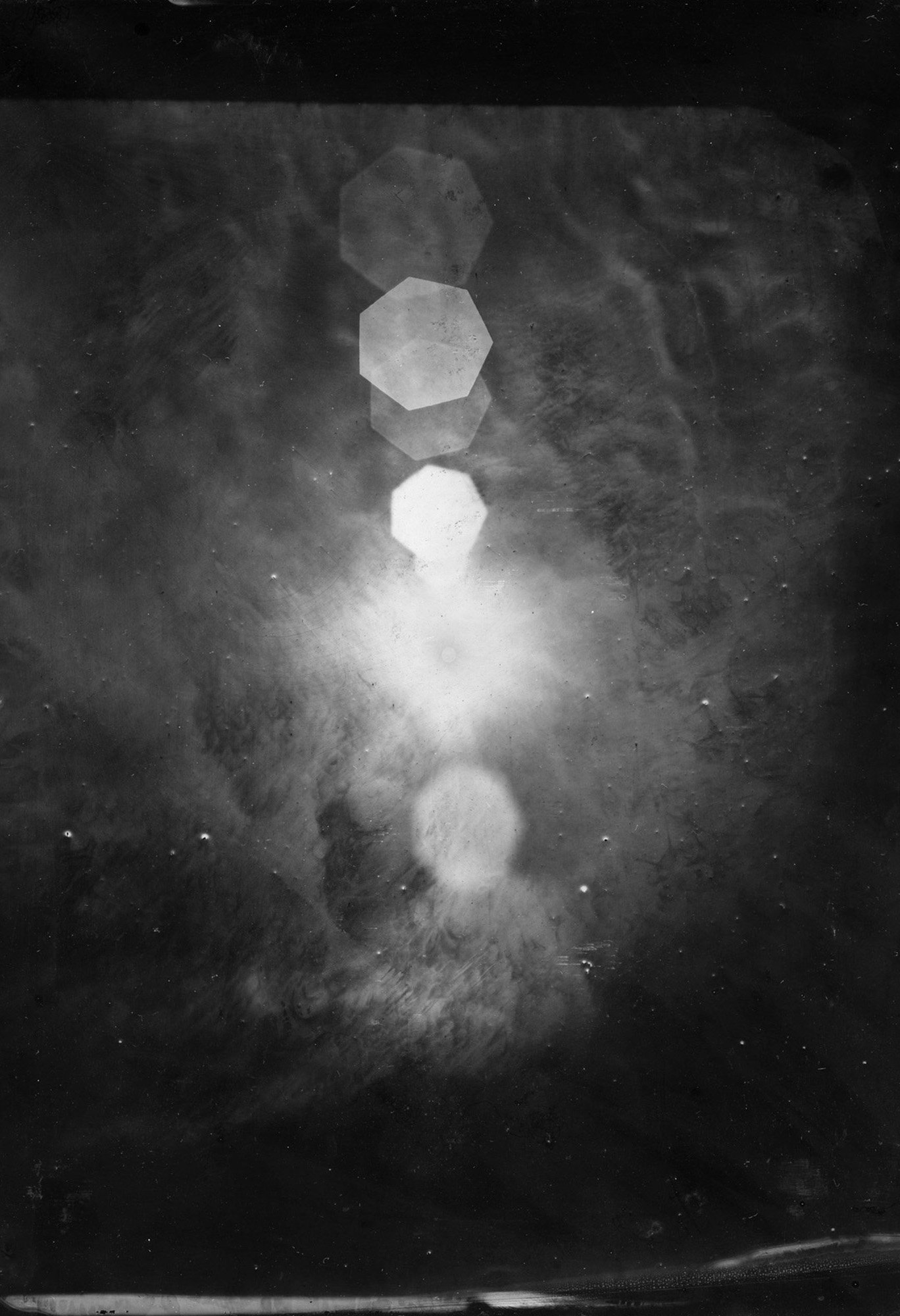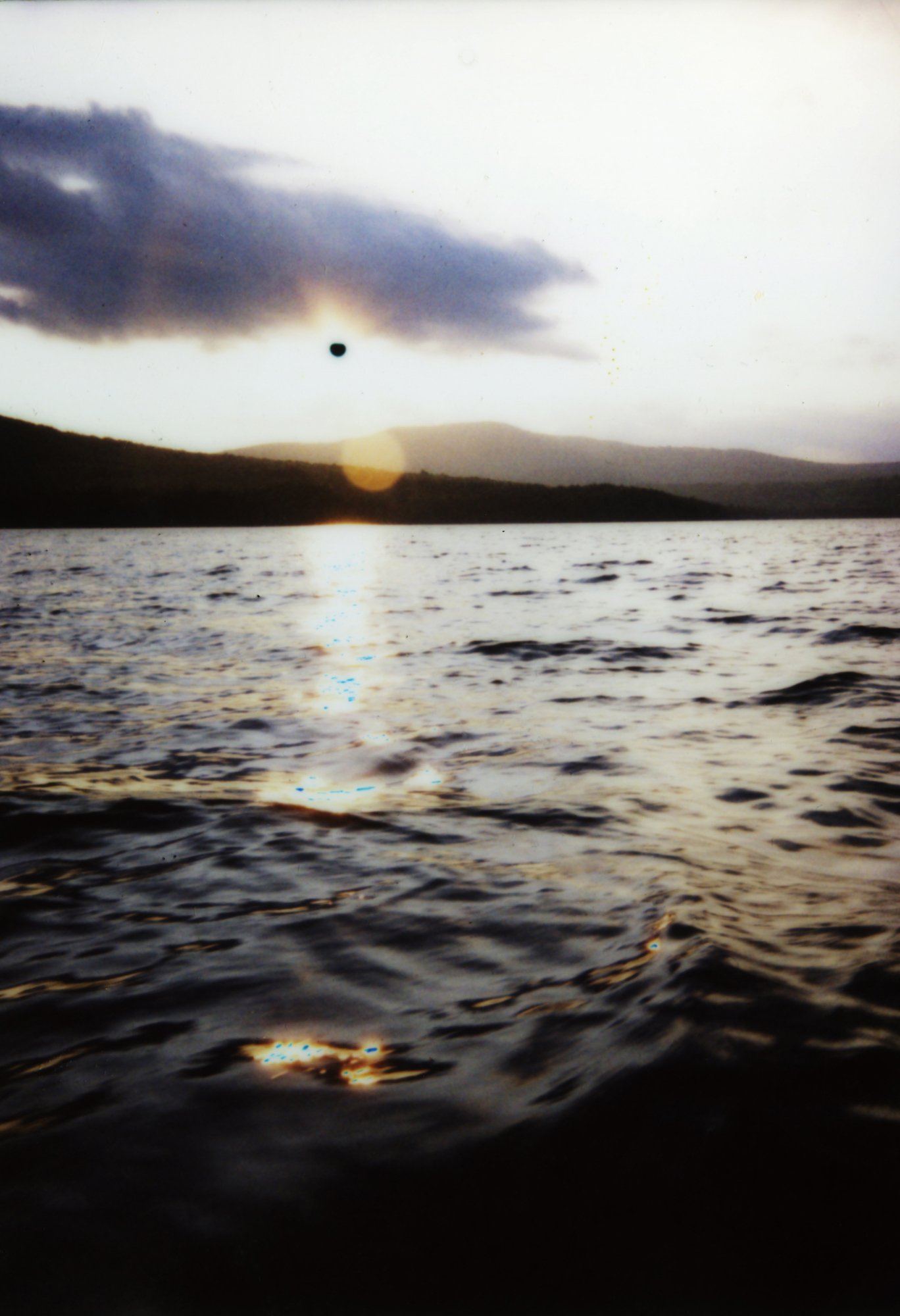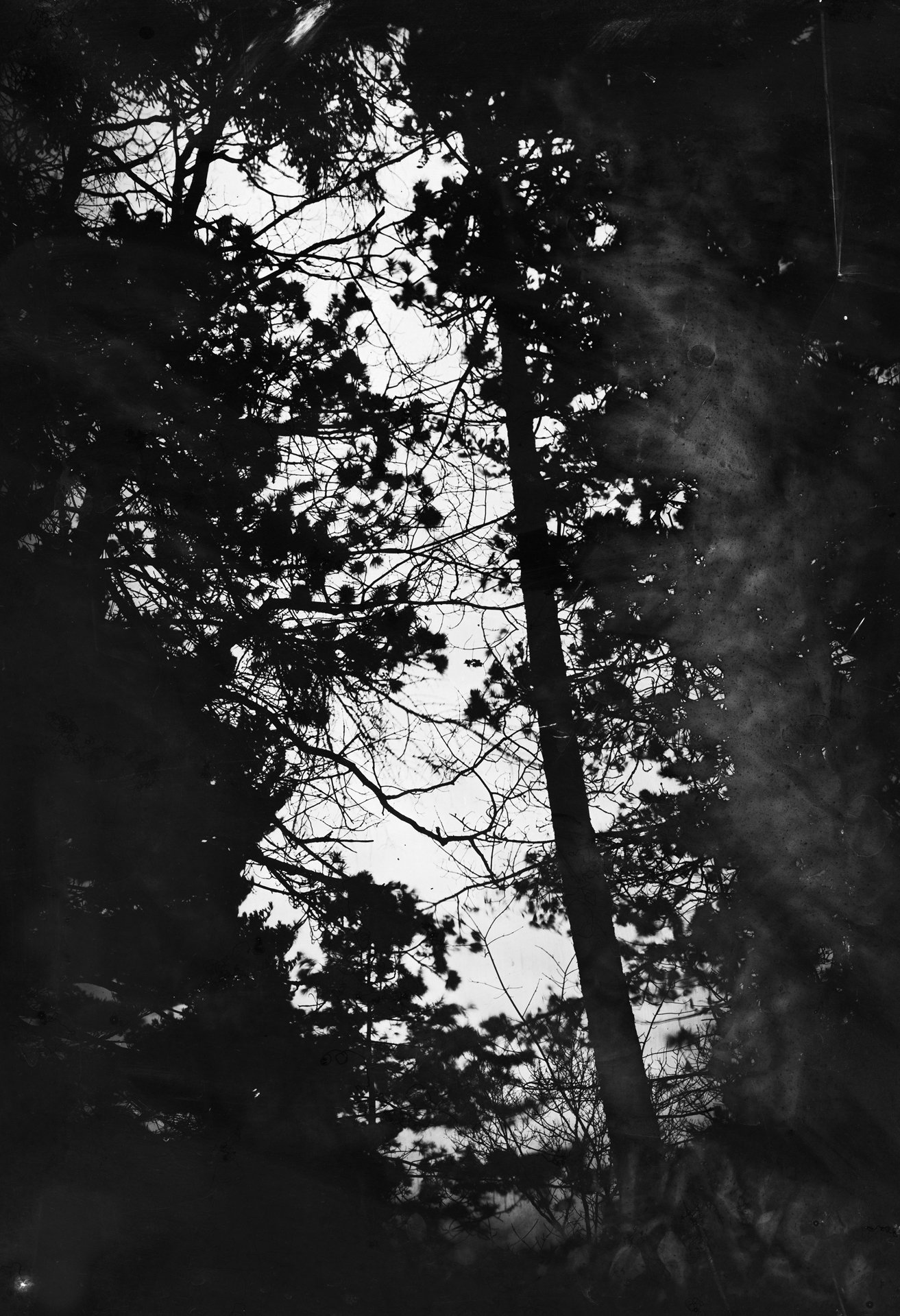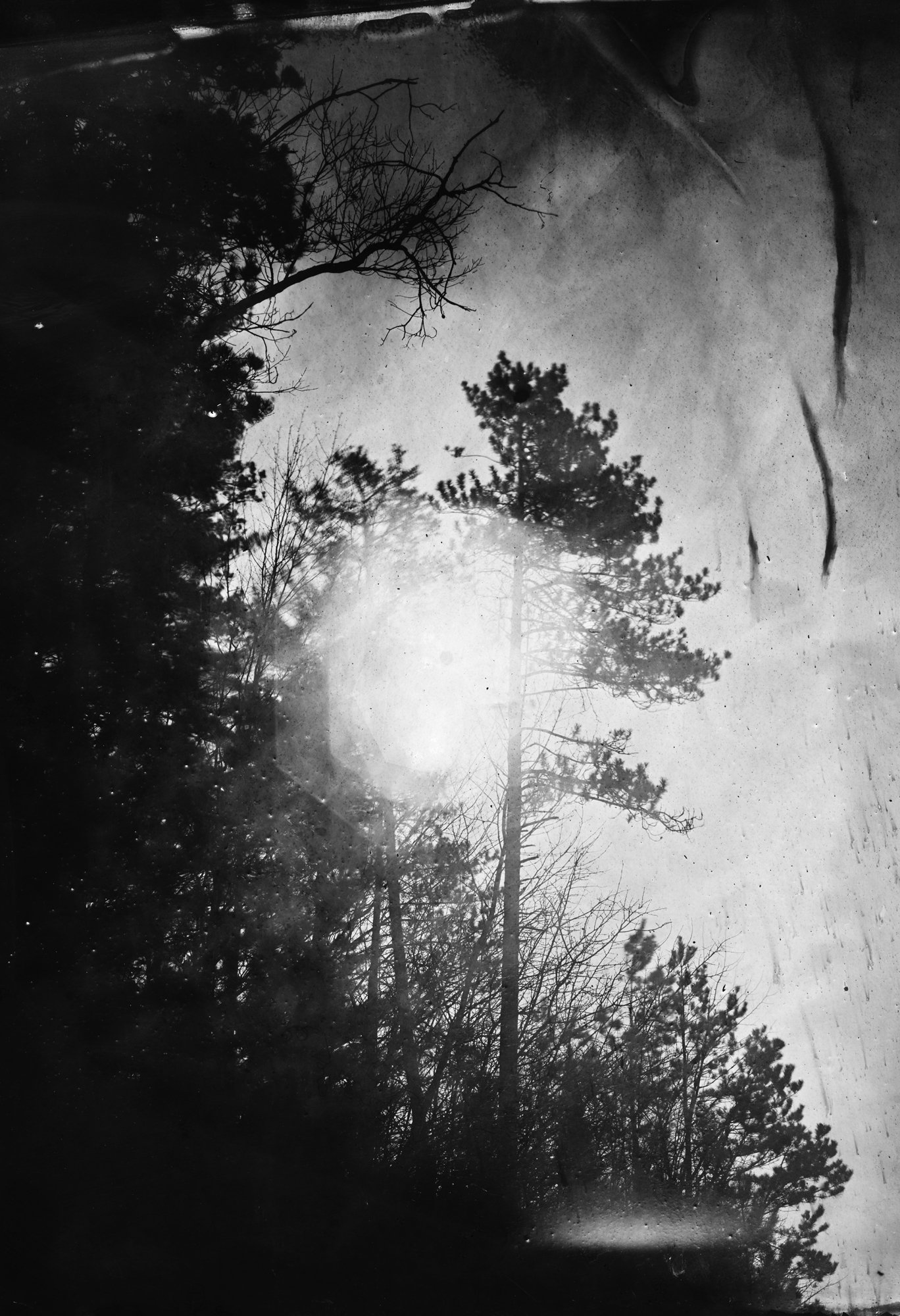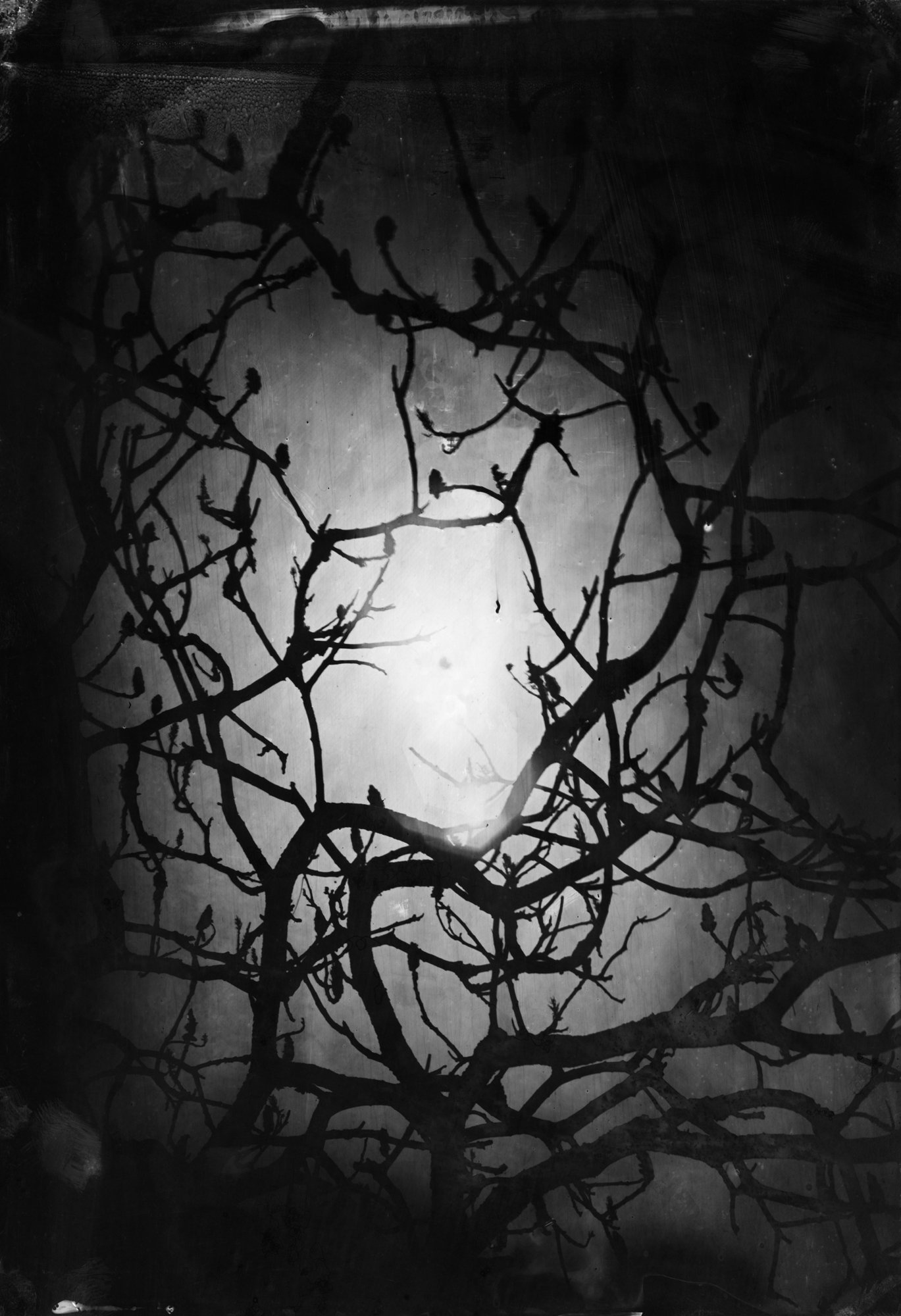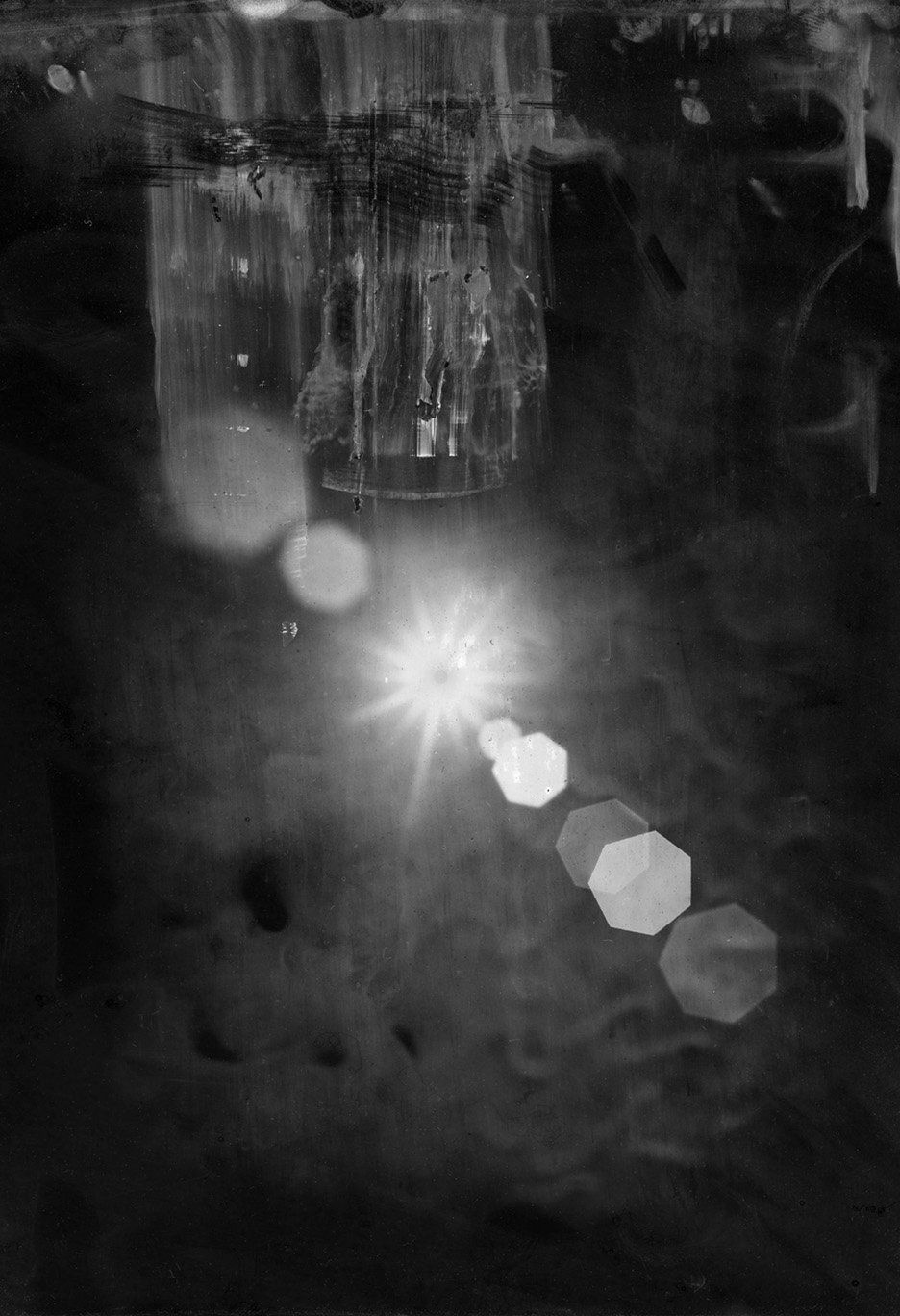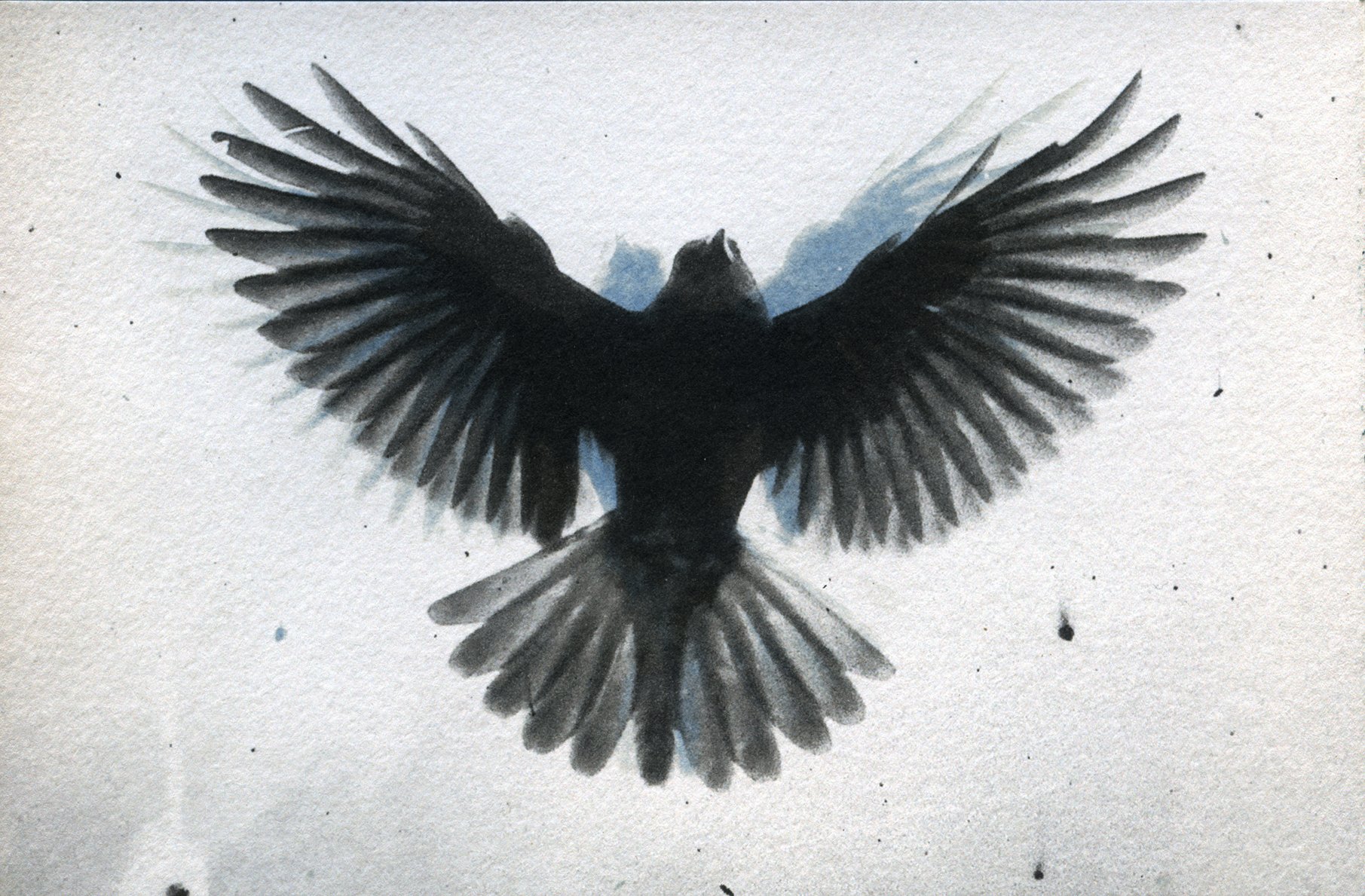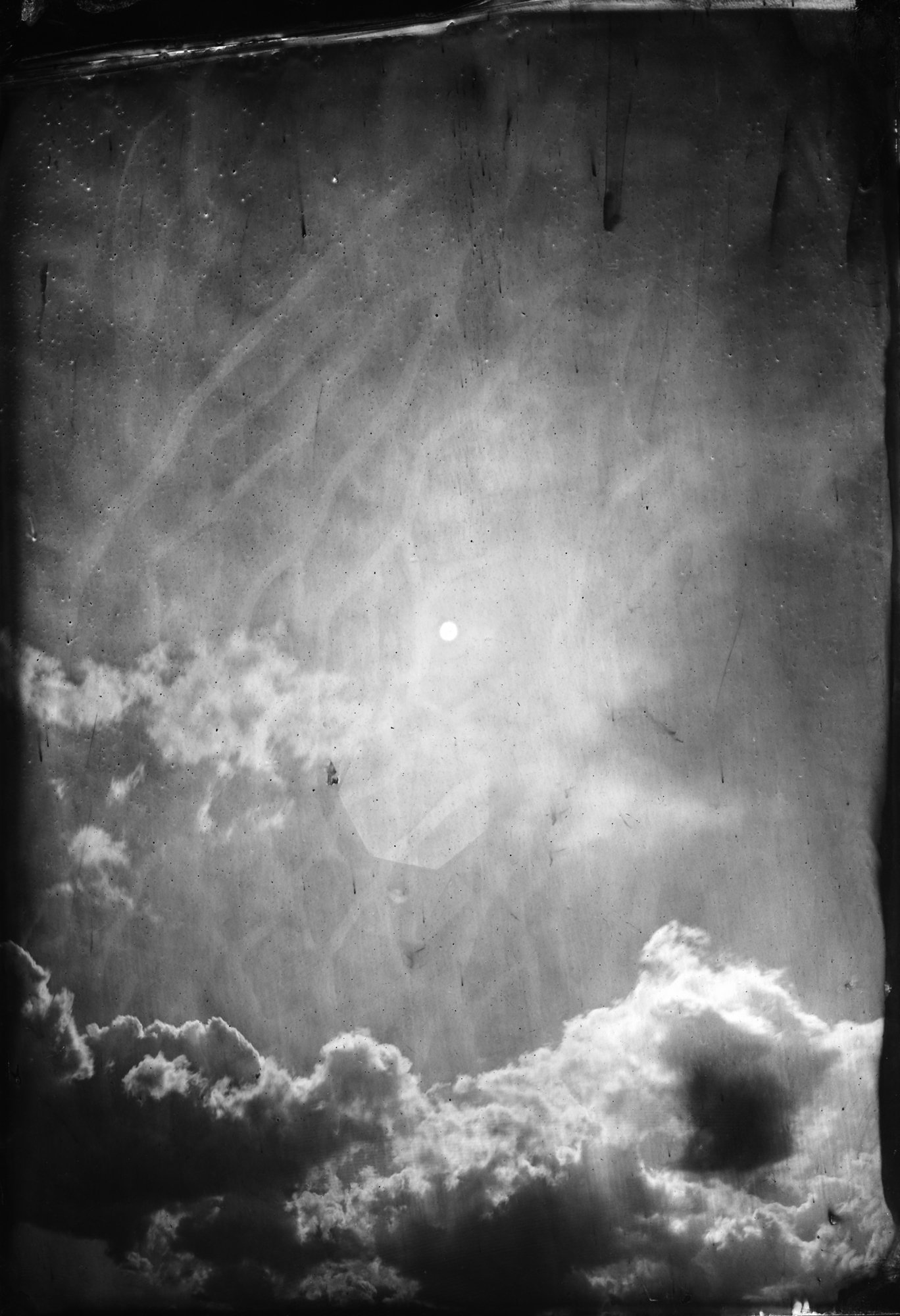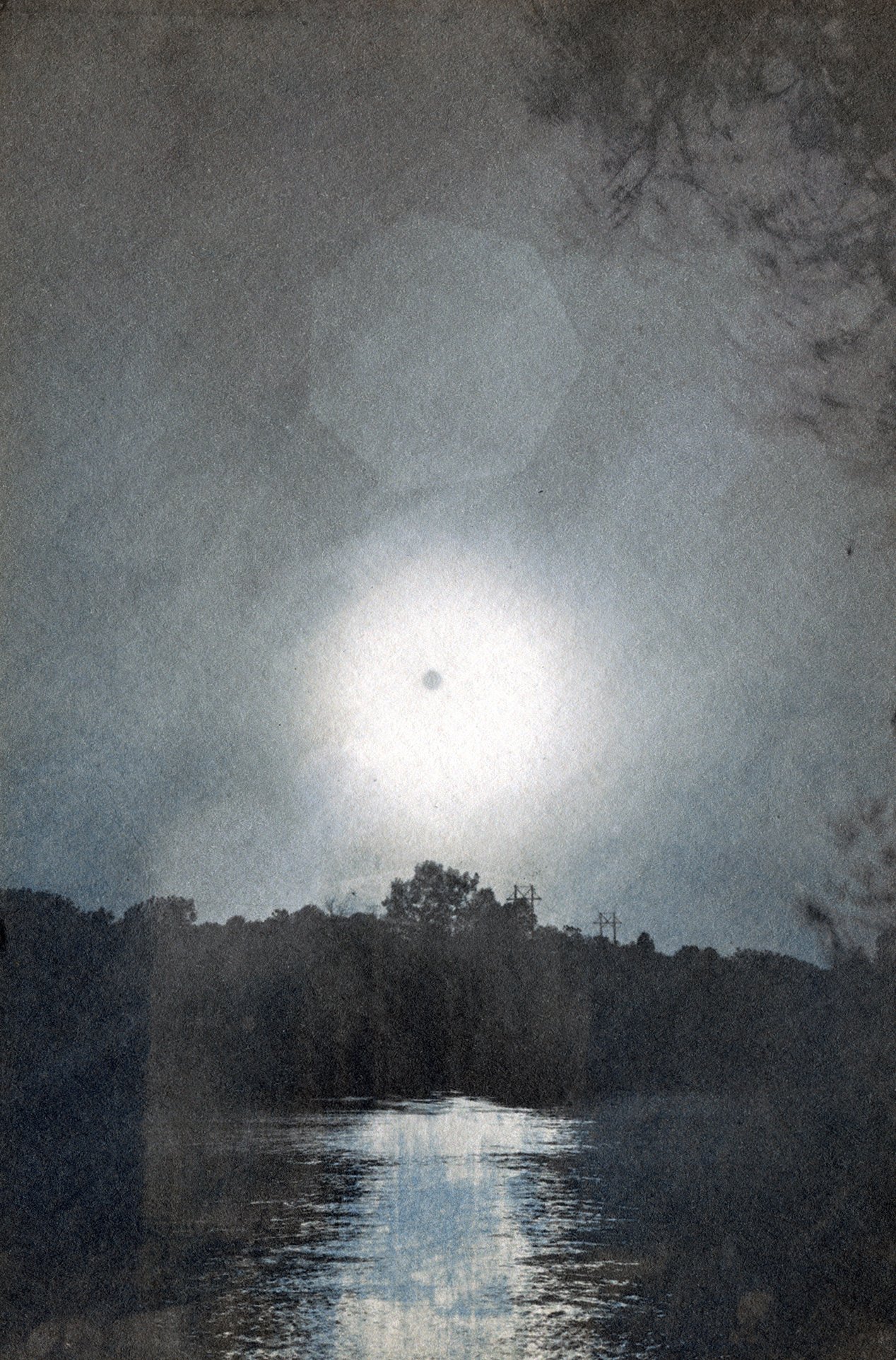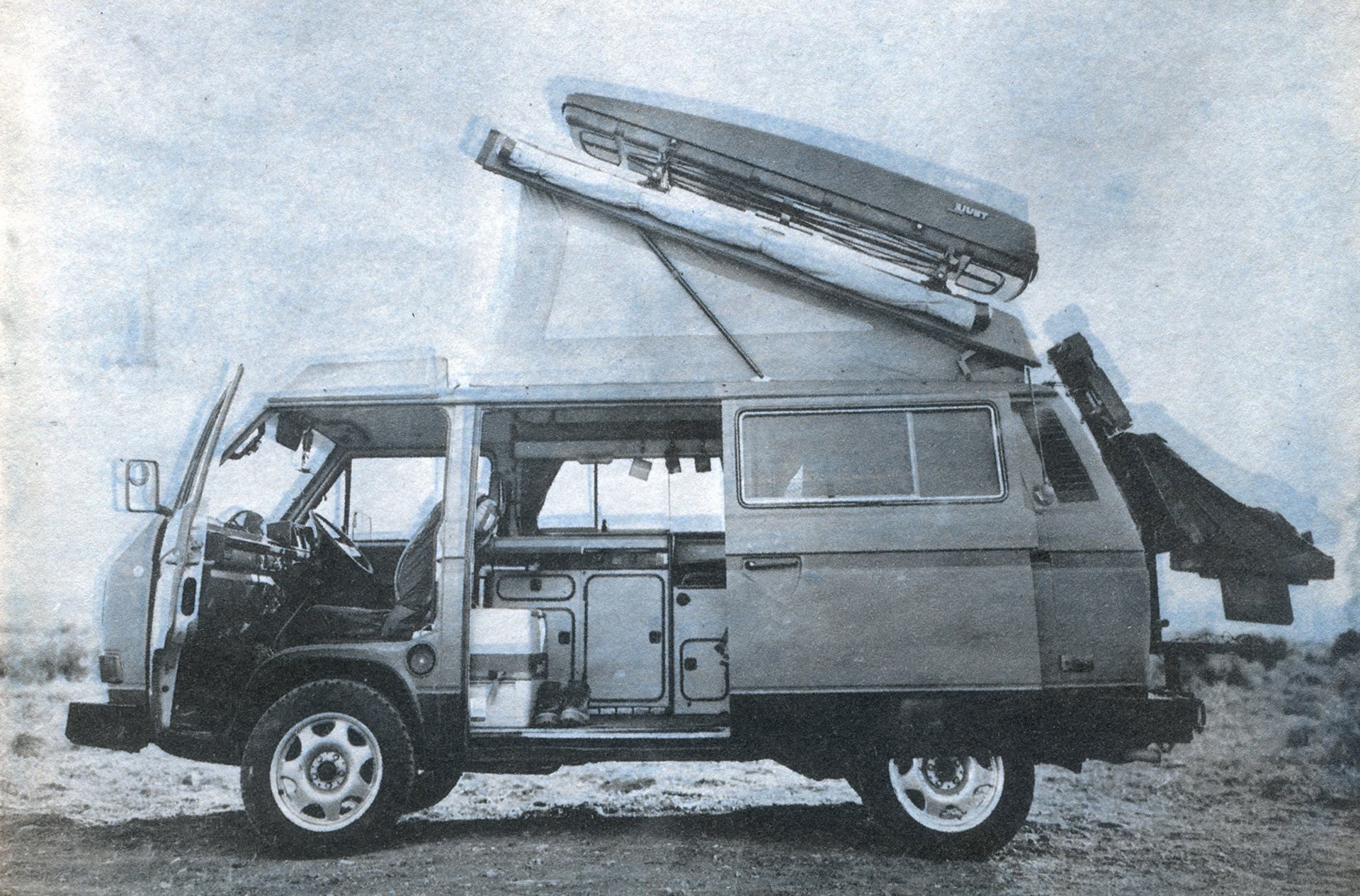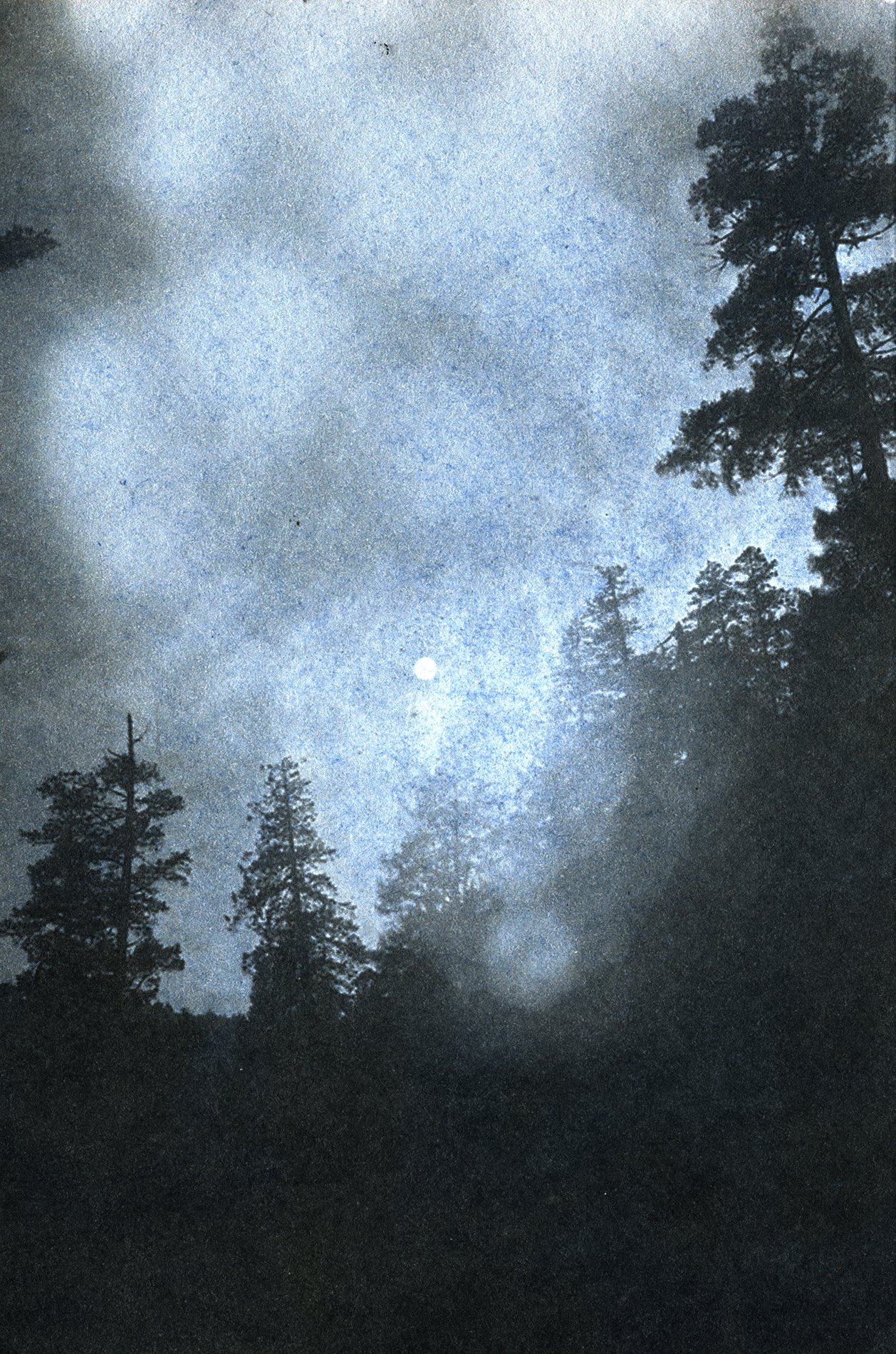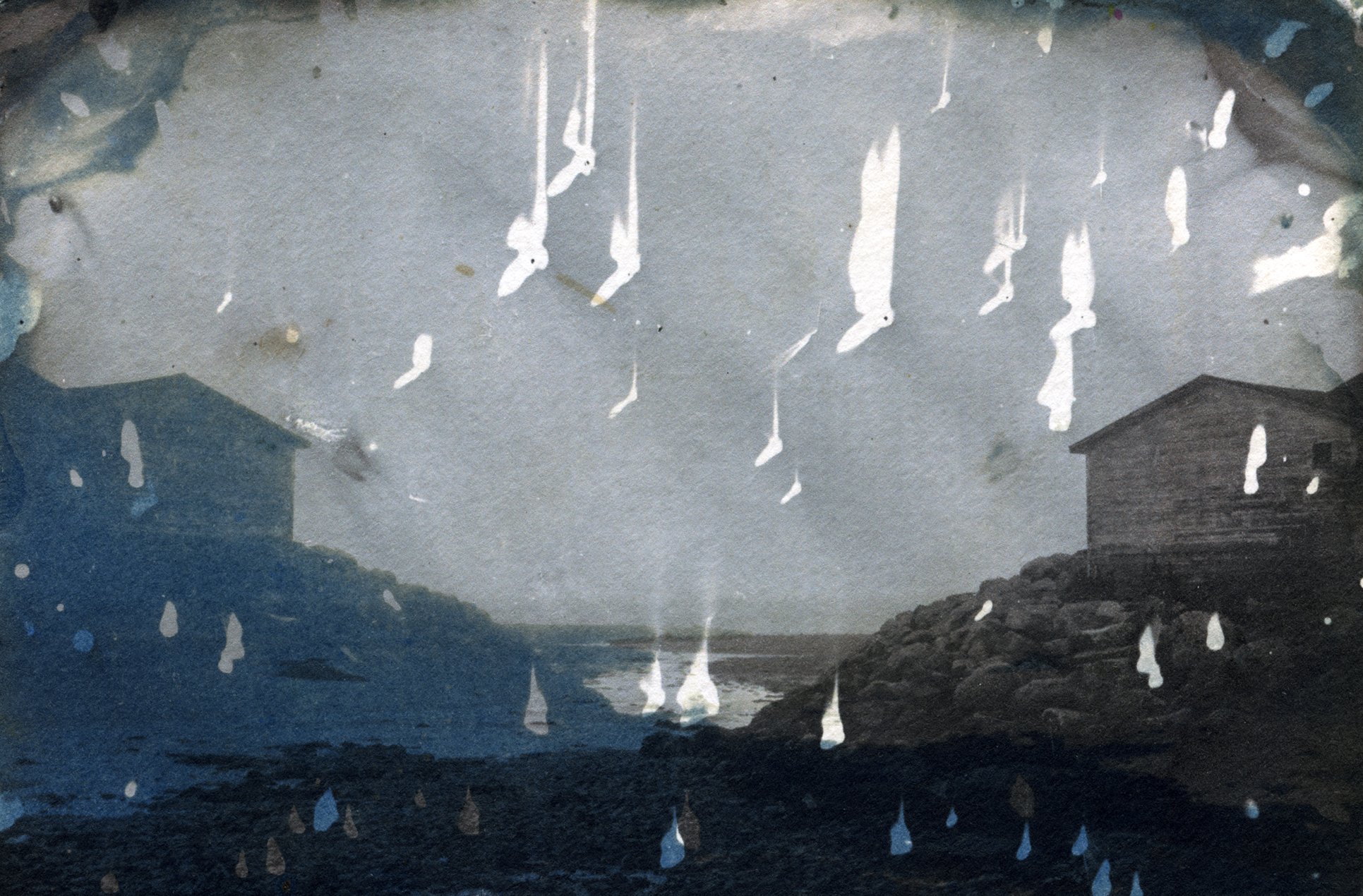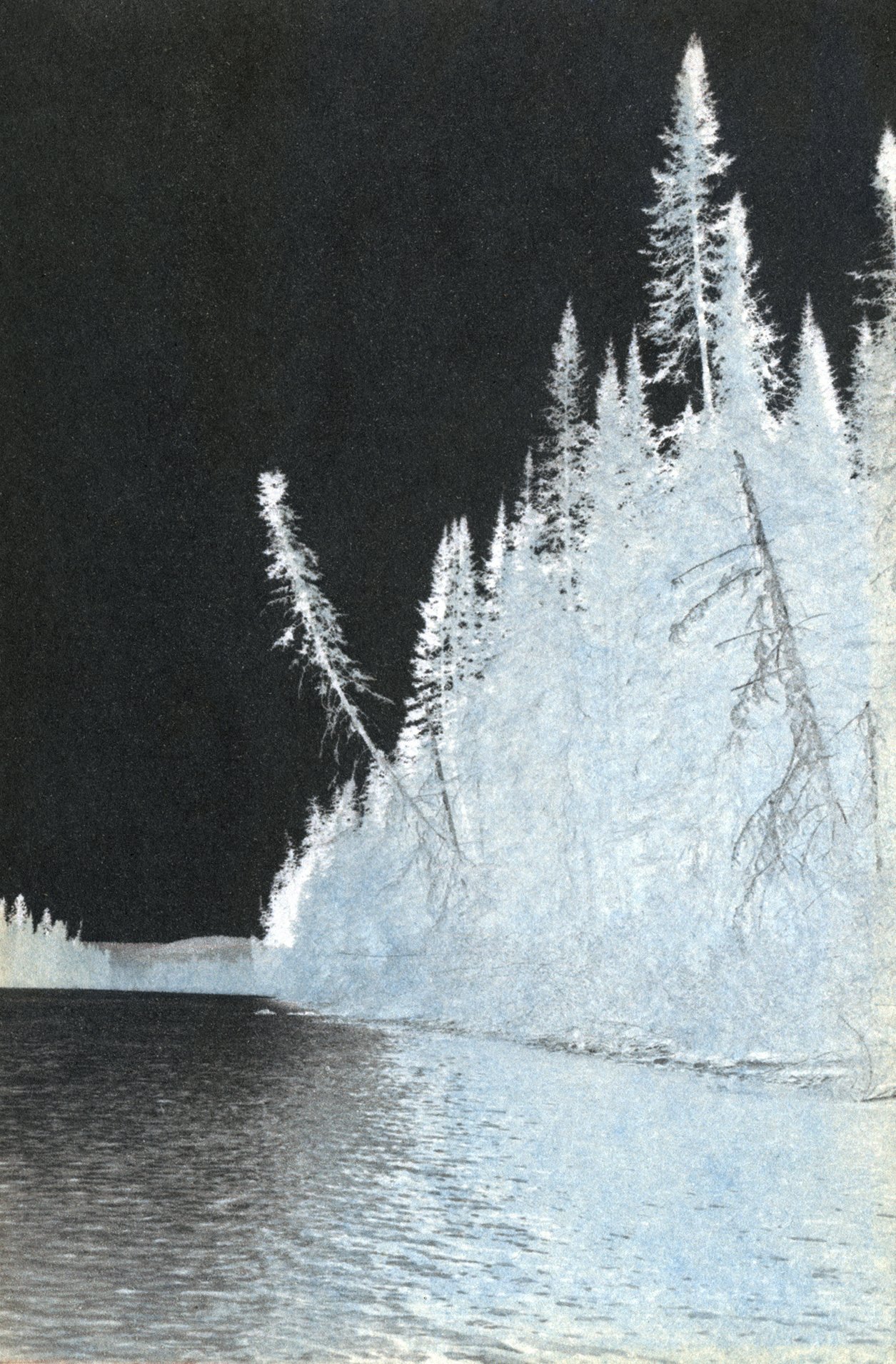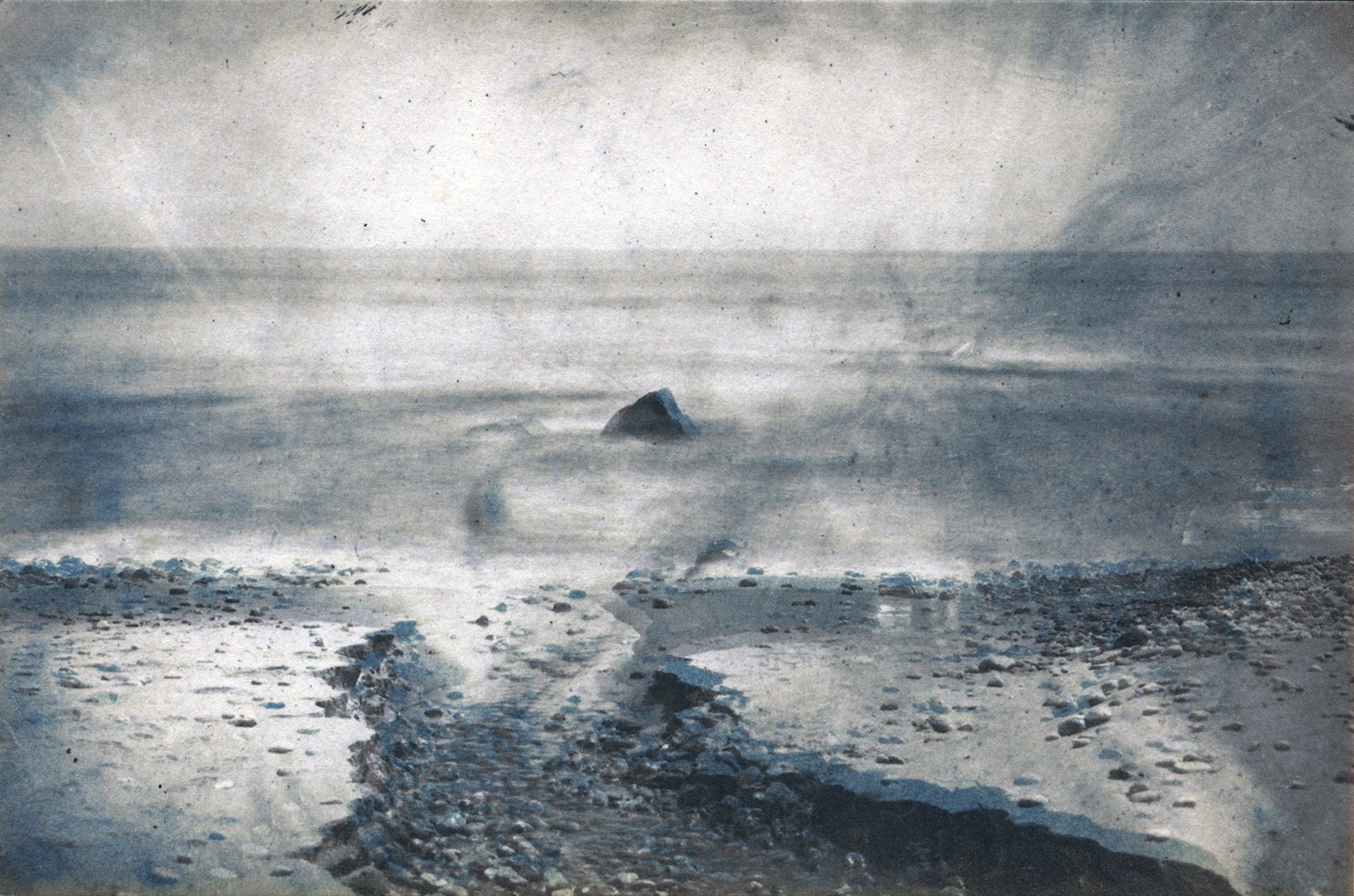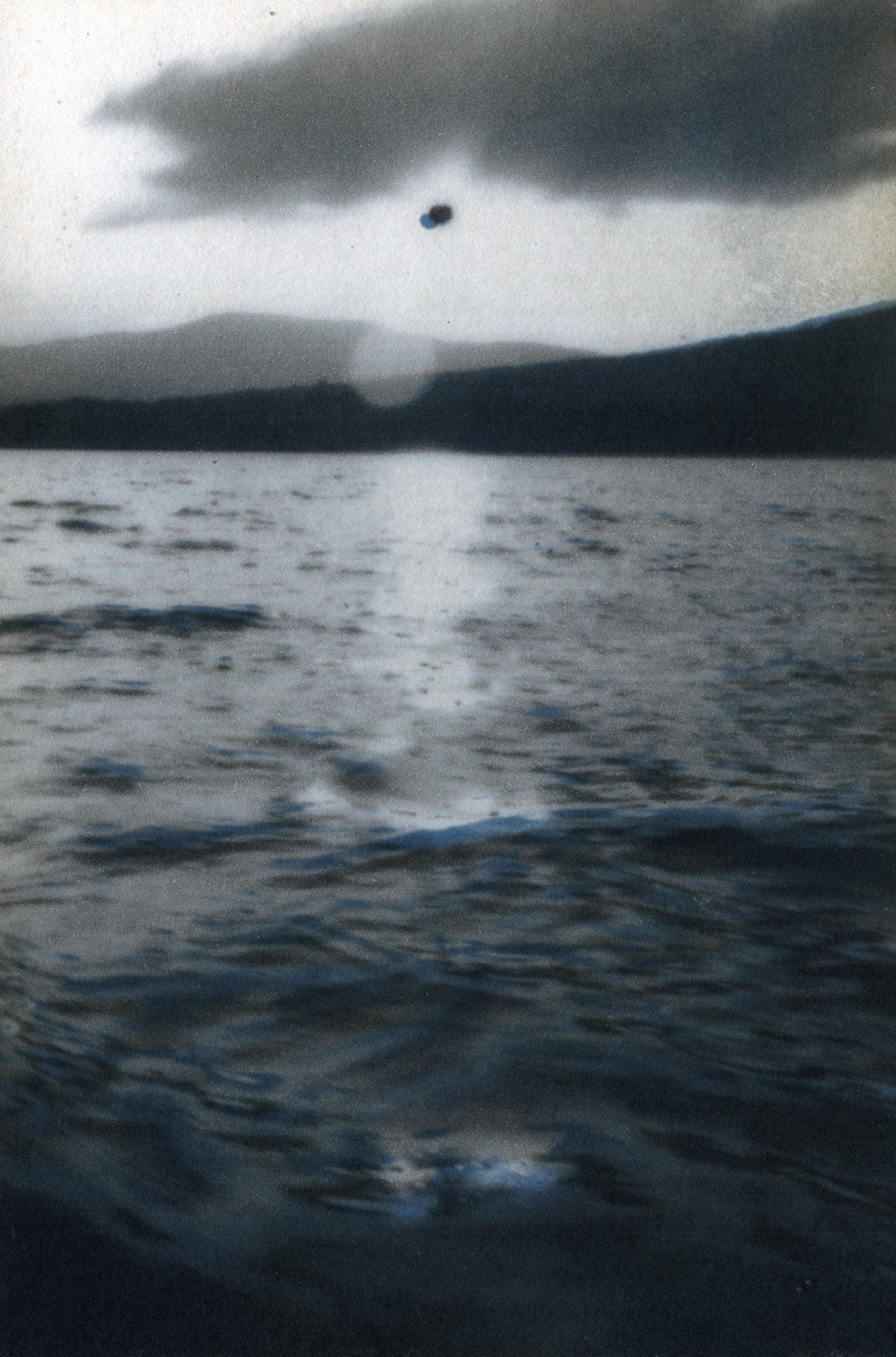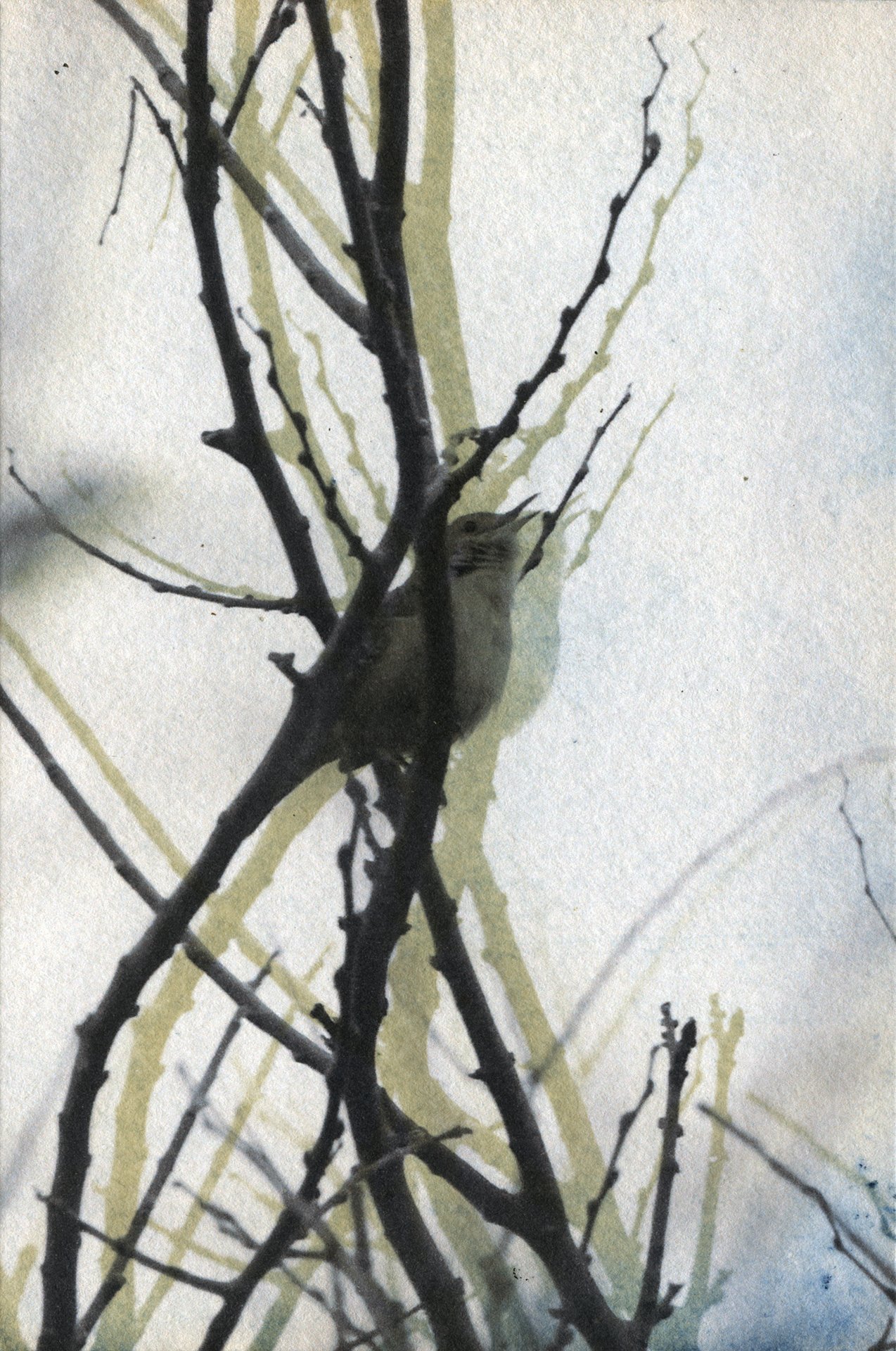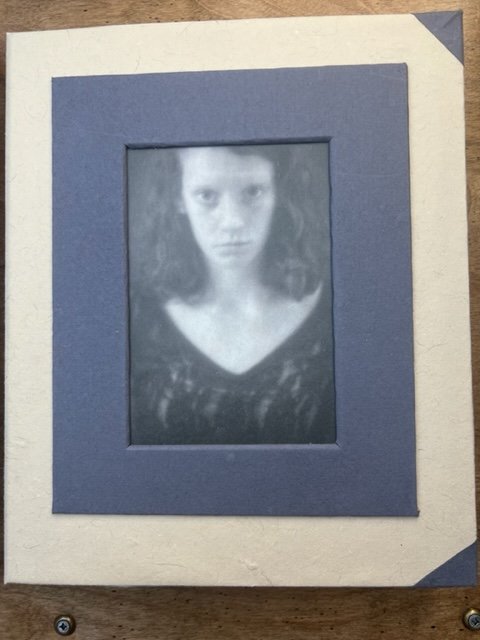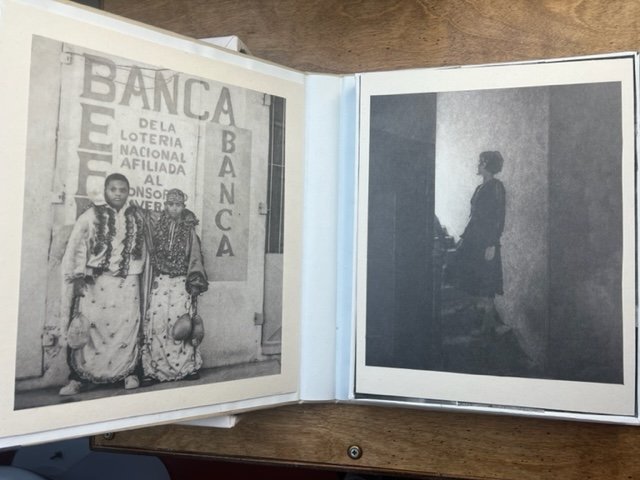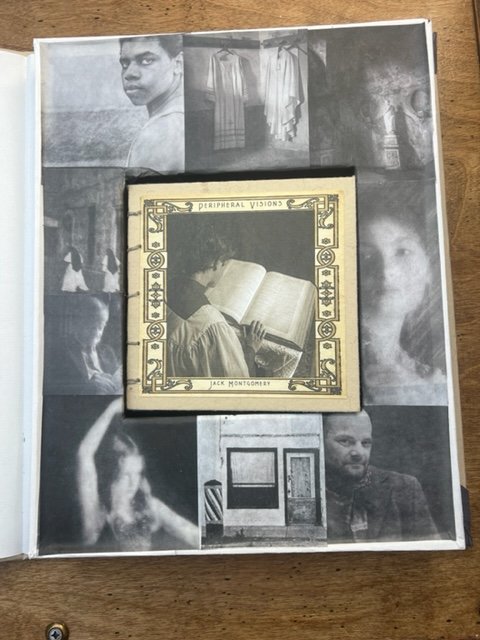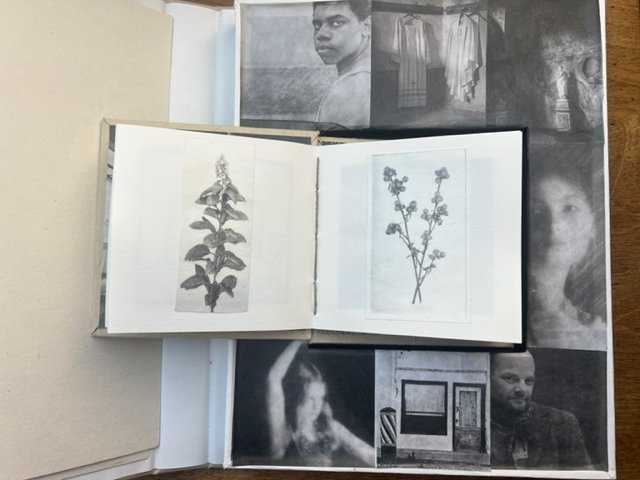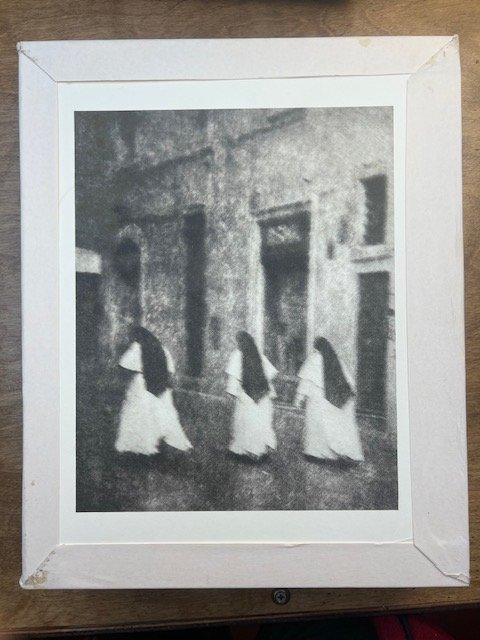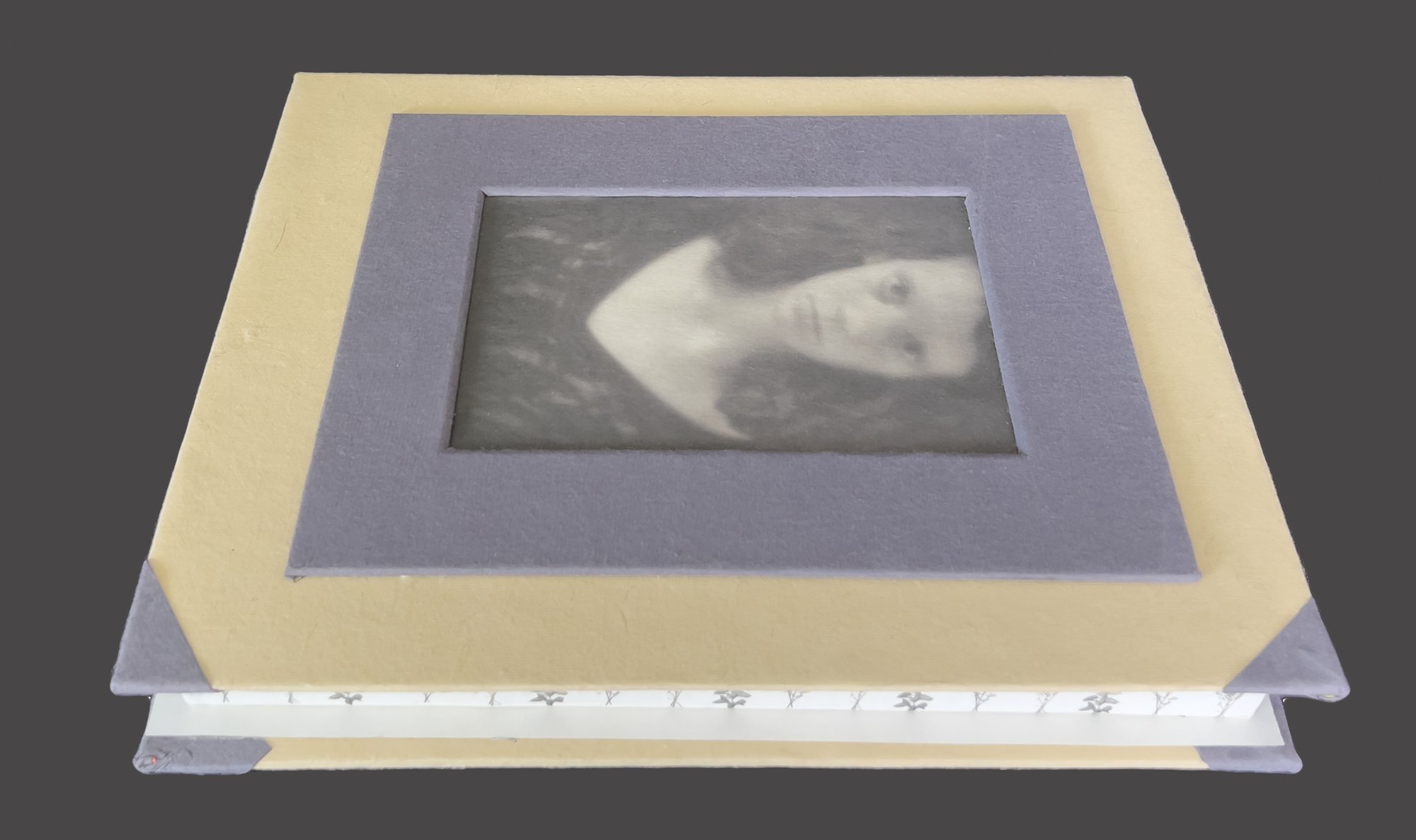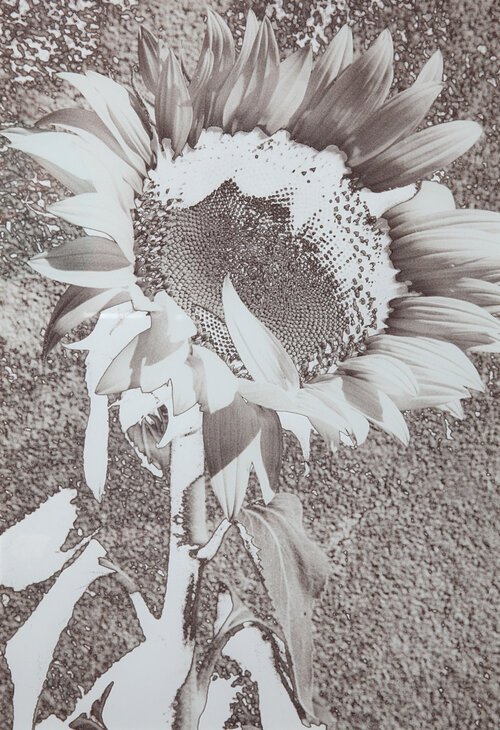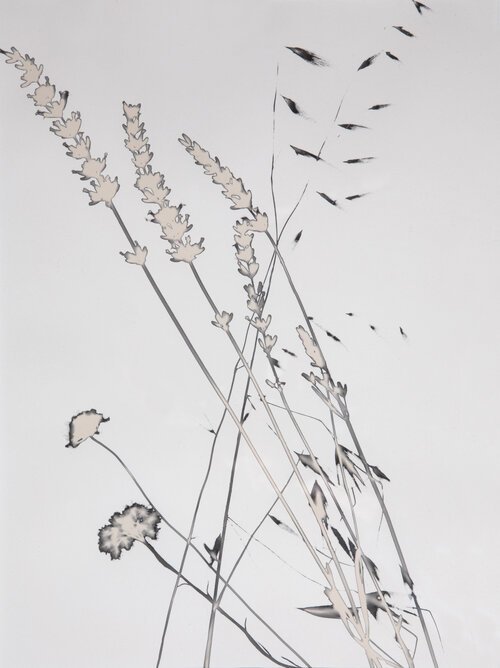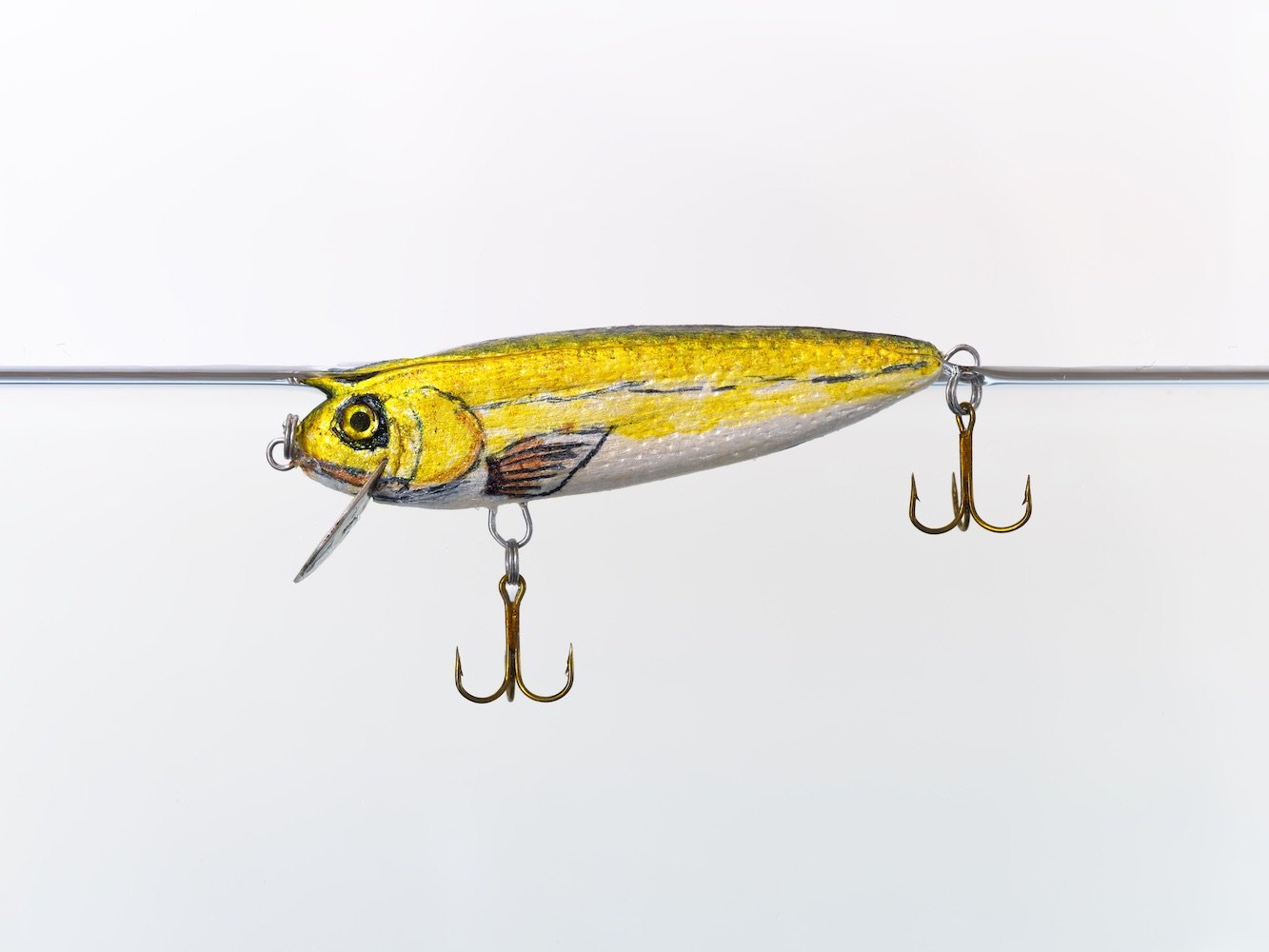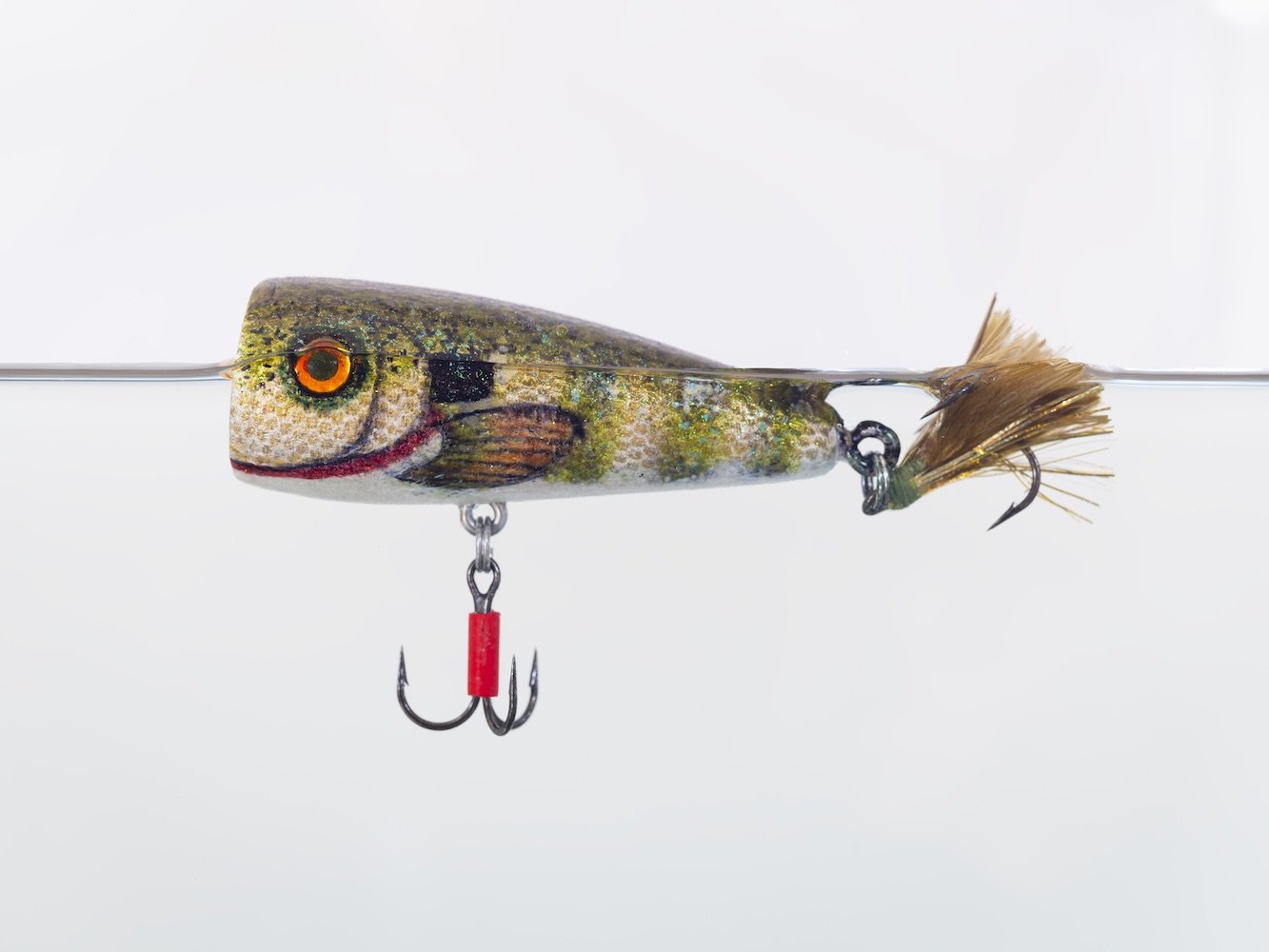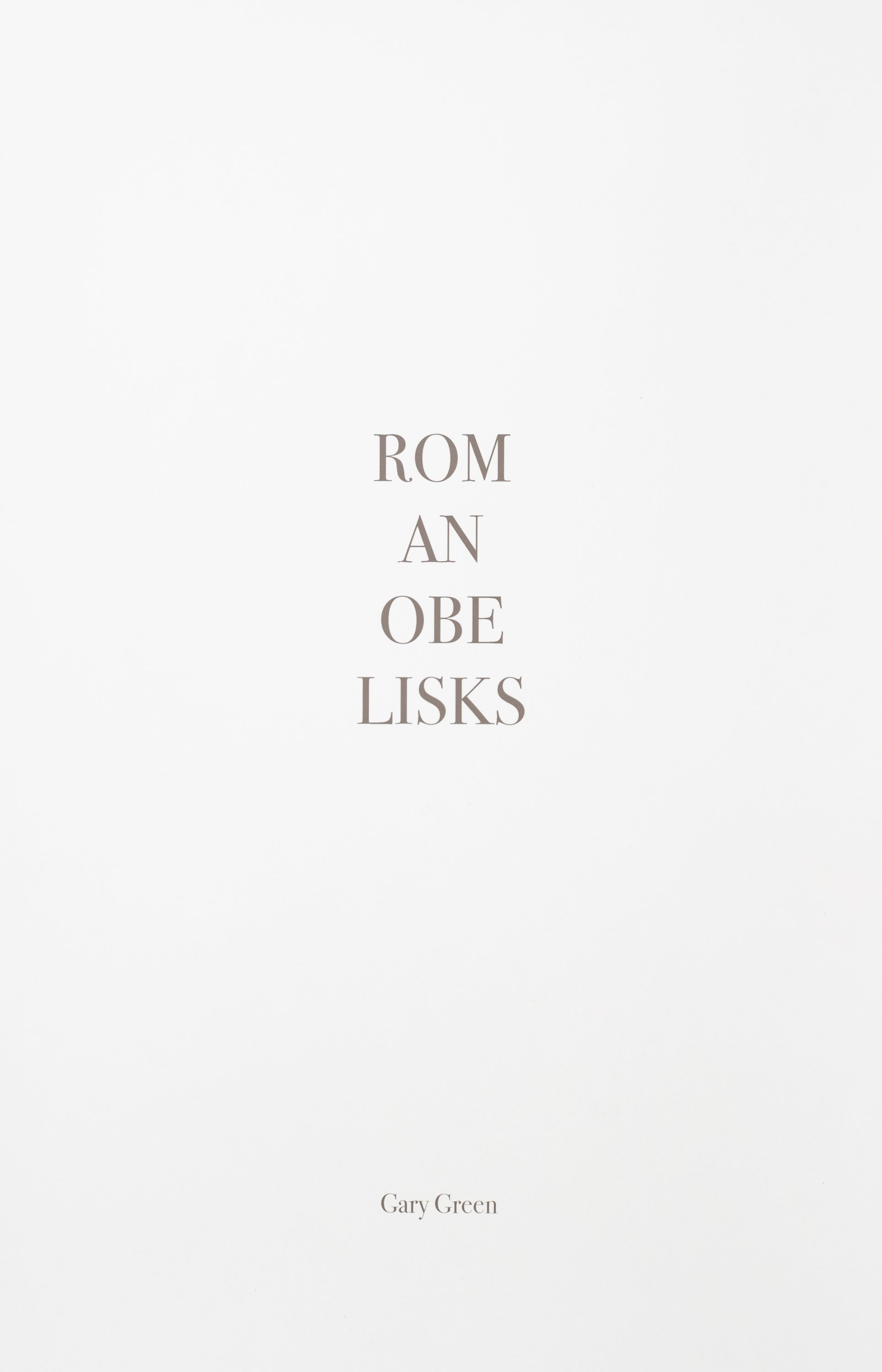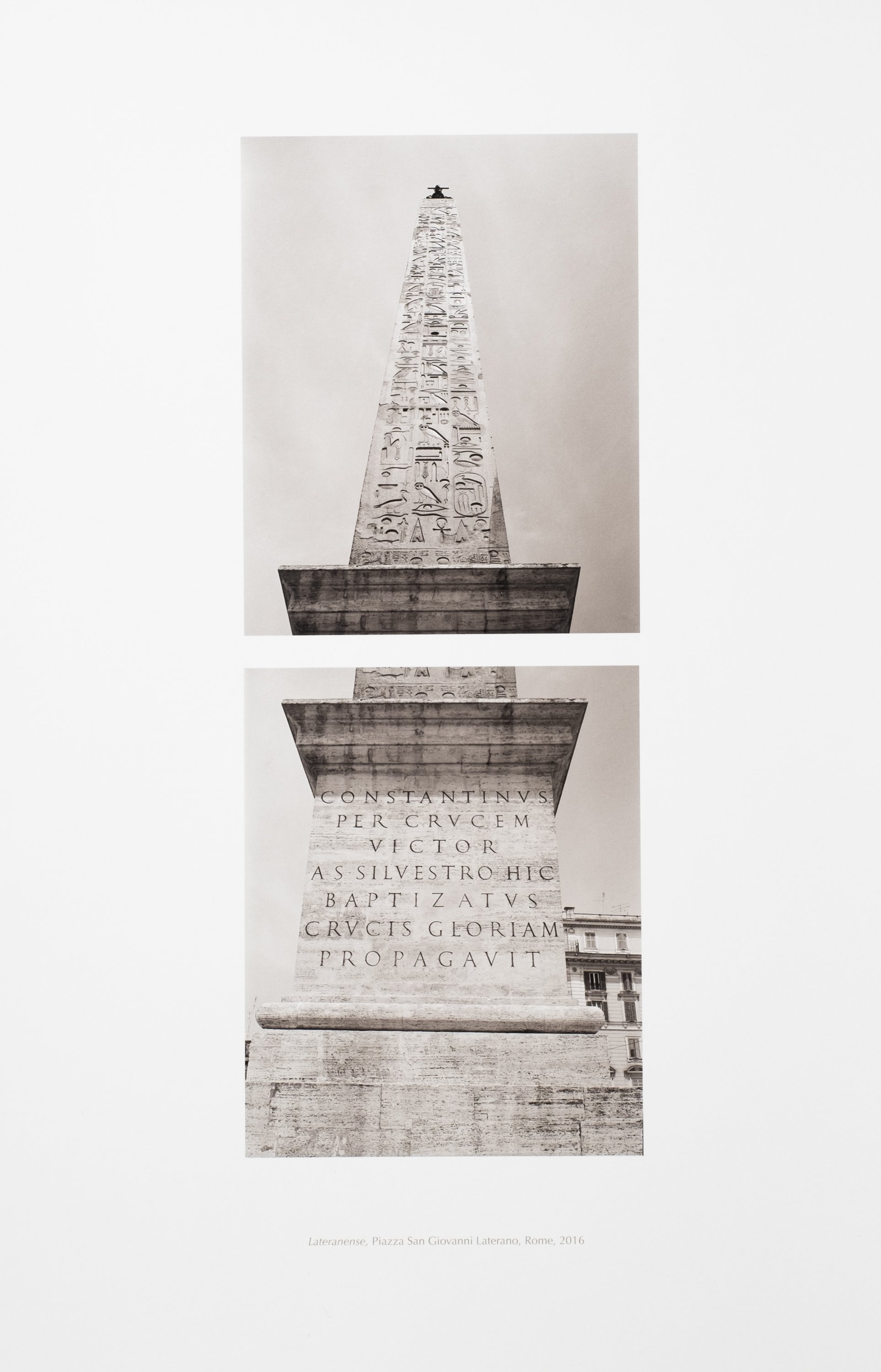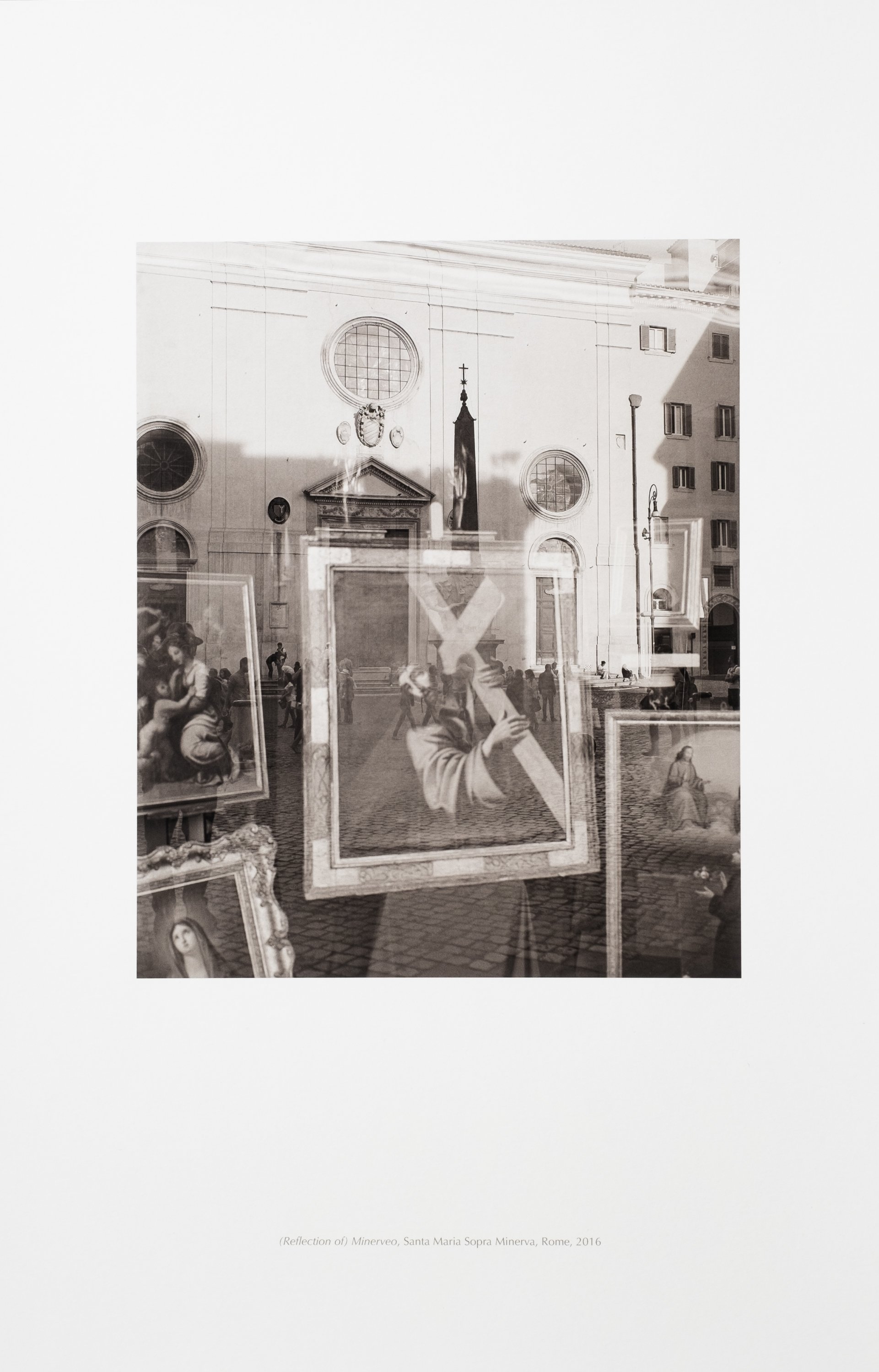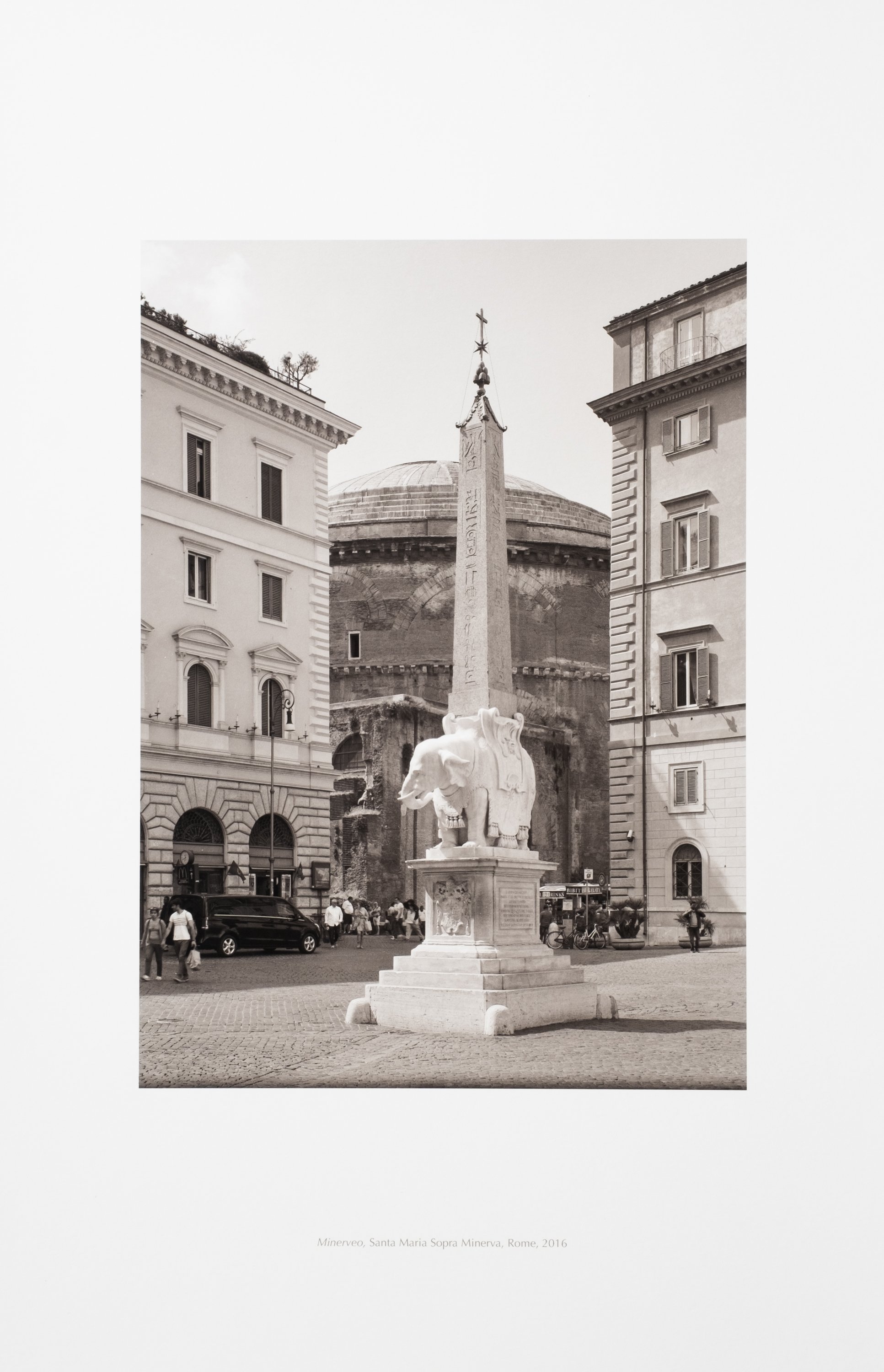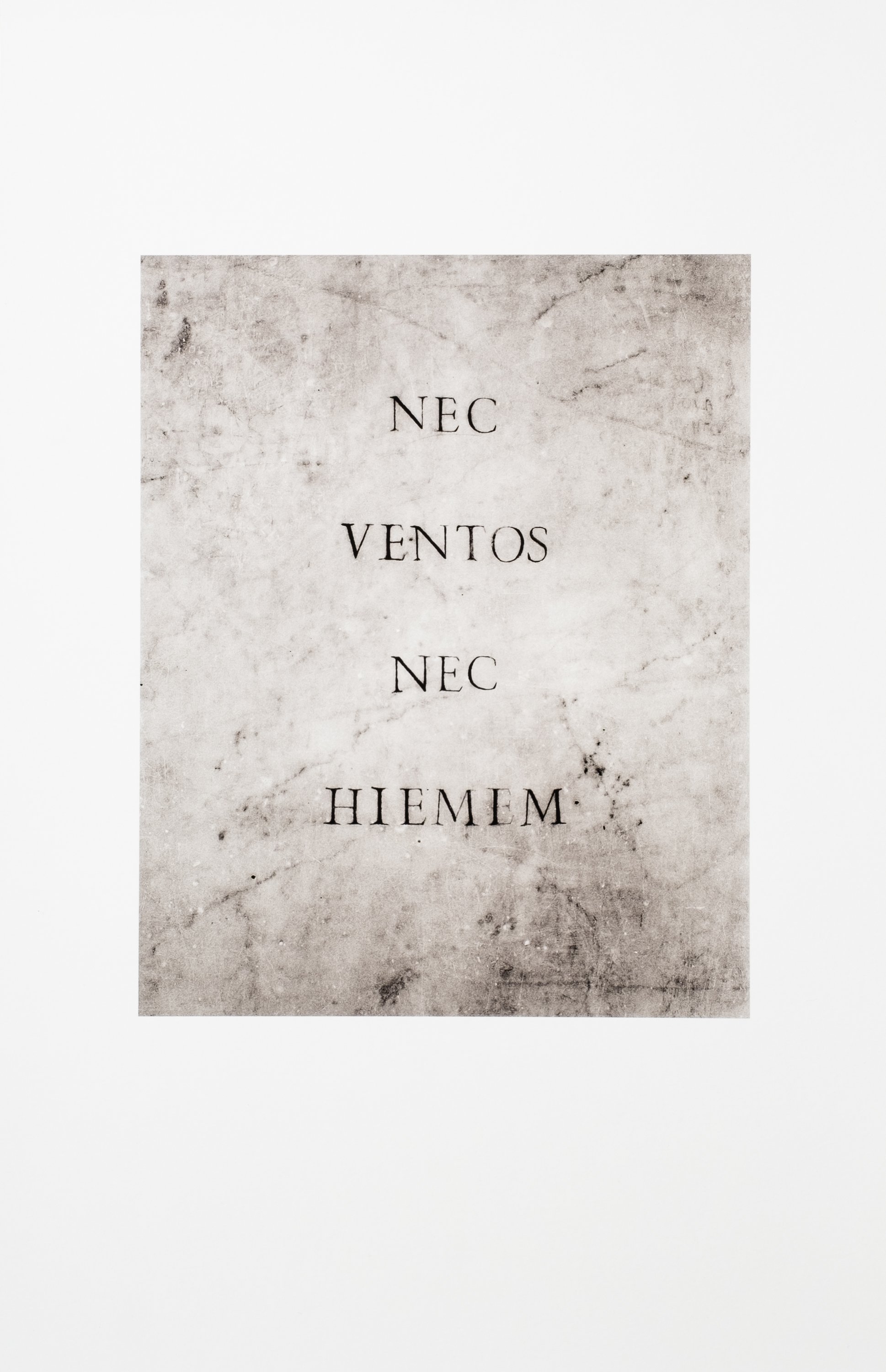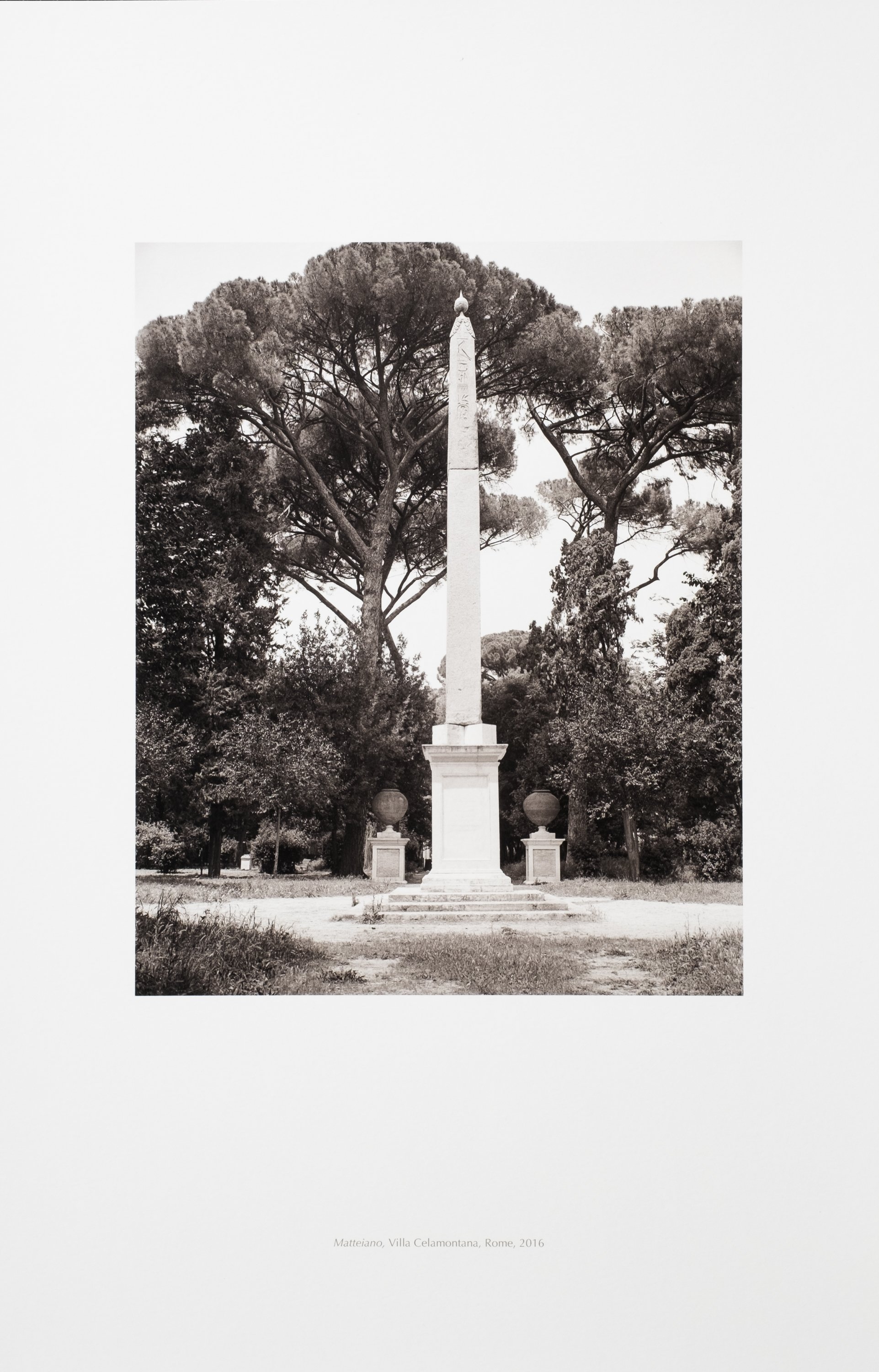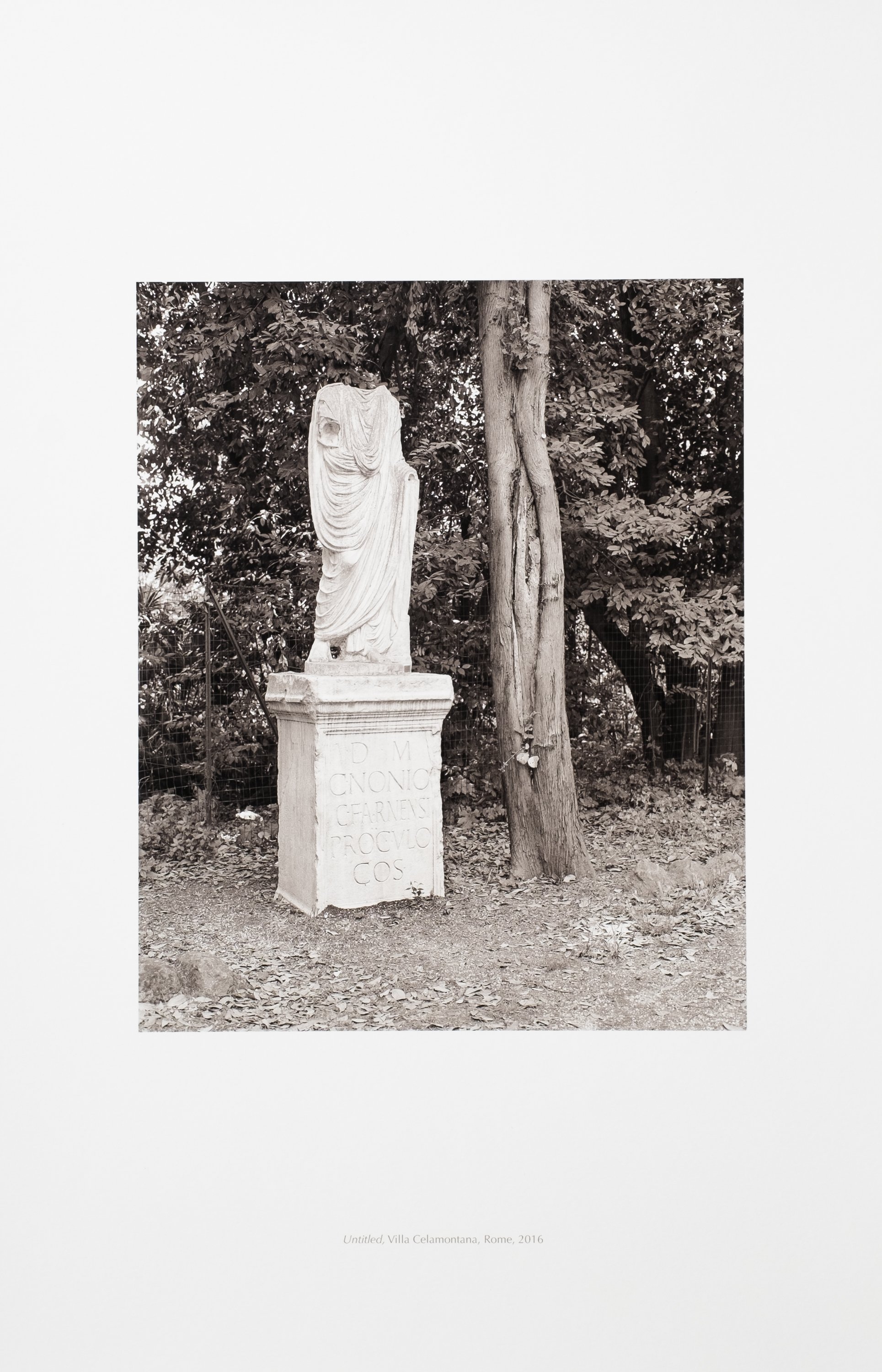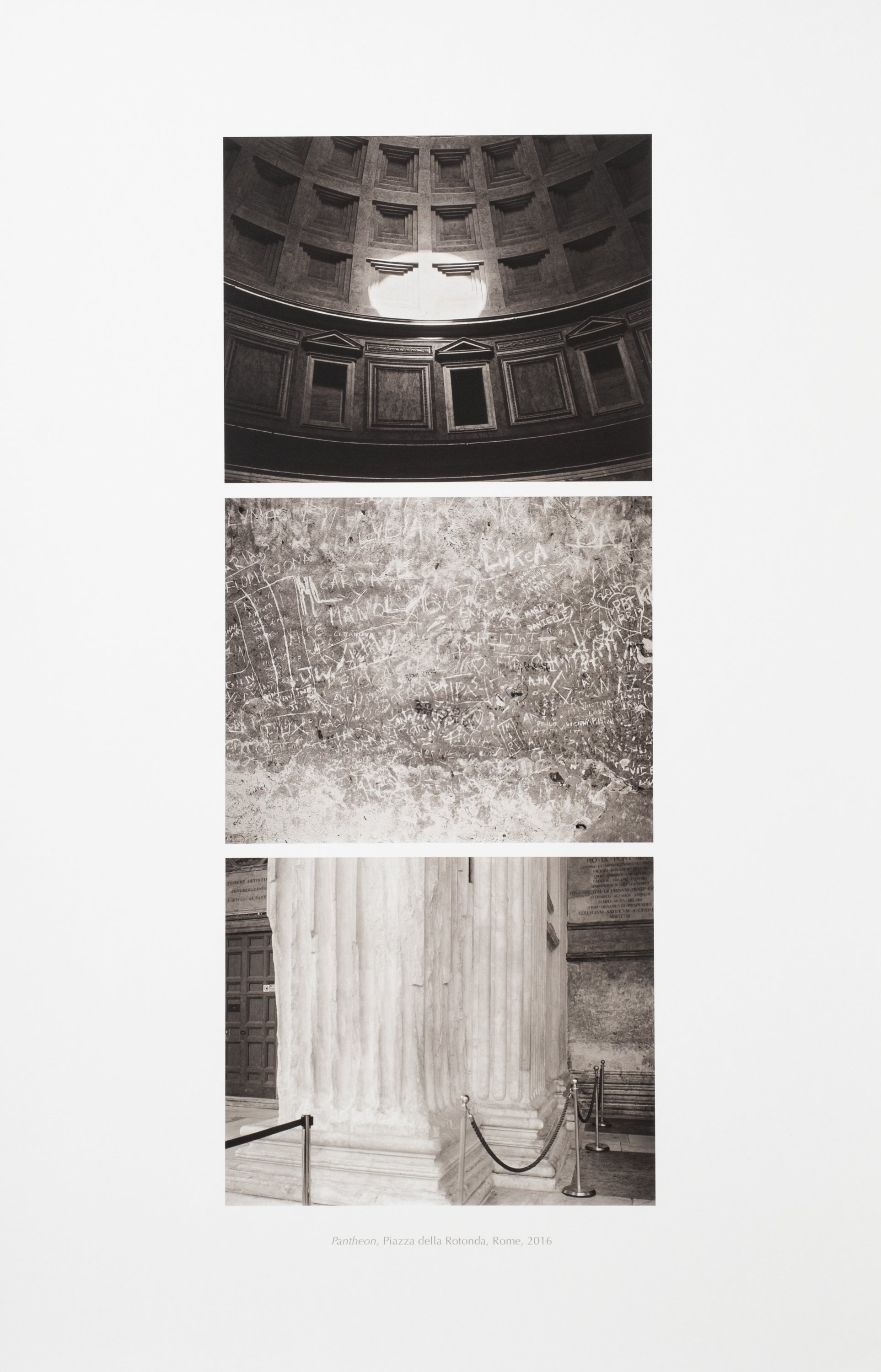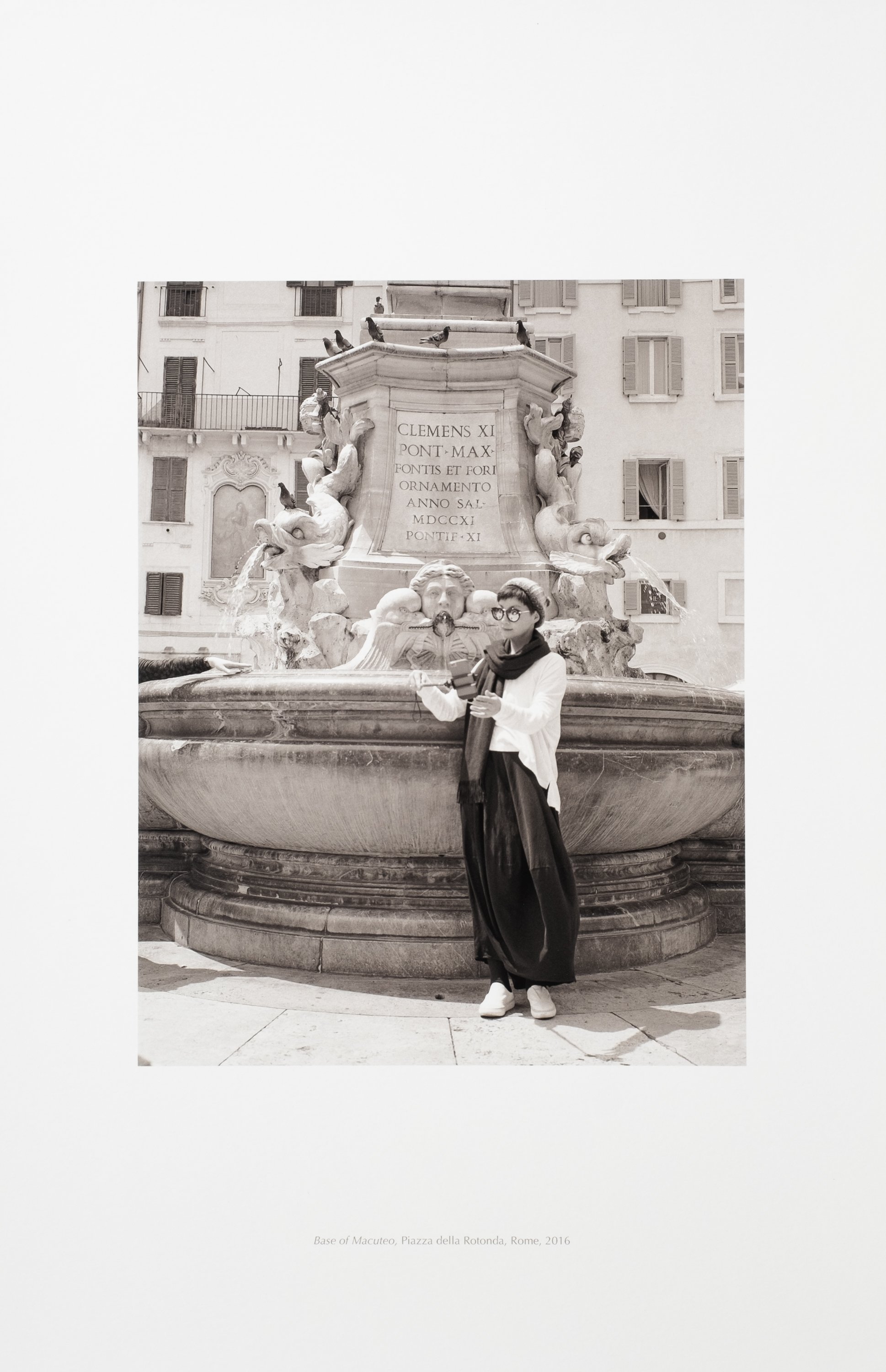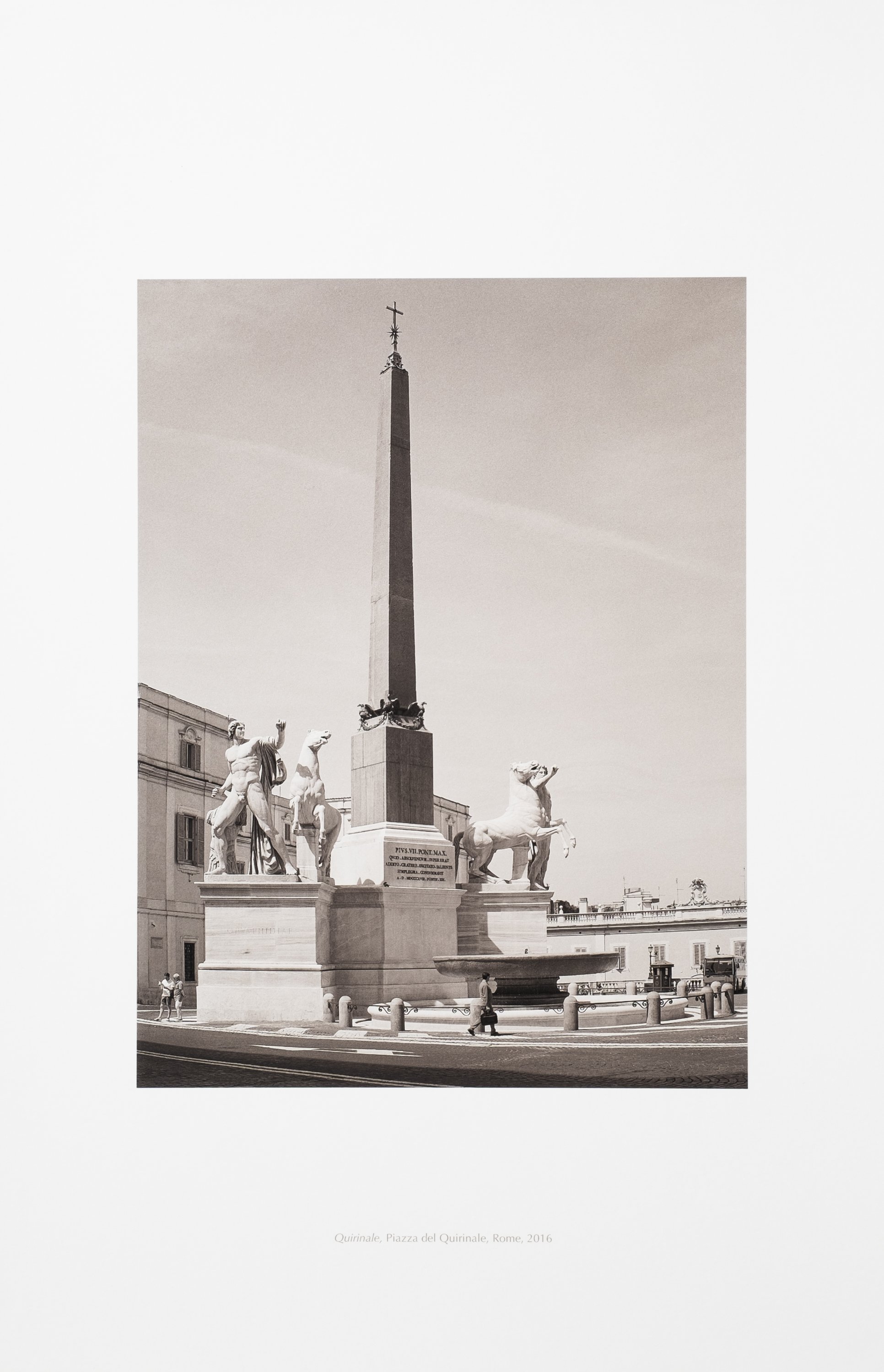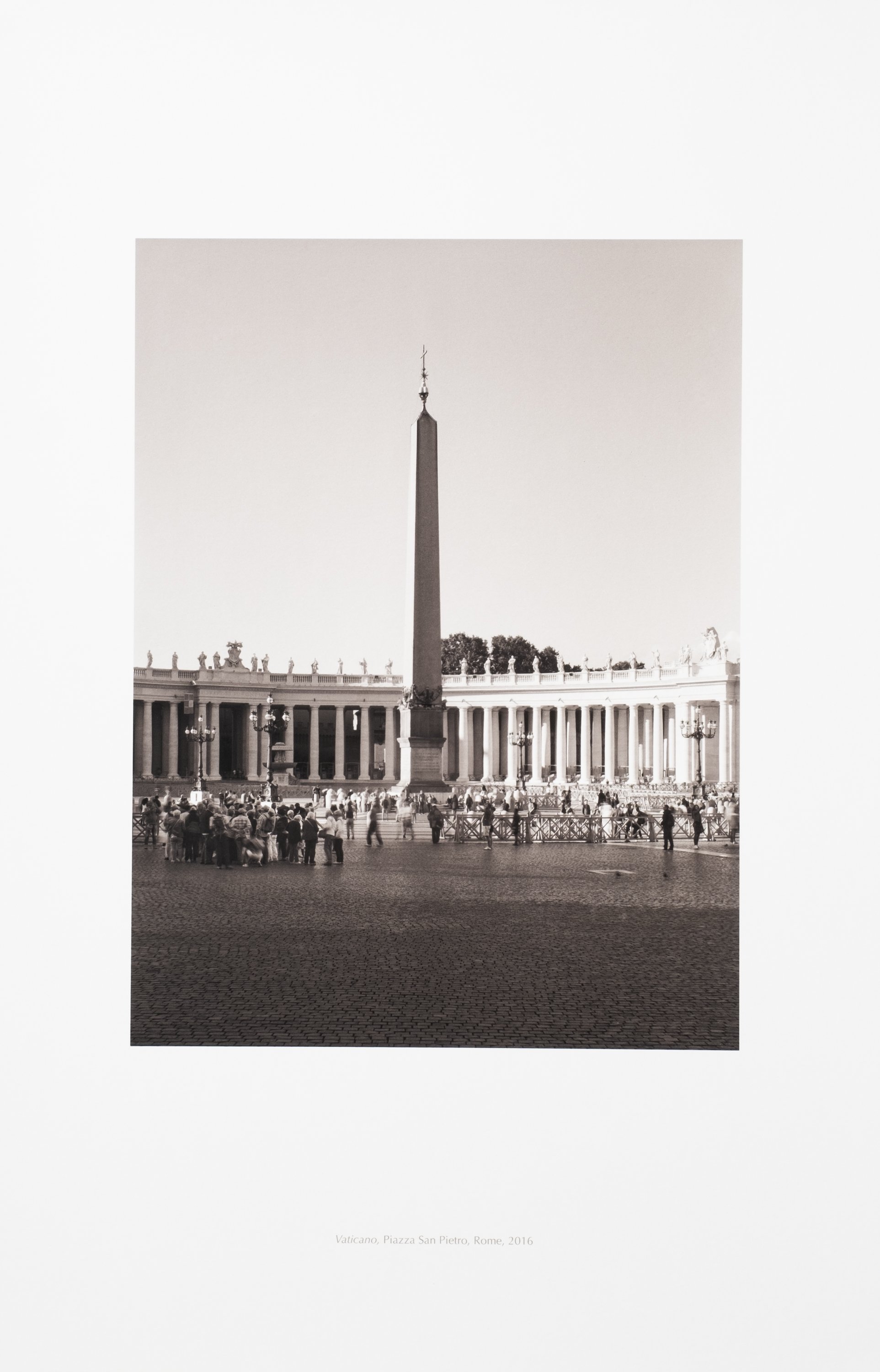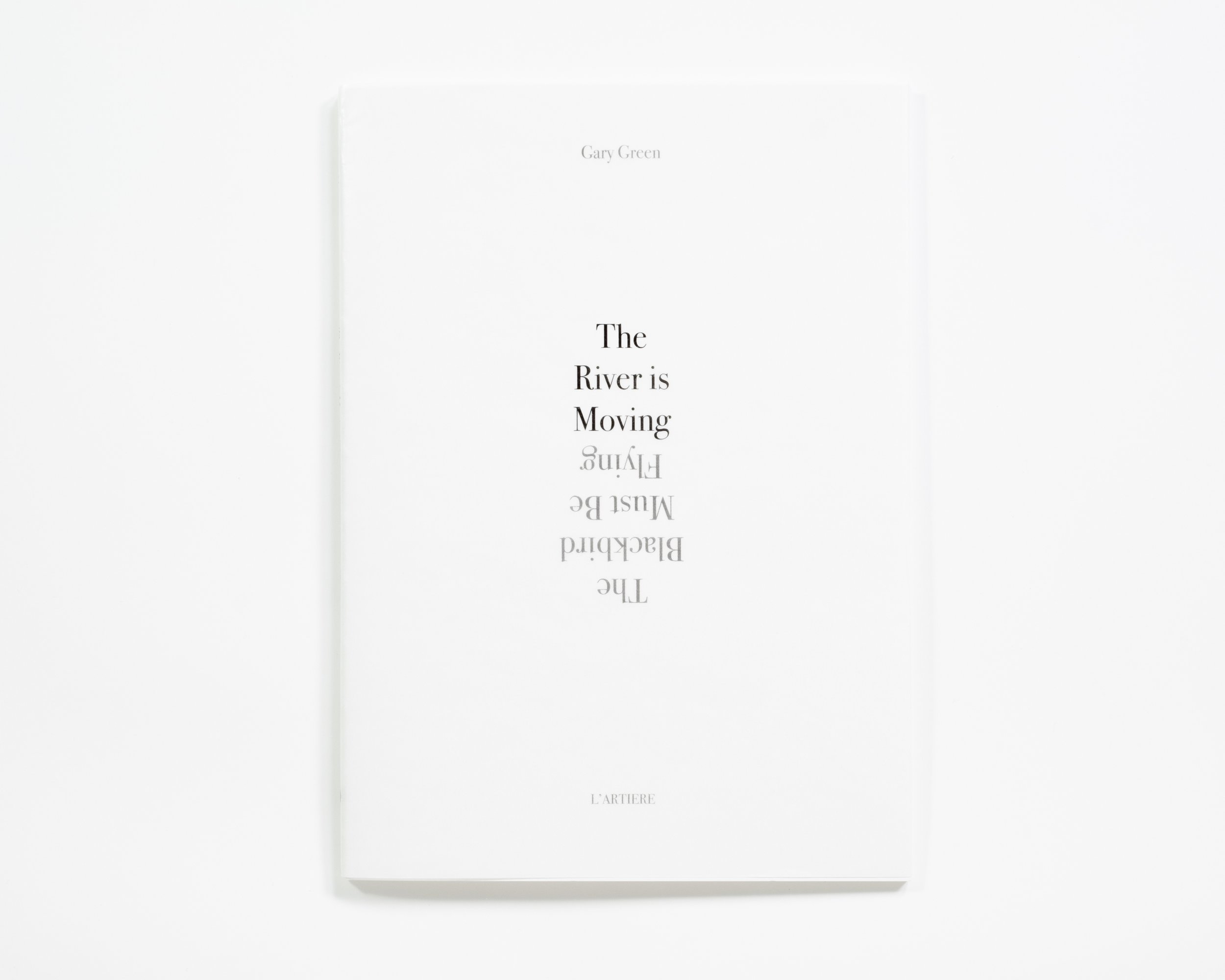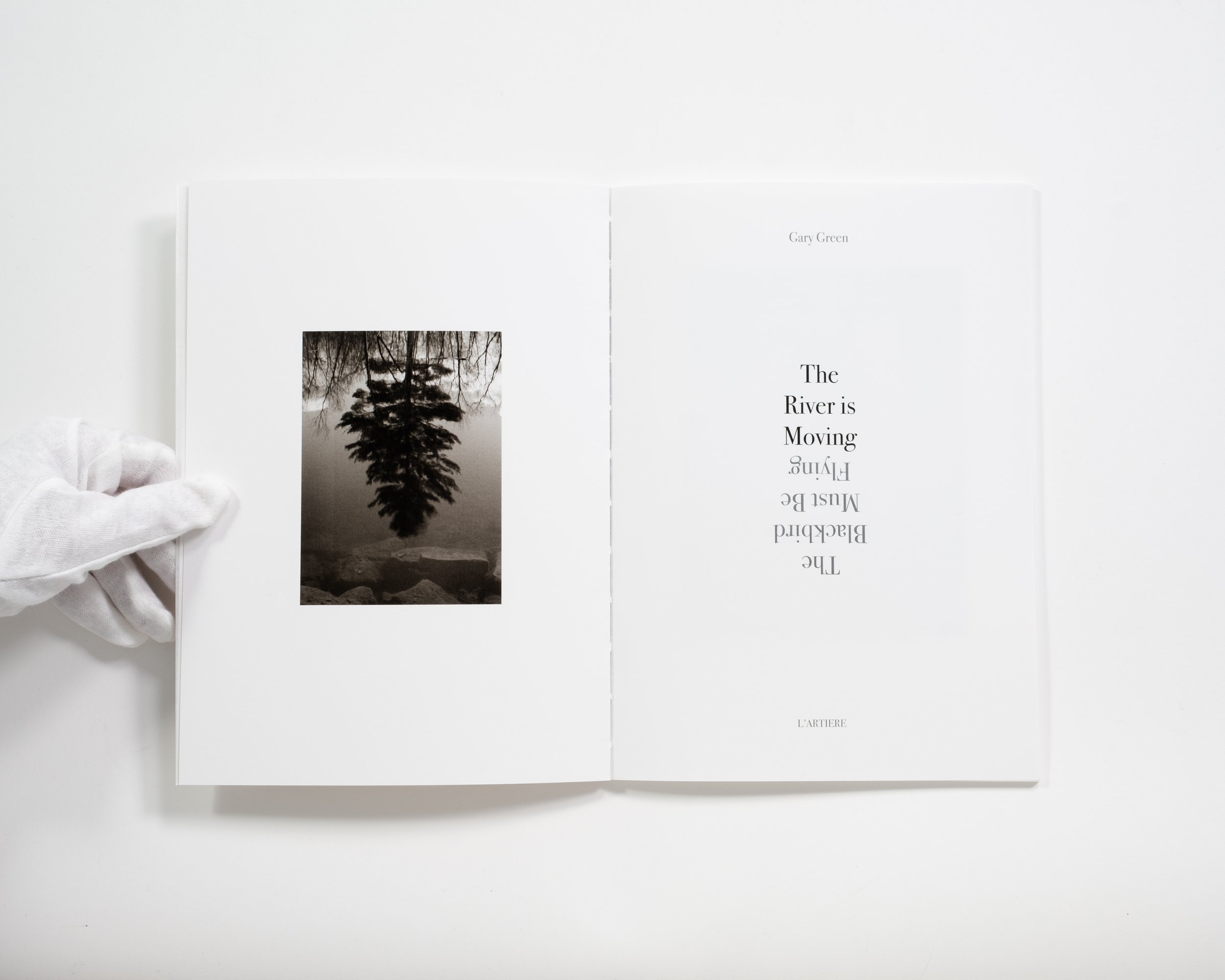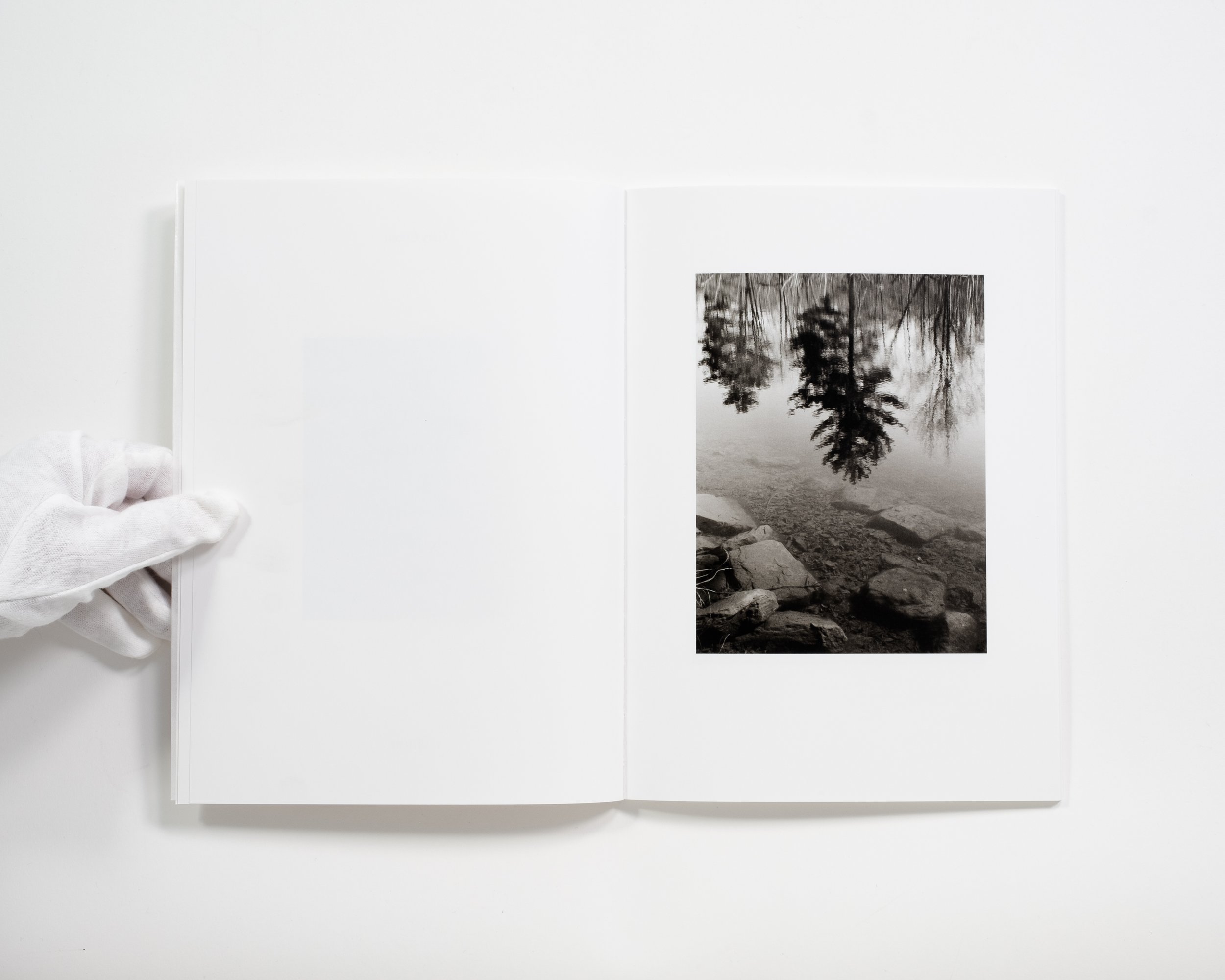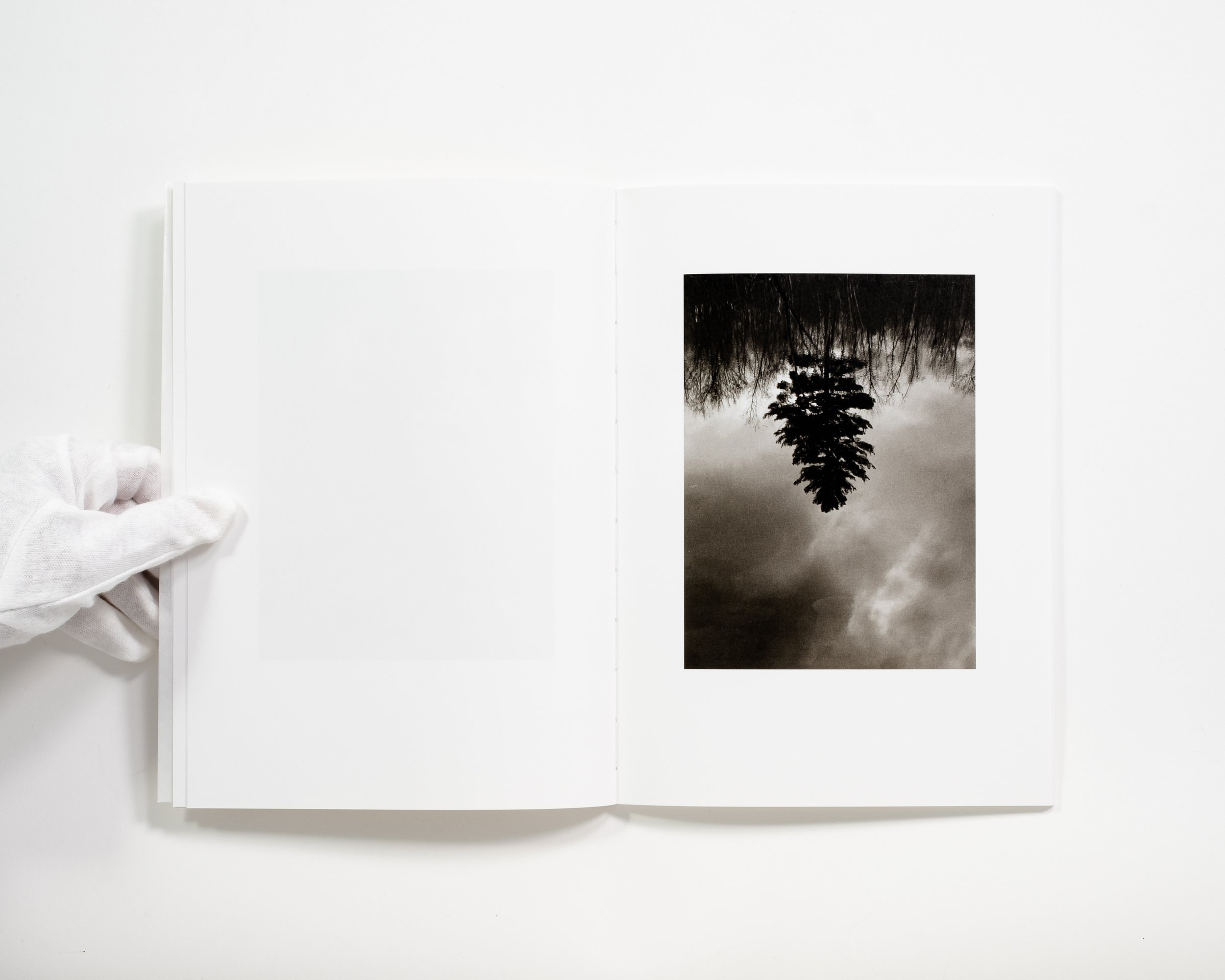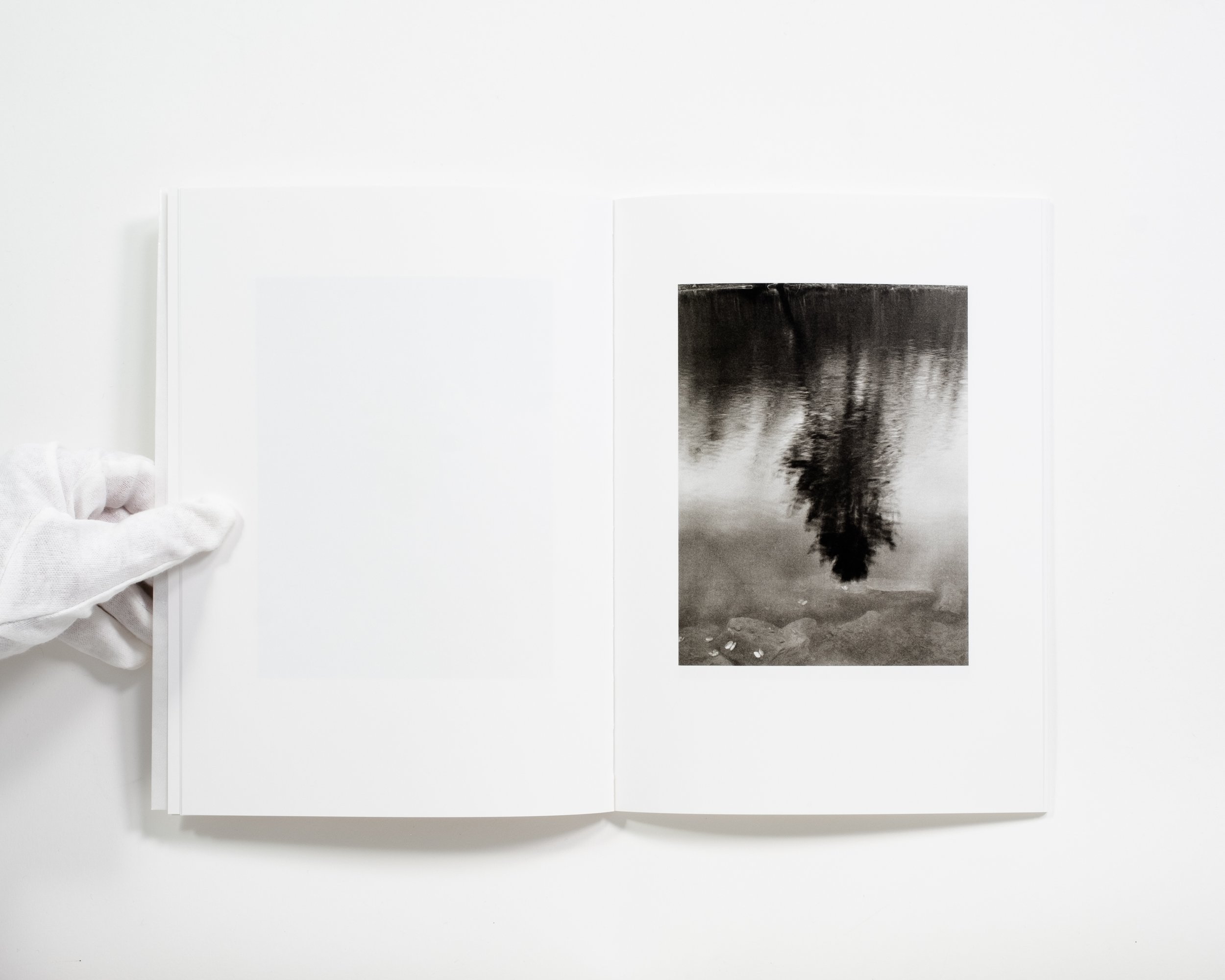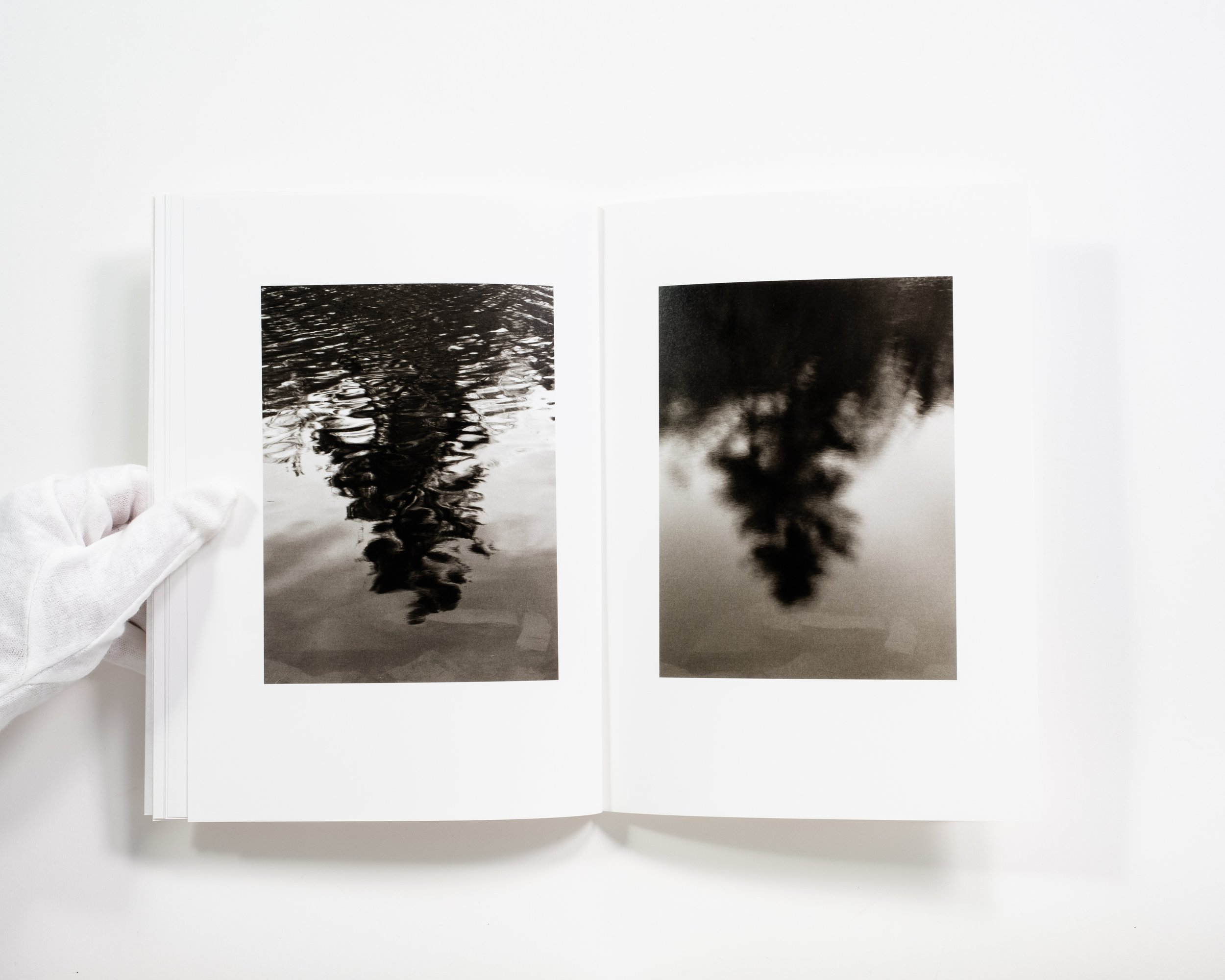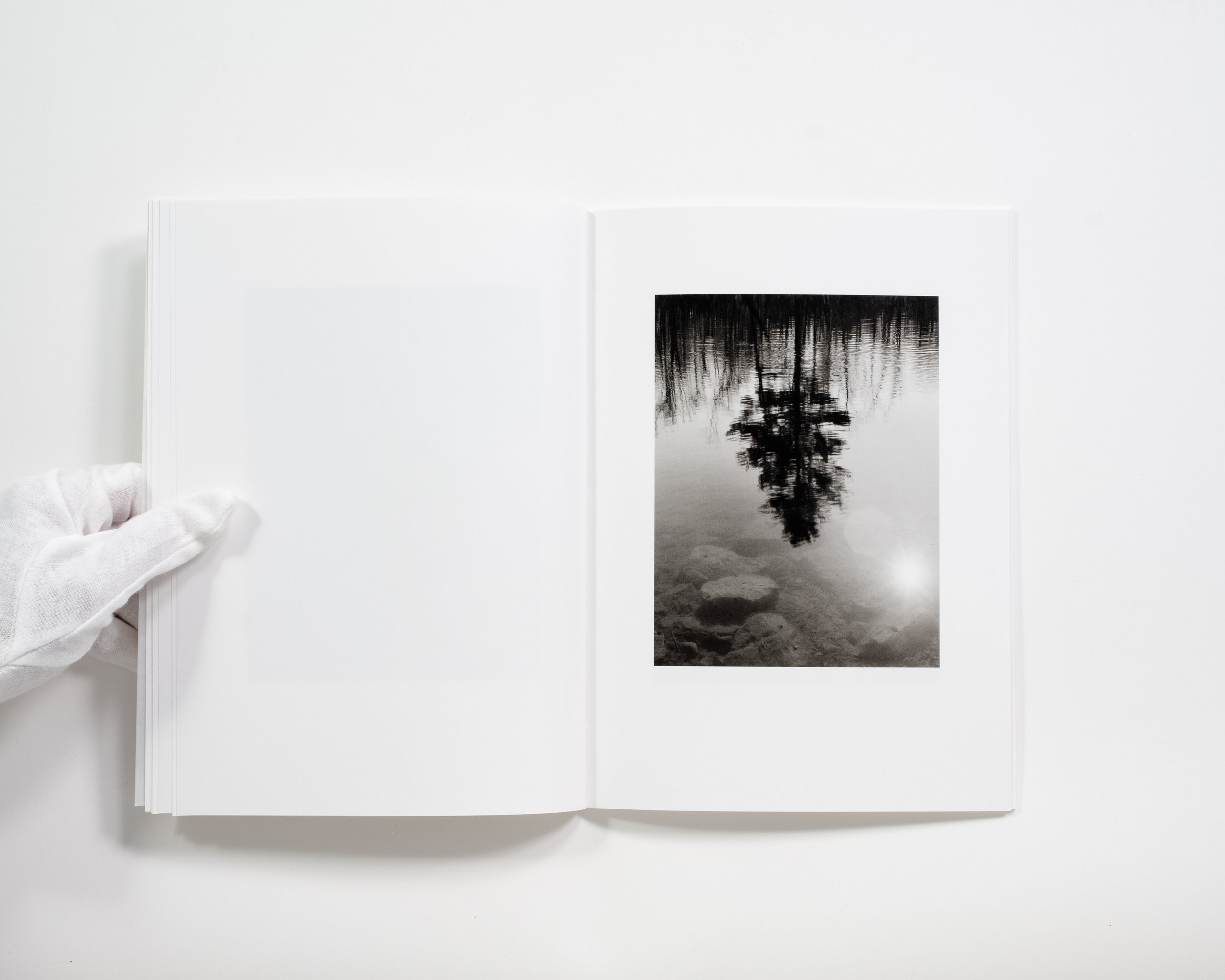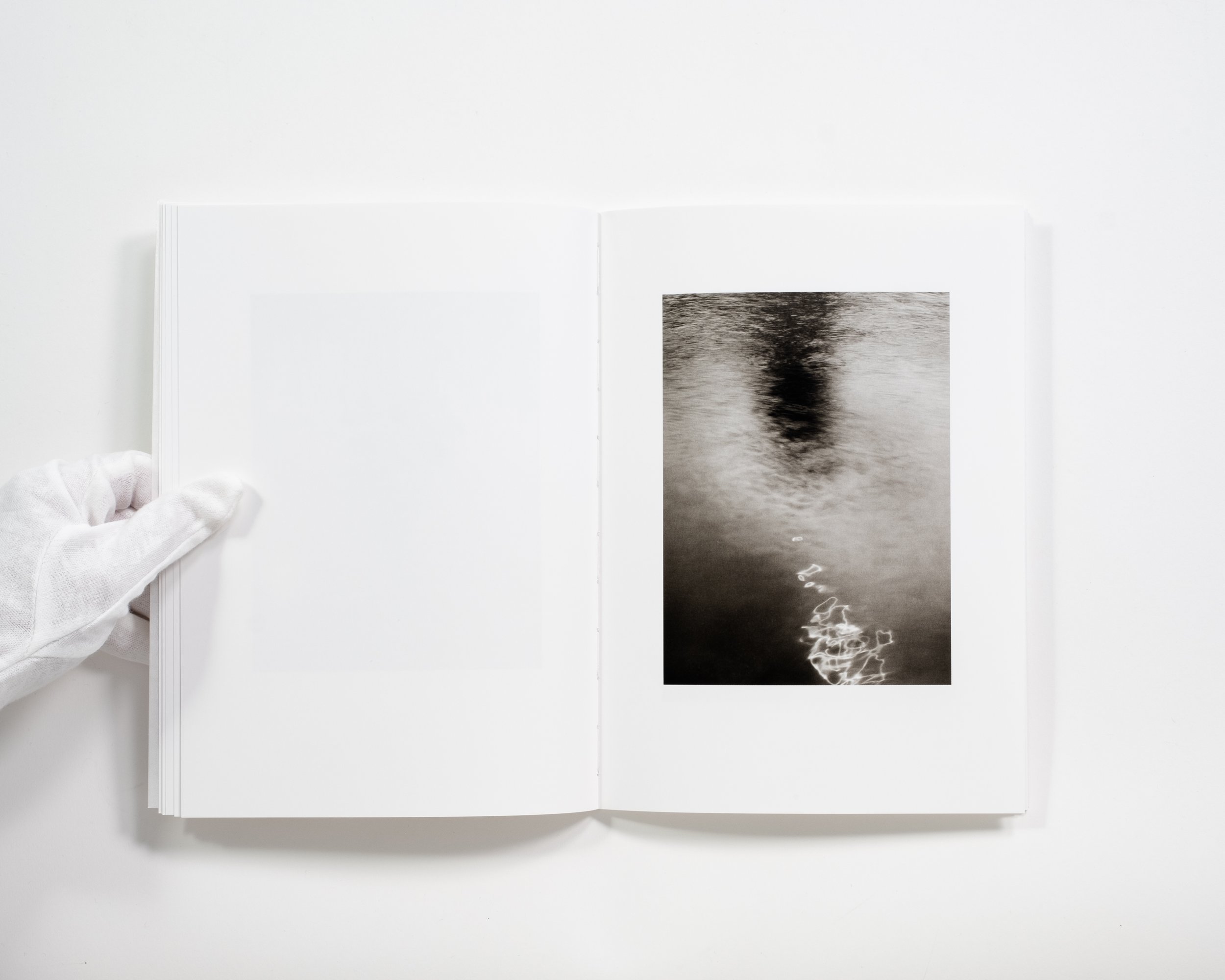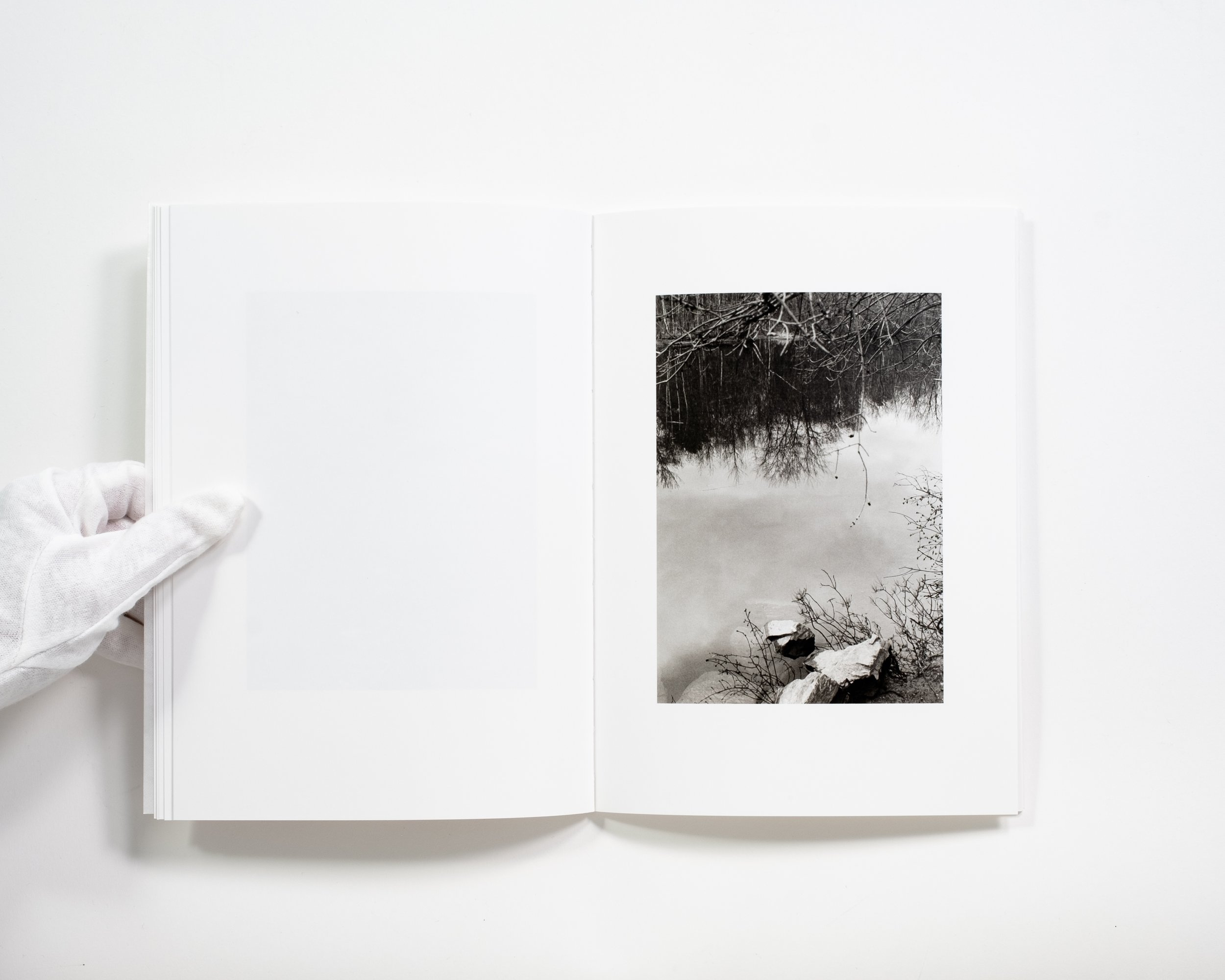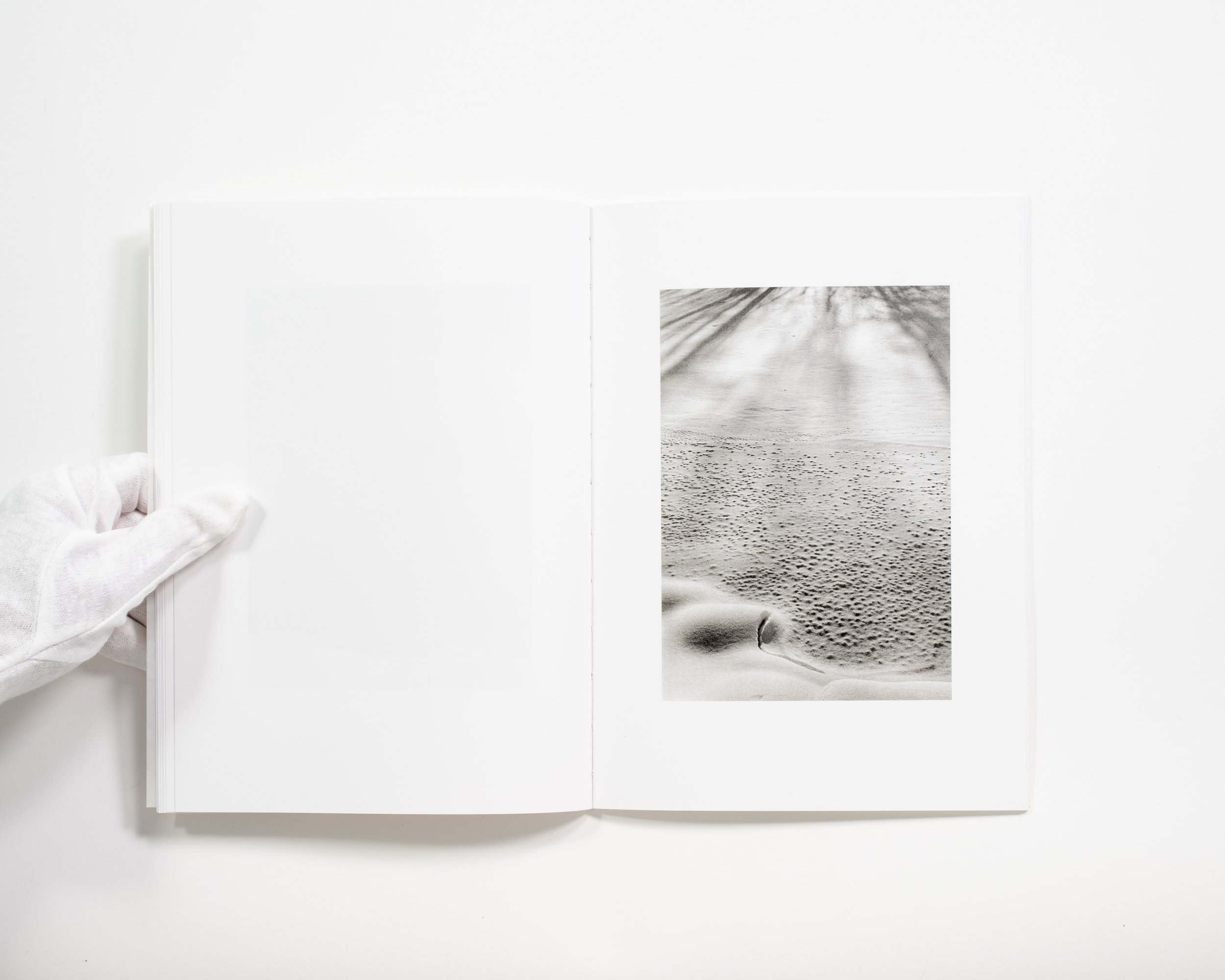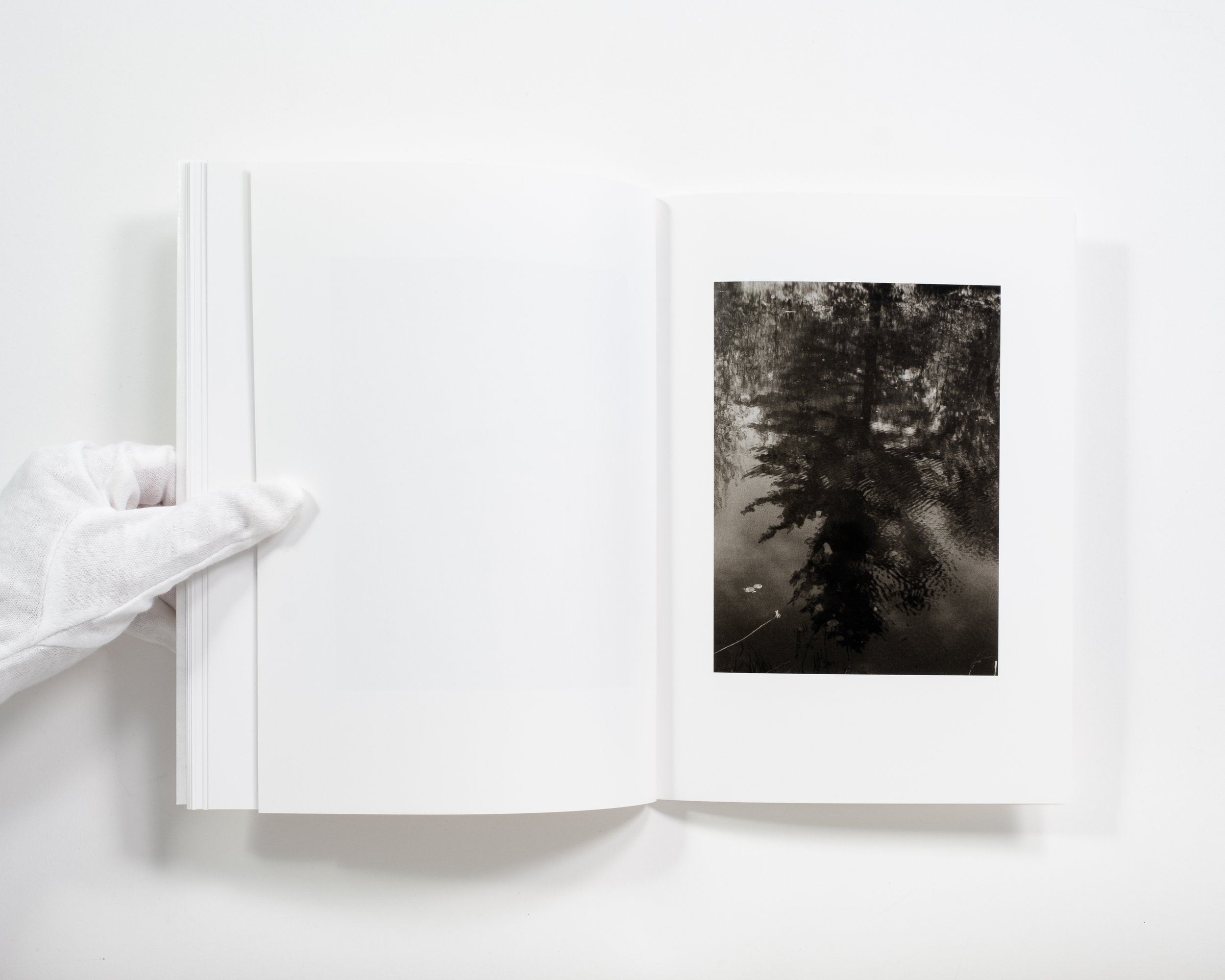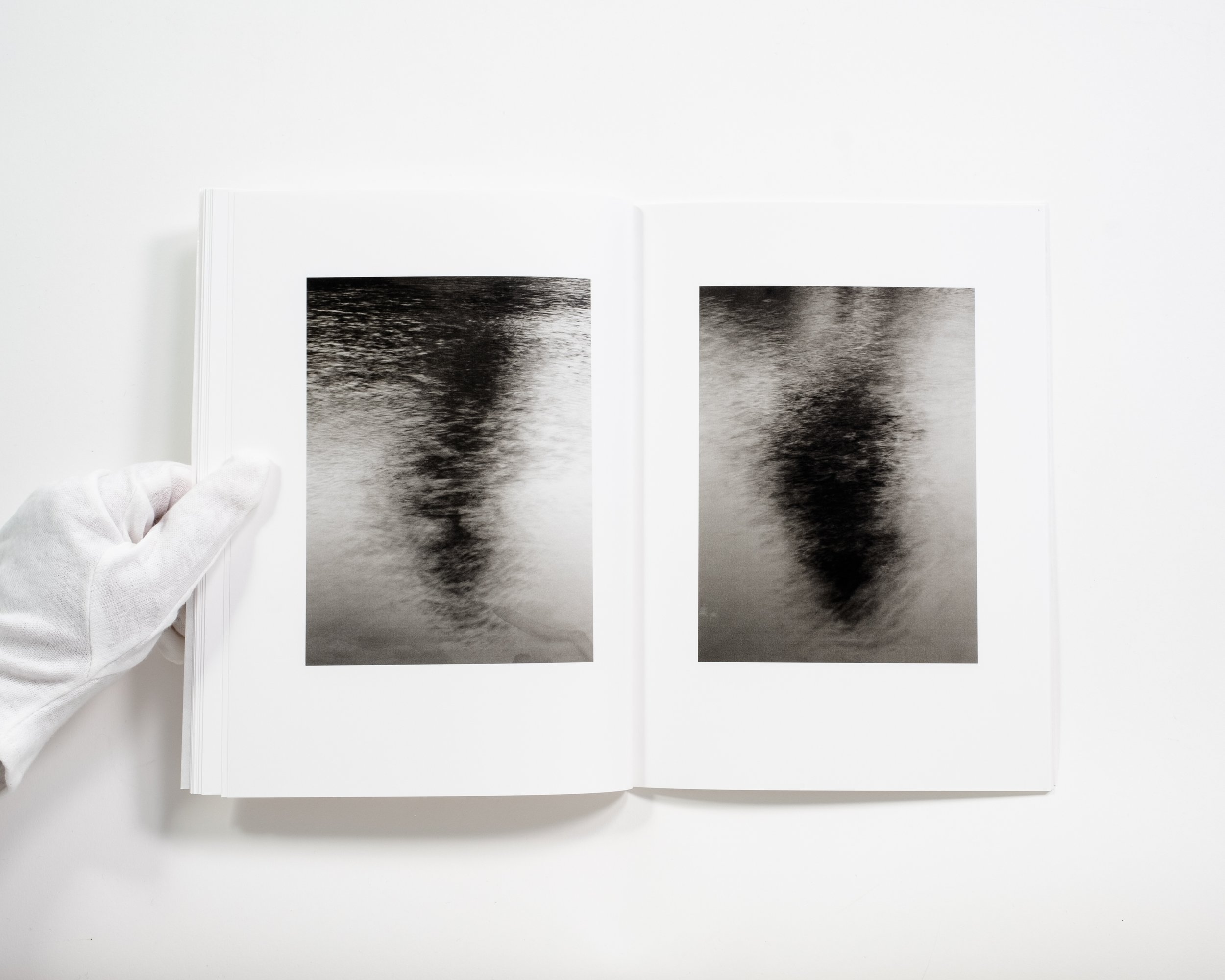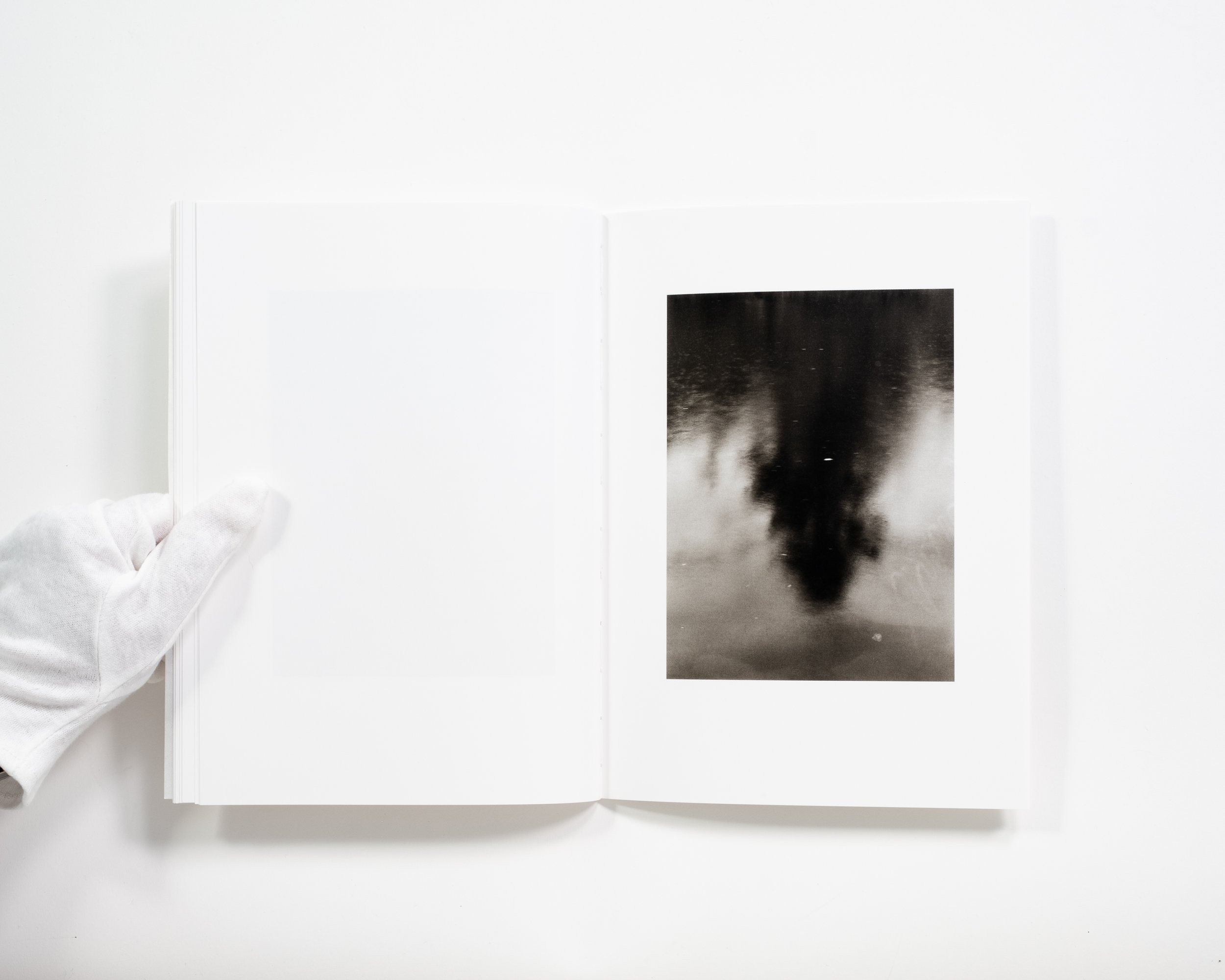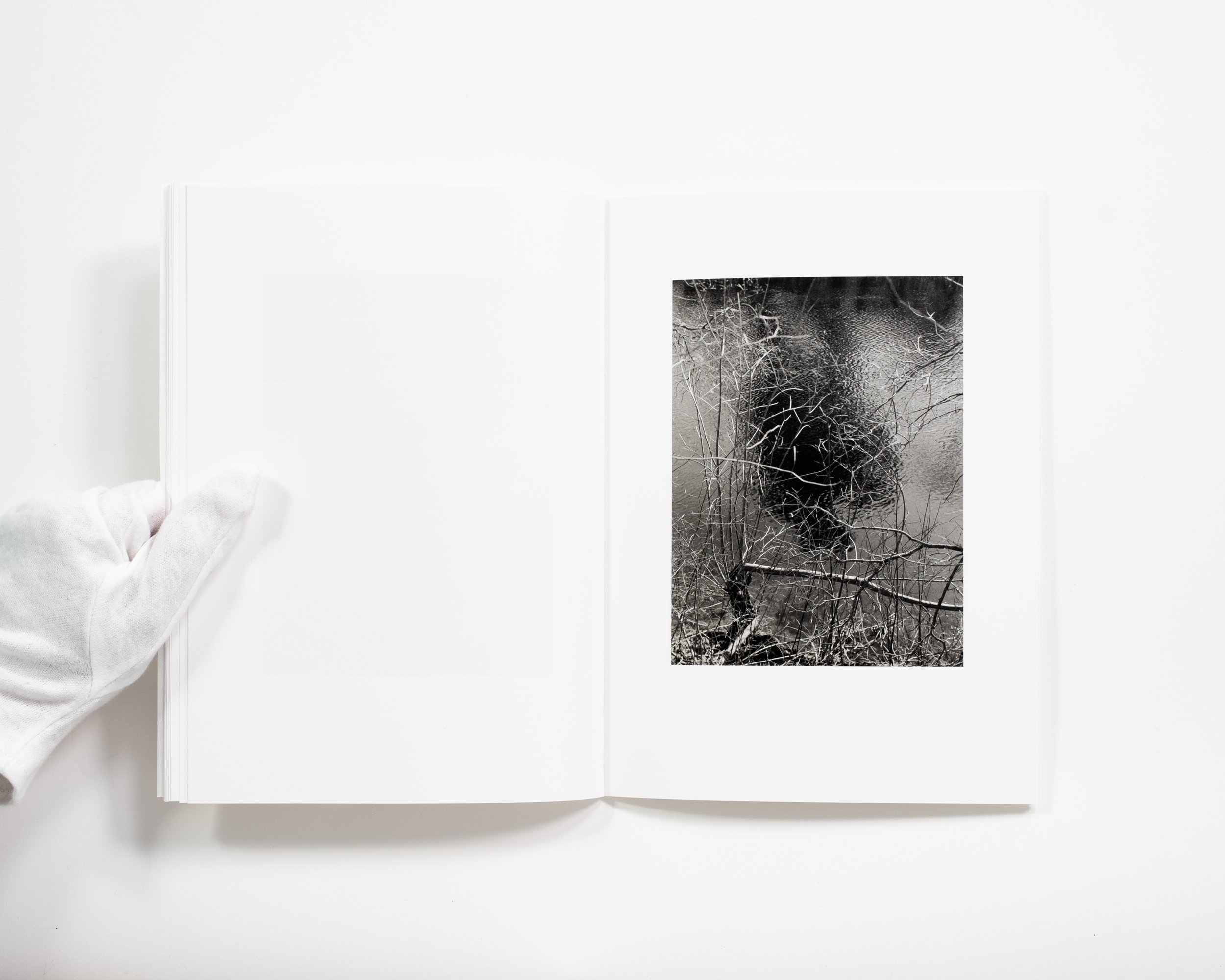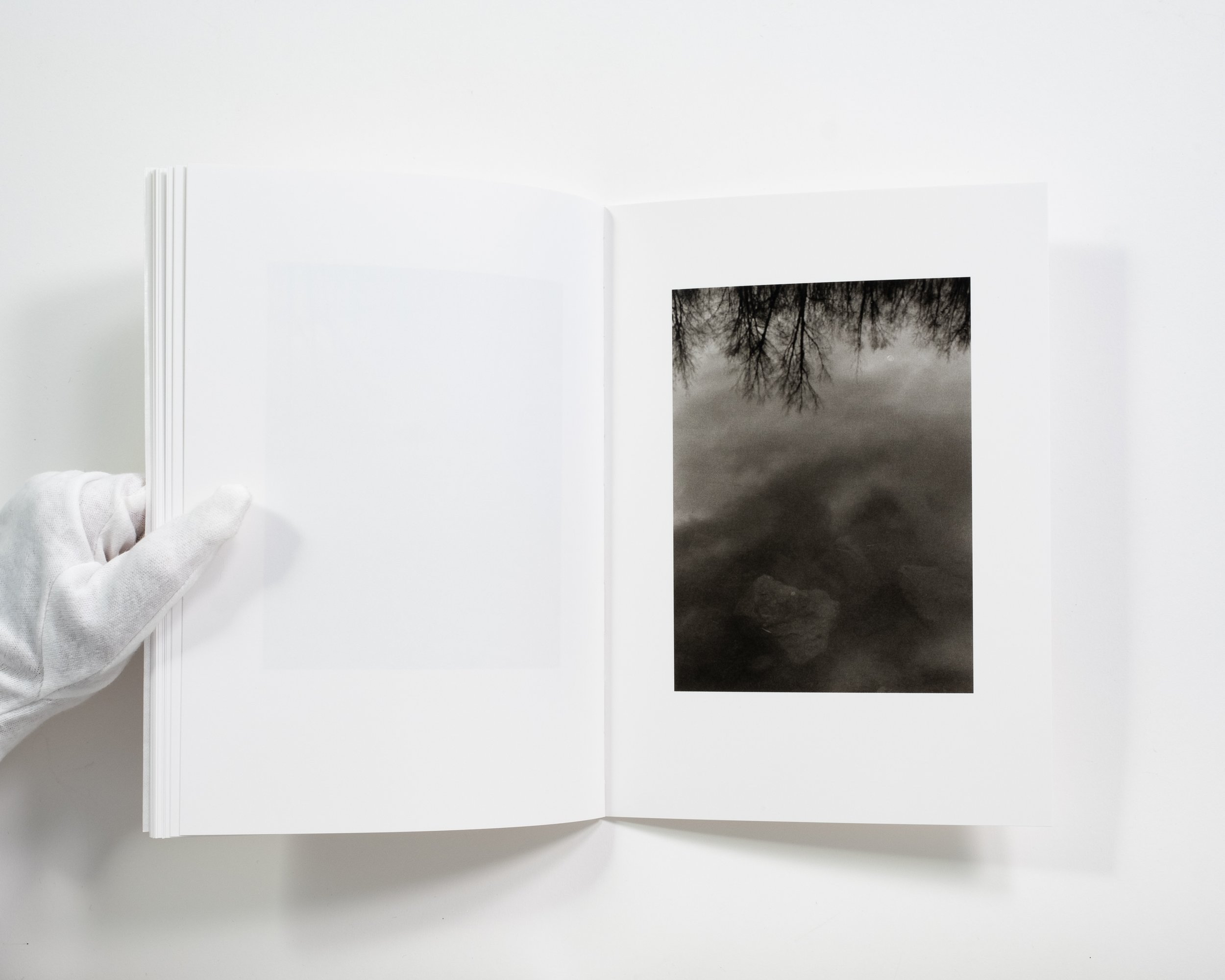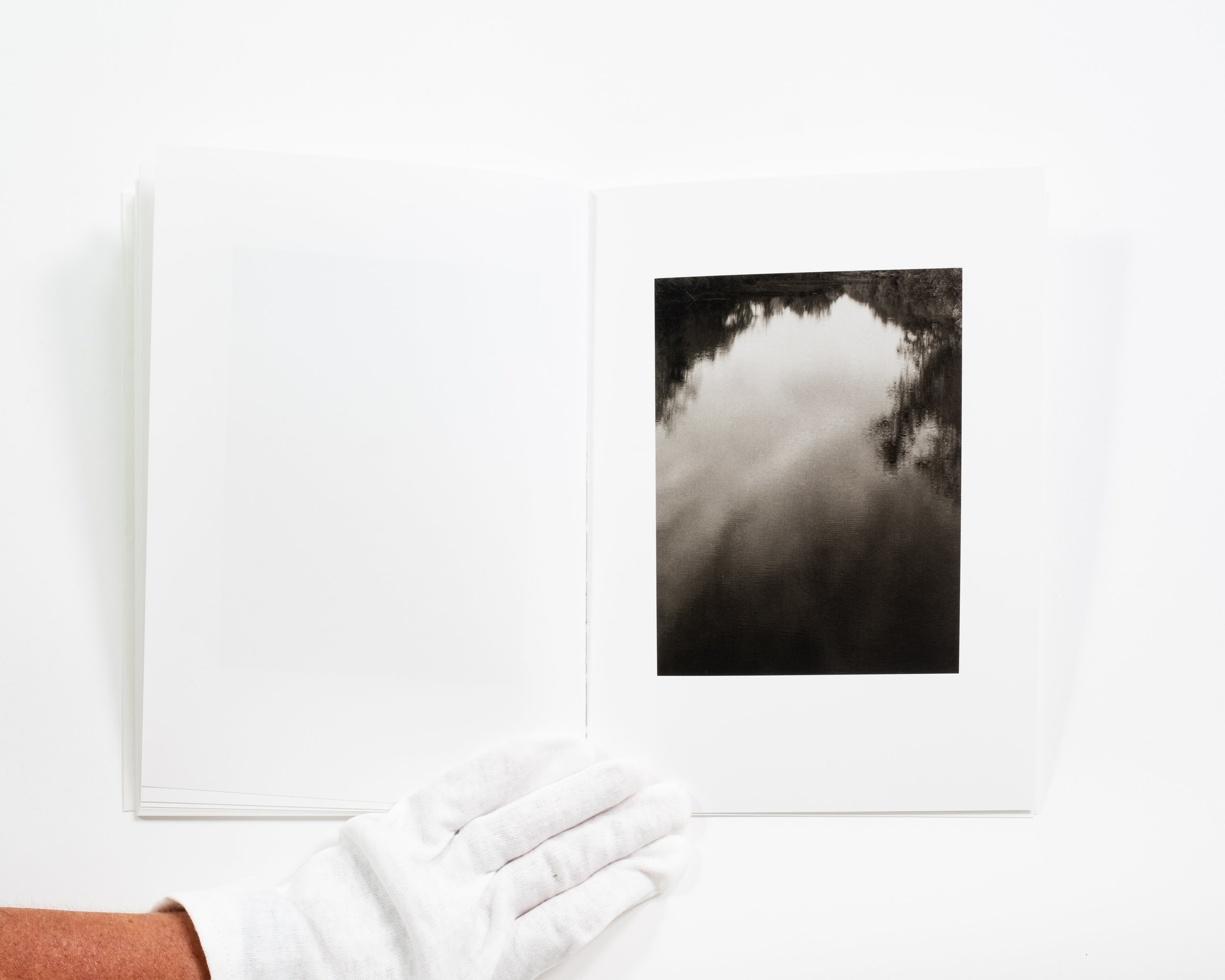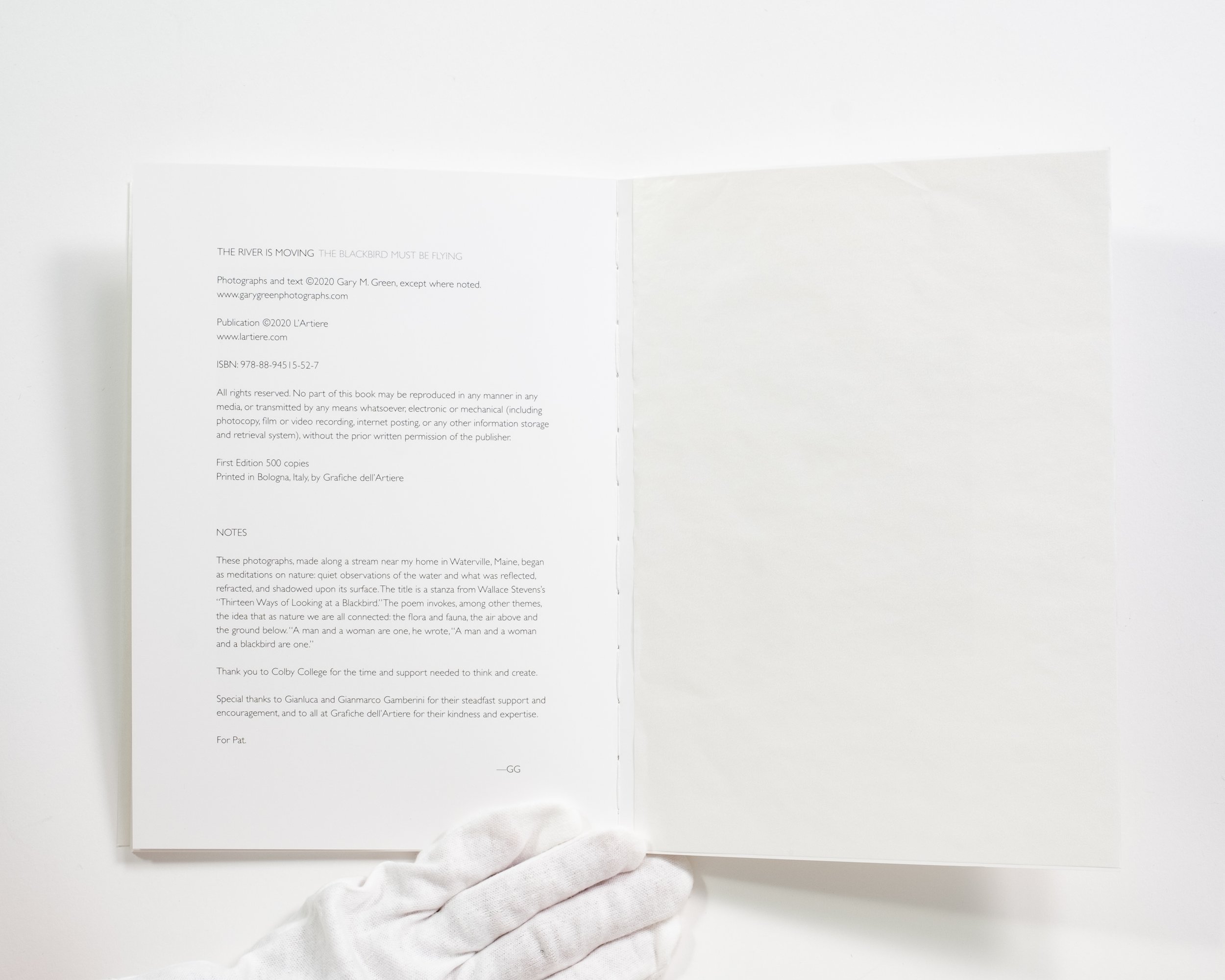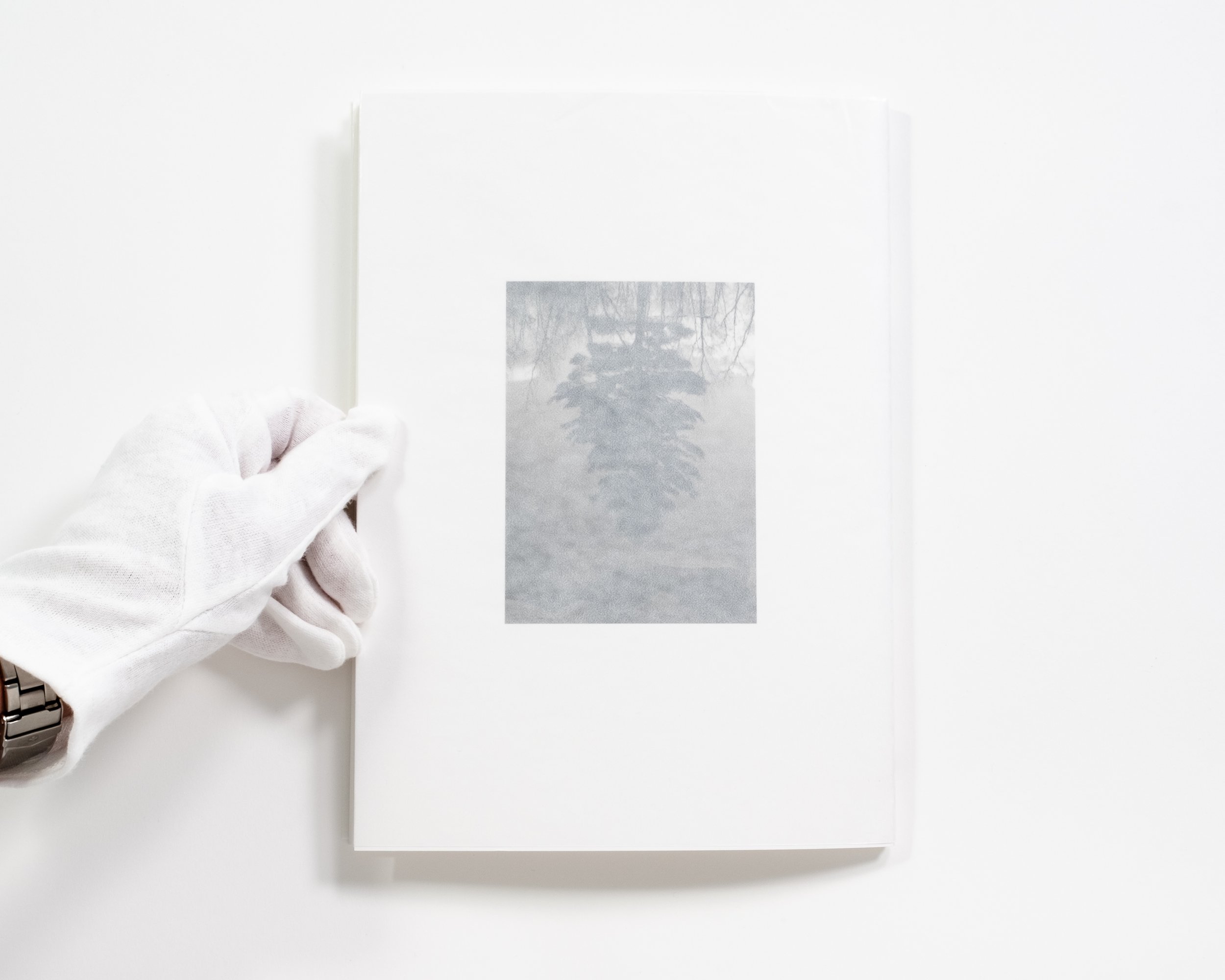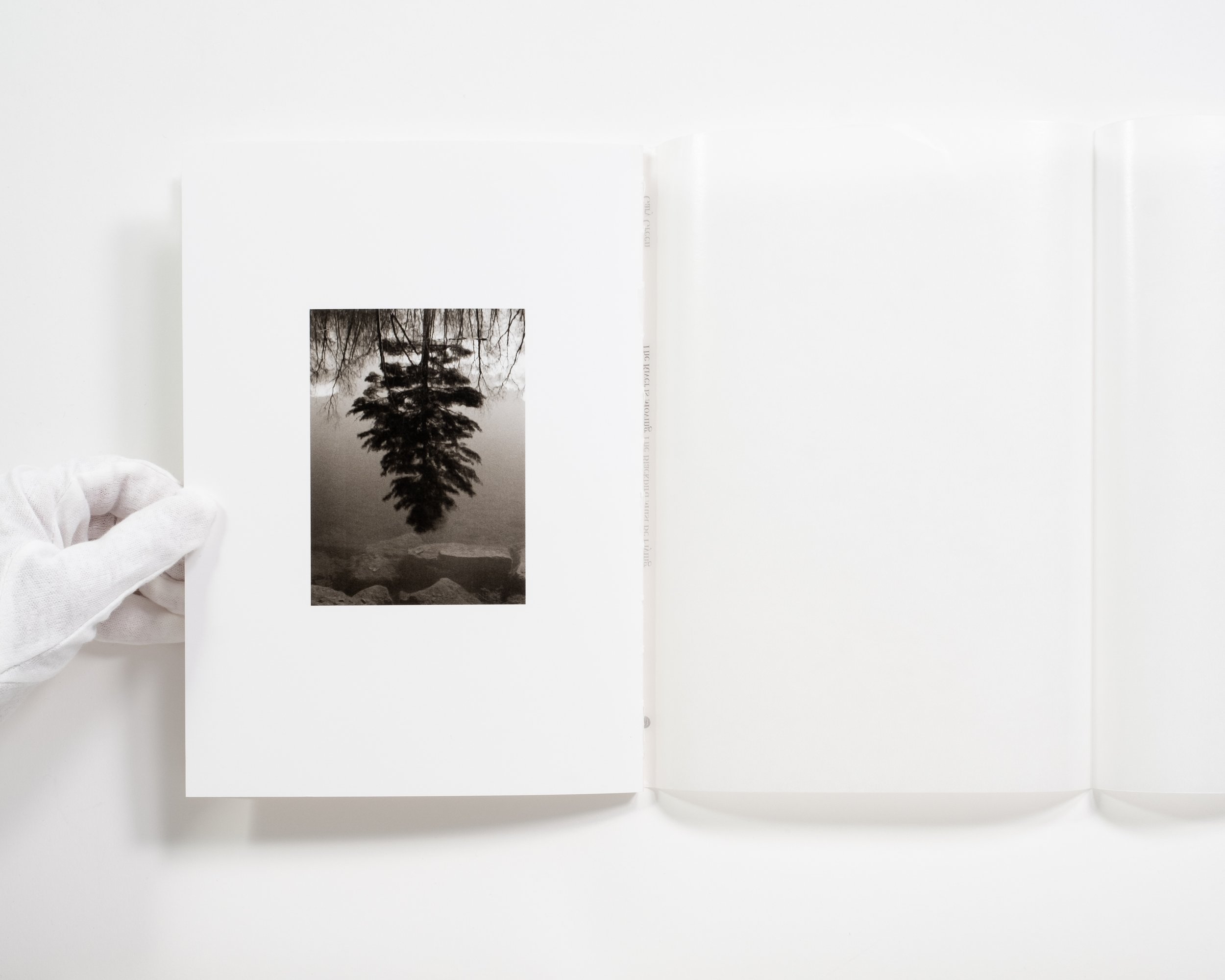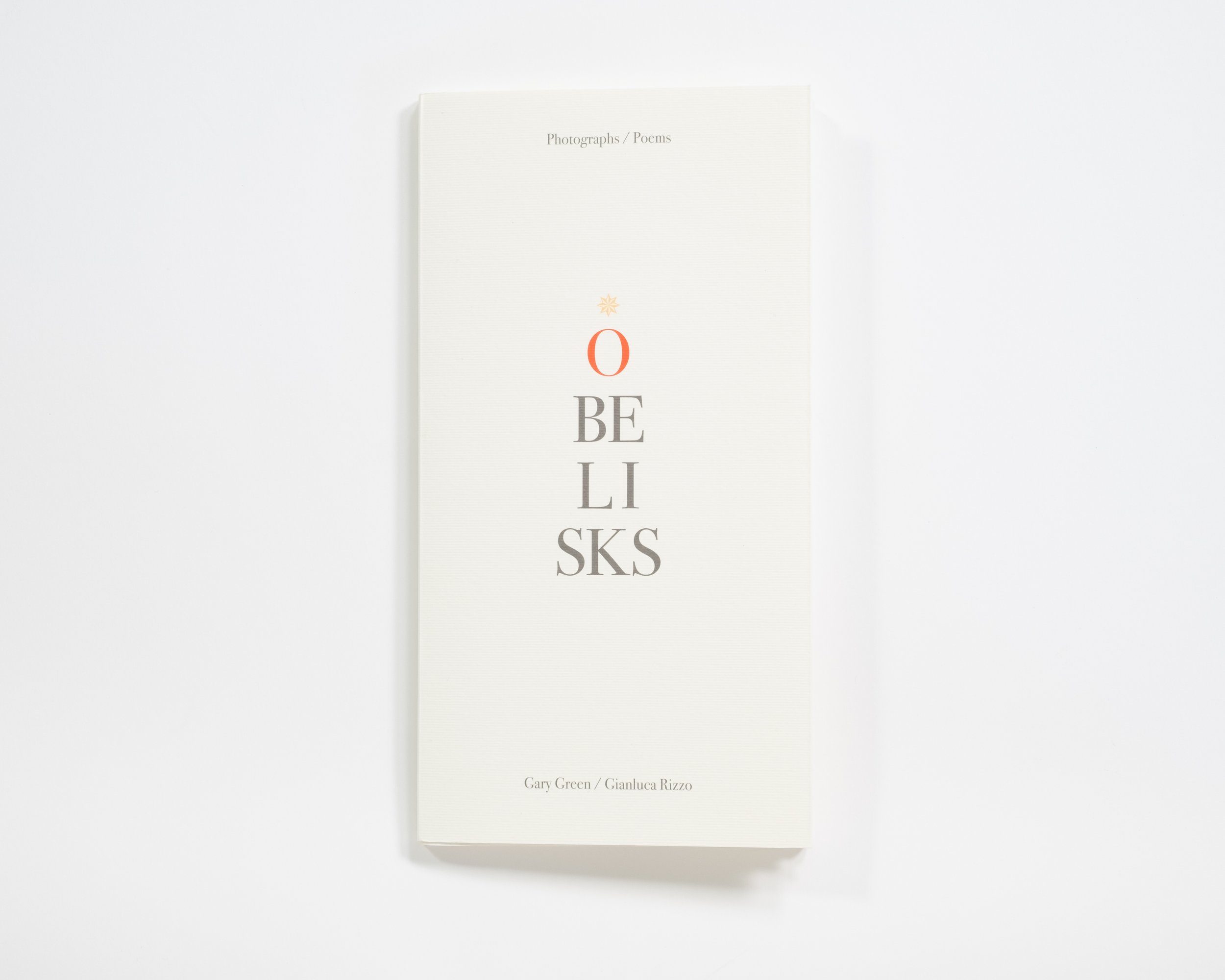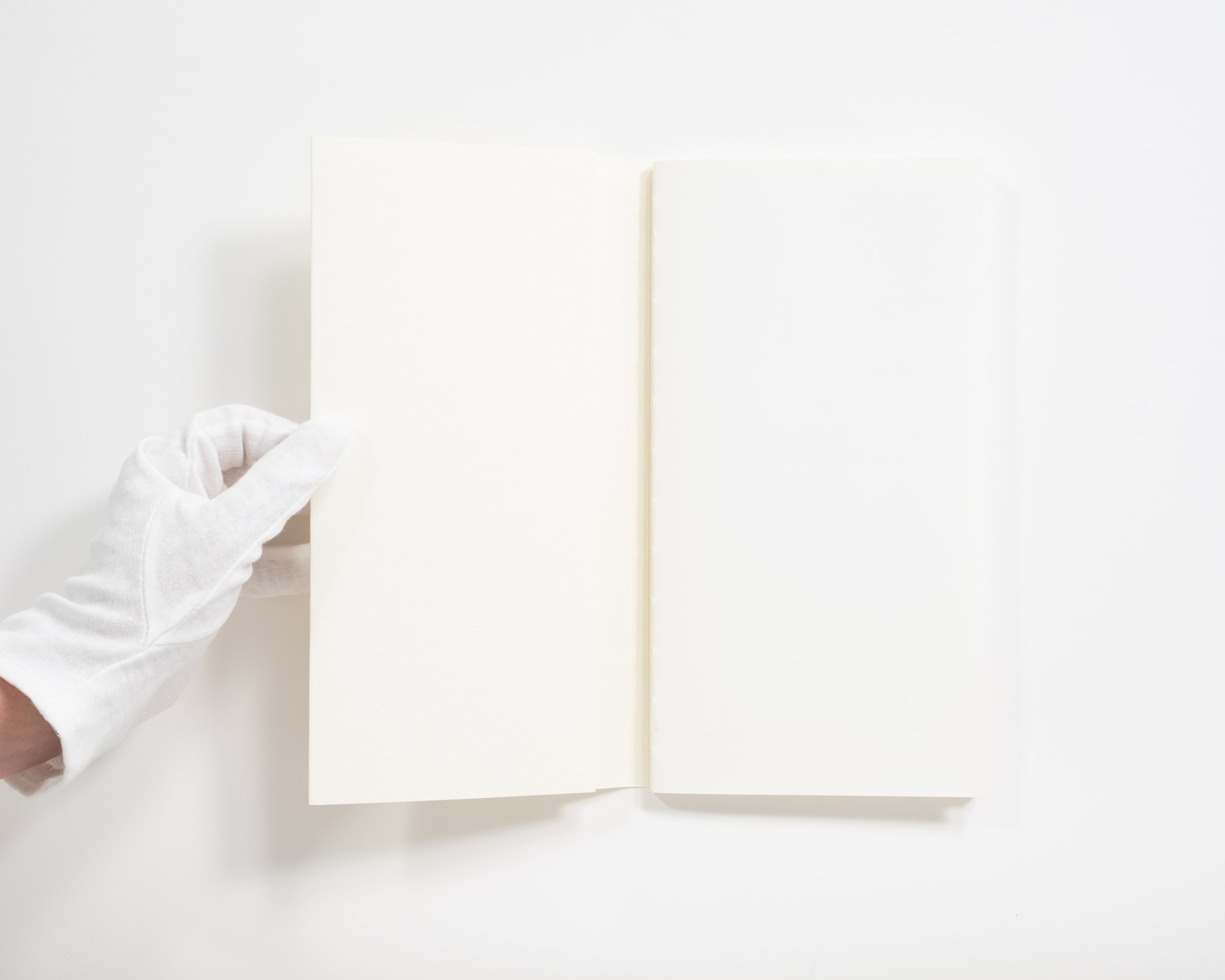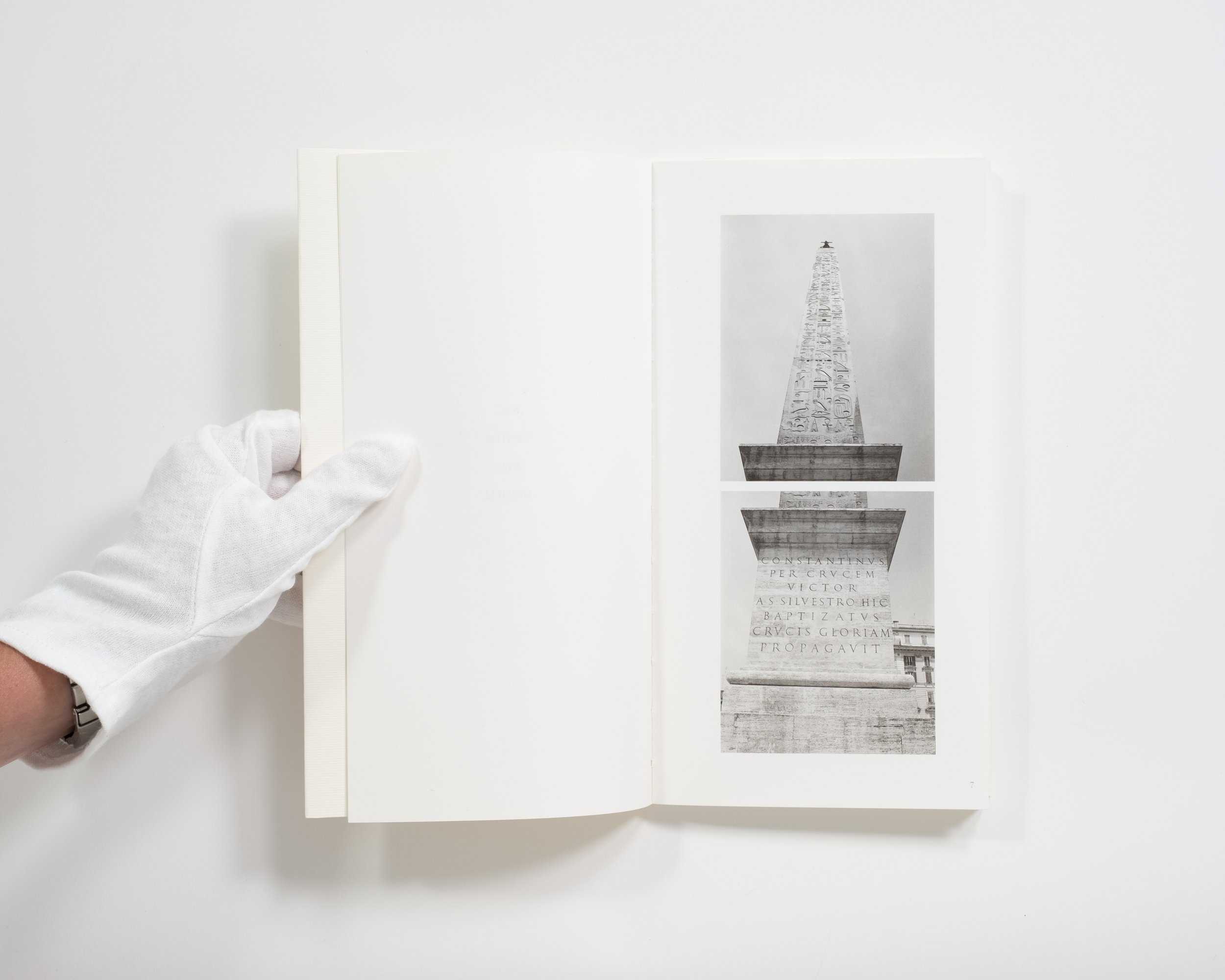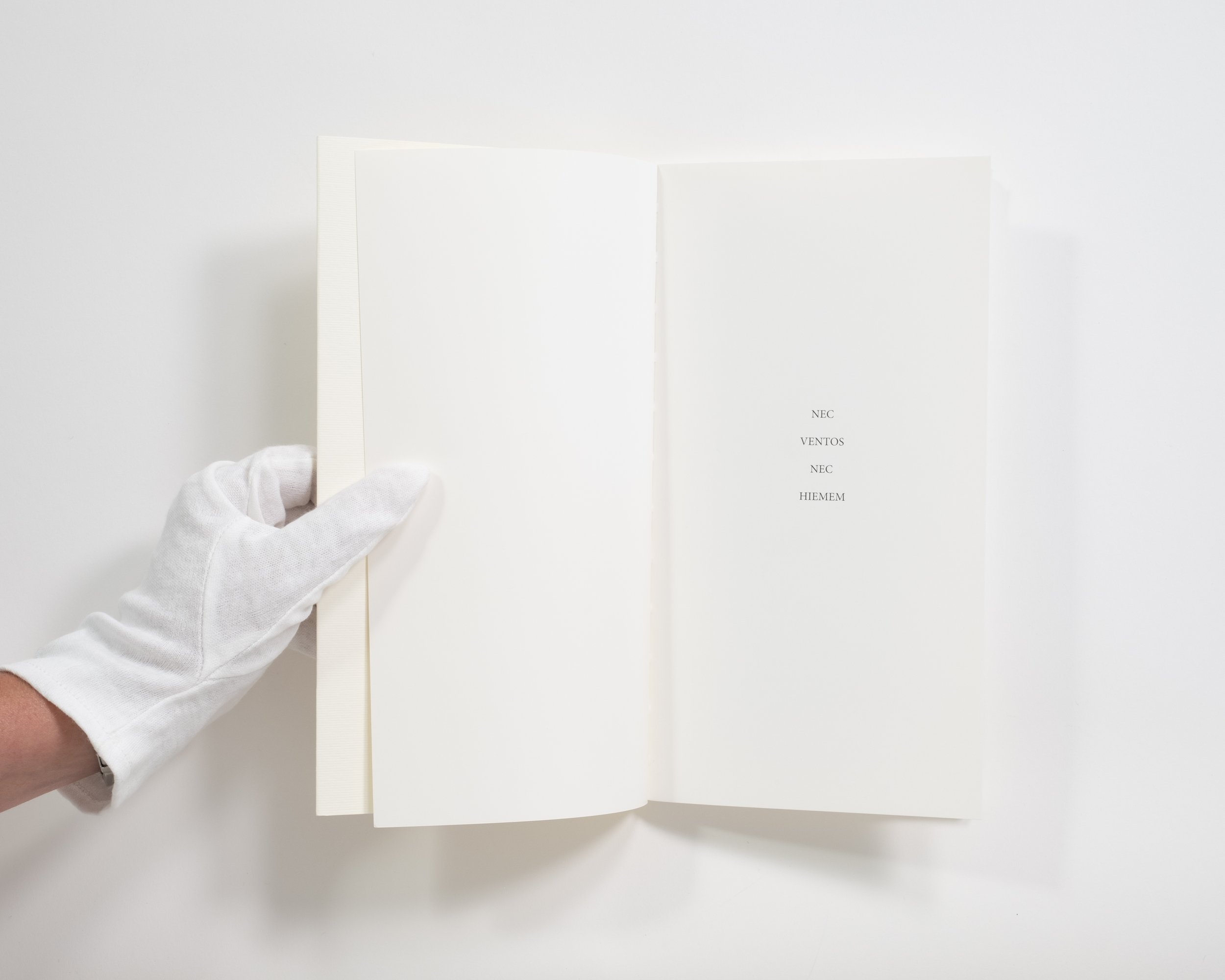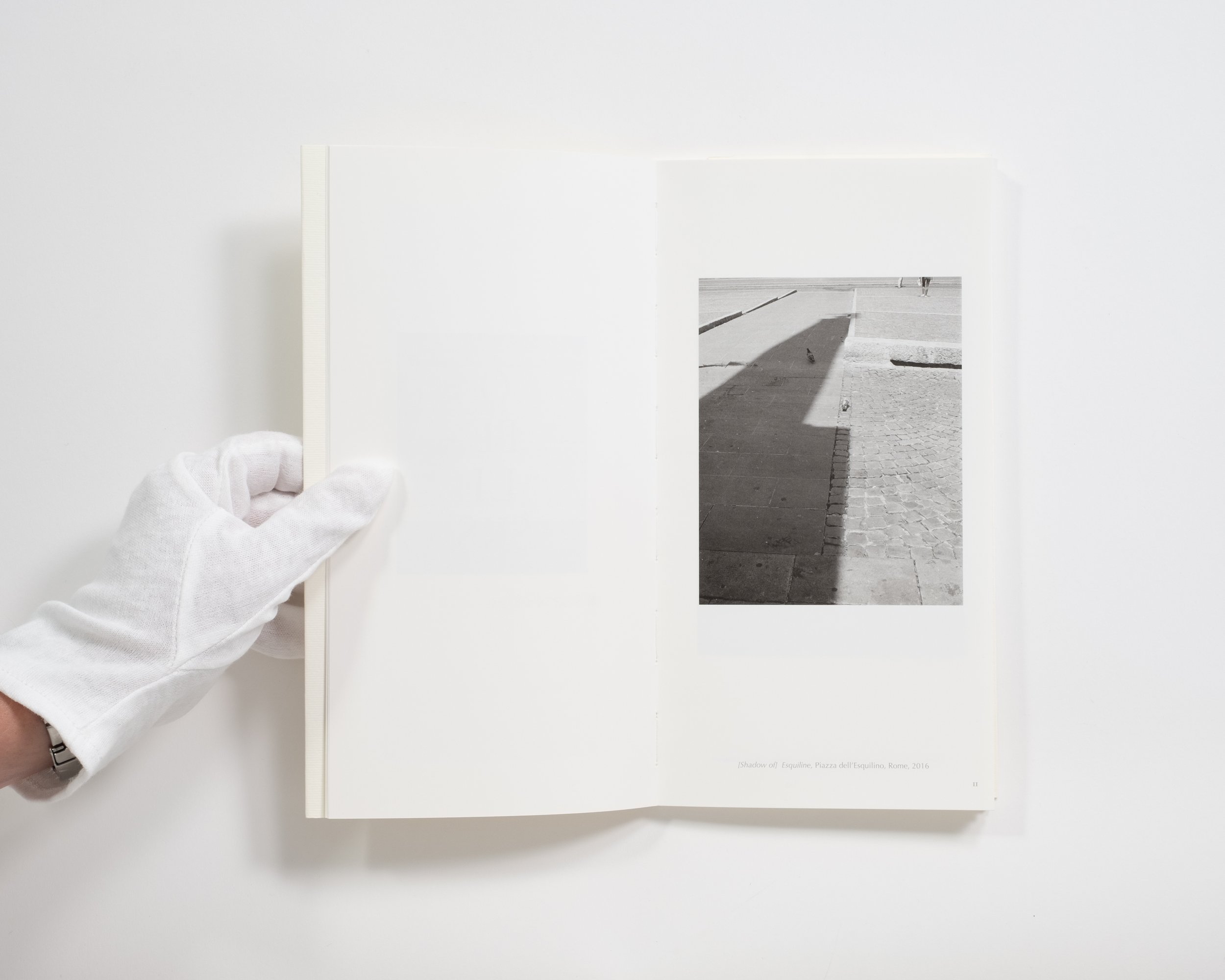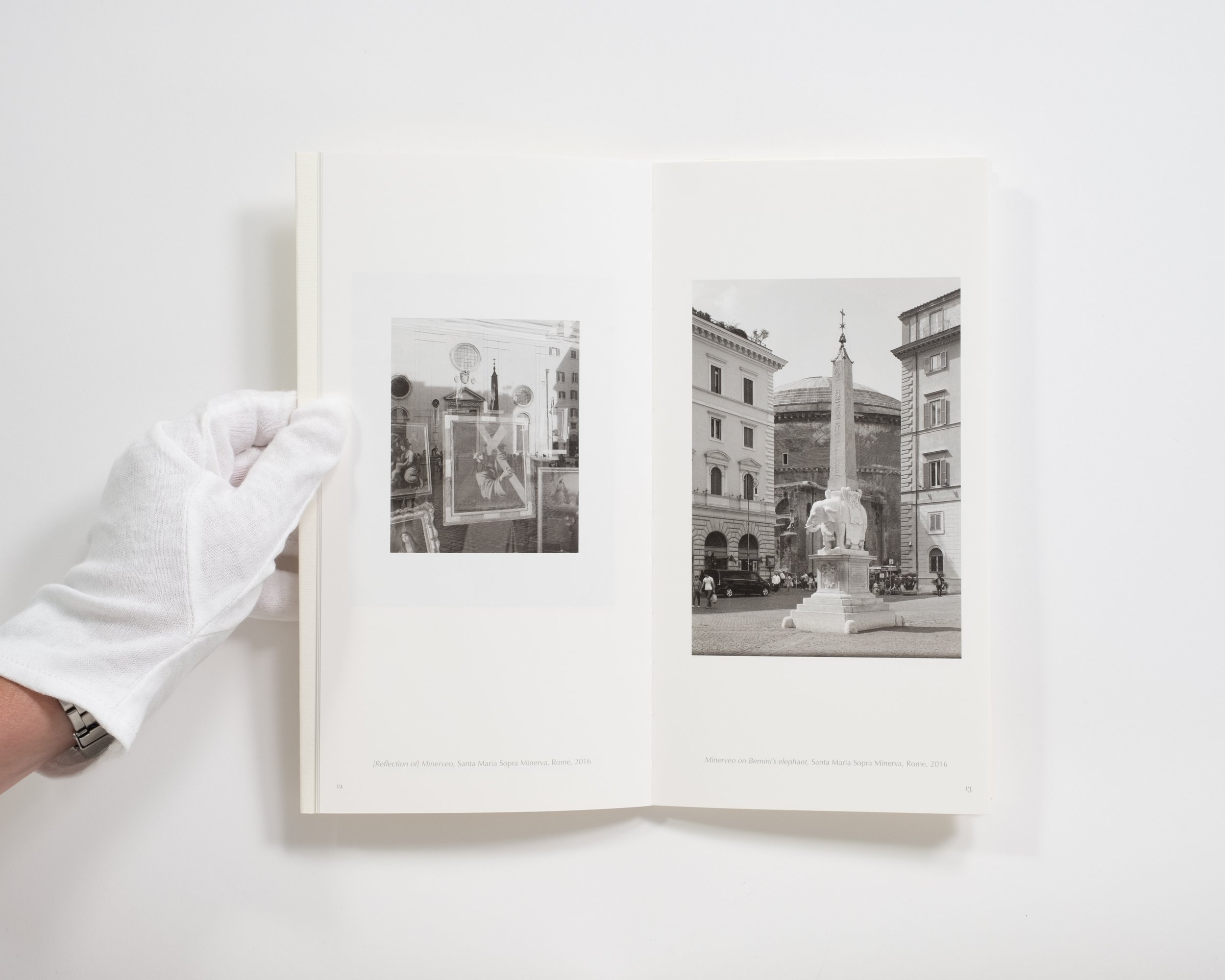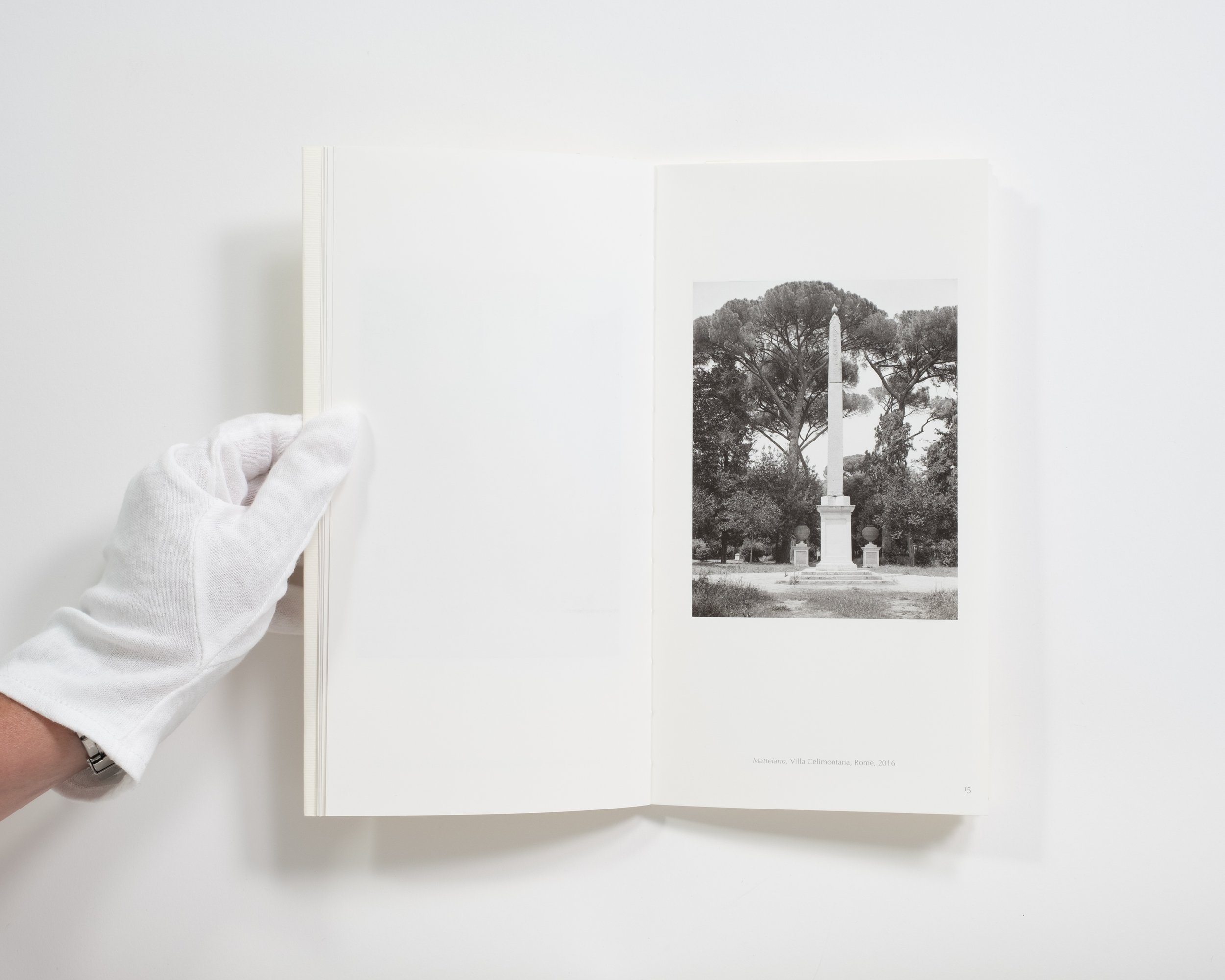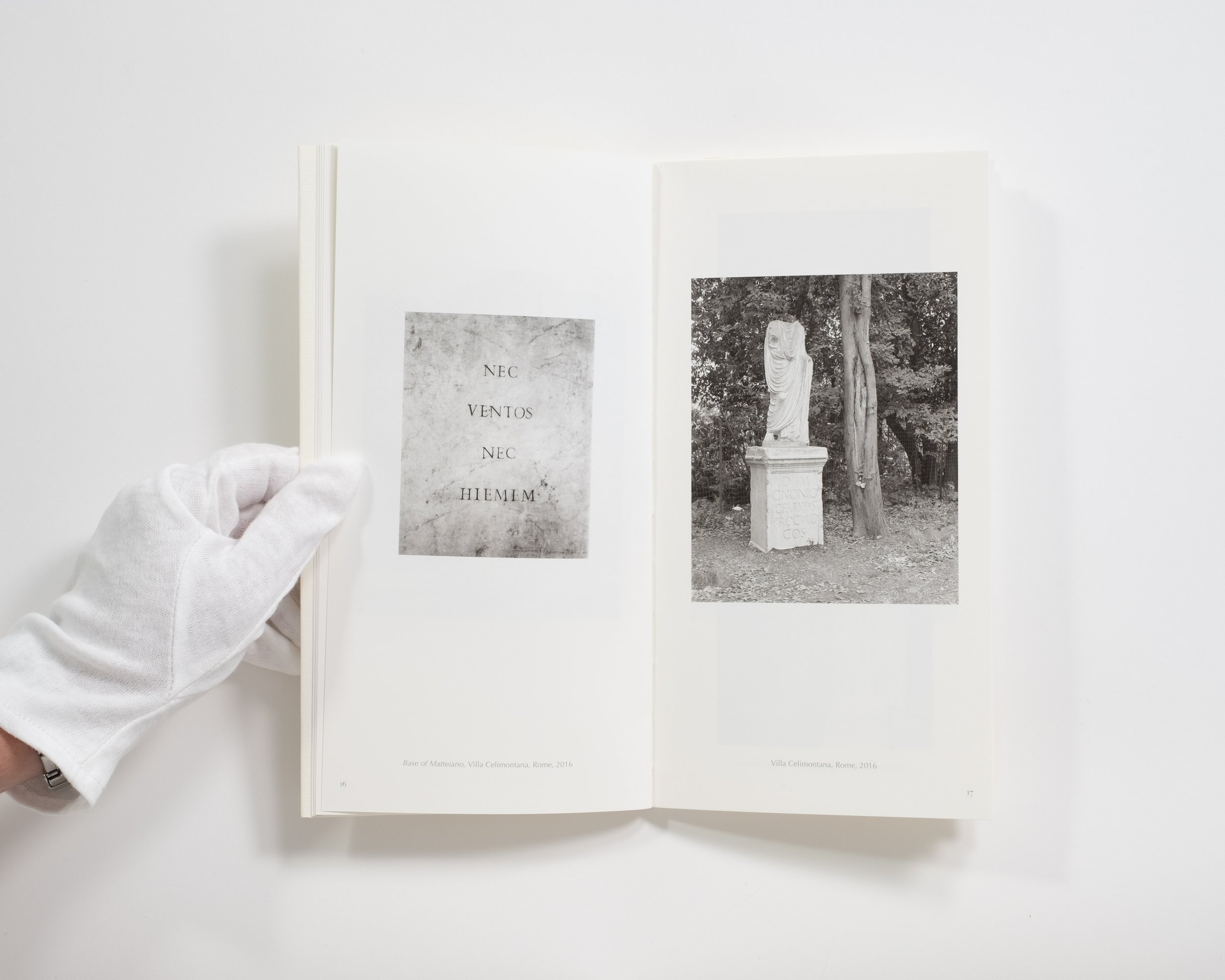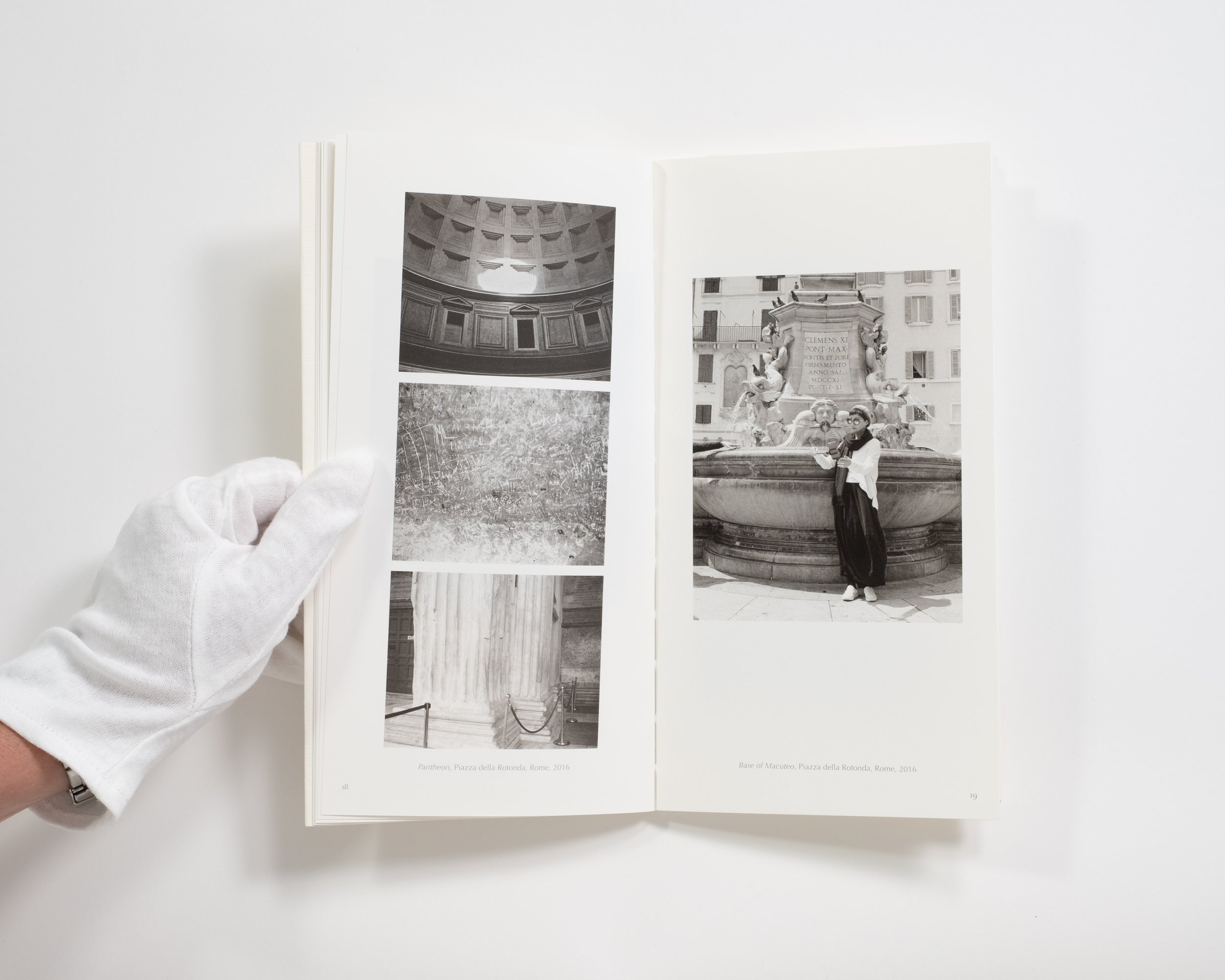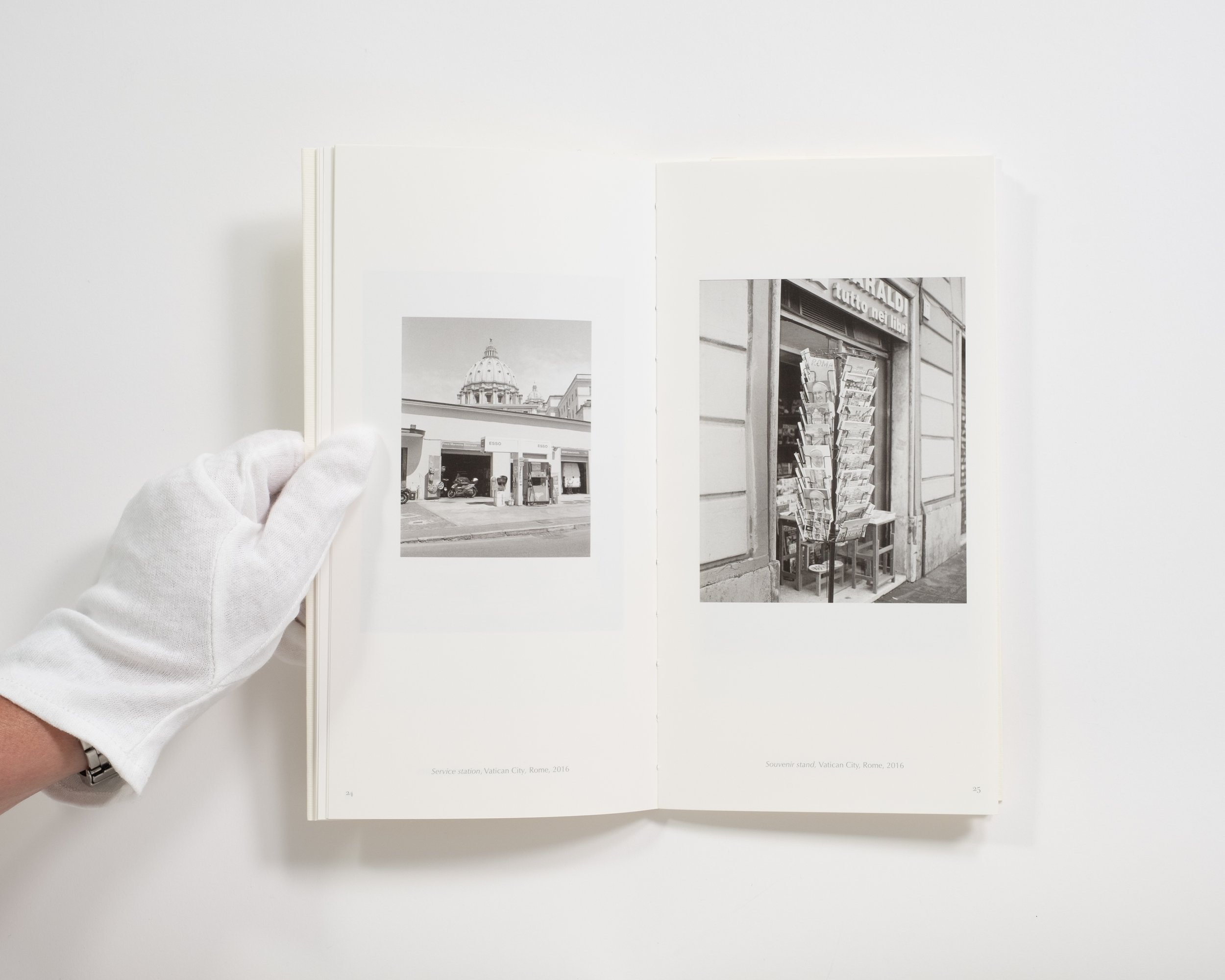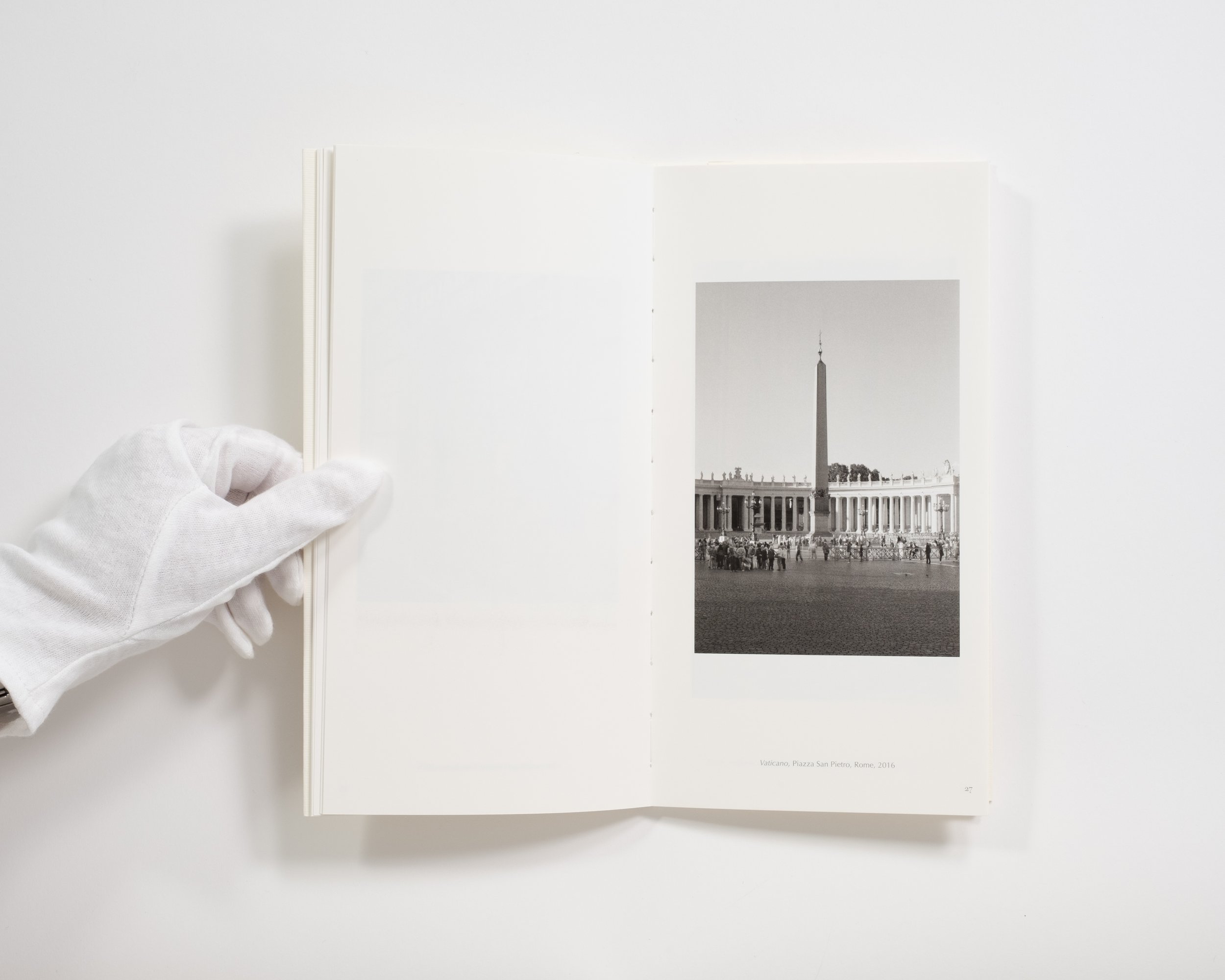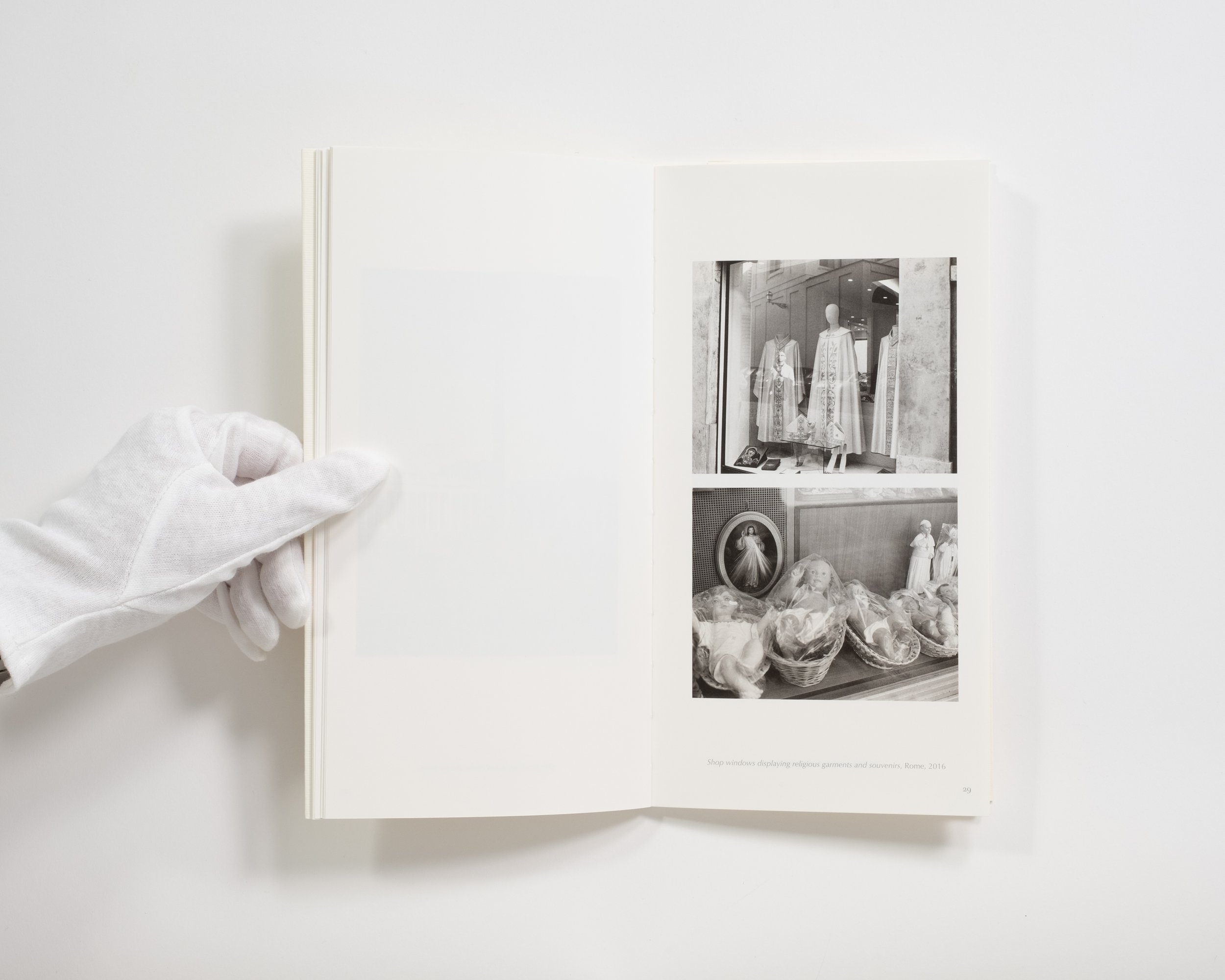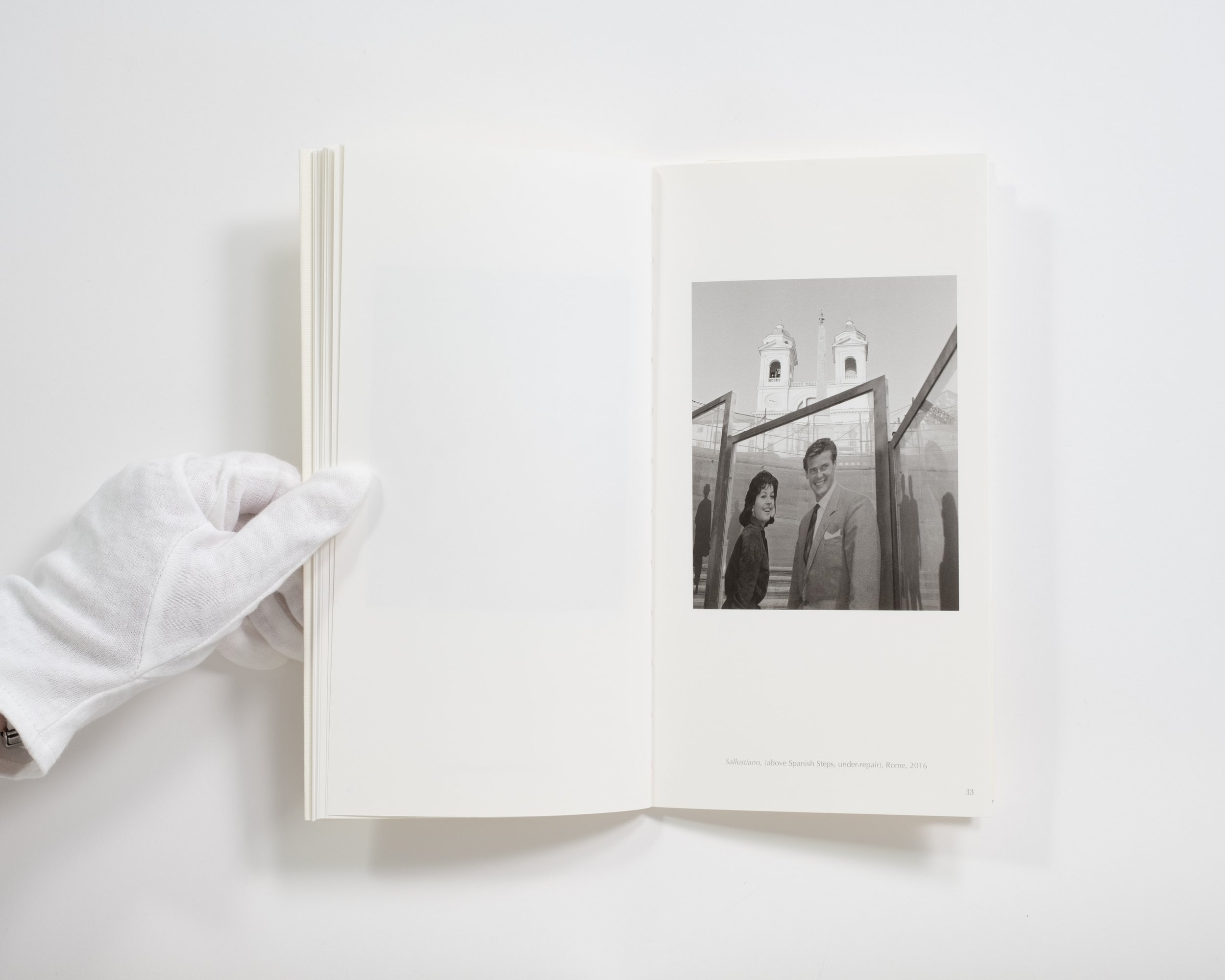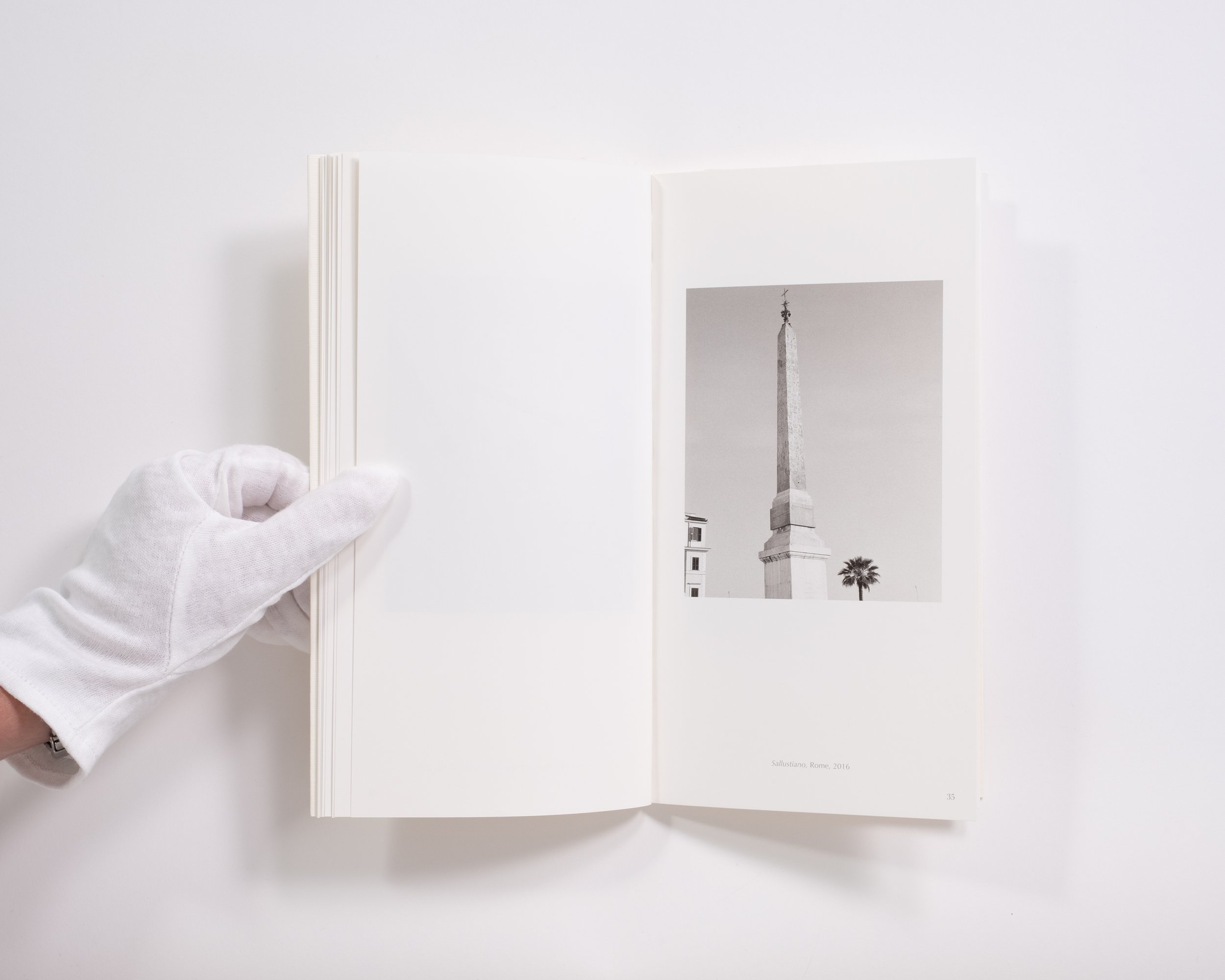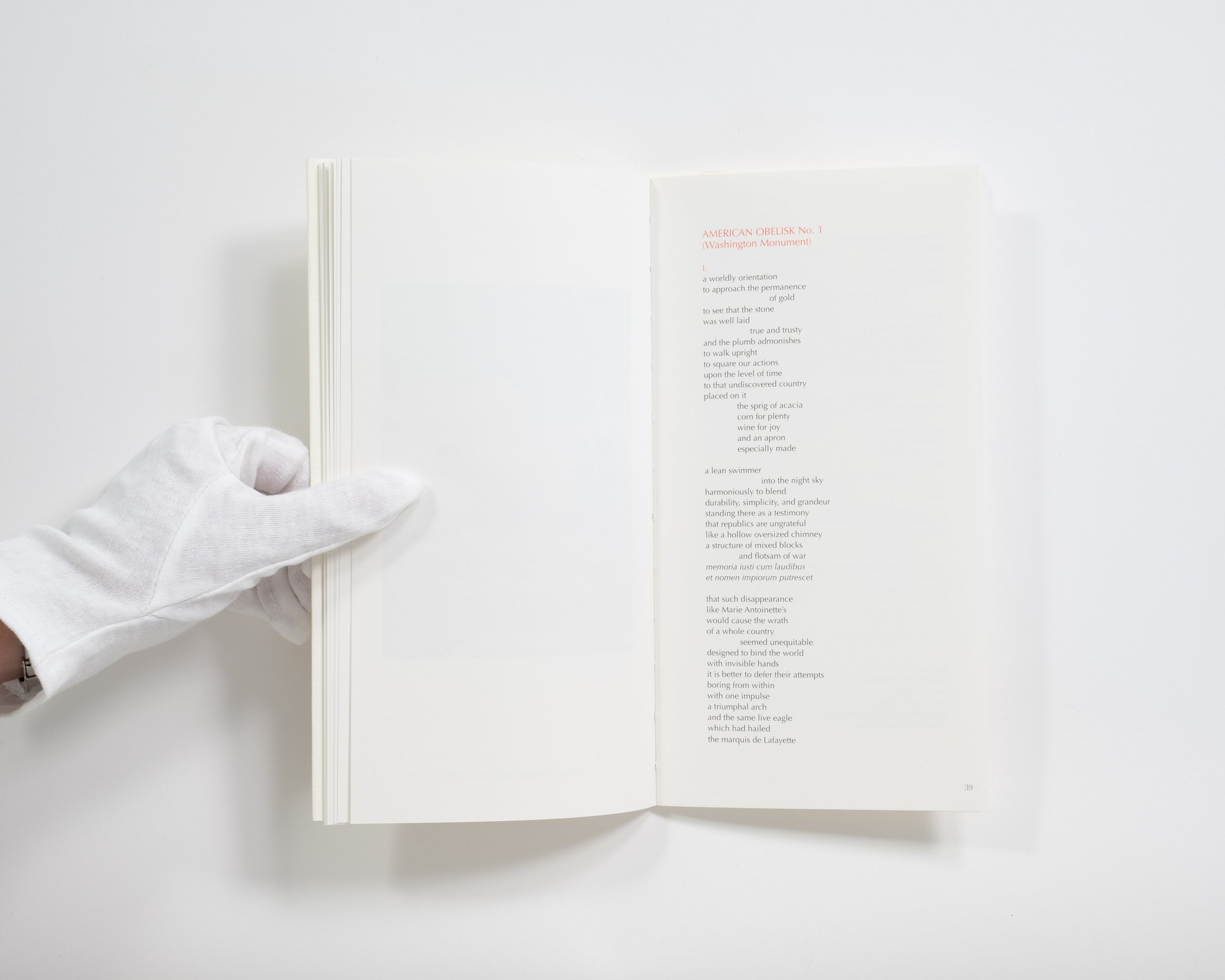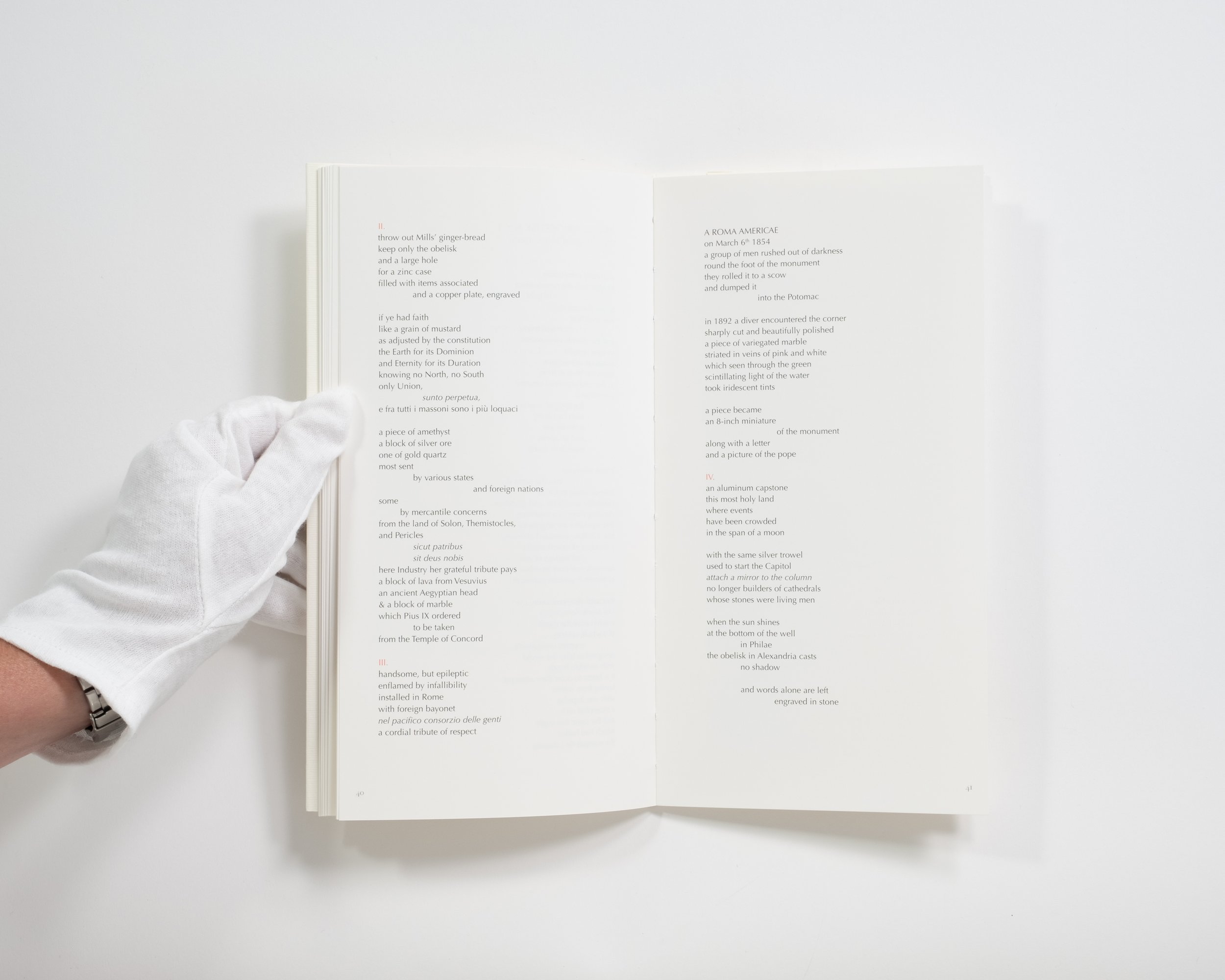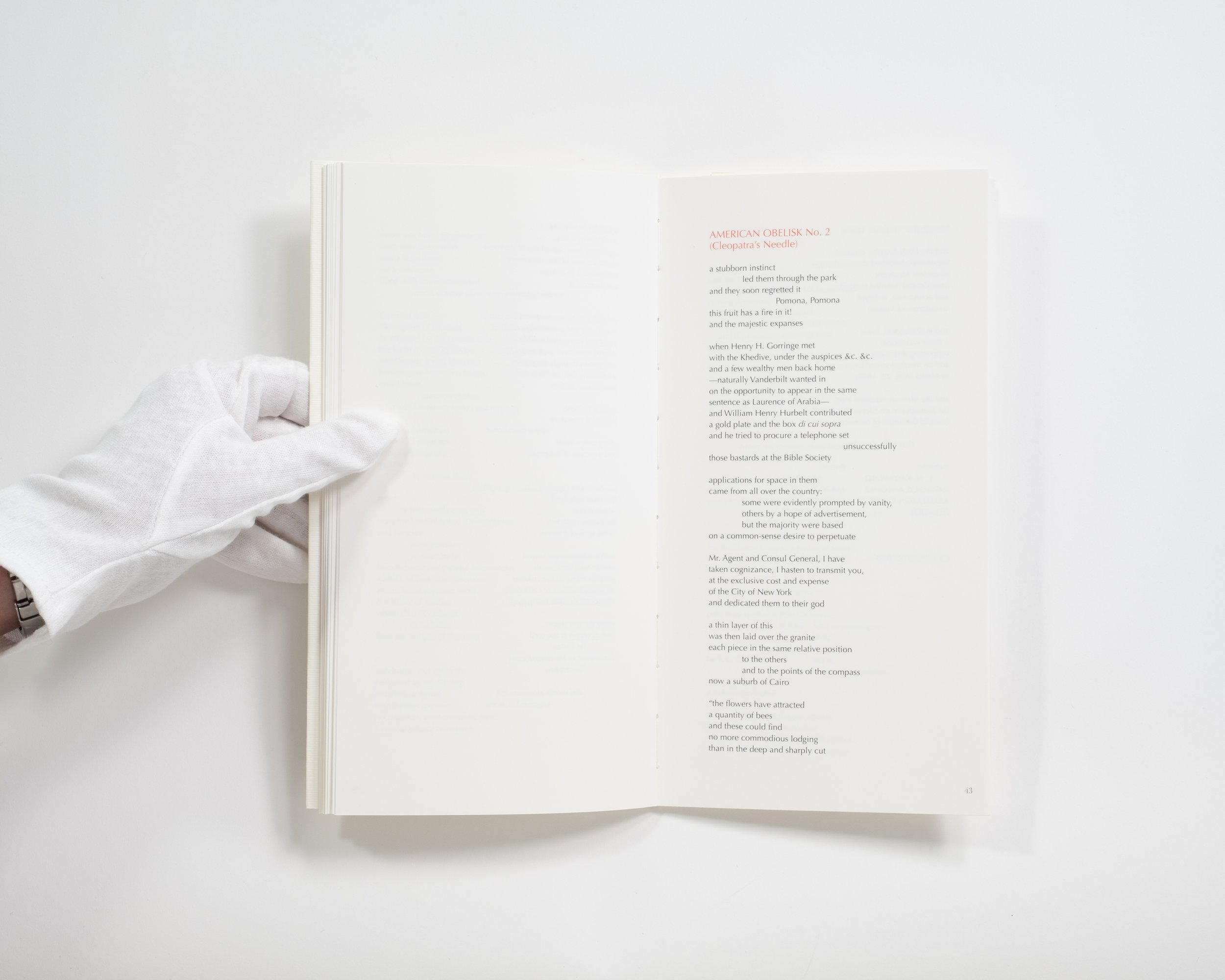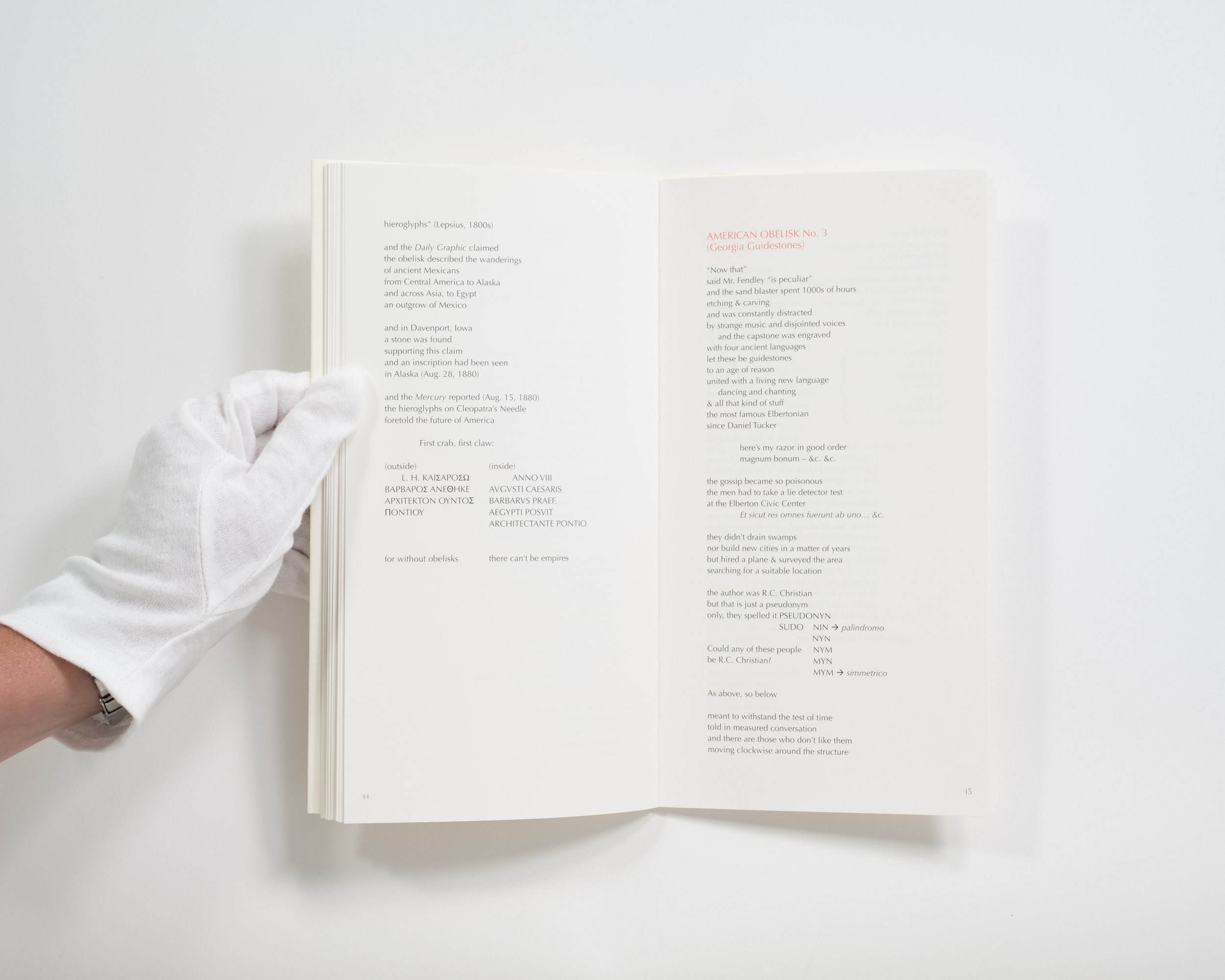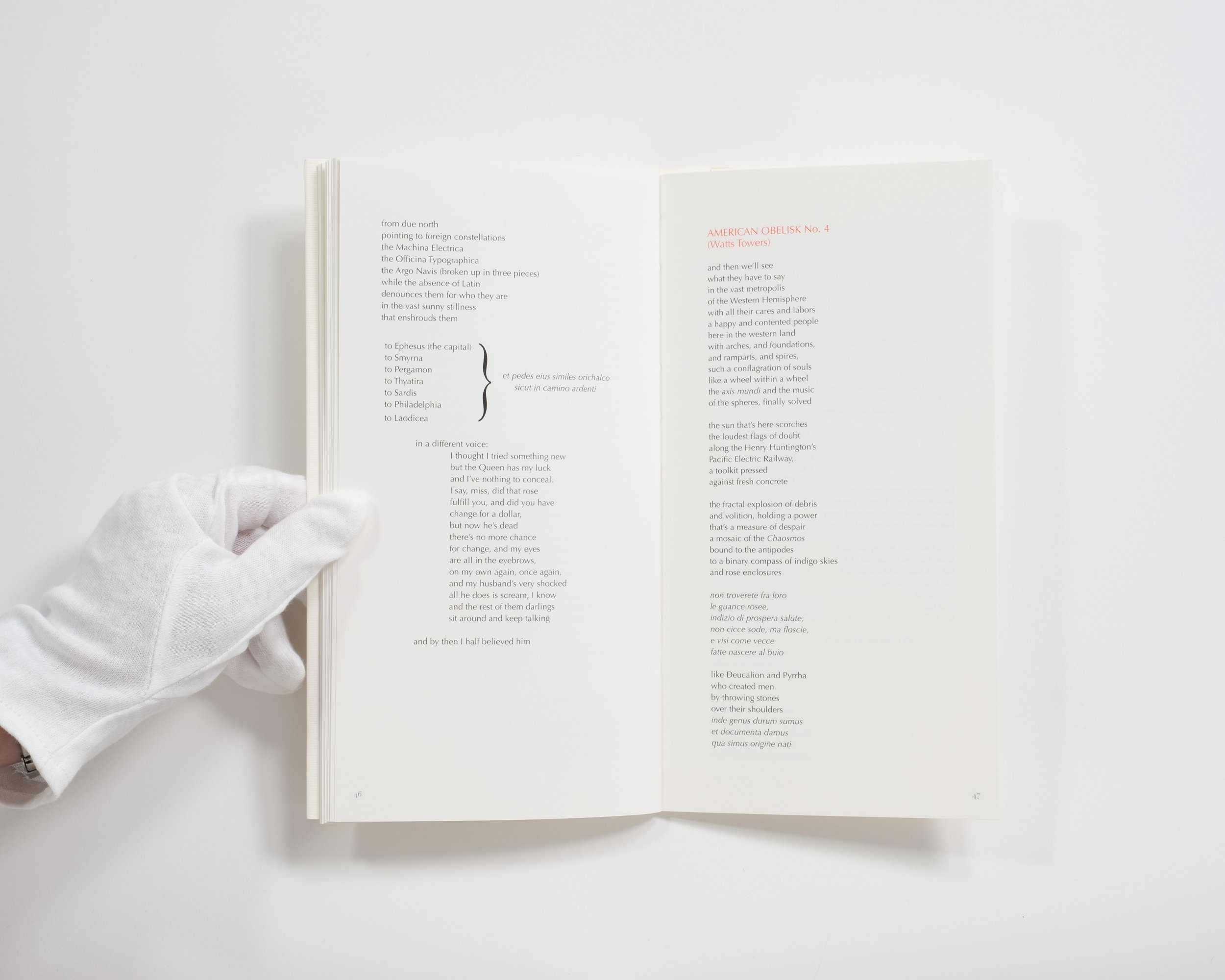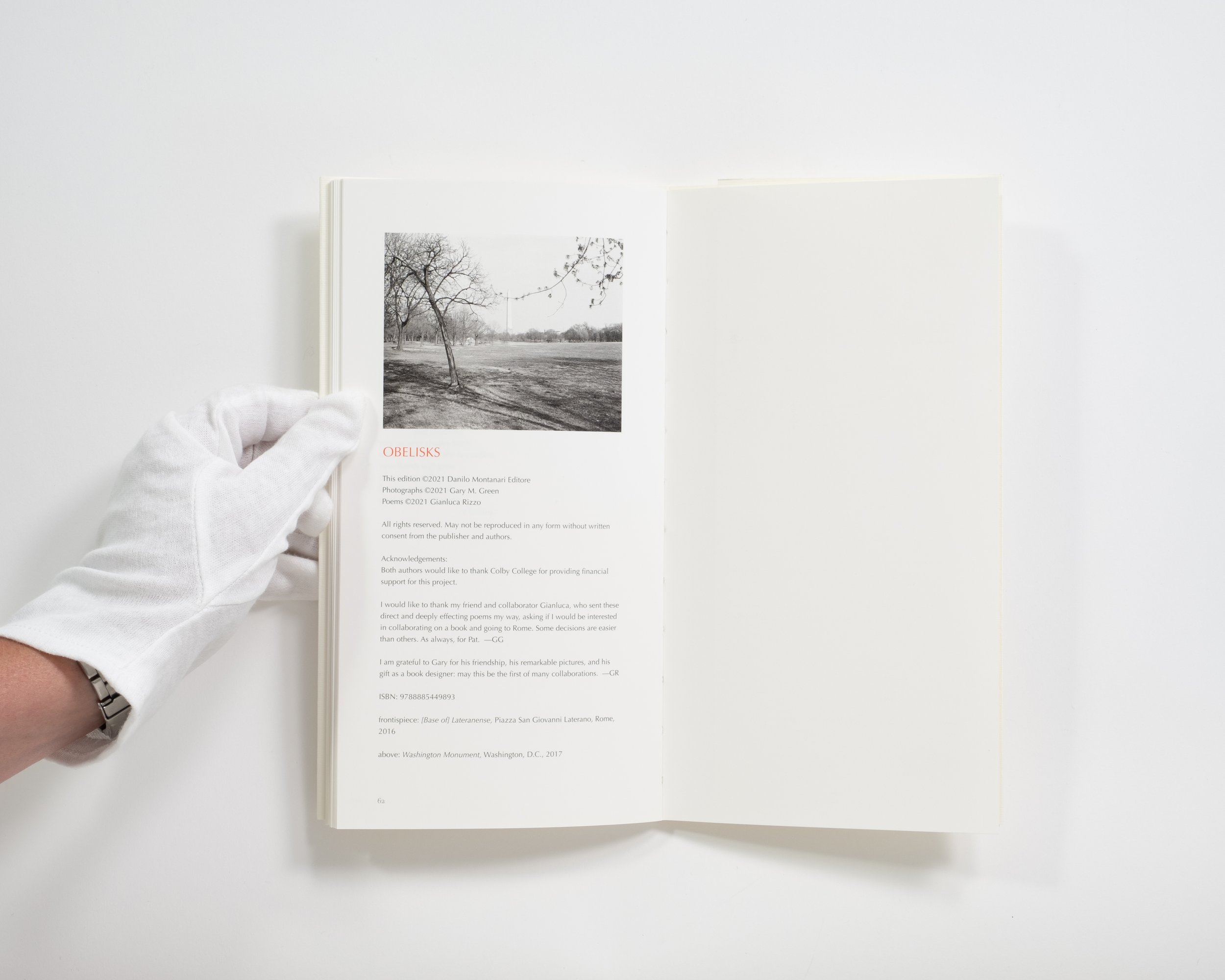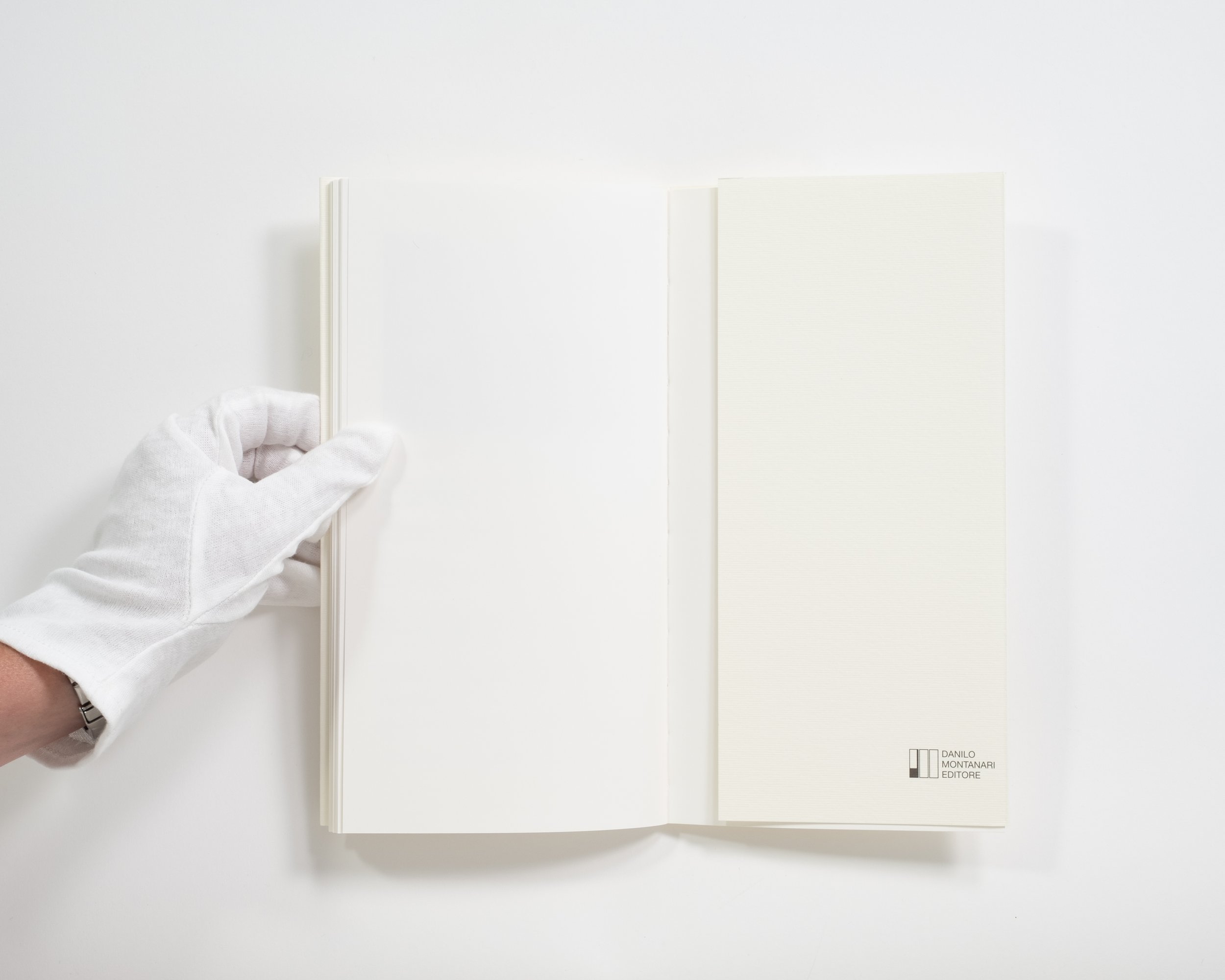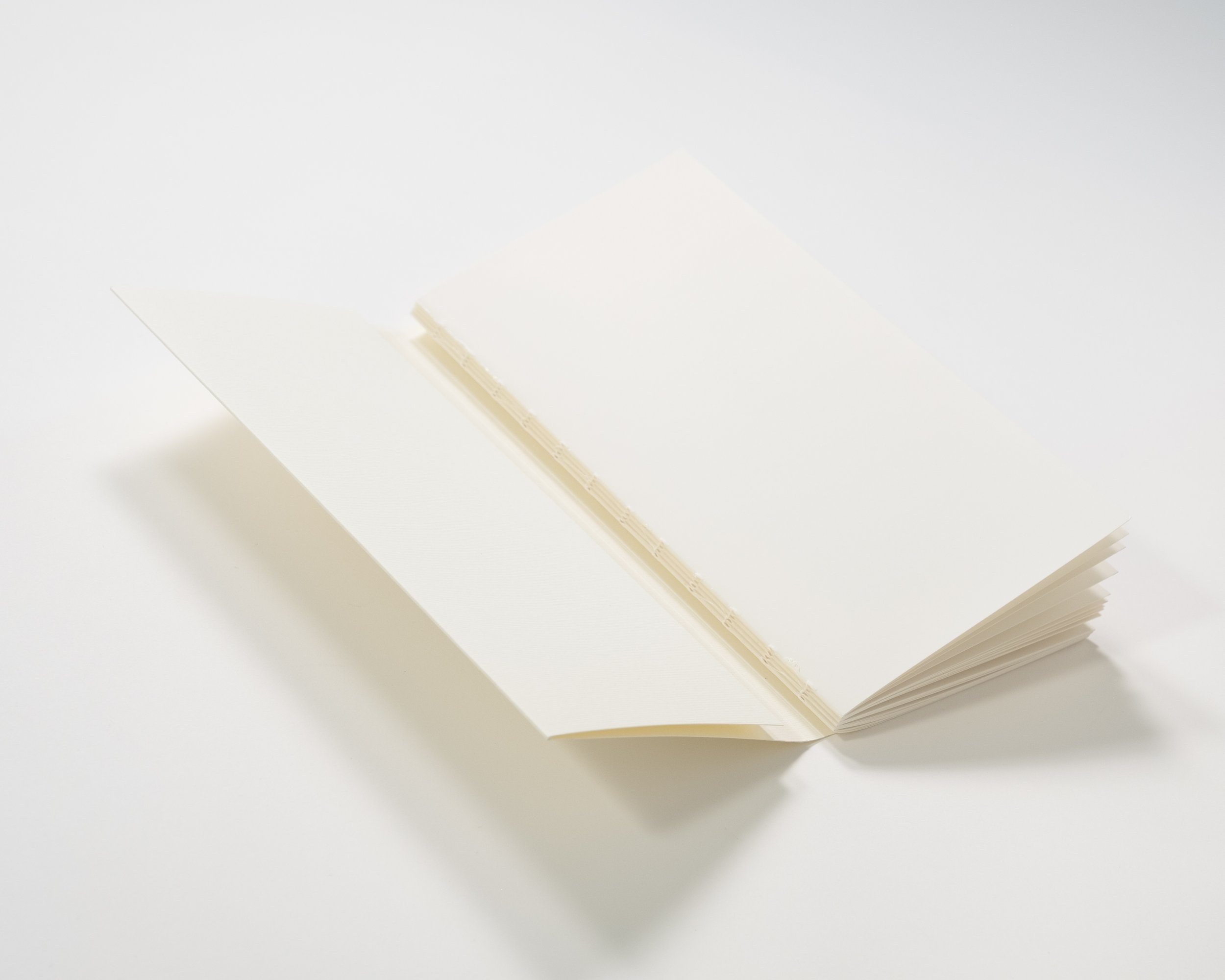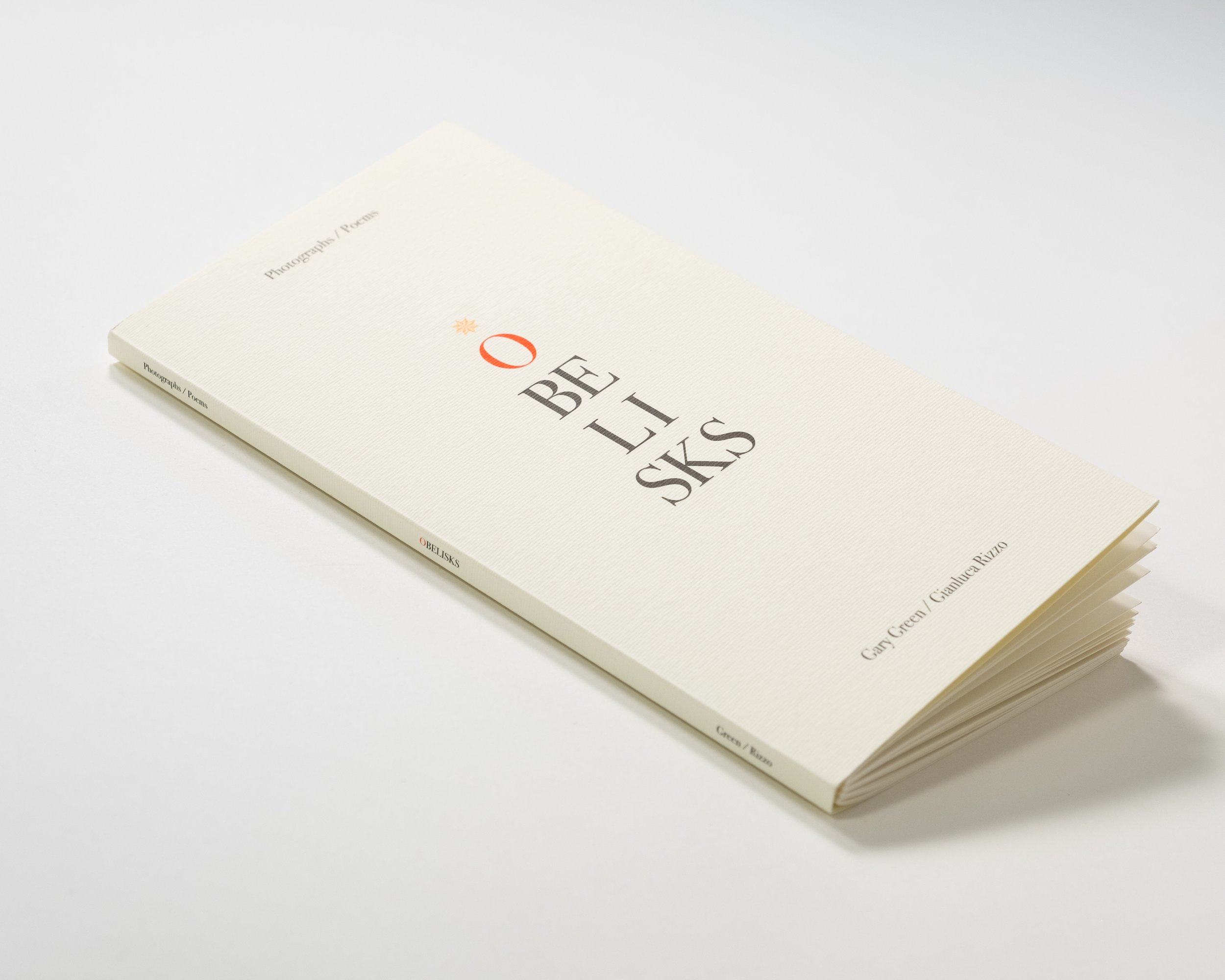The Morphing Medium:
Photographic Books, Installations, Alternative Process and Ephemera
Photography is the fastest transmuting medium. Because it's linked to science and technology there is always something new. Right now some photographic artists are looking backward and incorporating antique and alternative processes while others are looking forward to the place where photography meets other mediums like weaving, painting, sculpture, digital art and film to name a few. This exhibit will take us on a well crafted adventure where we'll look forward and backward simultaneously. — Denise Froehlich, Director MMPA
October 14 - December 3
A review of our exhibition
Gallery Talk with Artist, Deb whitney and poet, gianluca rizzo Friday, December 2 - 5-8PM
Deb Whitney #3, Looking at the world through Rose Colored Goggles series, 2022, Appropriated photo transfer of a female laborer, embroidery thread and a fragment of a pink receiving blanket, 12 x 18 inches, $700. each
My sister-in-law, Elizabeth Whitney, LICSW (a very smart woman), recently wrote me an email. In it she wrote some thoughts on the concept of hope: I’m interested in the subject of hope – what it really is beneath the surface layer of optimism for the future. In some of the best things I’ve read, I’ve learned how hope comes when we first face what has been lost and grieve it and then move to use what remains to build a new narrative. So, true hope is grounded in the ability to face the past and from that learn about how to imagine a new future.
This message spoke to me as it summed up the complicated notion that inspired me to start drawing with thread – embroidering – on photo transfers of working women. A few months ago, I was talking to my 24-year-old daughter Mahlon, who at a particularly demonstrative moment declared – It’s like wearing rose-colored goggles! At that time, we had been discussing the concept of women who work, multi-task even, while maintaining the burden of care all while putting the best face forward.
So, I stole that line. It made me think about how best to convey the notion that women carry a lot and keep on going. I have been using appropriated photographs for many years. The work has included painting, drawing, printmaking…and now embroidery. The strength of using arbitrary images is that one can curate the mood, literally pick and choose the moment in time from which to work and draw on the period from which the photograph was produced. I often use vintage photographs as they have a universality that the viewer can relate to creating a sense of familiarity.
The combination of a traditional craft, sewn on swaddling cloth, redolent of women’s roles as mothers, has made these embroidered drawings feel connected to the image of the original vintage photographs. Seeing the world through rose-colored goggles is a metaphor for the idea that hope, and the lessons that we learn, may be conveyed through looking, as Elizabeth says, beneath the surface layer of optimism for the future.
— Deb Witney
Deanne Witman, Auric Object #5A, 2013, 1/1, Archival toned fiber silver gelatin prints made with slugs, mounted to anodized aluminum, 19.63 in. diameter, $1150.
With Supercluster Arion and Other Phenomena I continue to explore my themes of obsession – ephemerality, biology, synergy, and finding a way to make the intangible tangible. Over the course of two years, I worked with common slugs directly on silver gelatin photographic paper. The process involved nightly slug hunting trips into the woods, followed by late night darkroom sessions. (No slugs were harmed in the making of the images). Each image is unique and cannot be recreated- each a singular object, and yet part of the collective, across time. Each image is unique mounted to anodized aluminum. – DM Witman
Dr. Alan Lightman (author of “Einstein’s Dreams”) wrote an introduction to the work,
“… We are thrust into this cosmic sensorium with a brain, a special arrangement of carbon and oxygen and hydrogen atoms that has miraculously developed an awareness of itself and the capacity to think. And with that thinking comes the desperate need to understand. We want to know what it all means. Surely, the cosmos must mean something, our lives must mean something.”
View Behind the Scenes of Supercluster Arion and Other Phenomena
Behind the Scenes of Supercluster Arion and Other Phenomena
W. Eric Brown, Shelter 4, 1/1, 2017, Bronze, 8.125 x 7 x 8.125 inches, $5000.
Familiar structures and memory are the driving subject matter behind my work. I am interested in the tension created between what is real and imagined. This can be of a place or memory. Sometimes it is hard to differentiate what I have imagined a place or memory to be and its actuality. I find solace in this state of being and I strive to convey this in the work I make in several media (photography, sculpture, paintings and books). I act intuitively and in response to elements of chance set forth in the processes I employ. — W. Eric Brown
W.Eric Brown, Visitor, 1/1, 2021, Mixed Media Artist Book, 13 x 9.75 inches, $2,500.
W. Eric Brown, Quality Enlargements, 1/1, 2020, Inkjet on Rives BFK paper, 15 x 11 inches, $2000.
W. Eric Brown, Envelope, 1/1, 2018, Inkjet on Rives BFK paper, 15 x 11 inches, $2,000.
Rush Brown, A Convention of Graces, 2017, Mixed media, paper, $1000.
About Pillow talk:
Throughout more than 50 years of figure drawing sessions, I have harbored the question of: just how “figure study” applies in the creation of figurative compositions. Is it research? Should I take the parts of the figures as elements of a whole new creation? It occurred to me to scan the drawings, and rather than insert the figures into some separate narrative, place the individual figures together in separate arrangements; thereby letting the narrative develop just by putting the figures together. — Rush Brown
About Pop-ups:
Pop-up books are a visual device in the Book Arts. In a physical sense a book is generally a modest object. However within its covers there may be a vast universe of possibility with the visual content transcending the boundaries of the book. The mechanism of the pop-up has always fascinated me. The two dimensional visual content of a book is essentially transformed to three dimensions in a pop-up. As Illustration essentially supports a written narrative, a pop-up adds lively 3D emphasis to that visual representation. — Rush Brown
L.A. River
Three centuries ago, the Los Angeles River meandered through marshes and forests of willow and sycamore. Trout spawned in its waters, and grizzly bears roamed its shores in search of food. The river and its adjacent woodlands helped support one of the largest concentrations of indigenous peoples in North America, and it also largely determined the location of the first Spanish Pueblo and ultimately the city of Los Angeles. The river was also the city’s sole source of water for more than a century before flood-control projects made the L.A. River what it is today. $40.00
Paris Park Photographs
Paris Park Photographs features spectacular images from a dozen public parks and gardens in and near France's capital city. Exploring many of the same places that photographer Eugène Atget (1857-1927) made famous a century ago, Michael Kolster references the pleasures and pitfalls of wandering alone amongst trees and plants and sculpture, unkempt and formally designed places, tempered by the knowledge that the modern world with all its congestion is only a few short steps away. These intimate yet inherently expansive views of Paris's parks invite closer scrutiny of the encounters awaiting us at the edges of the well-worn paths defining our daily lives.
Few people venture into the frame of Kolster's photographs, but the promise of a renewed sense of hope and community resides in the details of his visual encounters and the moments of his heightened attention. Each picture speaks to us as a moment in time, even as the sequence suggests a choreography of place, one that can vary daily along with the changing moods and light of each park. Paris Park Photographs is presented in a bilingual English/French edition and concludes with an afterword by Michelle Kuo. Of note is how the book's design is inspired by Walker Evans's 1938 classic work, American Photographs, making Kolster's book of immediate interest to photo and book collectors. $40.00
Take Me to the River
Take Me to the River explores four post-industrial rivers that flow into the Atlantic Ocean the Androscoggin (Maine/New Hampshire), Schuylkill (Pennsylvania), James (Virginia), and Savannah (Georgia/South Carolina) as they emerge from two centuries of use and neglect. With vastly improved water quality in each river since enactment of the 1972 Clean Water Act, public affection has gradually increased as memories of foul smells and fetid water fade. Today, these rivers still carry the legacies of longstanding pollution in their currents and sediments, yet they have become waterways, renewed and rediscovered, that our grandparents never could have envisioned.
'Take Me to the River' comprises four portfolios of ambrotypes of these rivers, from source to sea. Three extensive essays offer different perspectives on ways of seeing and thinking about these places: one by the photographer on the collodion process; a historical view by Alison Nordström, the former Senior Curator of Photography at the George Eastman House, on the importance of Kolster’s work; and an environmental history of Atlantic rivers by the noted historian Matthew Klingle.
Kolster’s dramatic yet understated photographs were made in a portable darkroom set up along the banks of the rivers with the wet-plate photographic process, a nineteenth-century method famously used to document the battlefields of the Civil War and the great vistas of the far American West. The chemical slurries that develop and fix the image on the glass plate mimic the movements of a river’s current, and the idiosyncratic qualities of the ambrotypes reference the historical coincidence of the dawn of photography and the industrialization of Europe and America.
With consensus building about our changing climate and the extent humans are responsible, these four Atlantic rivers challenge us to set aside our usual blinders of seeing the landscape as either pure or despoiled. As the boundaries between the human and the natural are increasingly entangled, these rivers suggest how we might embrace, even cherish, places once degraded and ignored. $60.00
William Rand, Surfs Up, 2020, Installation; Nine boards, Photocopy collage, Approx. 83 x 112 inches, $18,000. (These boards are also available singularly)
Black Point Road
Driving down Black Point road to the surf shop looking for art supplies. This is the road to the beach!
“…the exotic interior of the surf shop, surf boards everywhere, something untethered,
sea water circulating the seven seas.”
“…a Kon Tiki exile: 70’s spindrift, stripes, decals, blond sun splashed hair, and boards boards boards,
biomorphic teeth, giant wave photos, tusks, faces, 60s surf posters, heros, tombstones, stone age art, bongos, bikinis, campfire love, votives, a sexy ski poster, Baja, shields, scuba, post cards and the inorganic properties of the modern floatation device.”
I select boards to collage on.
It is a happy scene, the nice surf guys, the pretty girls, the beaches, the waves : eternal youth.
The atmosphere at the surf shop stays with me, the definition of cool.
Printouts enlarge small beach drawings by WR, drawn at the Spanish Mediterranean studio.
Staples Brunswick, there are seagulls in the parking lot, more inside running the photocopy machines.
Staples Portland, very good printing, high skill set.
Staples Bangor, great luck, terrific printer, a young surfer type.
Sanding, priming and gluing the printouts, I throw my body on the board smoothing the paper to conform with the shape.
— William Rand
Carol Eisenberg, Xanadu 05, 2019, Digital print on Hahnemuhle Photo Rag Metallic, 22.5 x 30 inches, $2,350.
I create constructed digital images that blur the line between painting and photography. This duality of aesthetics is an essential component of my approach to art and life. I am drawn to the polarities of beauty and decay, the contrived and the natural, the excessive and the elegant. All of my compositions begin with originally sourced imagery selected from photographs I shoot in my studio or on location in mid-coast Maine where I live half the year or my neighborhood and surroundings in Tel Aviv, Israel, where I reside the other half, as well as on my extensive travels here and abroad. As an active participant in the feminist movement in the 1970s, the principles of inclusion, equality and justice underlie my work in the breadth of source material and the embrace of beauty in all its forms. — Carol Eisenberg
Luc Demers, Moonlit, 1/10, 2022, Inkjet printed accordion book, 6 x 8 inches, $400.
Moonlit
Six Images is an artist book of six images of the Moonlit project, a collection of photographs made using only moonlight.
Dawn Surratt, Ephemerality, 2022, Mixed media, 62 x 93 inches, $8,500.
Living with the sensitivity of the transient nature of all things in life, makes us more aware and grateful for the beauty, love and wonder that surrounds us everyday. — Dawn Surratt
Eugene Cole, Travis with paddle board, 2022, 1/1, Silver gelatin print, 24 x 28 inches, $1,650.
The images in this exhibition represent my exploration into the shoreline of Maine, along with evidence of human interaction with the sea. From shipwrecks and abandoned lobster traps, to surfboard skegs and portraits of modern watermen. — Eugene Cole
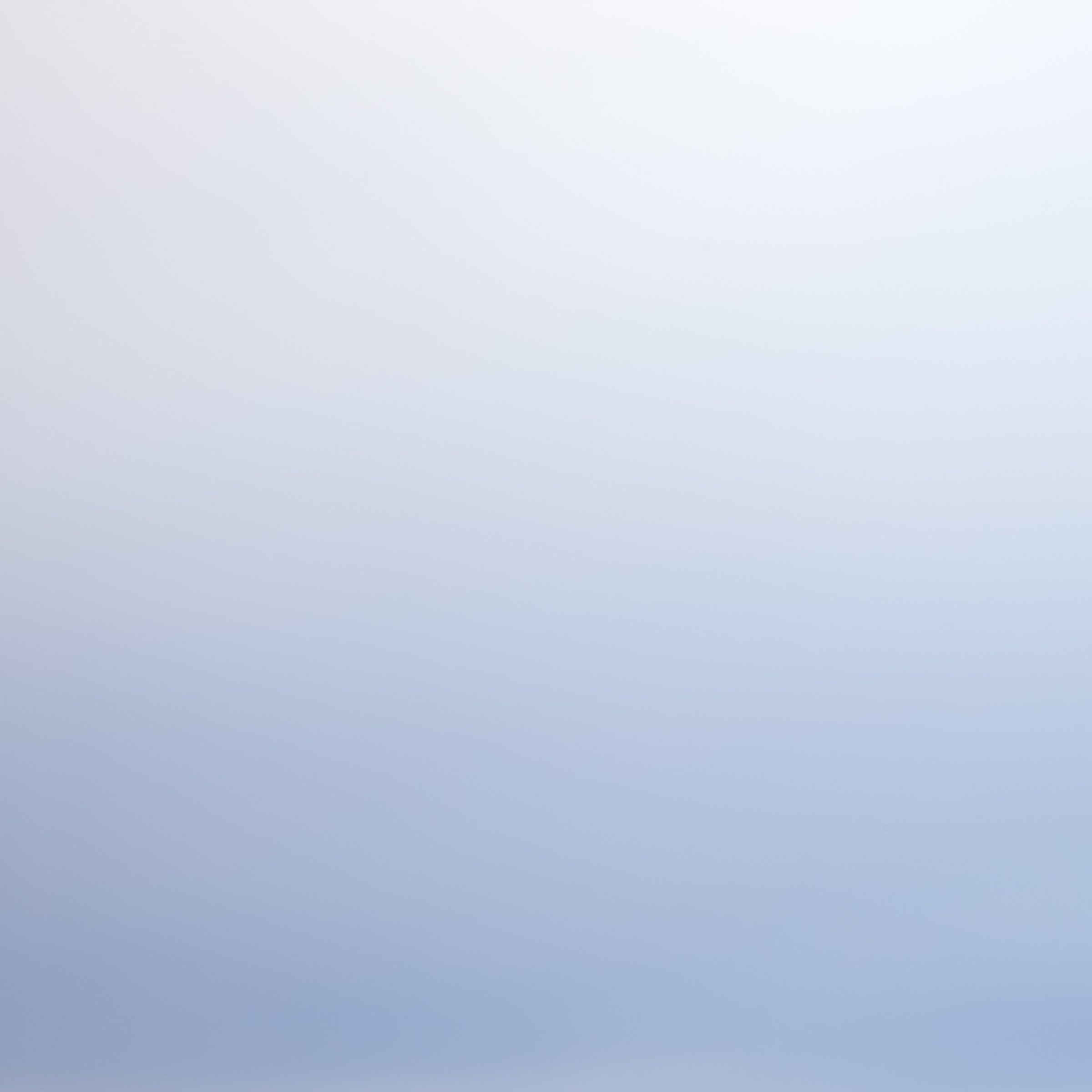
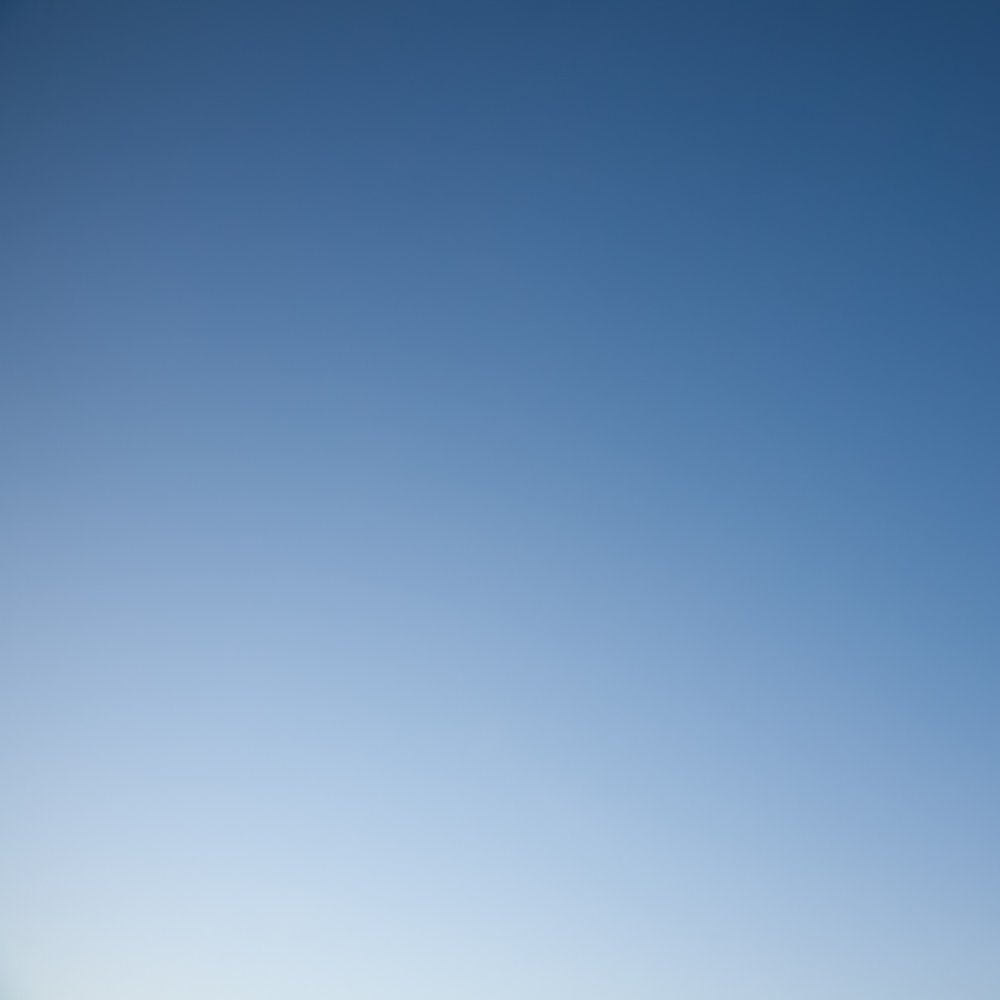
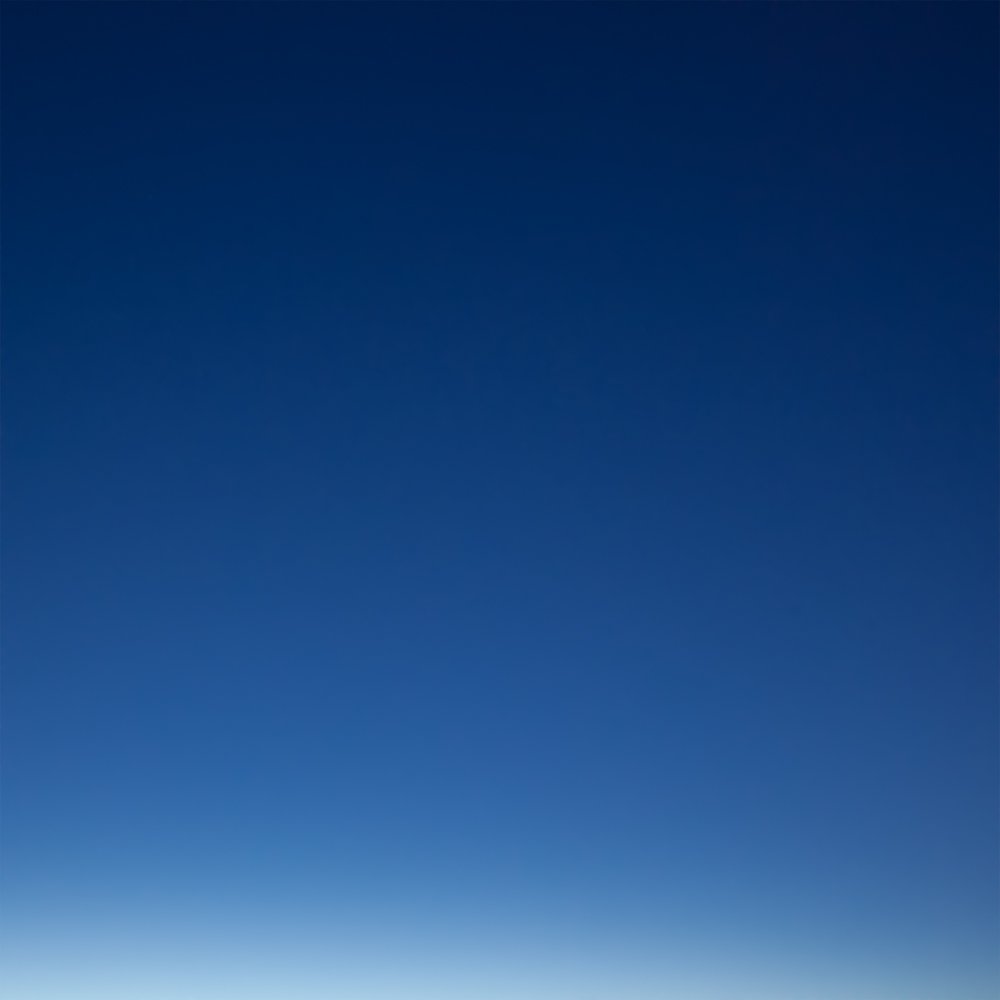
Sarah Szwajkos, Liminal lll, lV and Xl, Archival pIgment print face mounted to plexi, 1/5, 2015, 30 x 30 inches, $3000 each
I am happiest when I am singing.
When I meditate, I chant.
Singing, chanting – my brain quiets down.
My joy rises.
Making these pictures, something similar happens to me:
I get out of my mind.
I go into my senses.
I connect with my intuition.
I don’t think; I respond.
The world hums.
I vibrate.
The pictures sing.
We exist somewhere in between – everything and nothing.
— Sarah Szwajkos
Christine Higgins, Reed Mirror, 2022, Oil on Hahnemuhle paper, 8.5 x 8.25 inches, $650.
Quiet, solitude, and surprise are elements of my photo polymer gravure prints. My attention is drawn to abstraction and the contrasts of fragility and strength, delicate durability, decay and growth in this rapidly changing world. I use photography as a tool to isolate and highlight that experience, enhancing the metaphor through the process of intaglio printing using value, texture and color. My prints represent my personal wanderings.
—Christine Higgins
Cole Caswell, The Source Portland ME 130C, Cyanotype and Archival pigment print, 10 x 8 inches, $325.
Cole Caswell, Wild Grape SPF 7223 Side A, 2022, Cyanotype on fabric, 55 x 45 inches, $3,200.
These site responsive works question aspects of place in a temporal and physical manor. The plants used are collected from short walks surrounding the location where the photograms are made. The resulting photographs are created by coating fabric with a light sensitive solution then placing the sampled specimens on the surface. The whole mess is then exposed to sun light and developed in water. I am caught by the sense of chance and discovery that these photographic engagements produce. Each experiment is a kind of trap – a situation where the natural world is captured - plants, sun, wind, moisture all leave marks on the print as the exposure is made. My interest in these pieces centers on the surreal way we view and engage with the natural world - how versions of fact and fantasy are slipping together. As our surroundings shift these large-scale photograms poke and question at how we view and engage with the environment. The photographic traps allow chance and the natural world to assert themselves in a visual way within the print.
The works are printed on fine cotton using the cyanotype, a photographic process dating back to the 1842. Both sides of the fabric are printed - this adds depth to the intertwining of space in the print. It also means the works can be installed in free space with both sides showing or each piece can be stretched and framed for a more conventional presentation on the wall.— Cole Caswell
Jack Montgomery, Dream box 1, 1/1, Mixed media; Inkjet prints and parchment, 12 x 15 x 1.5 inches, $2000.
I love paper. I love making things by hand. As an artist, I consider that presentation of my work is as important and personal as the images themselves. I happily labored on Dreamboox #1 in my little studio through mudseason, 2022. As to the images, I often find myself skimming between my dreams and my reflections while awake. The boundary between the two states has become porous, and it is in that space that my most satisfying images arise. What you see here are illustrations of the visions I find there.
— Jack Montgomery
Caroline Savage, Anthropocene Coastal Drift, Ferry Beach Maine 1, 2/2, 2022, Concertina folded hardcover book, 3.5 x 15 inches, $150.
Caroline Savage, Anthropocene Coastal Drift, Ferry Beach Maine 2, 2/2, 2022, Concertina folded hardcover book, 3.5 x 15 inches, $150.
Caroline Savage, Pandemic Light Recodings PT 1, 2/2, 2022, Concertina folded hardcover book, 3.5 x 15 inches, $150.
My work focuses on observing light in the natural world, exploring the relationship between the camera lens and light, space and time, the process of capturing an image.These images show the traces of disruption, dislocation of movements and connective lines as the camera travels over the landscape as my physical collaborator. the Pandemic Light Series documents my ob- servations of light in and outside.The Anthropocene Era is a particular area of compassionate exploration. MY Coastline Drift works address possible future of our Coastlines. In .
My interest is in the tension between recognizable and altered space. Images are captured, claimed, reworked and presented to create a world of mystery and wonder that collides with actuality and perception.
— Caroline Savage
Barbara Goodbody, La Fleur du Soleil # 1 and 2, 1983, Mordancage silver print, 8.5 x 11.5 inches, $1,800 each
In 1983 Barbara studied in Paris, France with Jean Pierre Sudre (1921 - 1997). Sudre was the creator of the mordançage process and brought it to popularity in the 1960s. Mordancage is based on a late 19th-century photographic process known as etch-bleach. This procedure allows the artist to manipulate their images by altering the tonality of the print which gives the image the appearance of veils. Each photograph becomes one of a kind.
Jere DeWaters, Gold Lure and Flat Nosed Lure, 1/1, 2020, Color photograph, 30x 40 inches, $2000. each
My fisherman friend, David, makes bass lures. Created like jewelry, apparently they are fatally irresistible for fish. But he is kind and always lets them go after being reeled in and measured. I wonder about our attractors, our desires, our shiny objects. Do we by instinct take their bait? And is there a merciful God who releases us from the hooks terrible grasp after a full examination?
— Jere DeWaters
Gary Green and Gianluca Rizzo, Obelisks, 2/5, 2021, Folio: Archival pigment prints in clamshell box, $1,500.
Gary Green, The River is Moving/ The Blackbird Must be Flying, Ed. 500, 2021, Tritone offset- printed book, 9.5 x 5 inches, $40.
Gary Green and Gianluca Rizzo, Obelisks, Ed. 500, 2021, Duotone offset-printed book, 9.5 x 5 inches, $35.
Photographer Gary Green and poet Gianluca Rizzo collaborated across disciplines and time to create the book Obelisks. Published by the Italian press Danila Montanari Editore, the book explores in quiet black-and-white photographs and layered text the enduring intrigue of obelisks as markers of time, history, and human activity.
Tall and narrow like its subject, the softcover monograph presents two dozen images of various Roman monuments and a series of poems about uniquely American monuments. Green, a Colby professor of art, includes entire monuments in some of his images, while focusing on details and surrounding neighborhoods in others. All made with film, the photographs lead viewers to ponder the relationship between Rome, the monoliths, and neighborhoods they occupy. Rizzo, the Paul D. and Marilyn Paganucci Associate Professor of Italian Language and Literature, wrote a series of poems, in English, based on such American monuments as Bunker Hill near Boston, San Jacinto in Texas, and the recently destroyed Georgia Guidestones. Rizzo’s poems reflect and interpret the words carved into stone, the people who carved them, and the stories they tell.
Obelisks opens with the Latin phrase Nec Ventos Nec Hiemem, which translates as “neither wind nor winter.” Taken from one of the obelisks pictured in the book, the phrase suggests the permanent nature of monuments. Noting that history is always up for debate, one reviewer said of the book, “… This beautiful little, physically unimposing volume functions as a guidebook not so much to specific places or even eras, but as a guide to ways of thinking about and questioning history, the histories that surround us, which we move through every day, whether in a foreign land or closer to home.”
— Bob Keyes, Colby News


